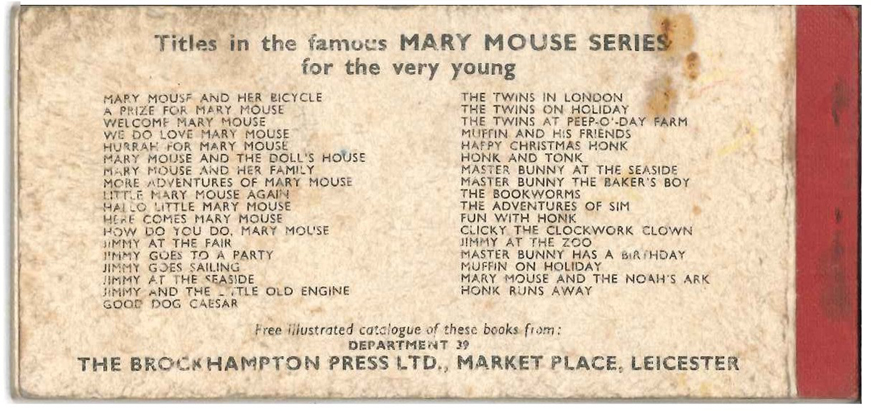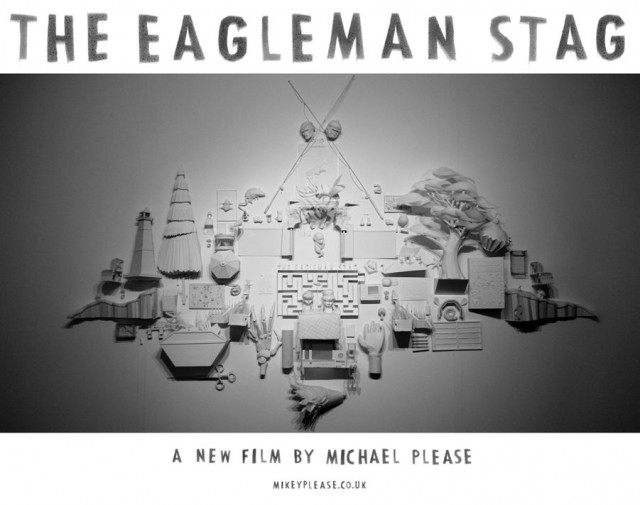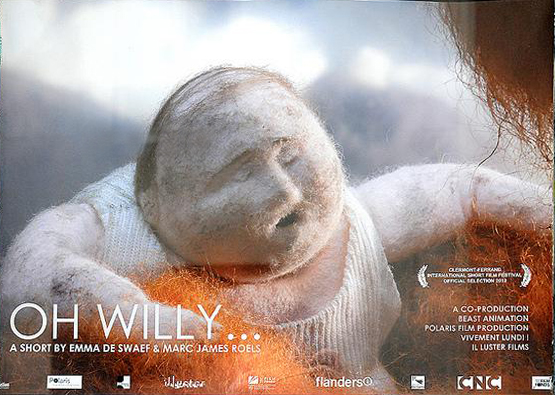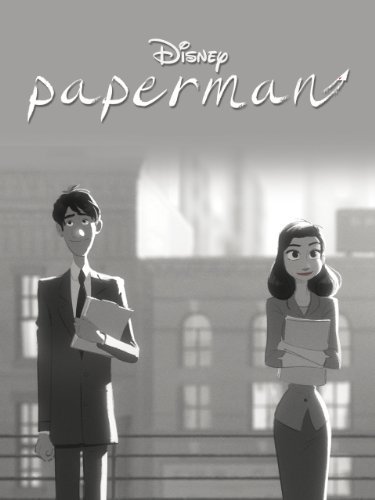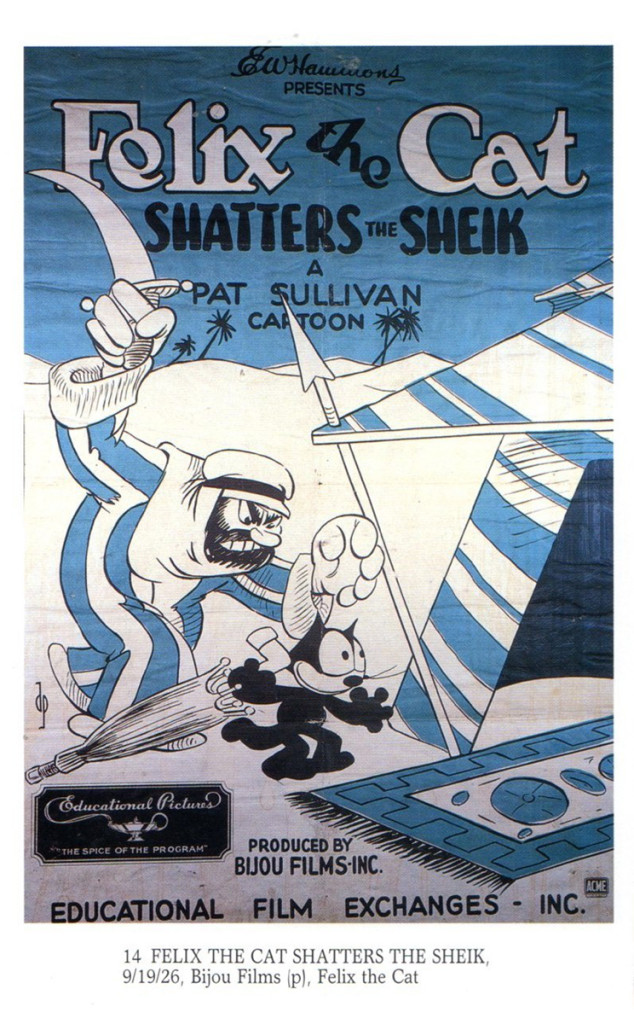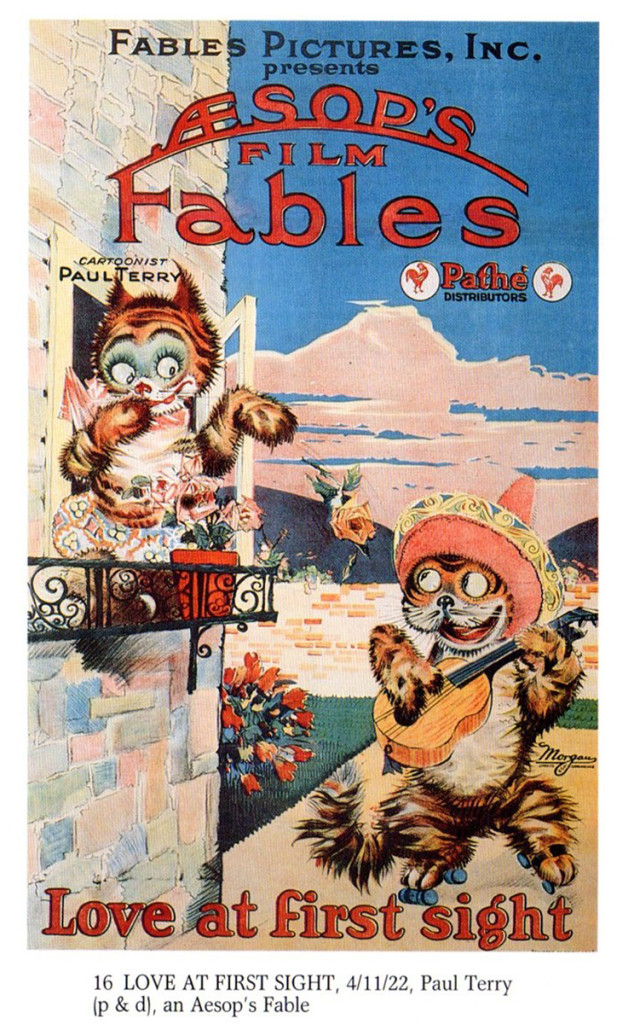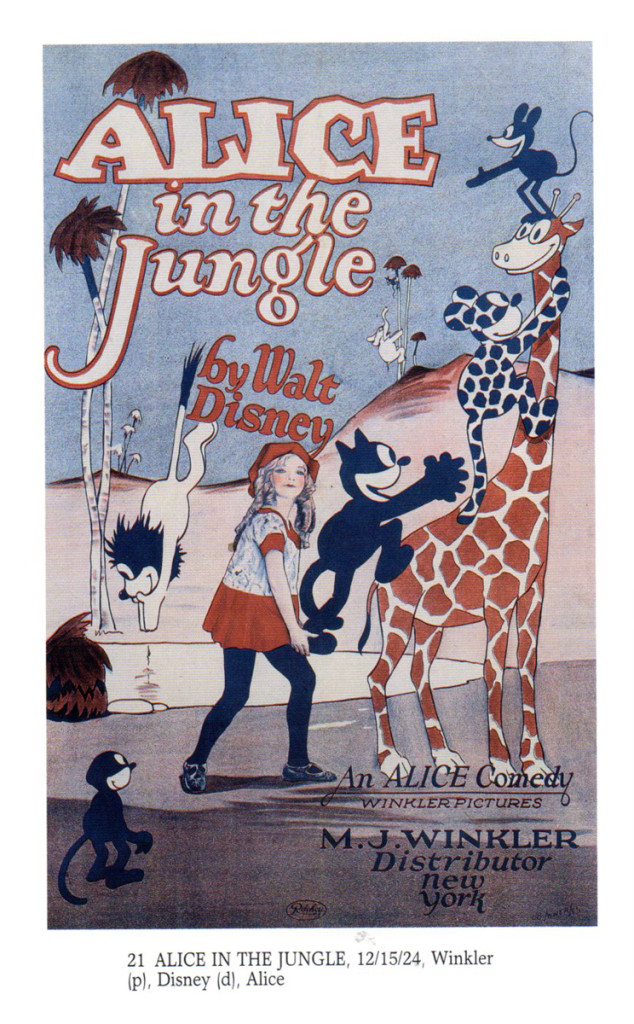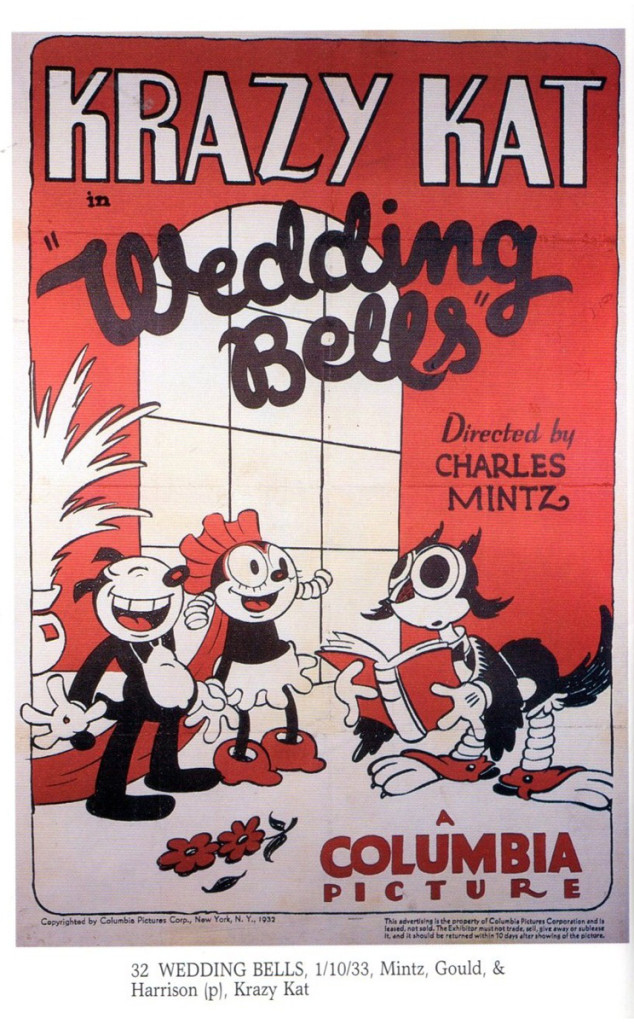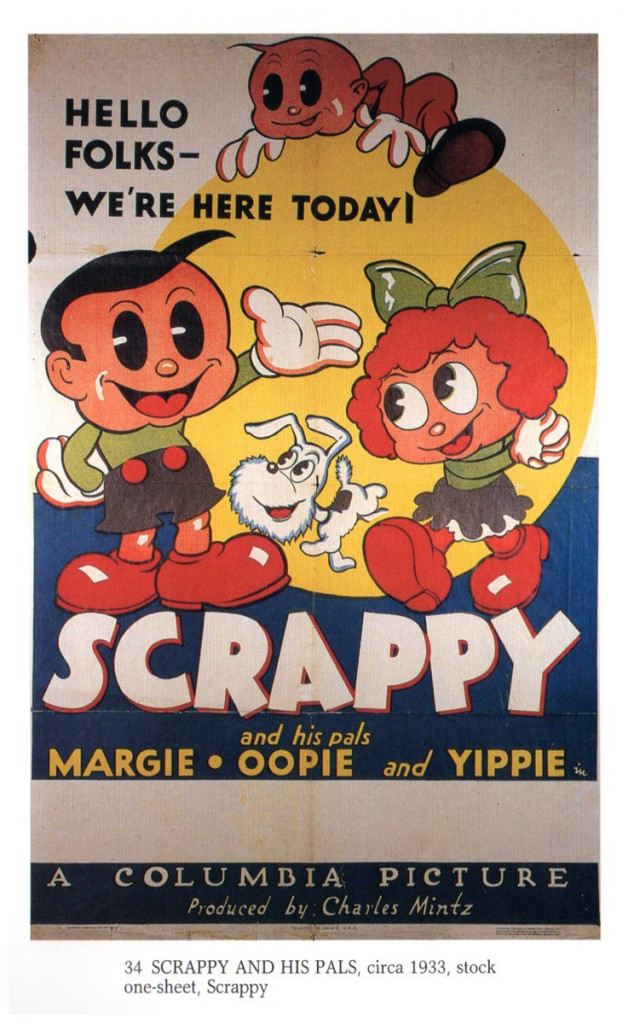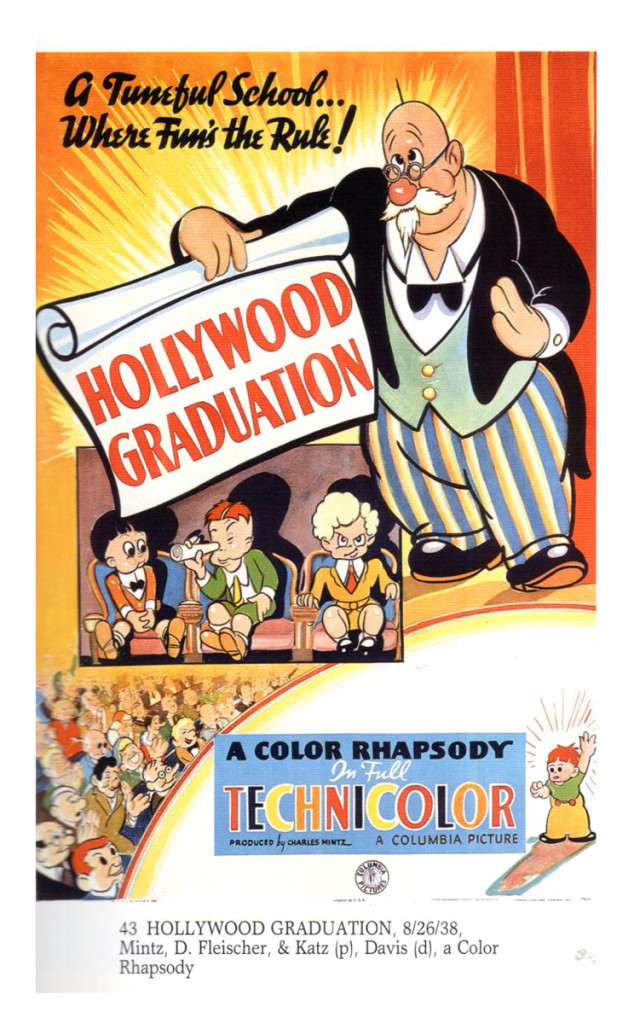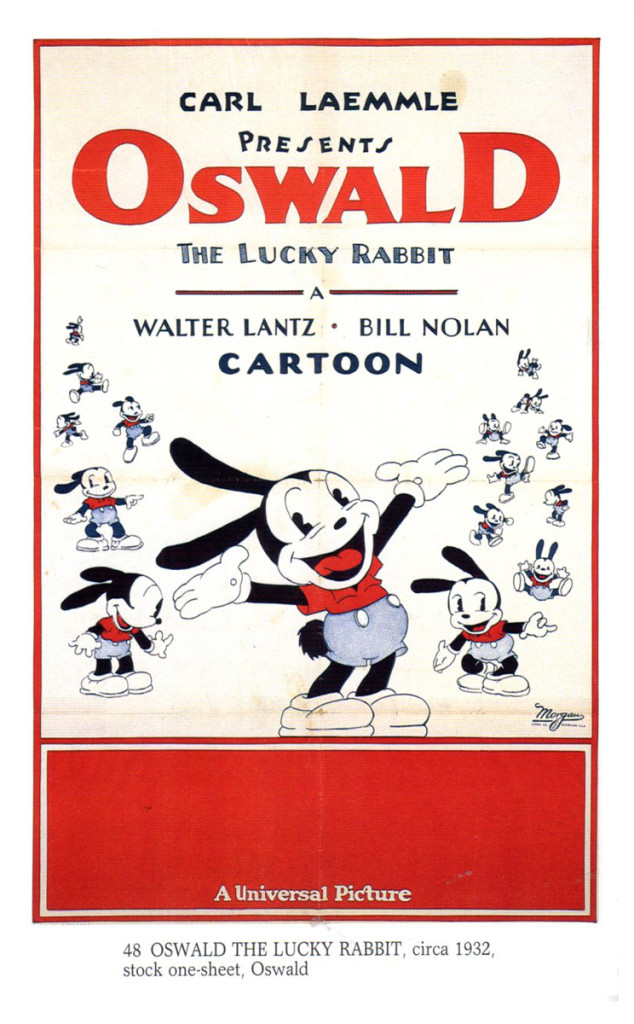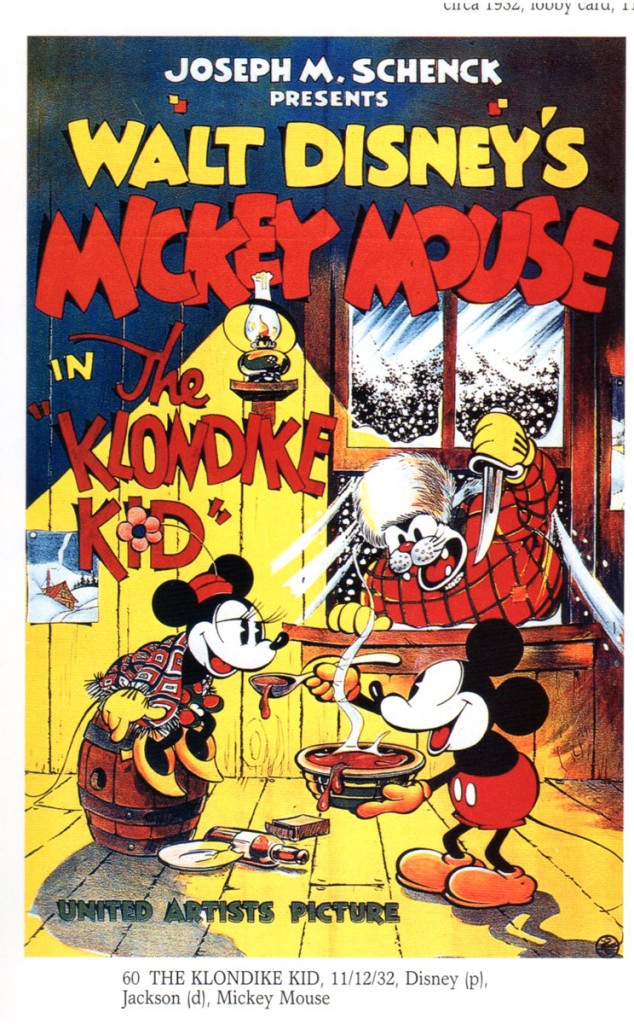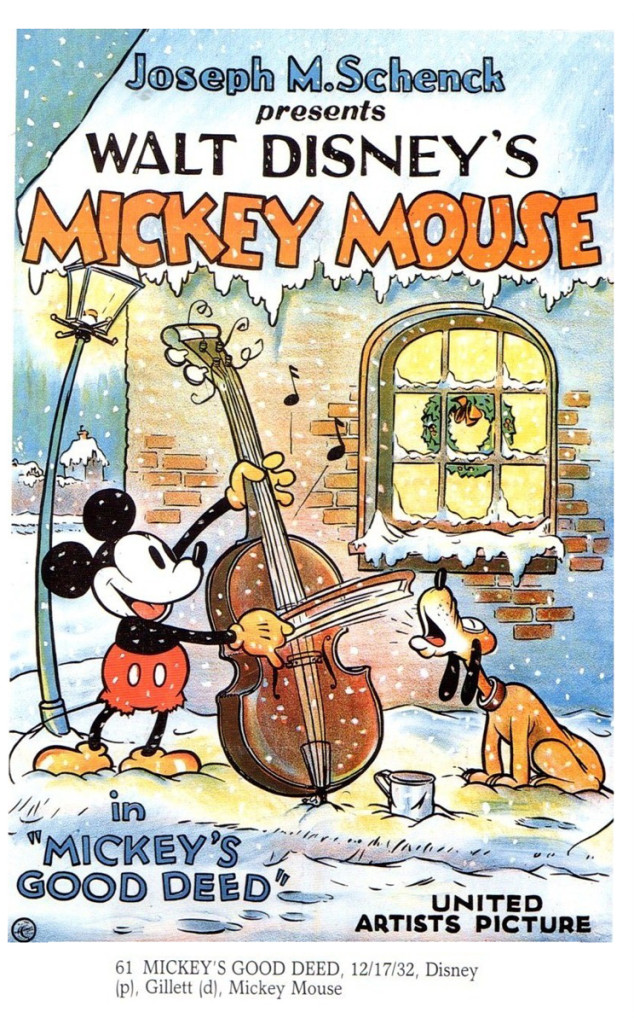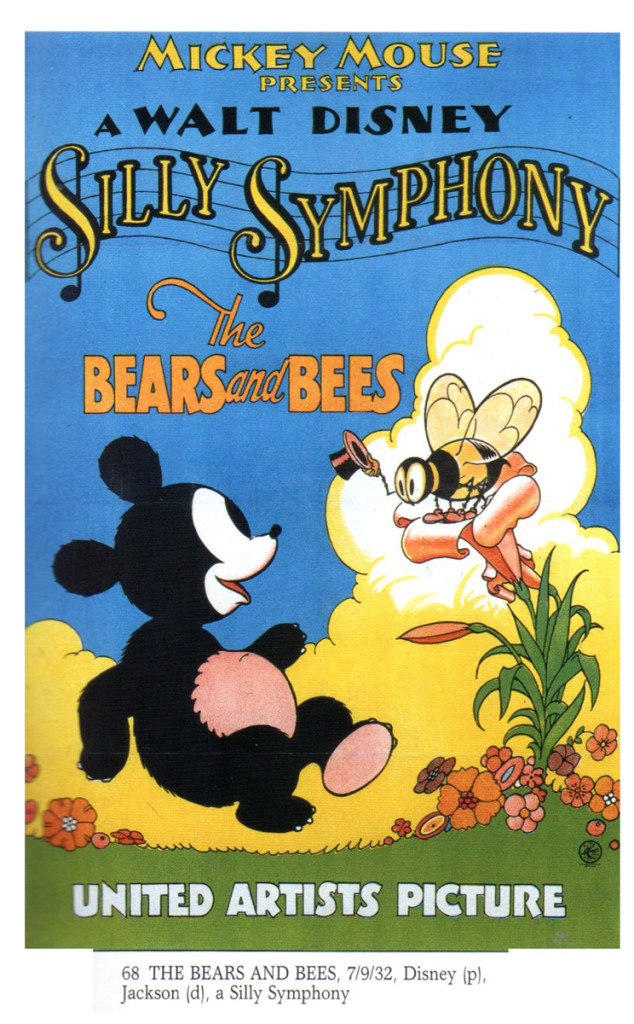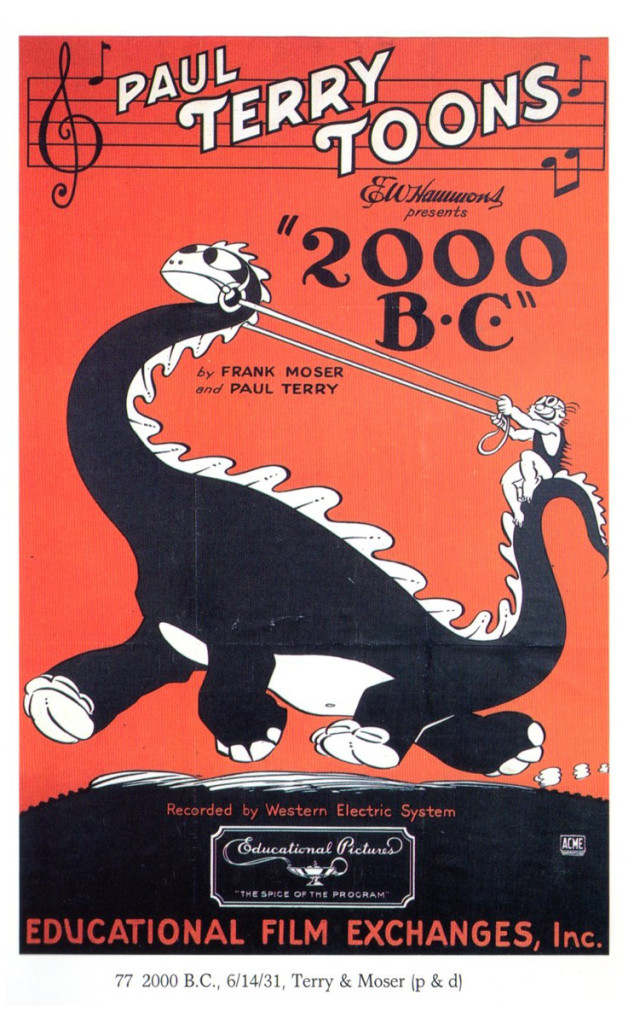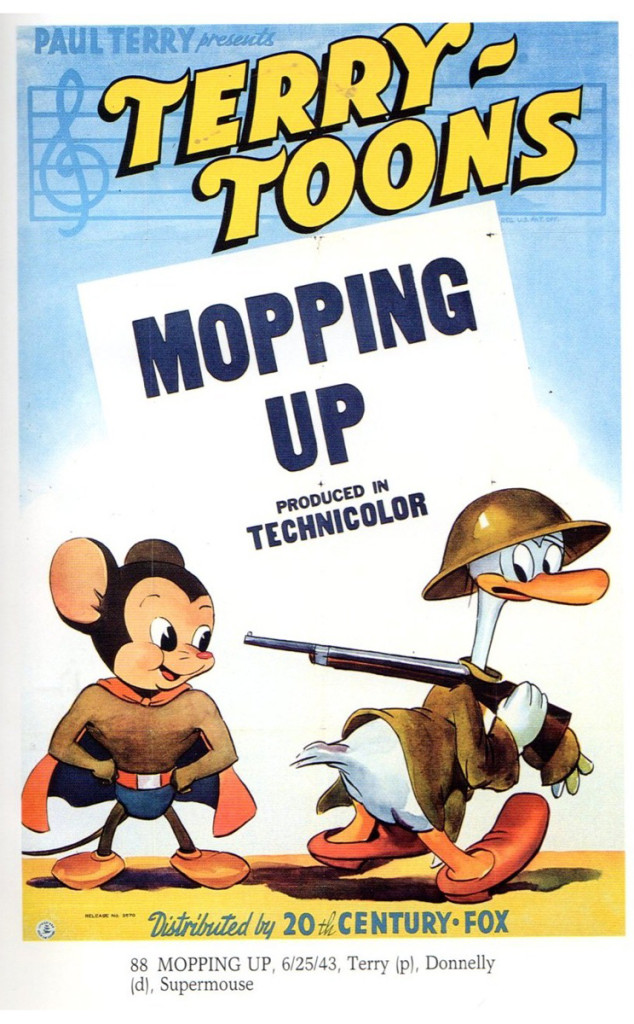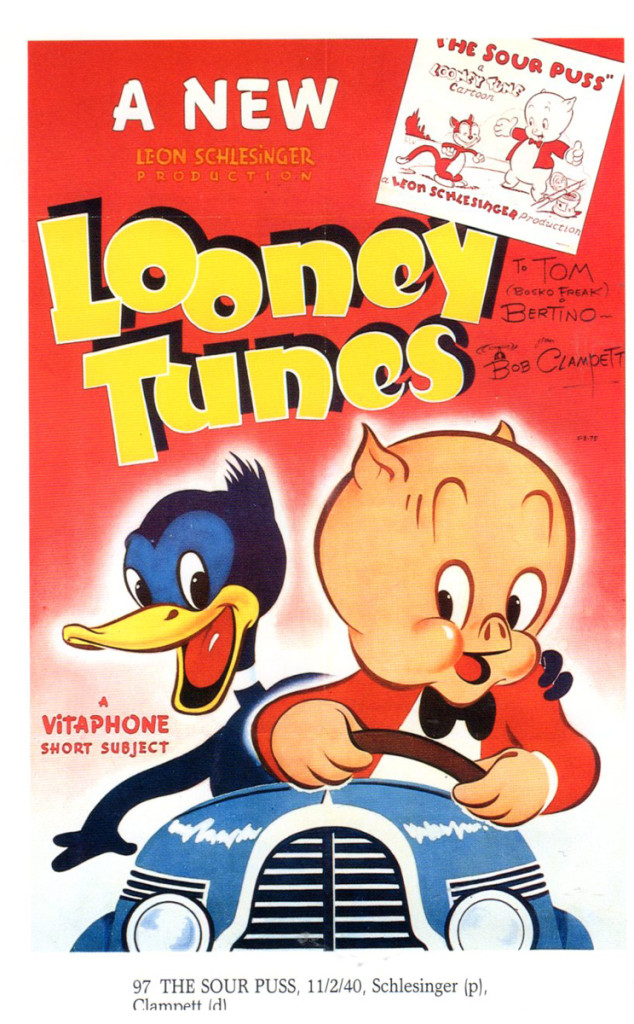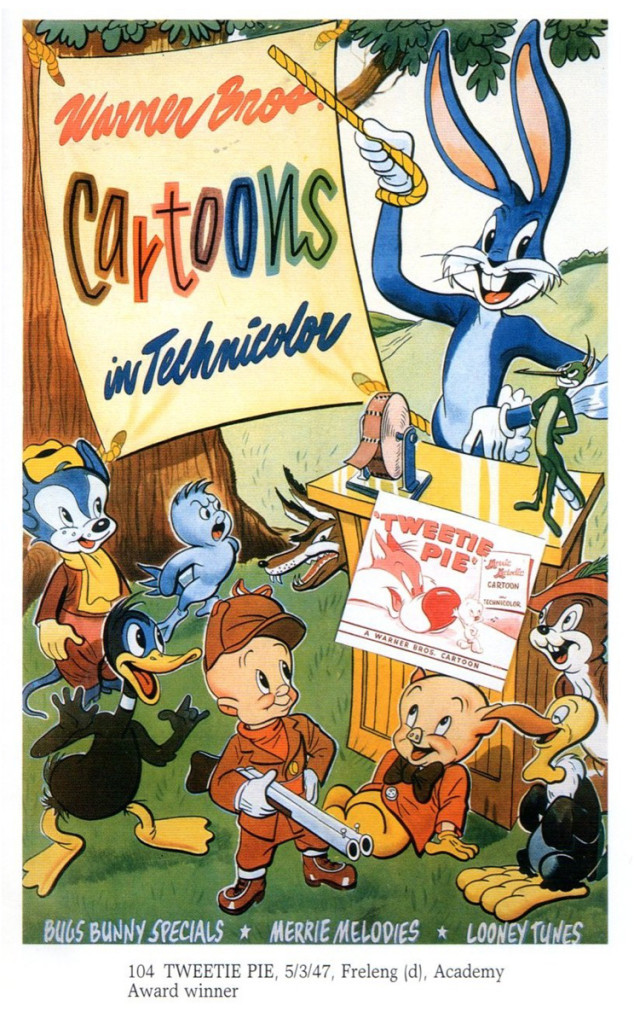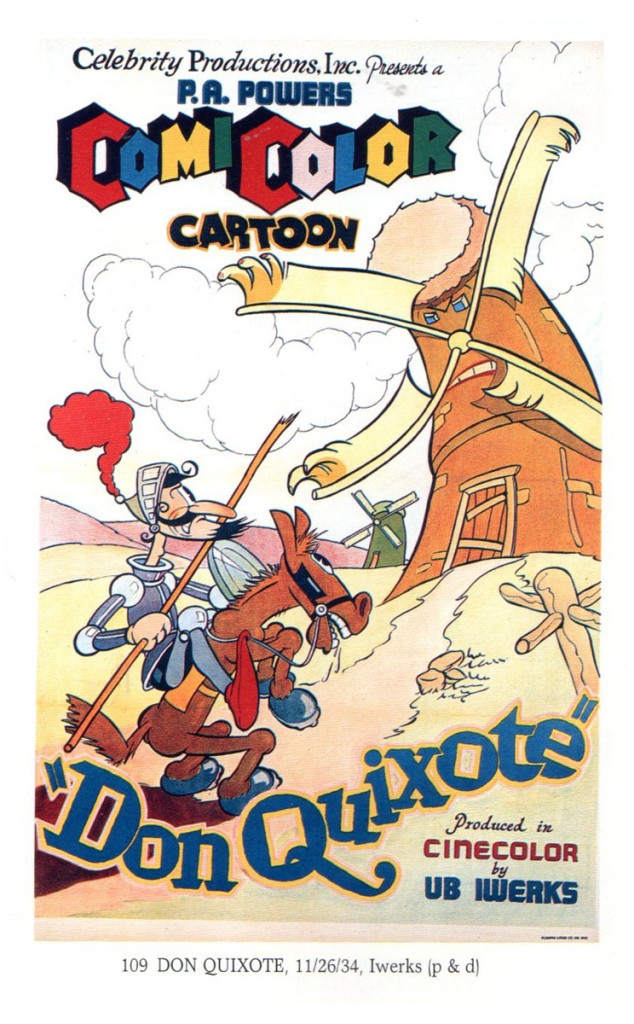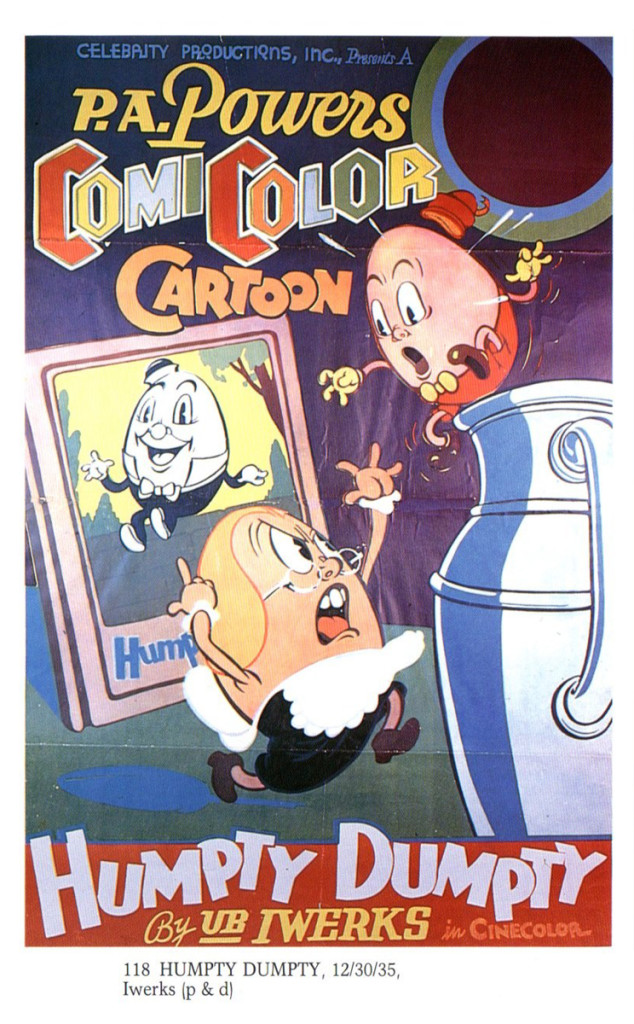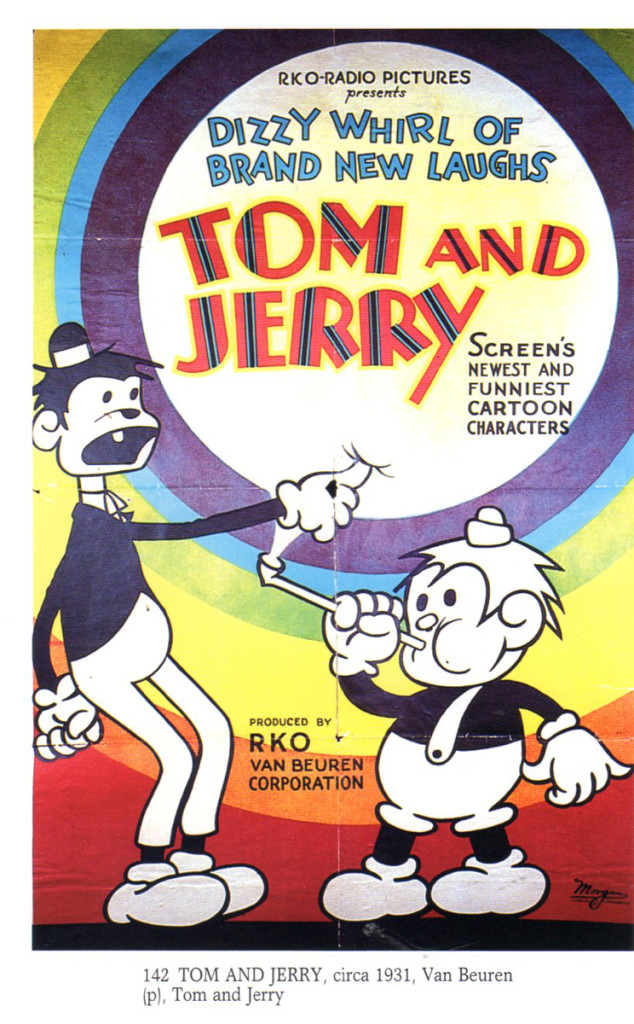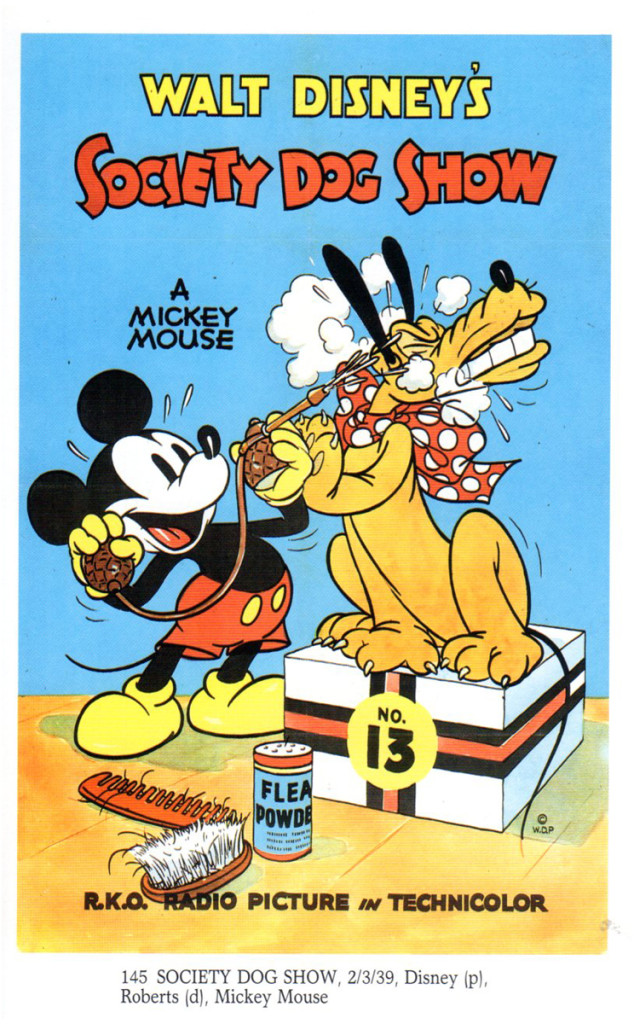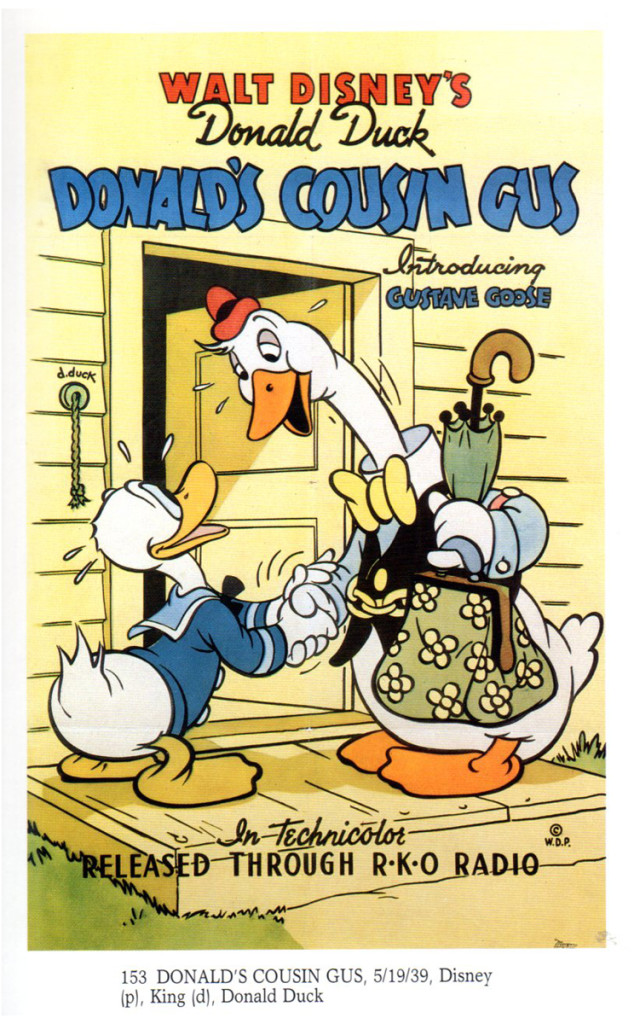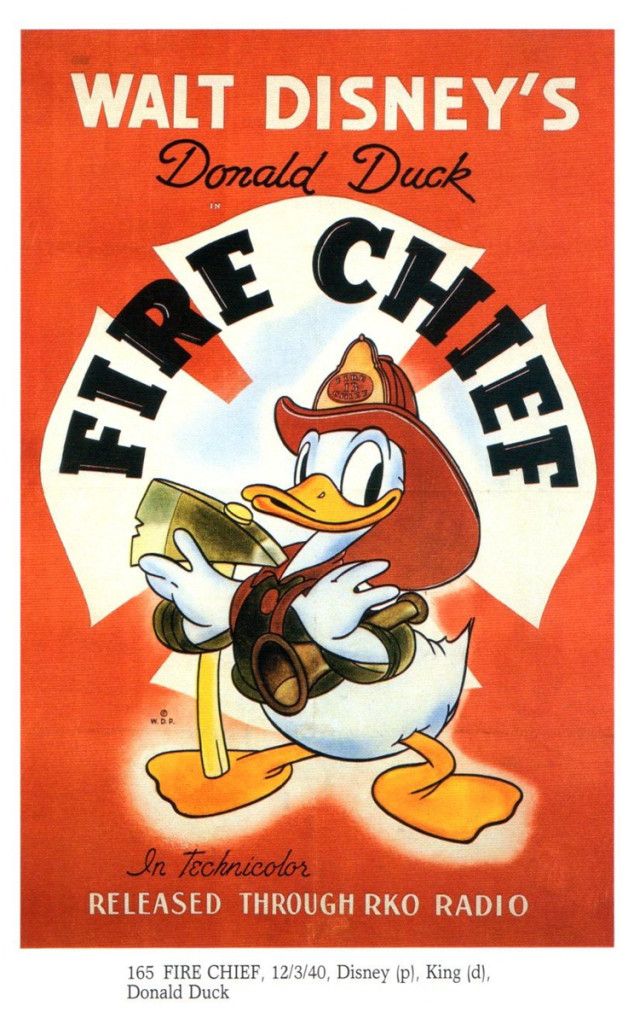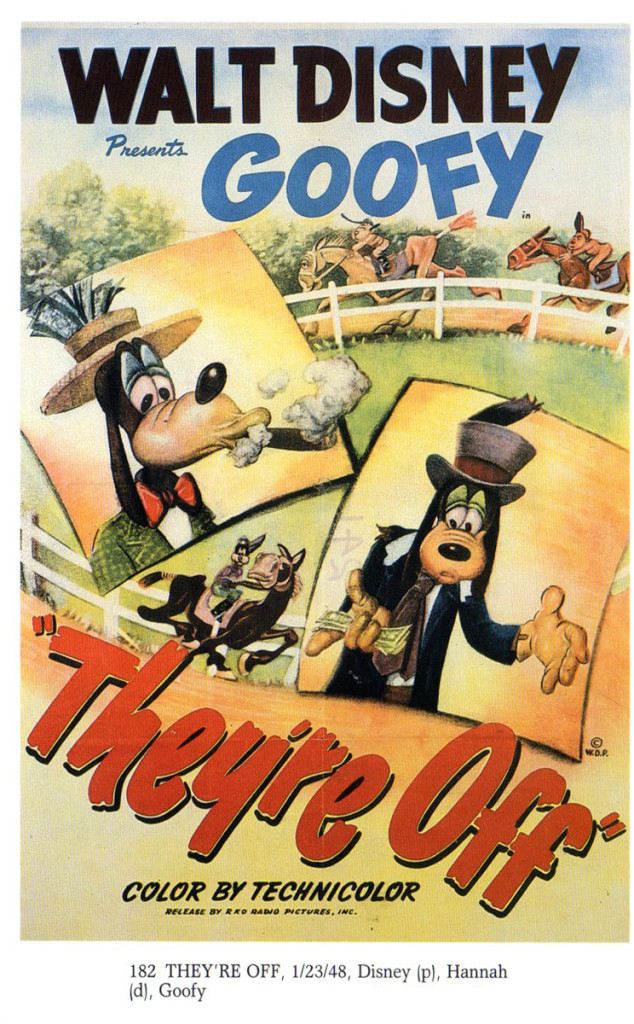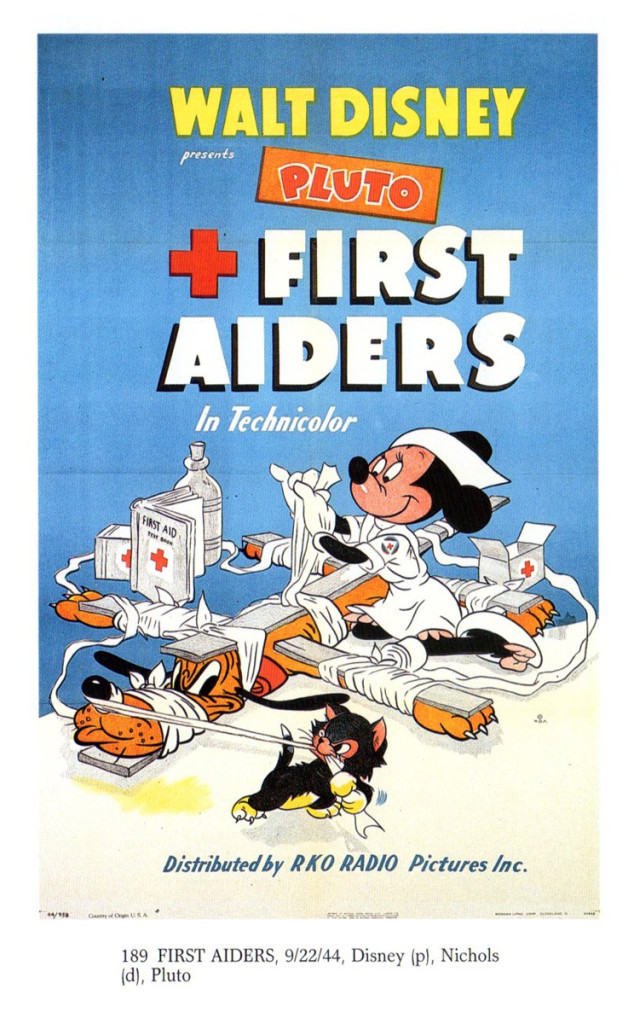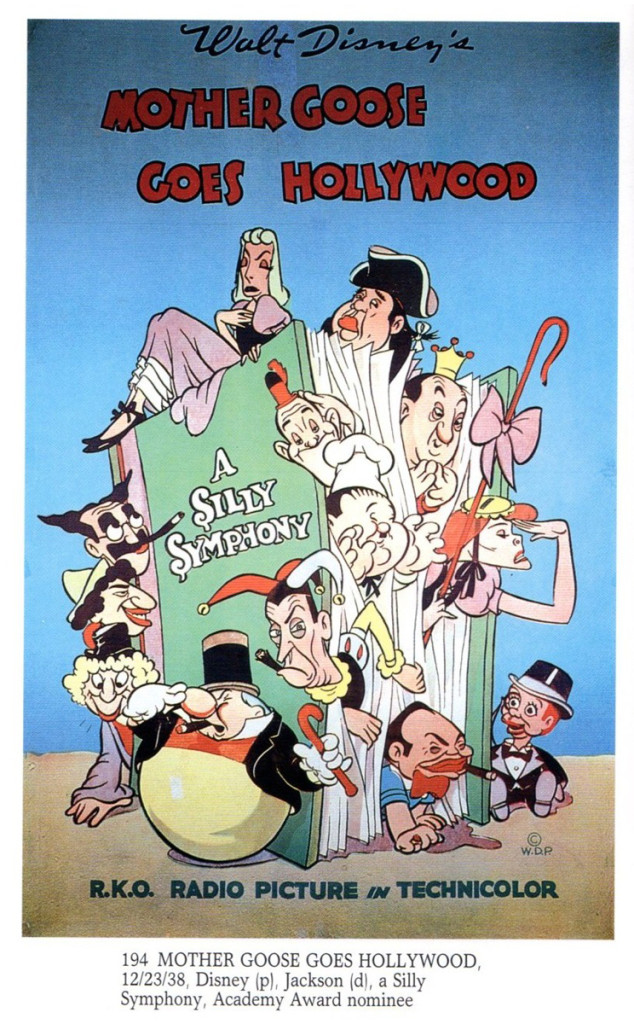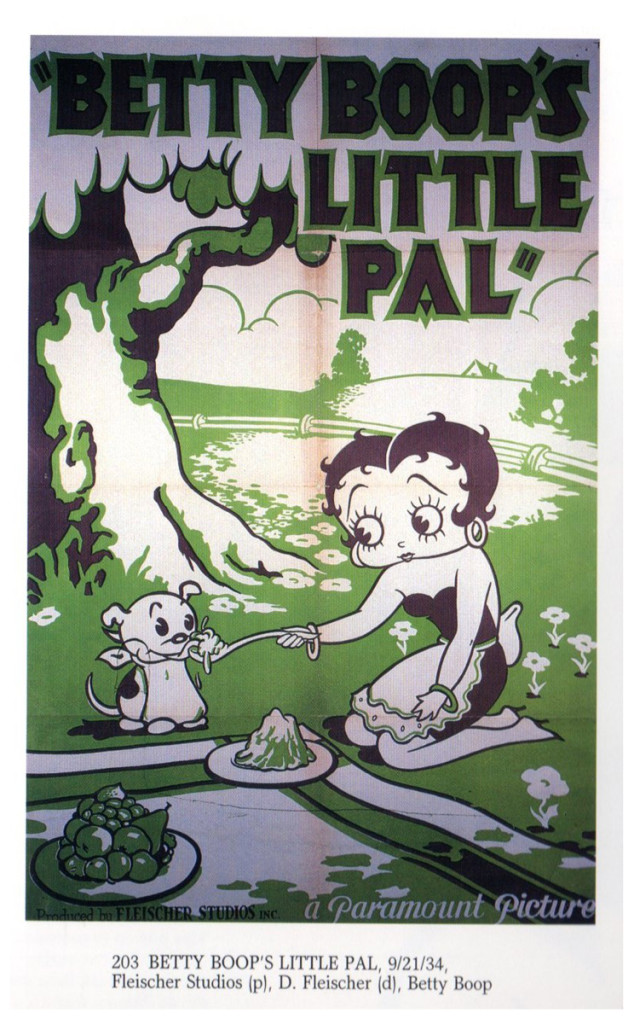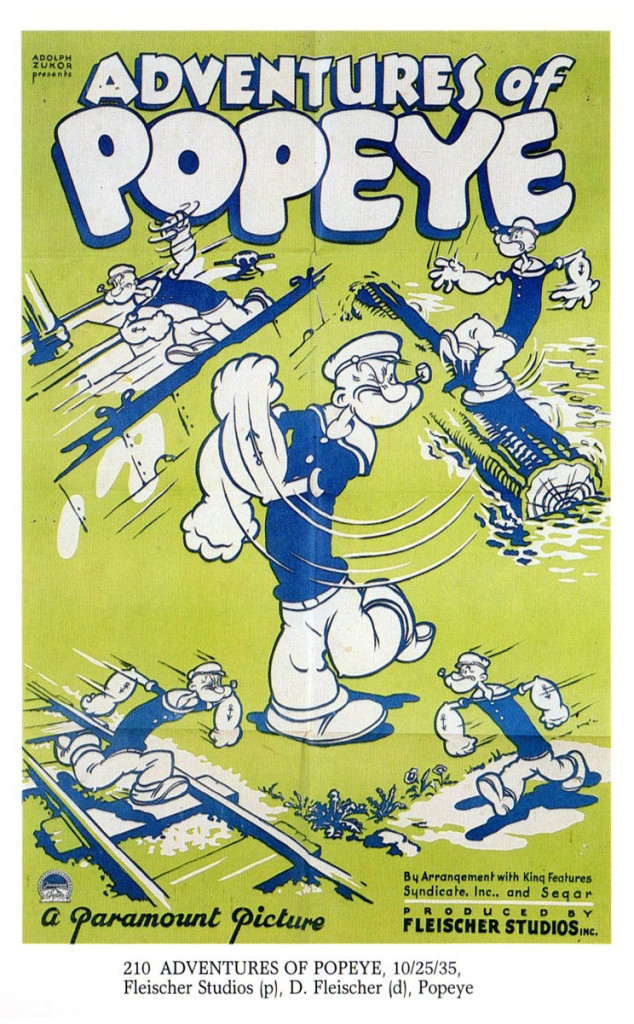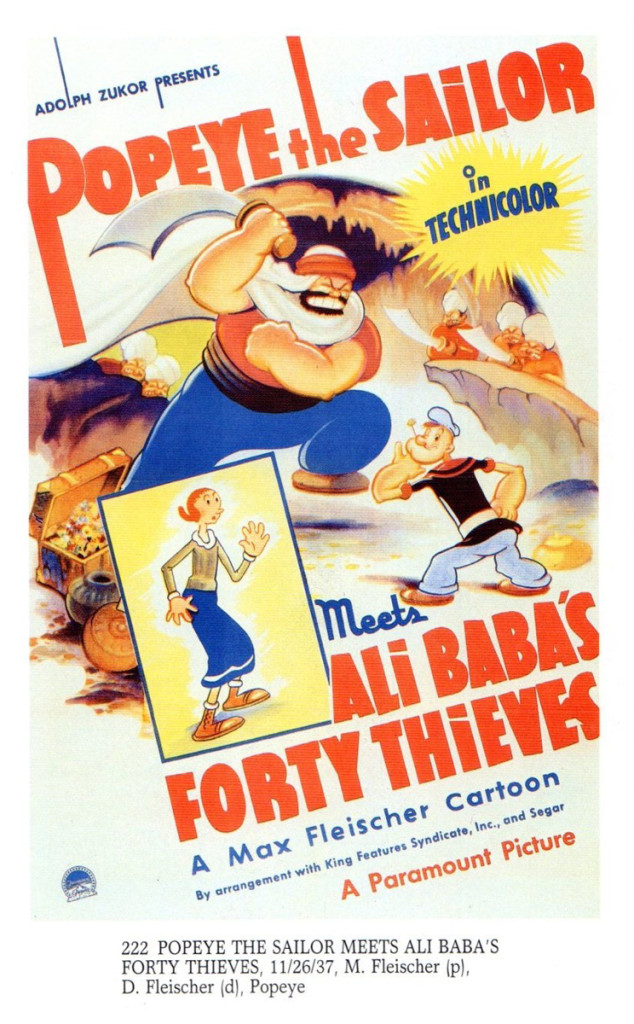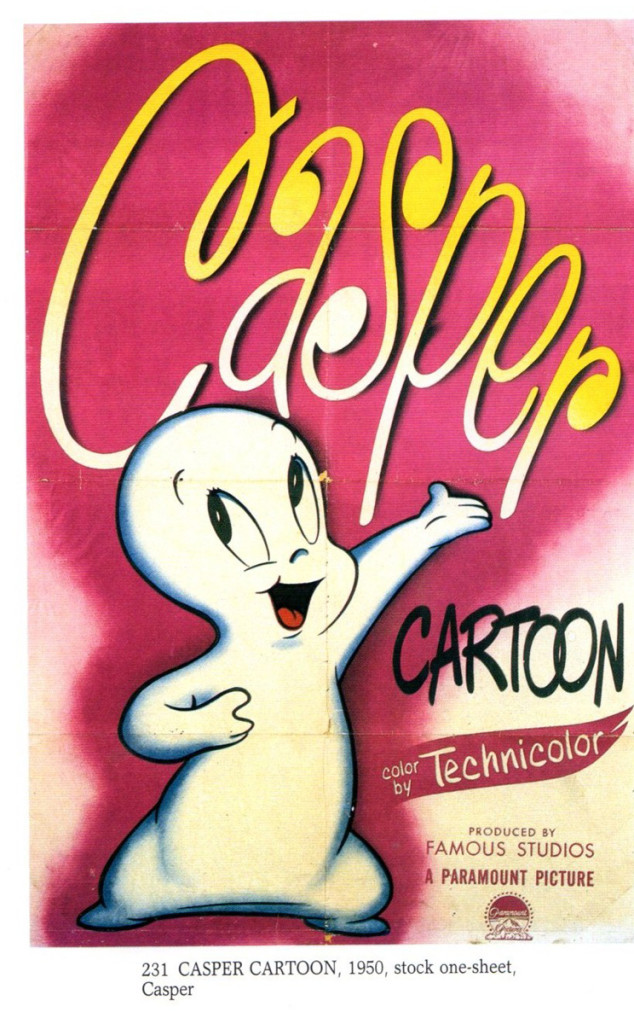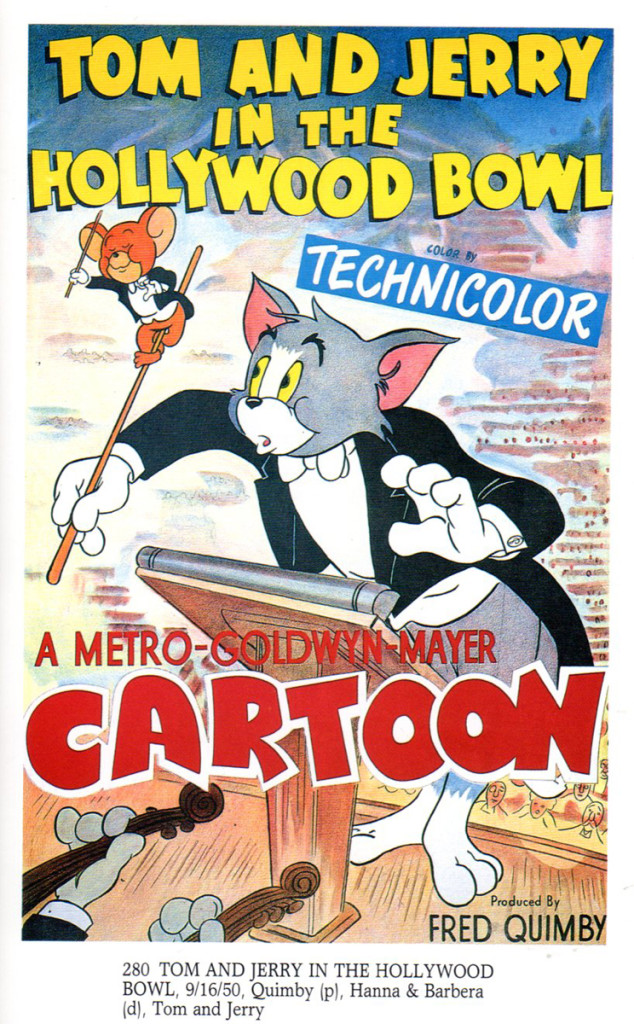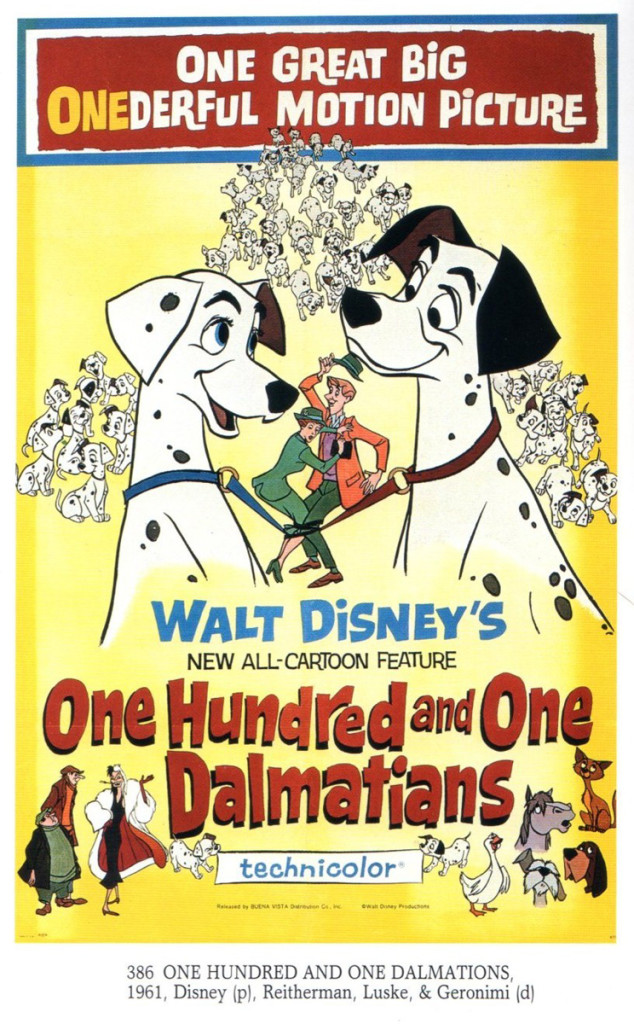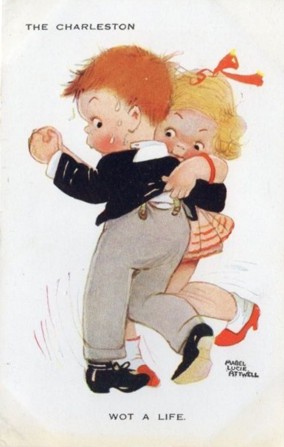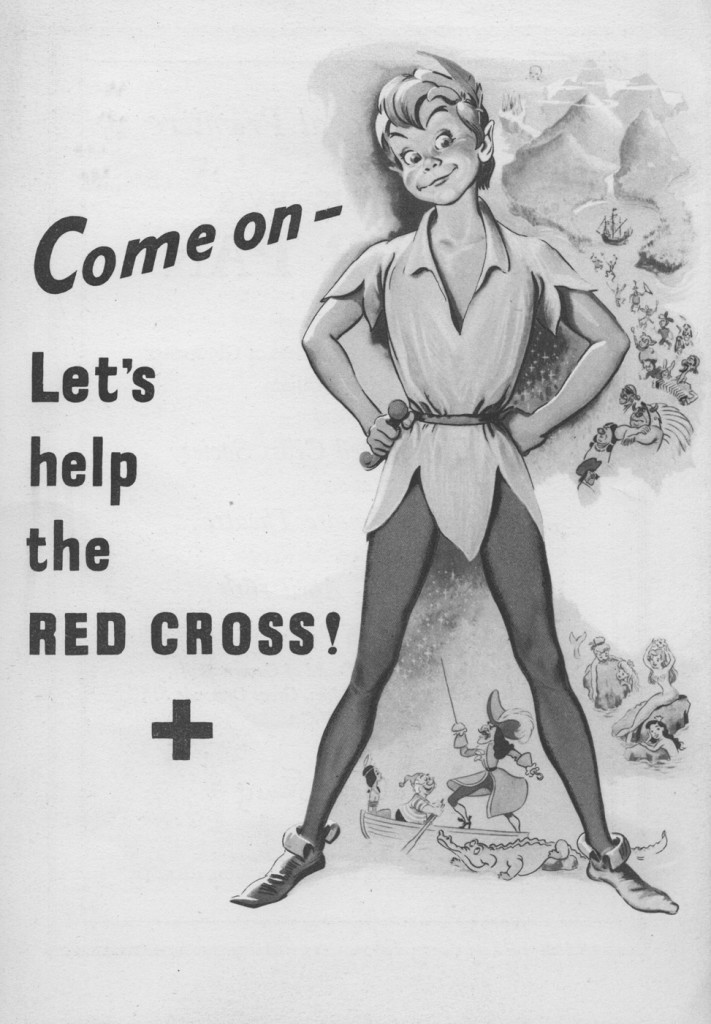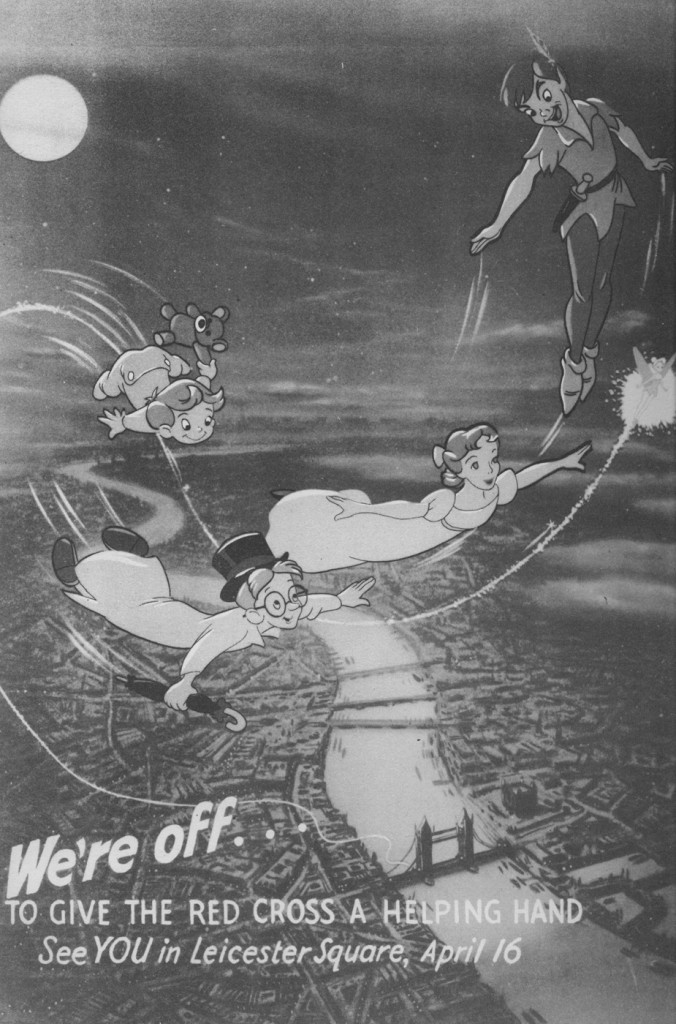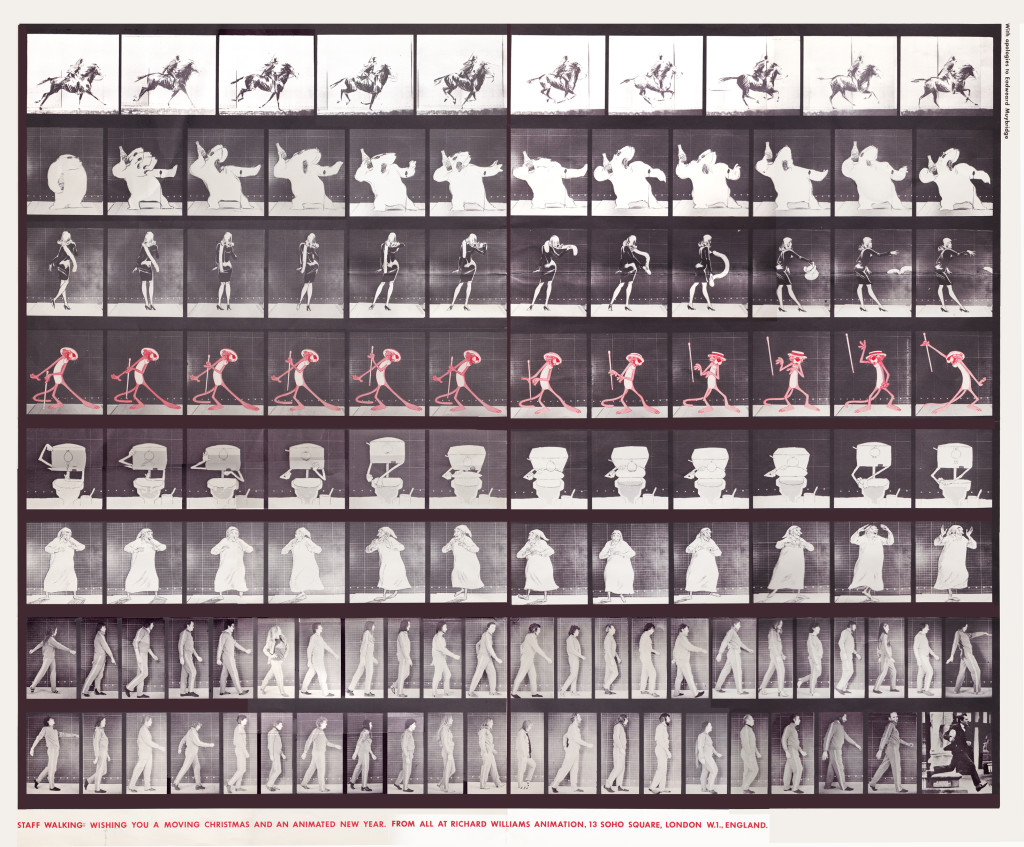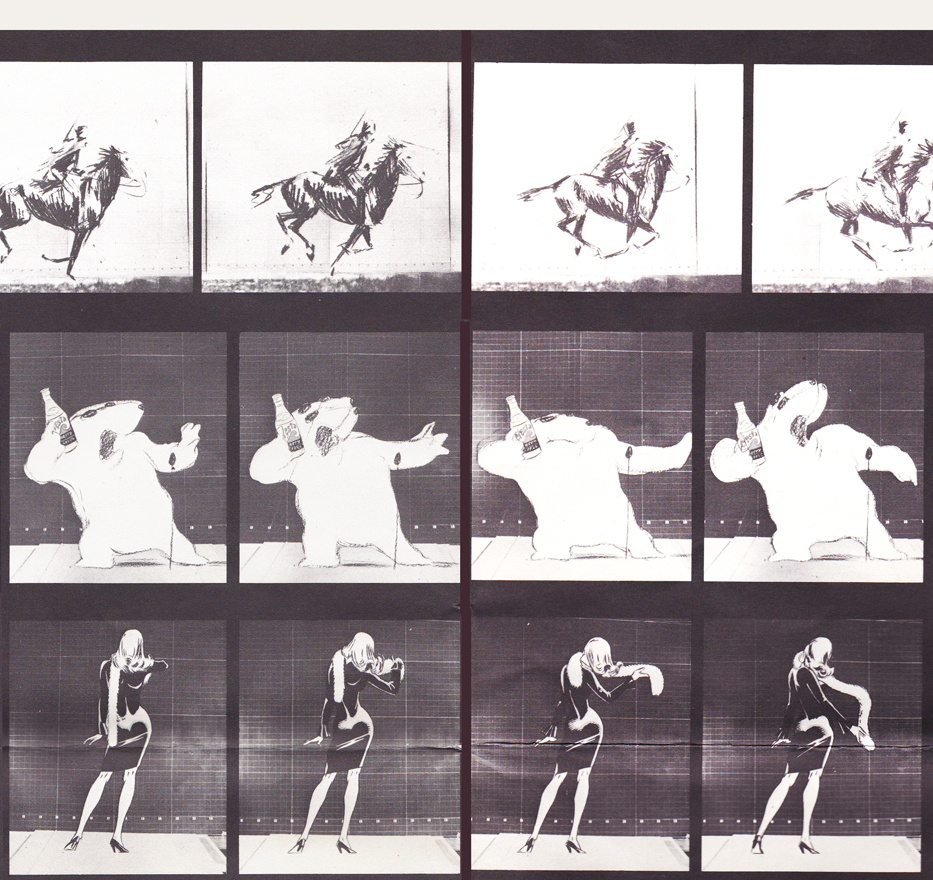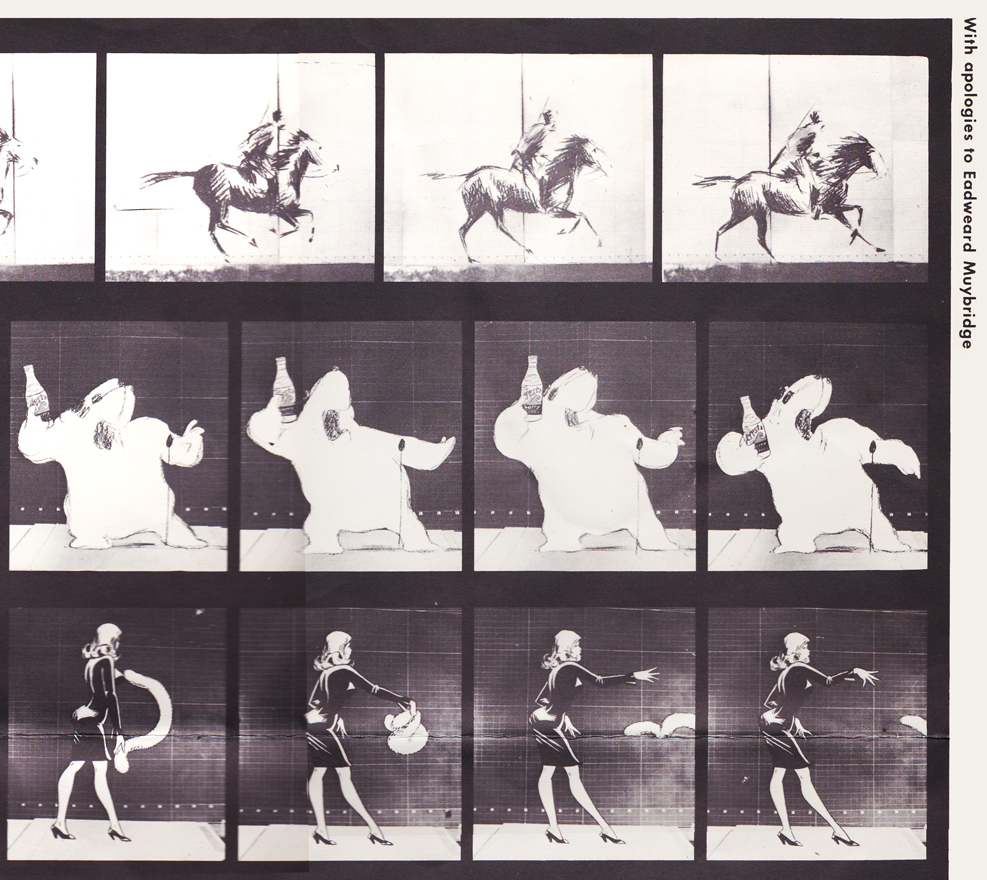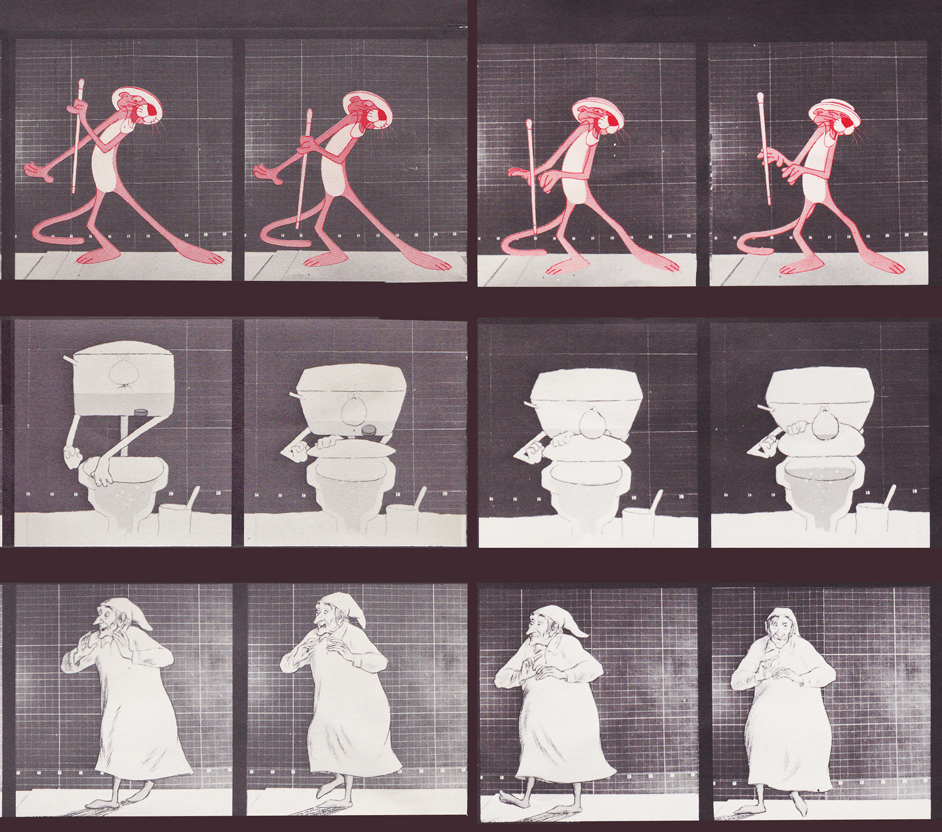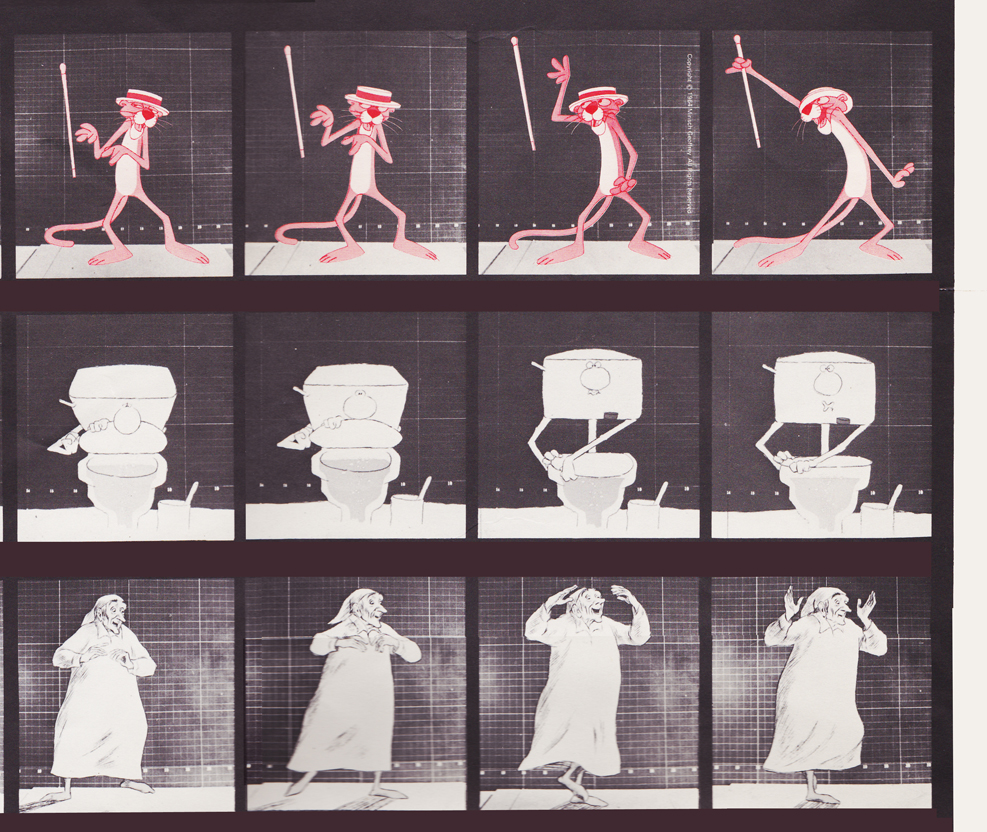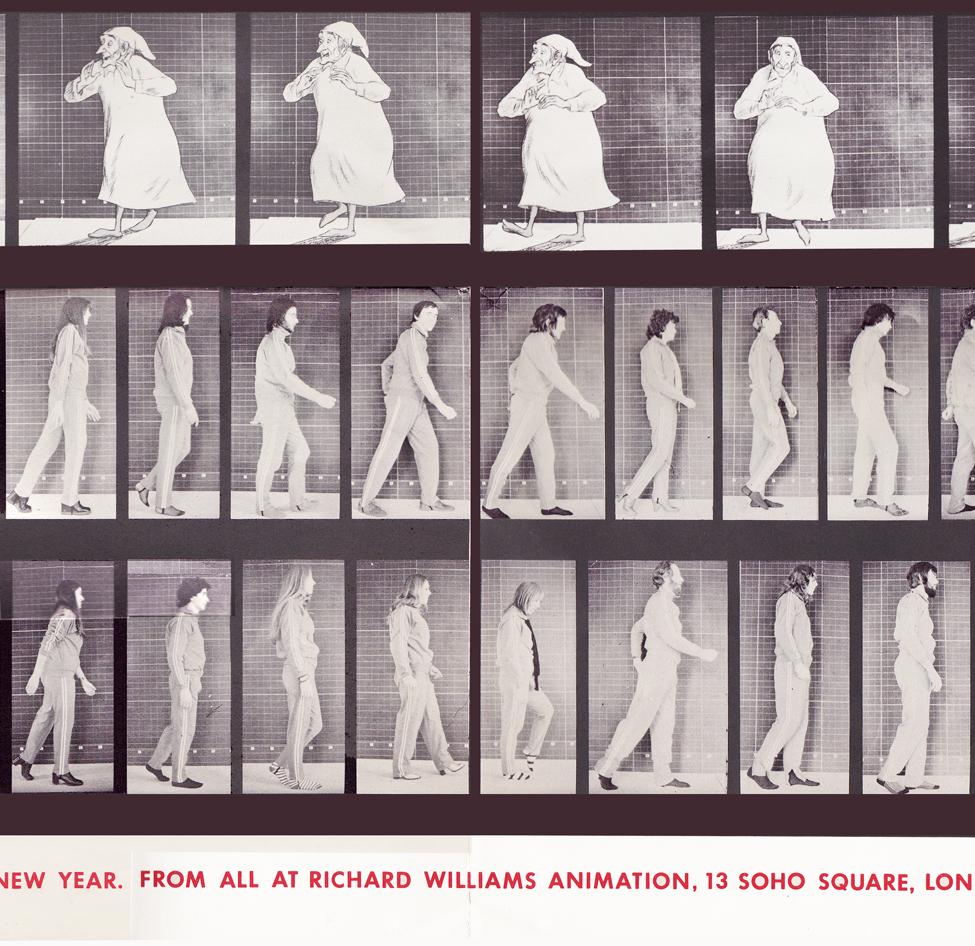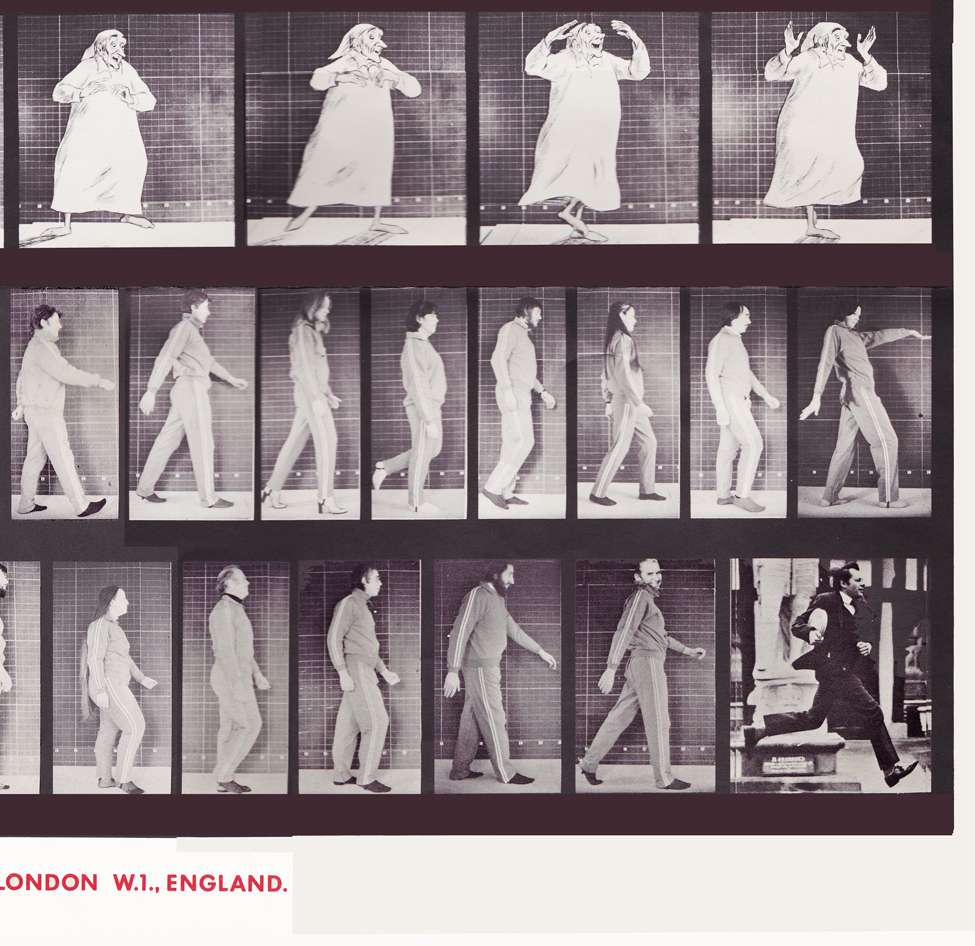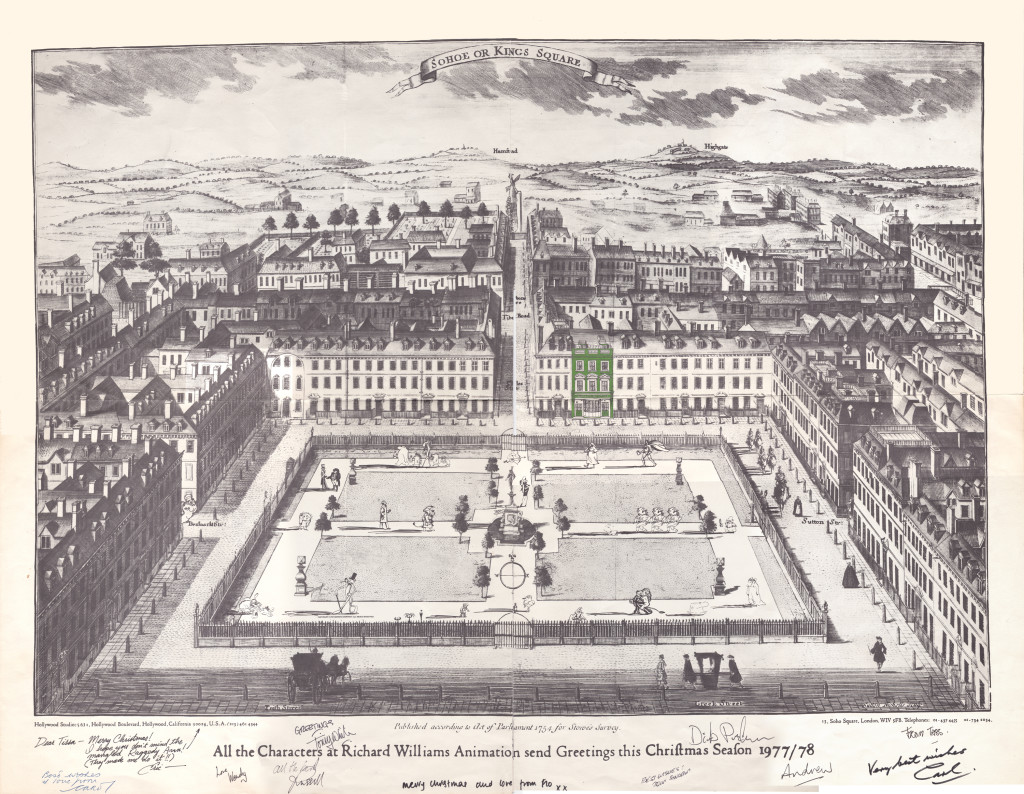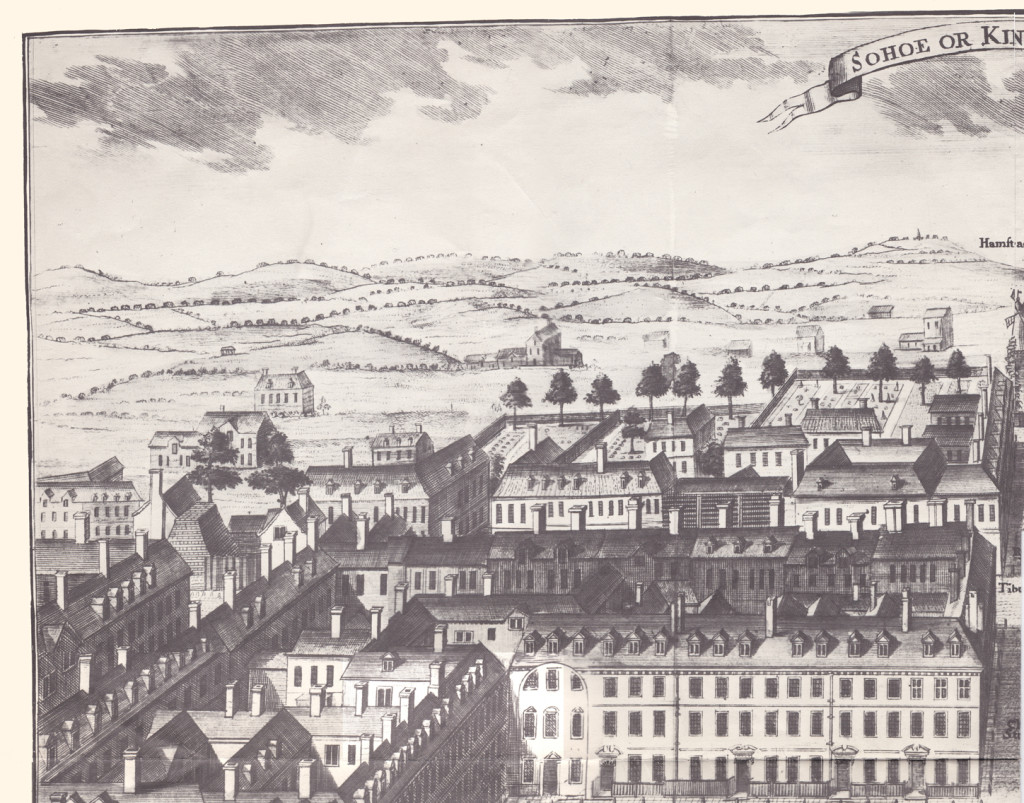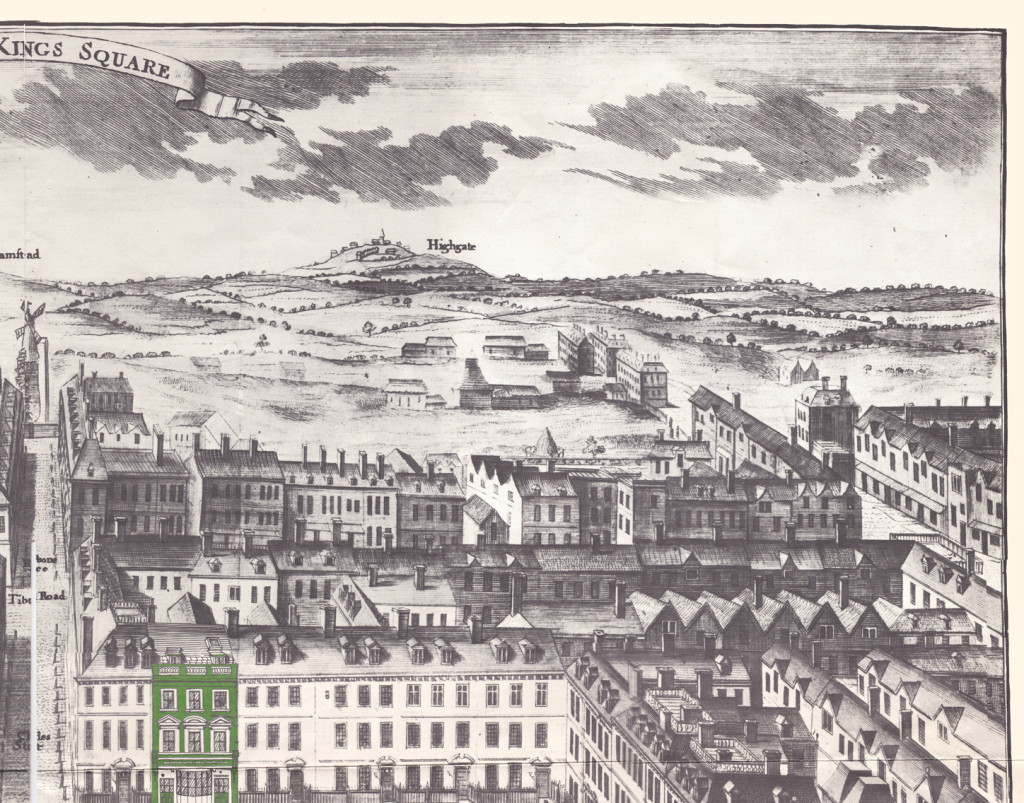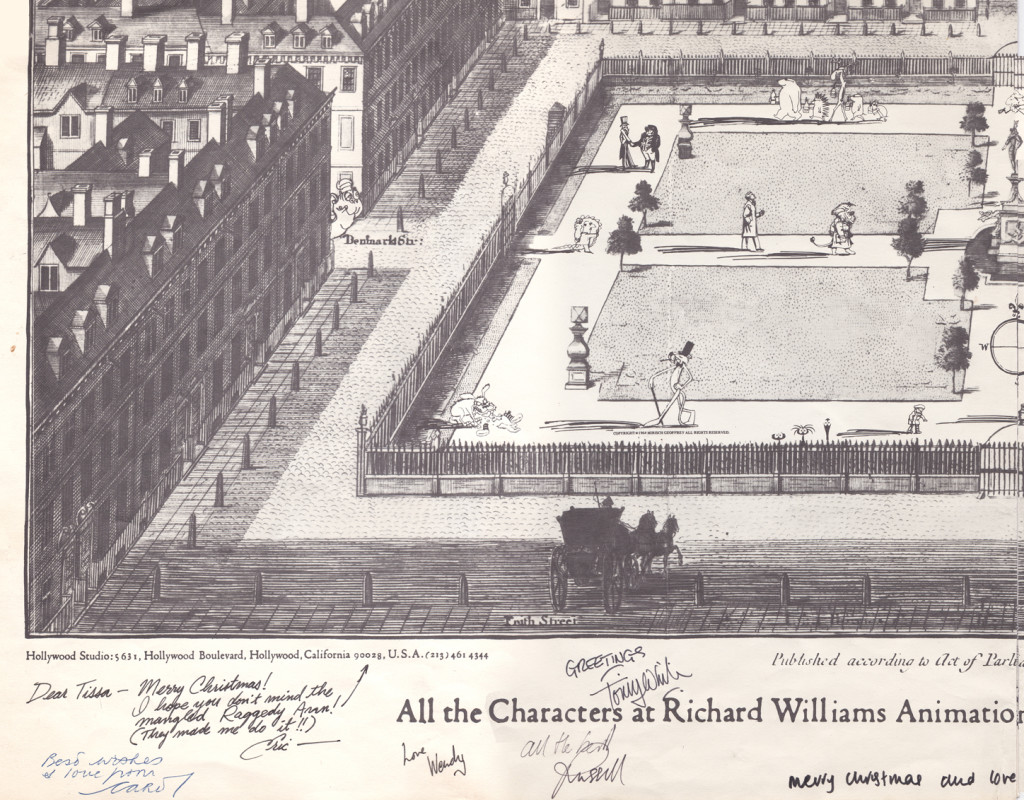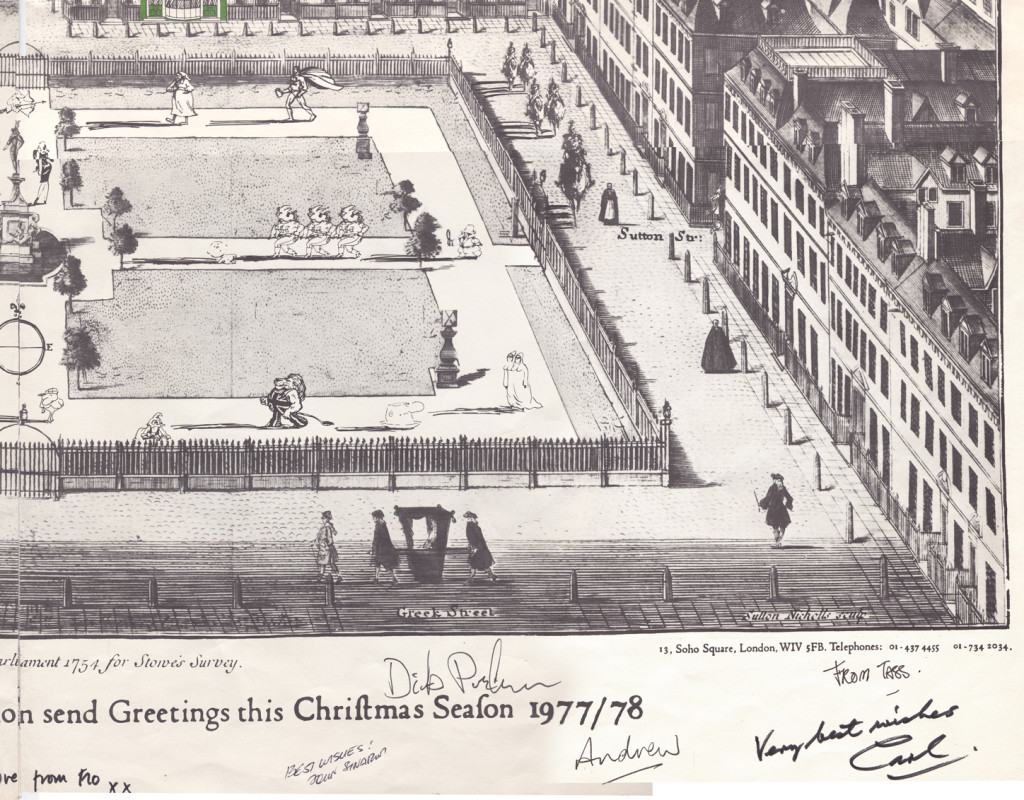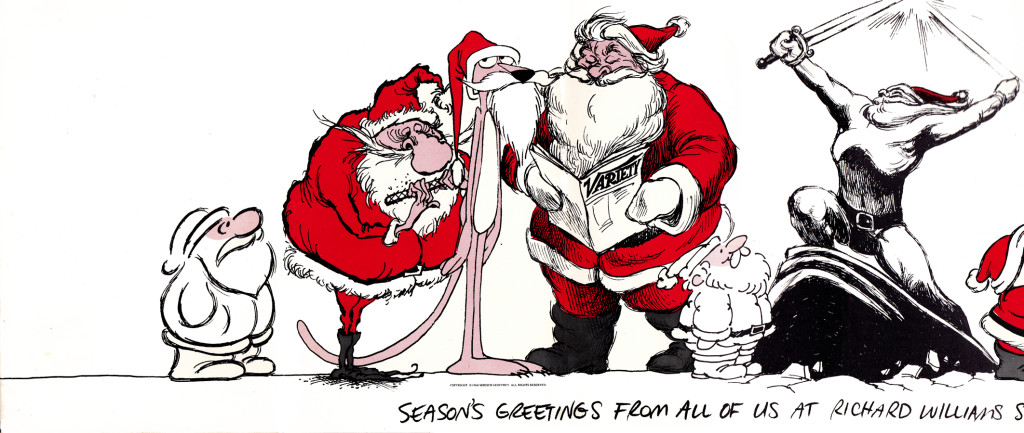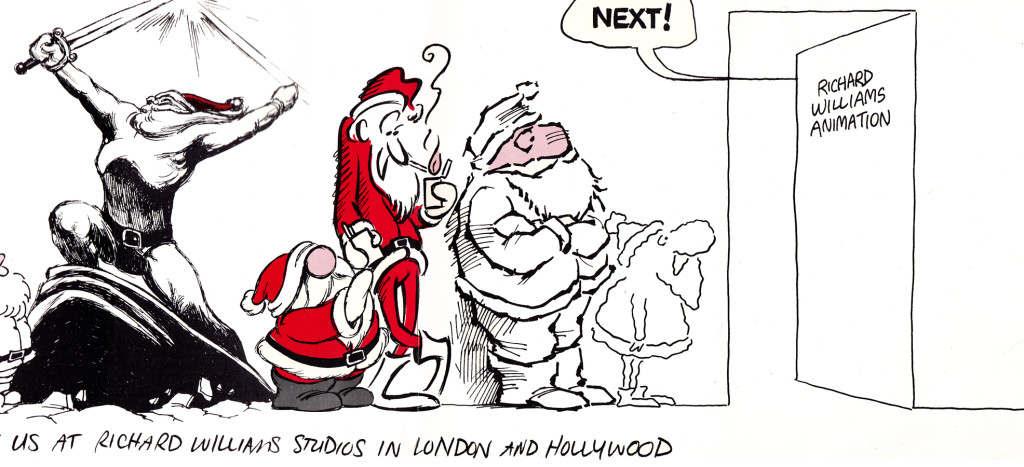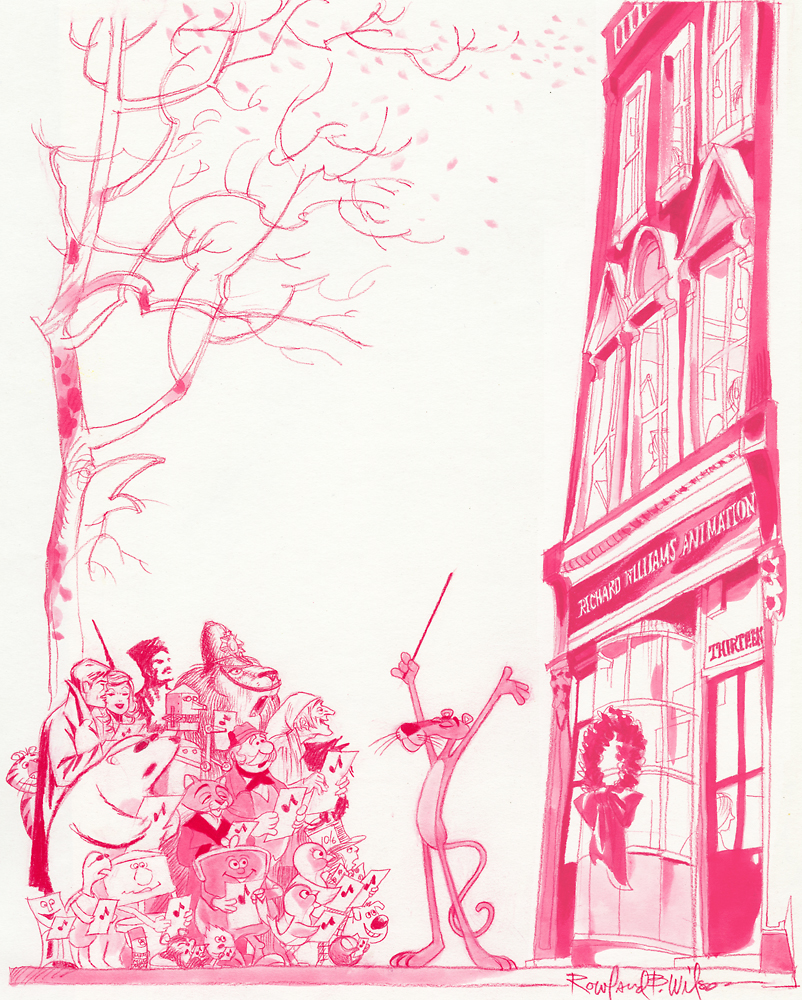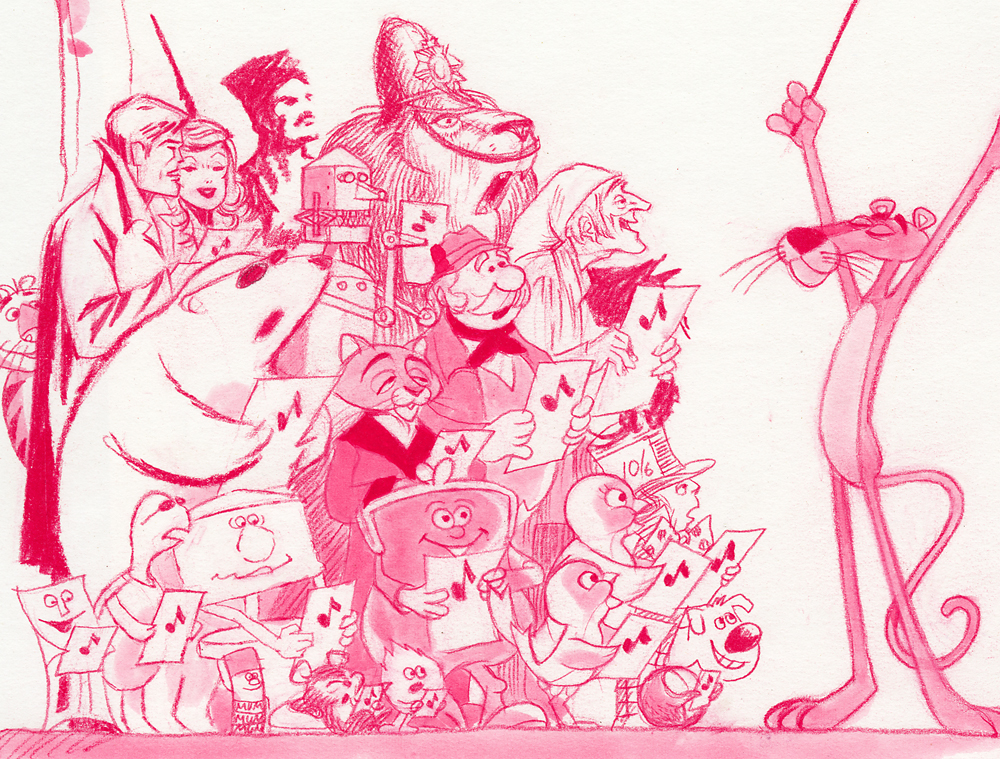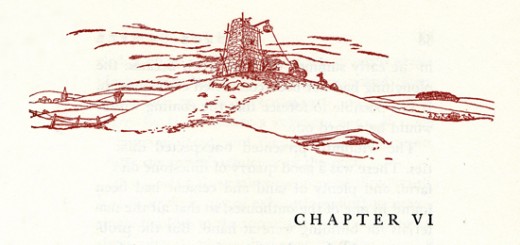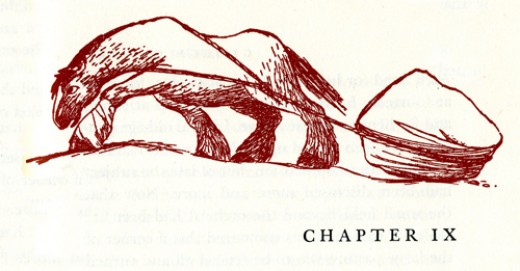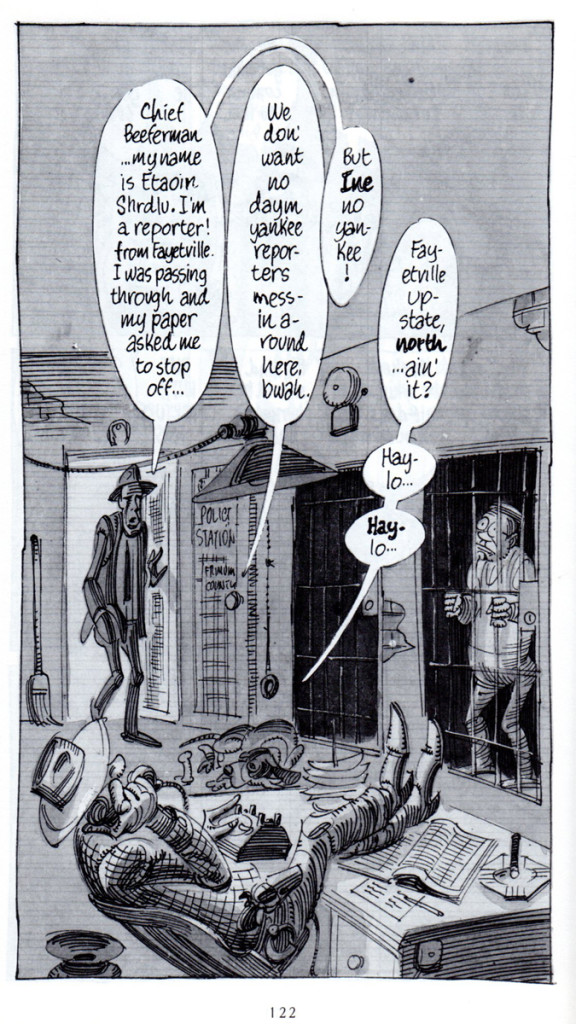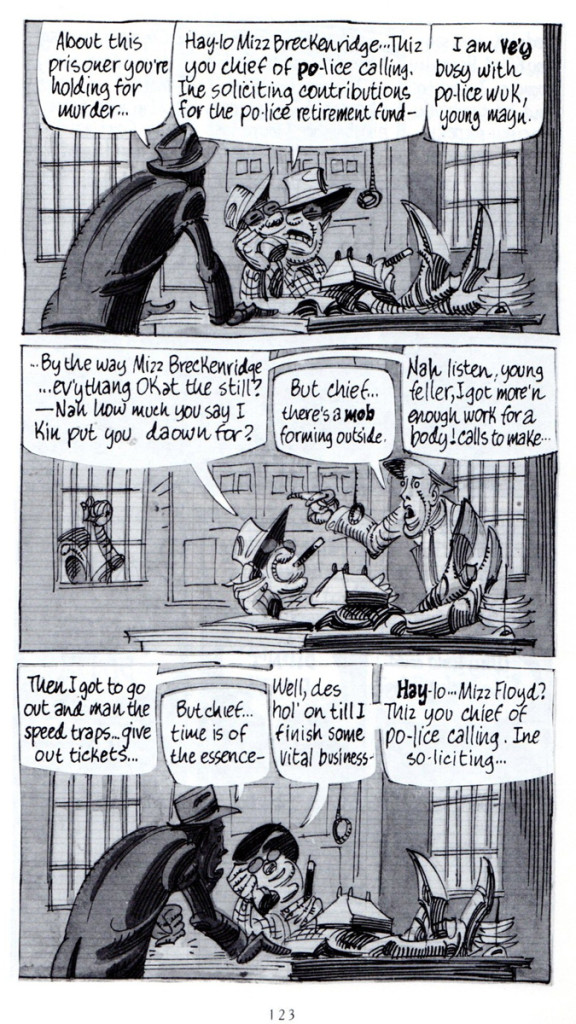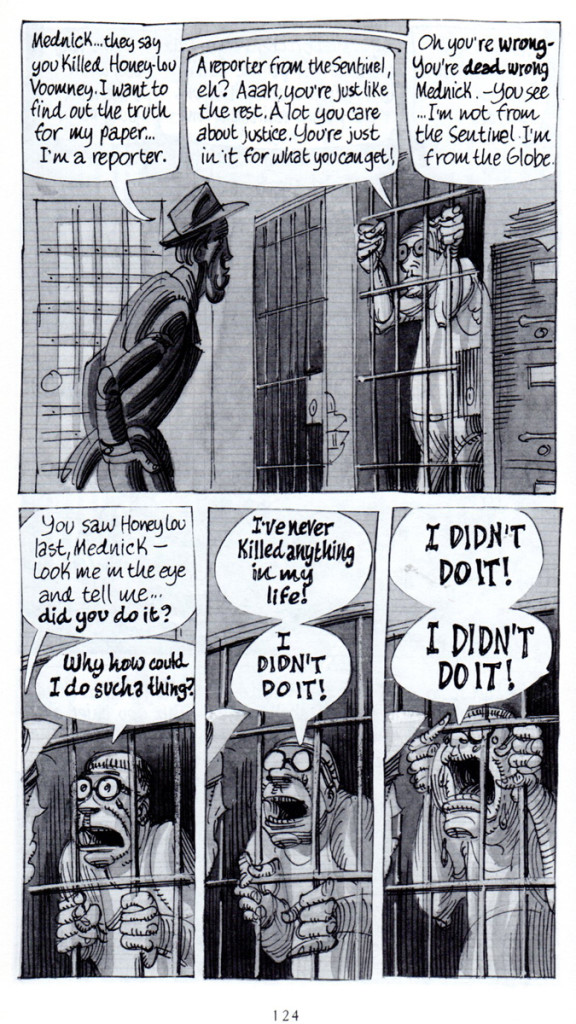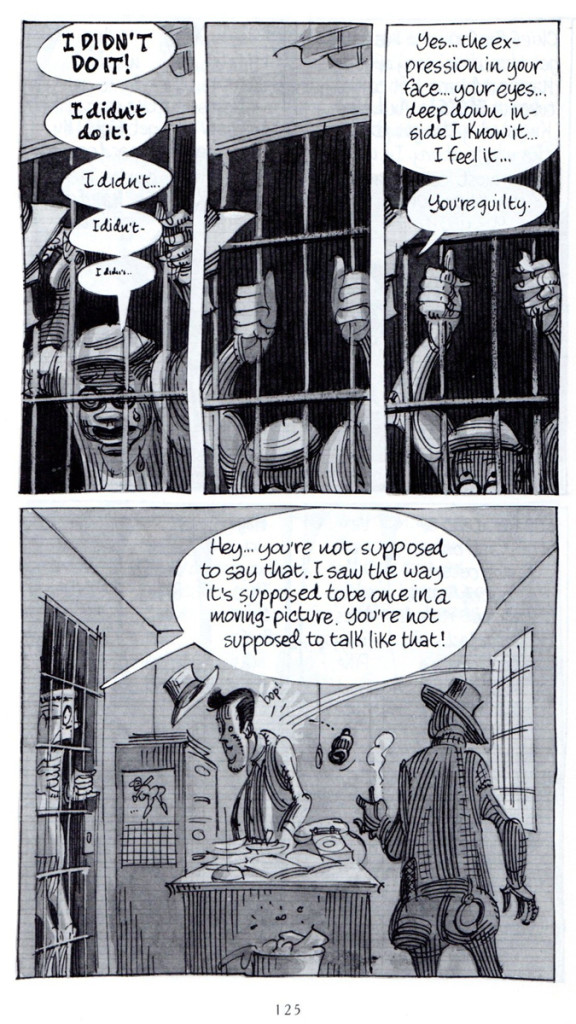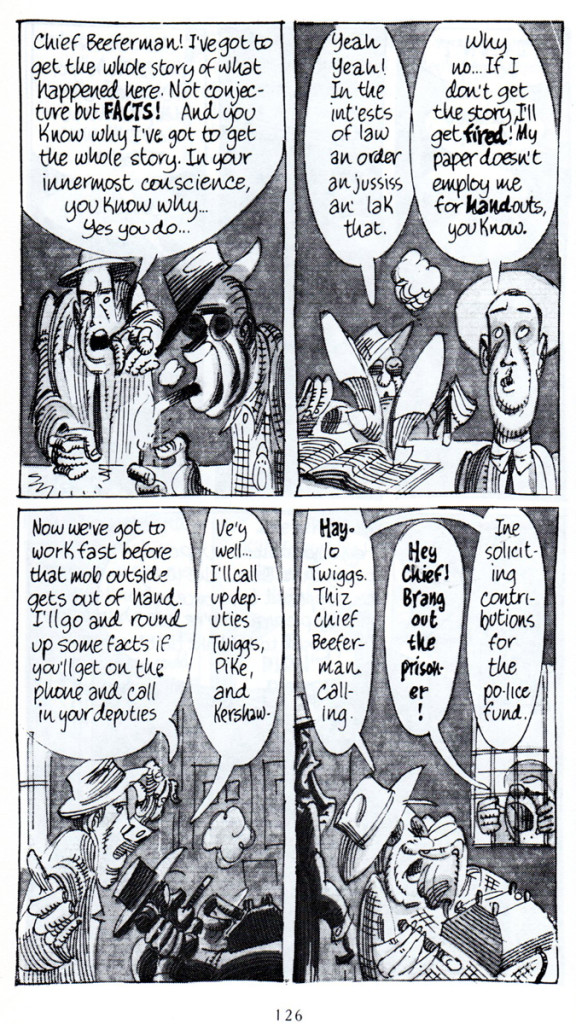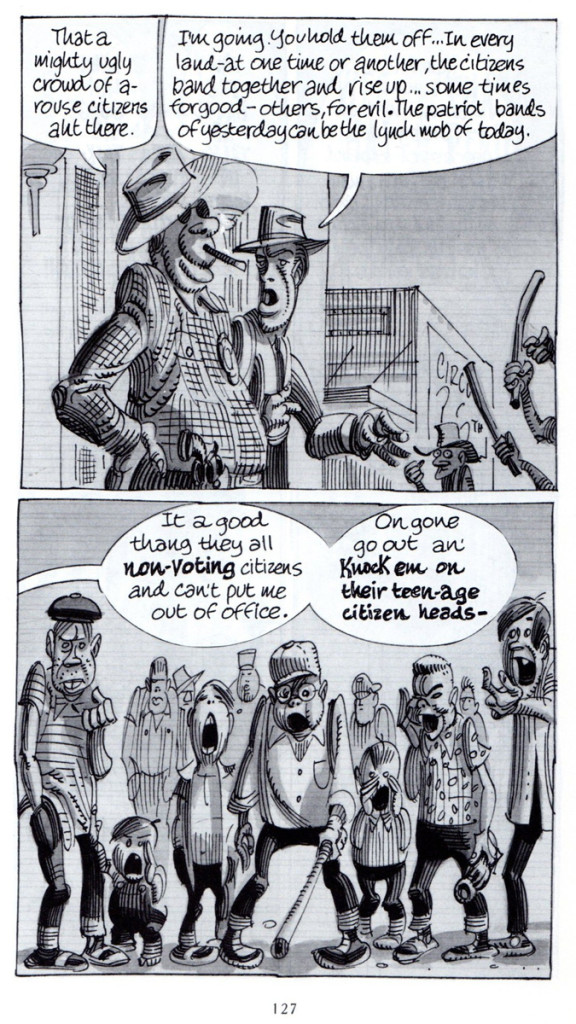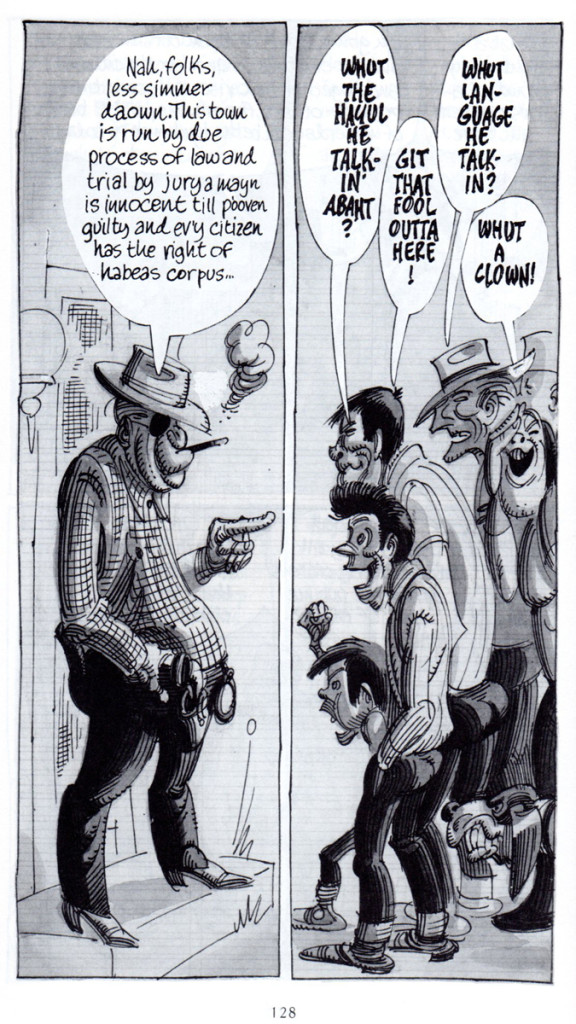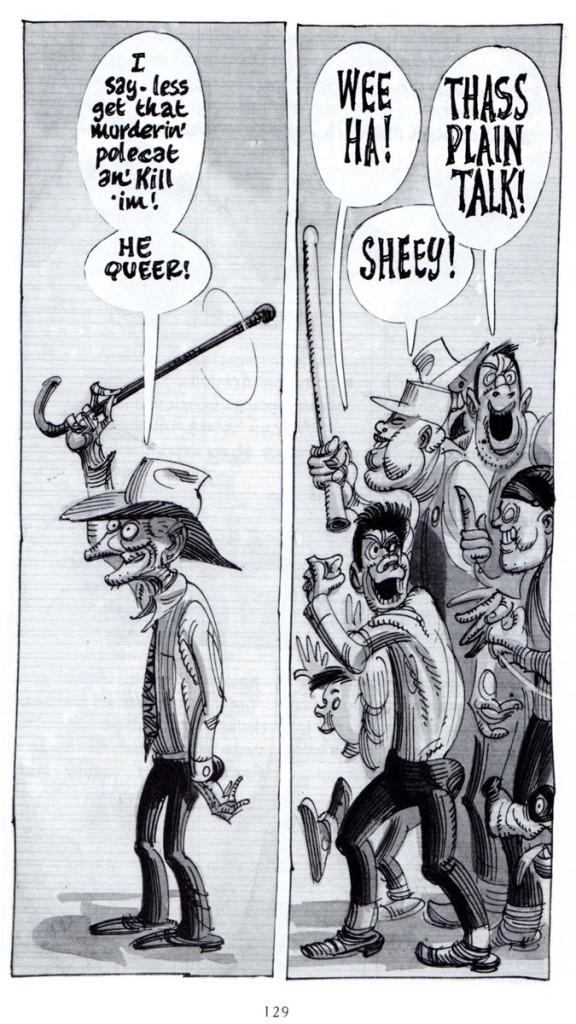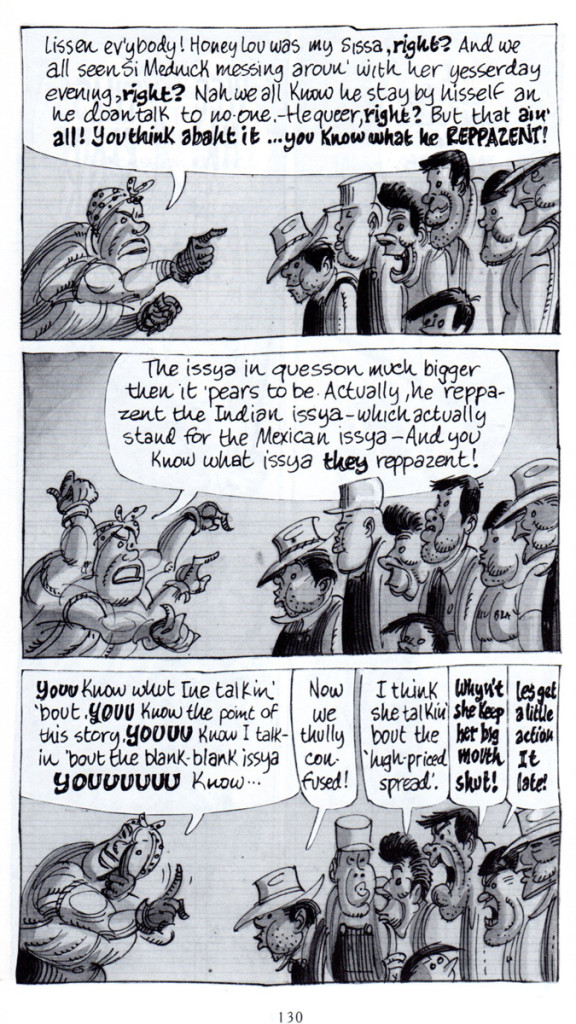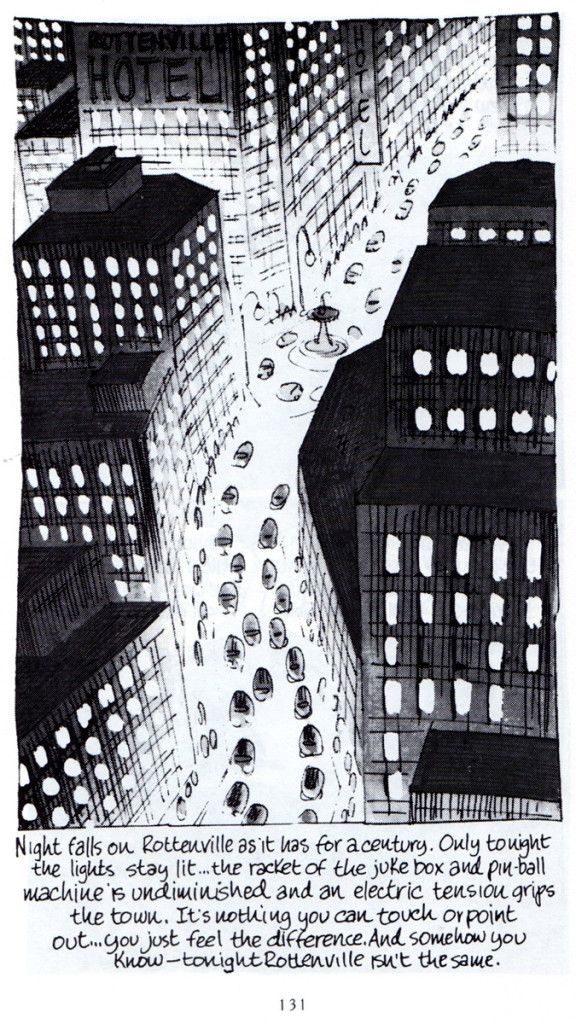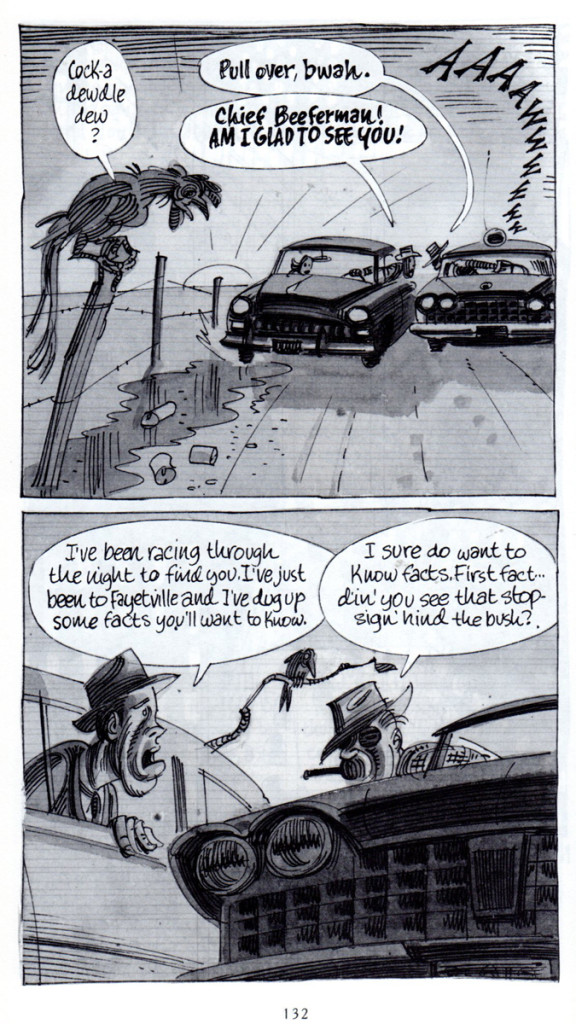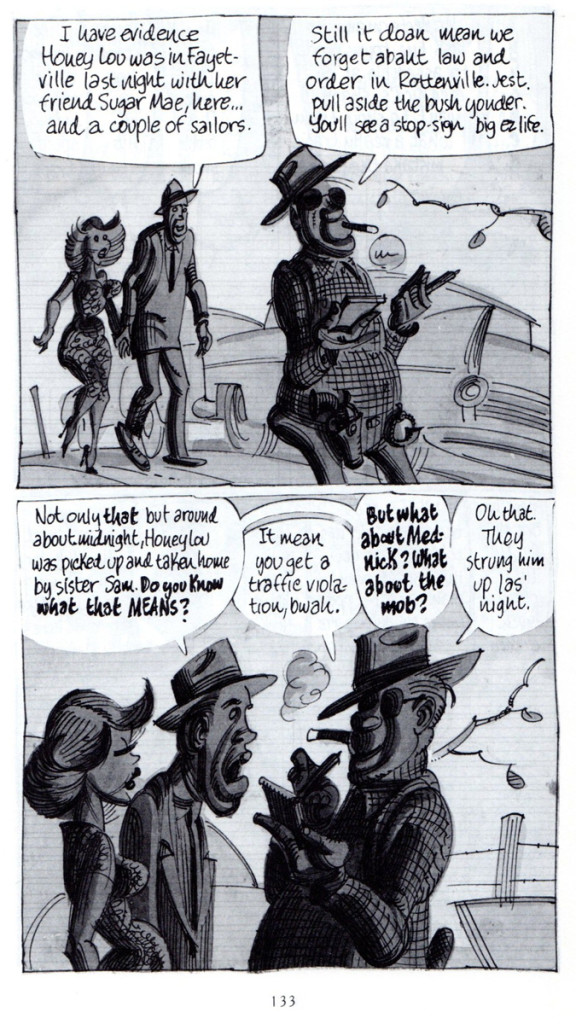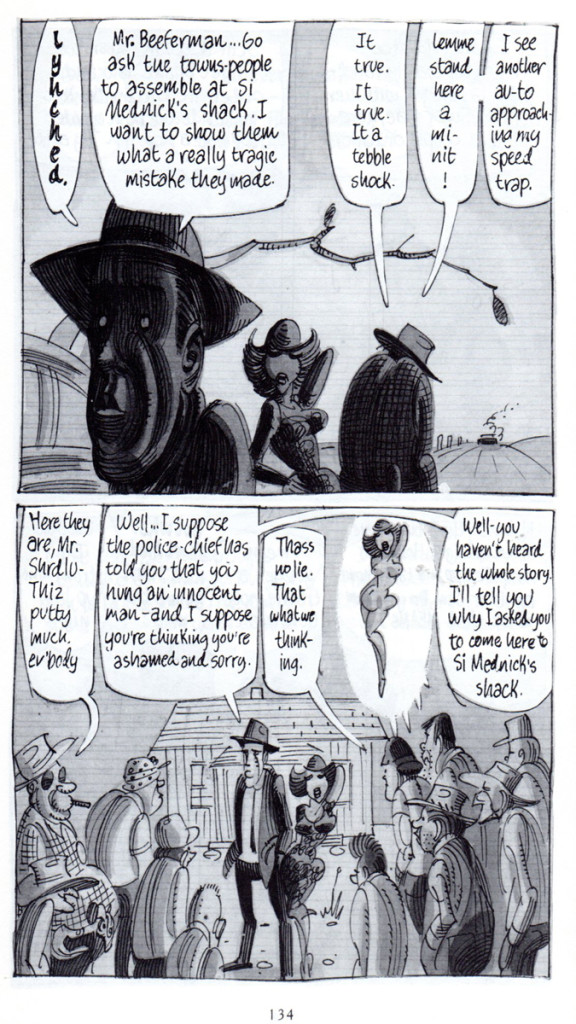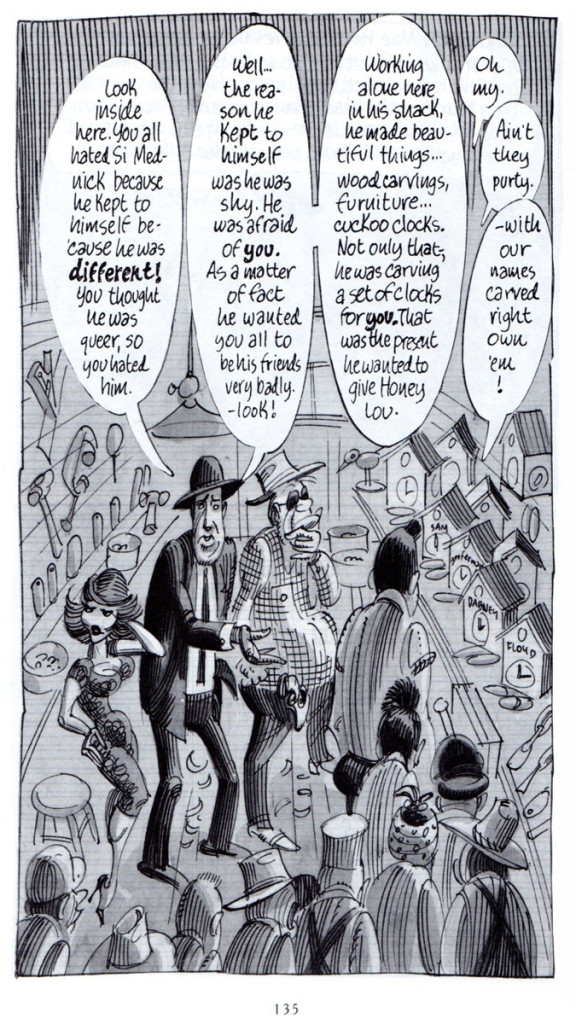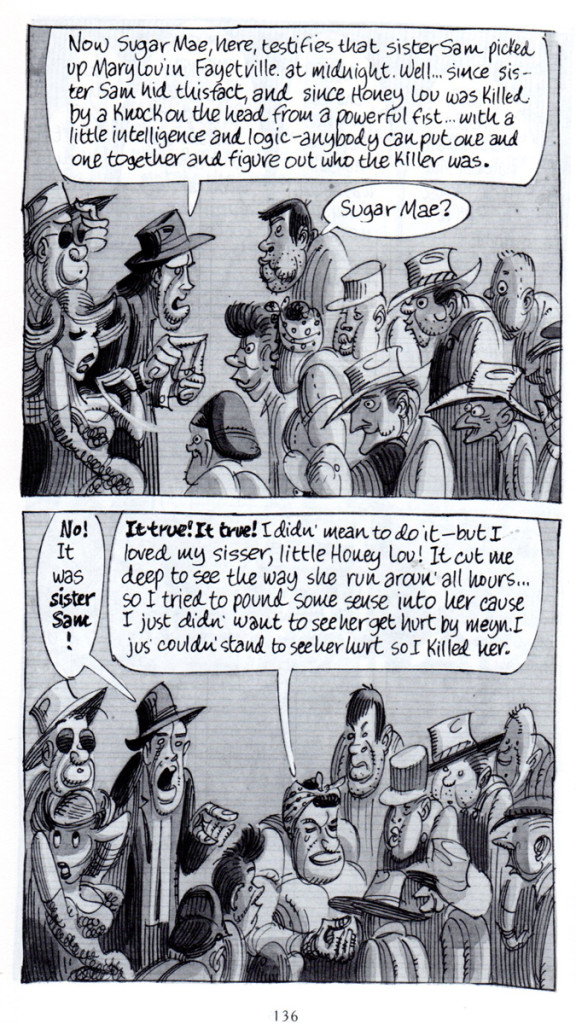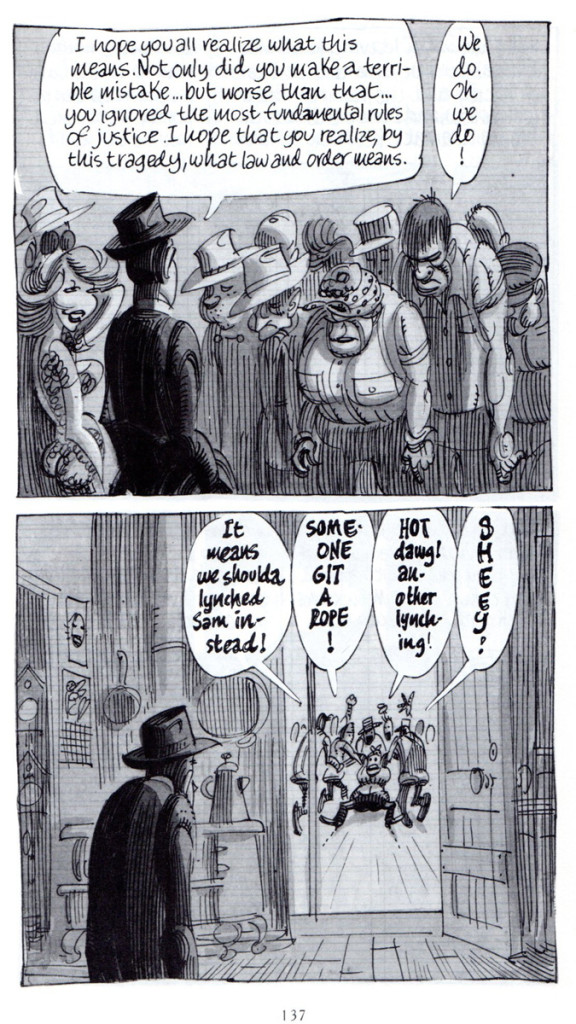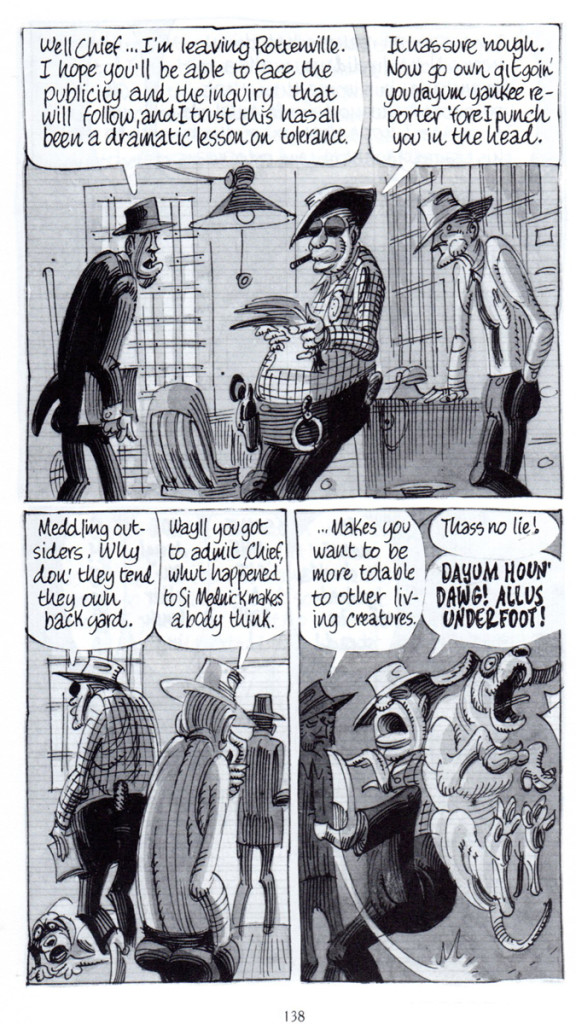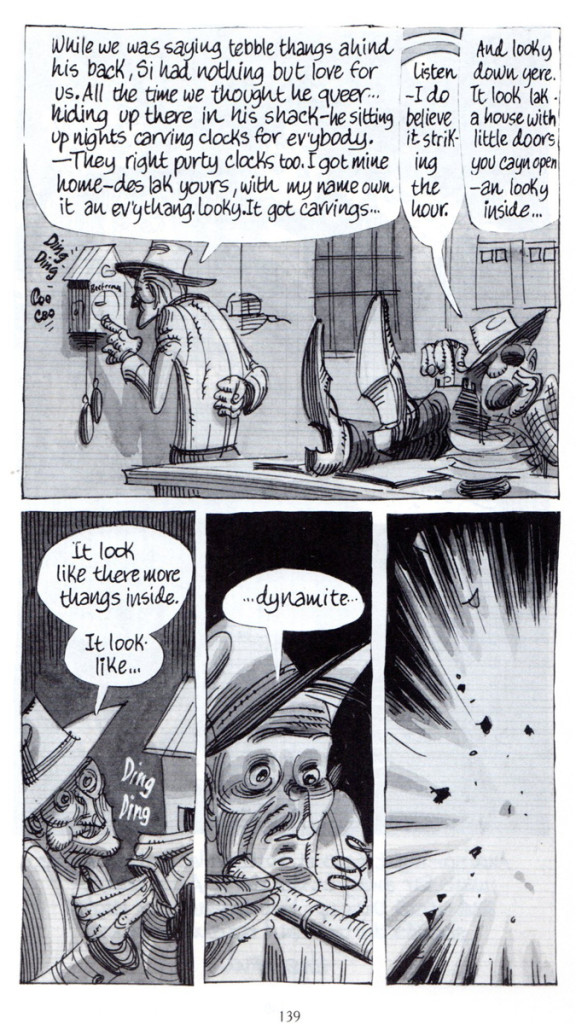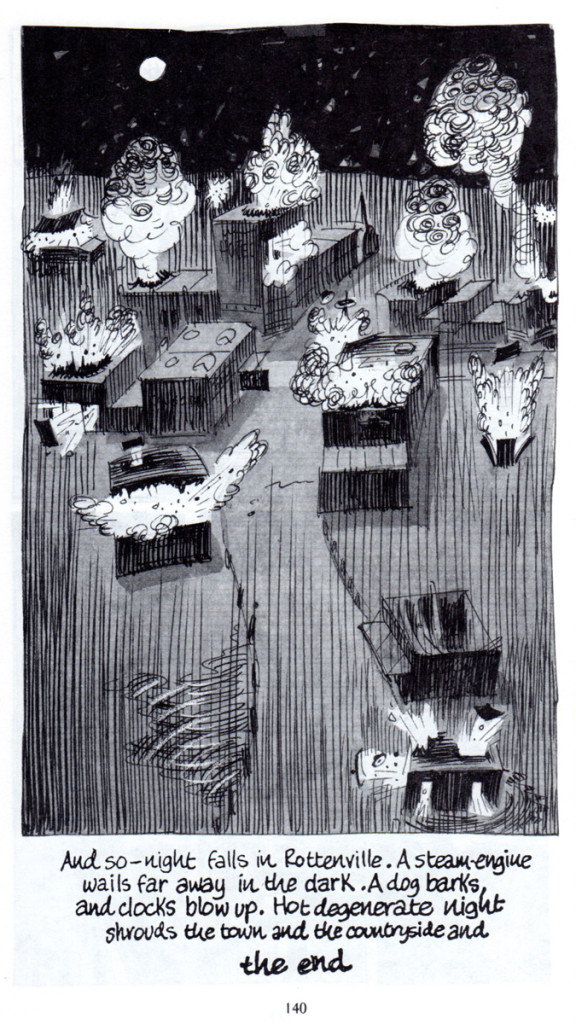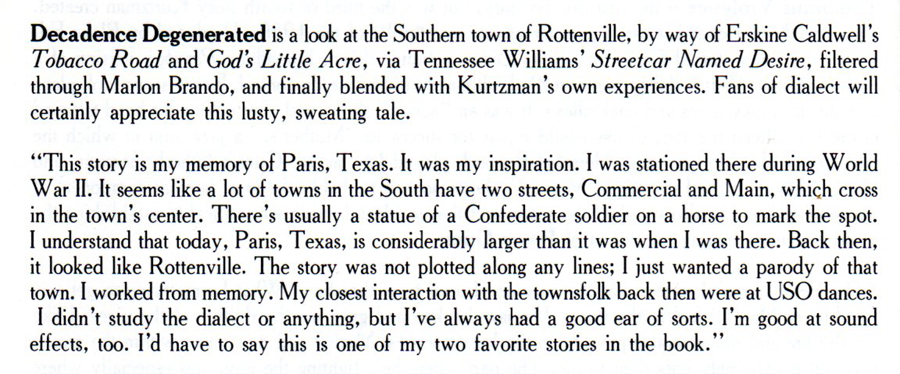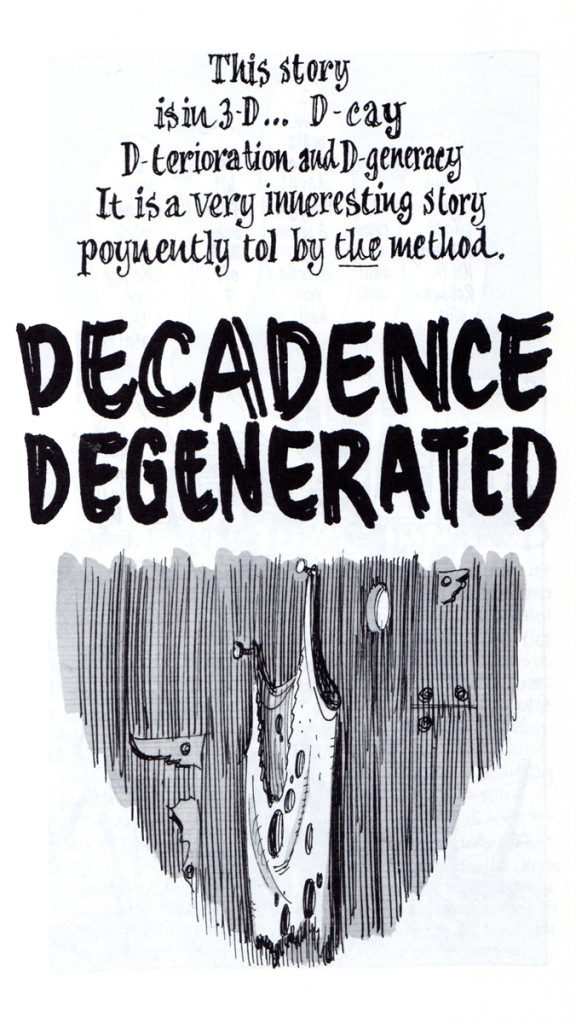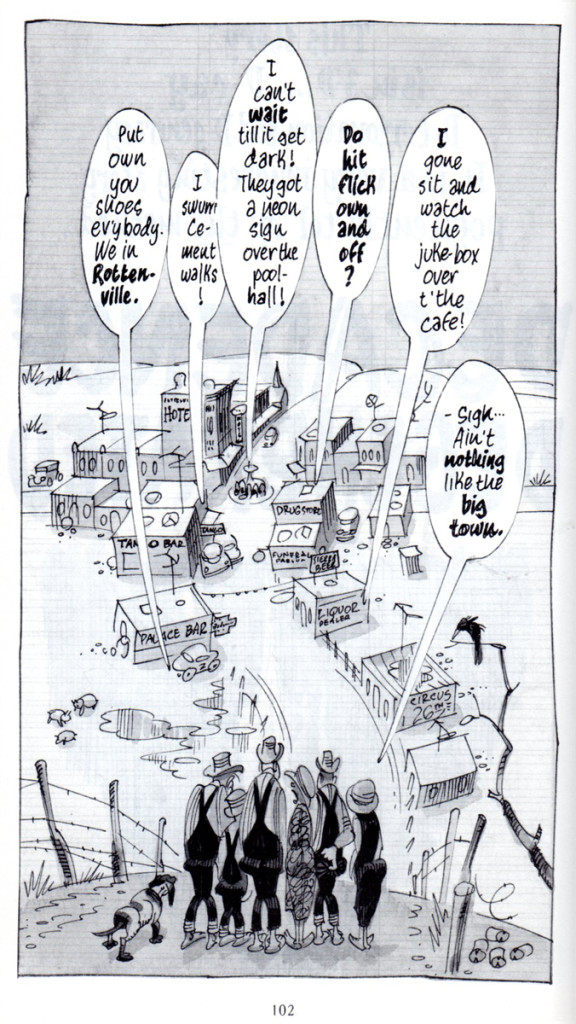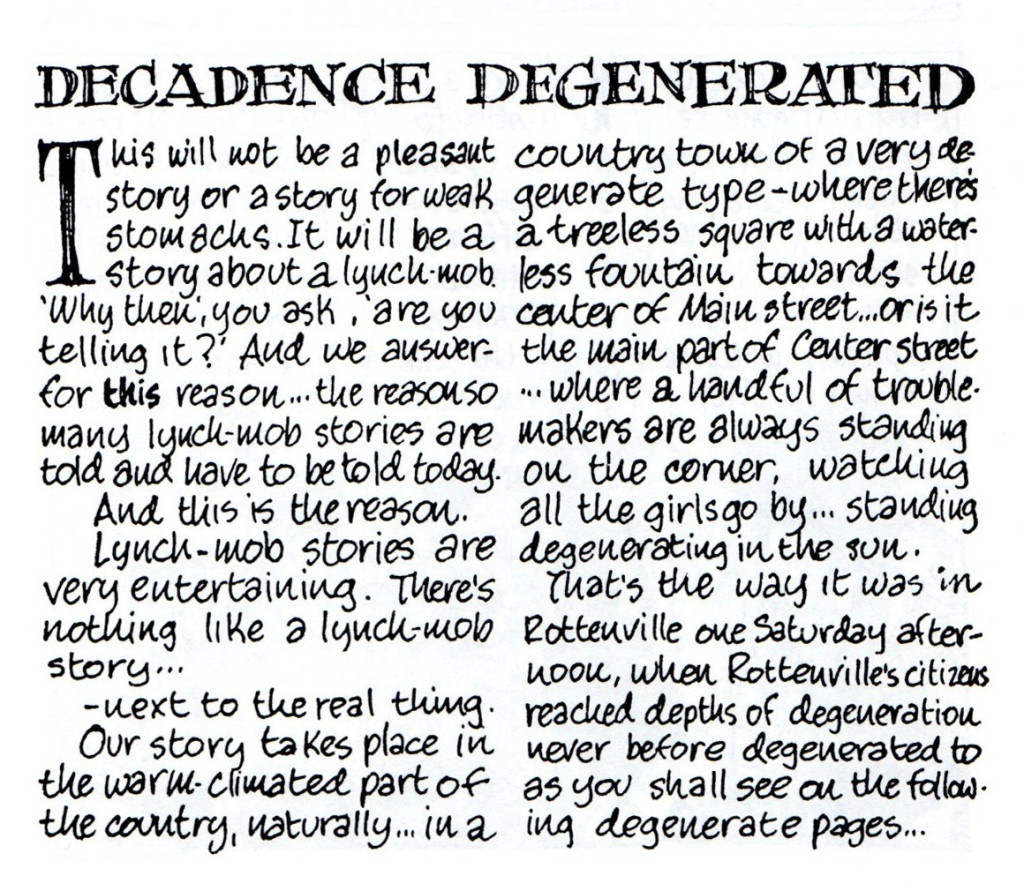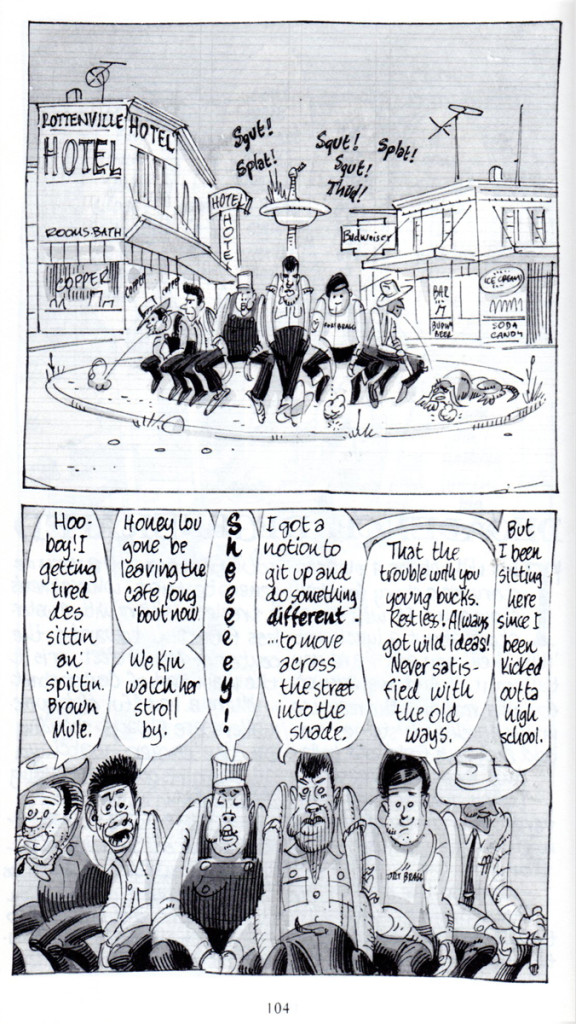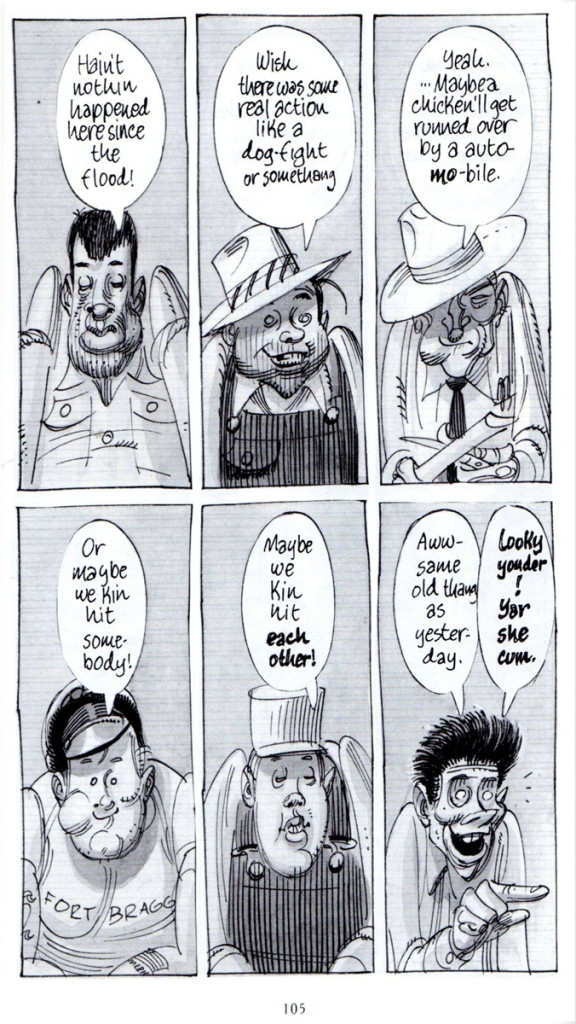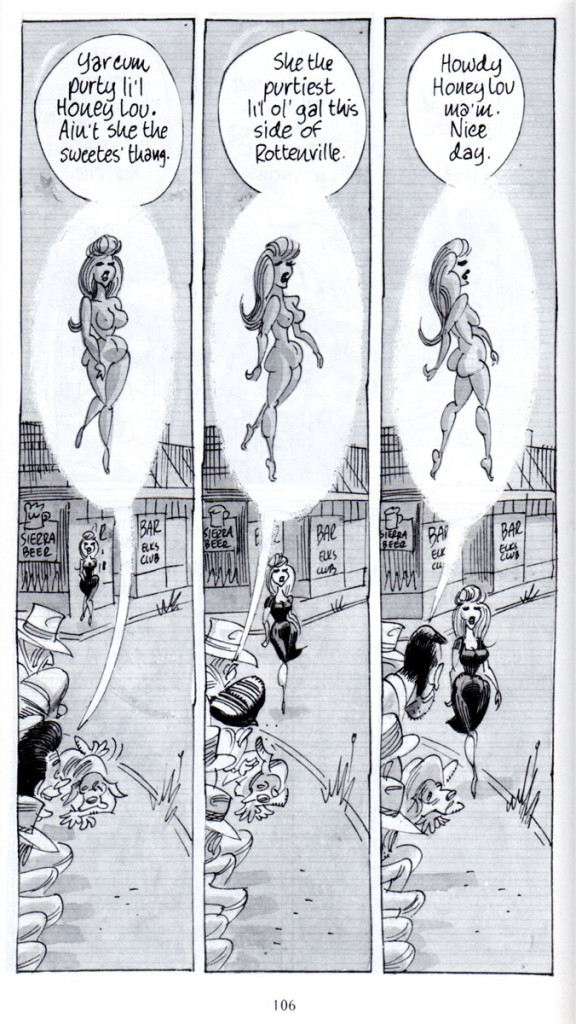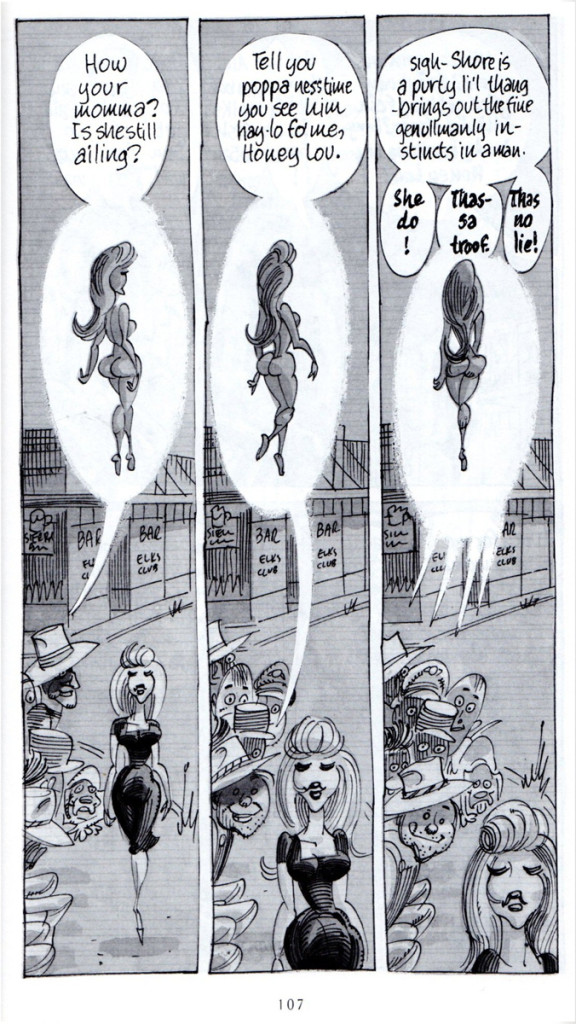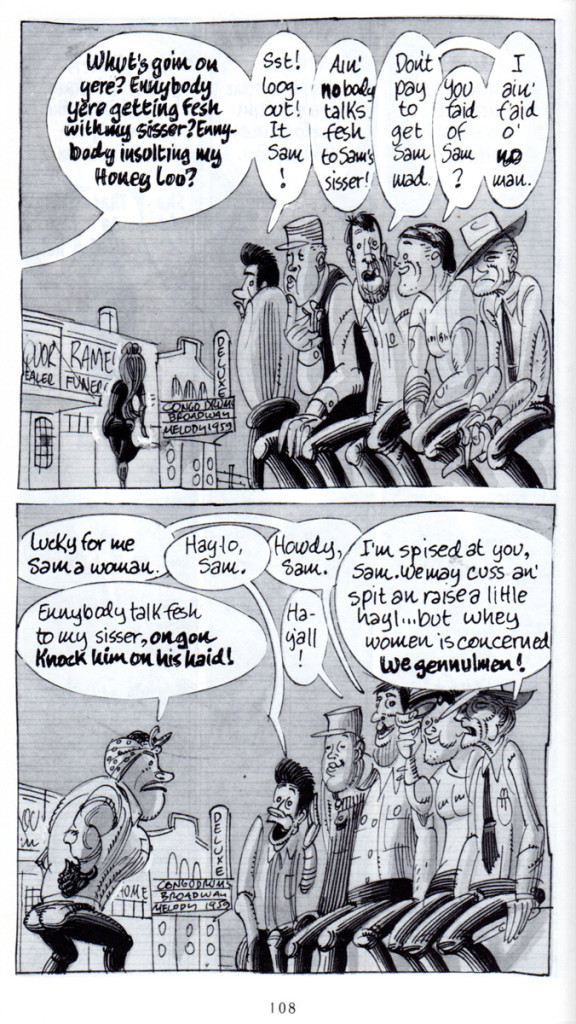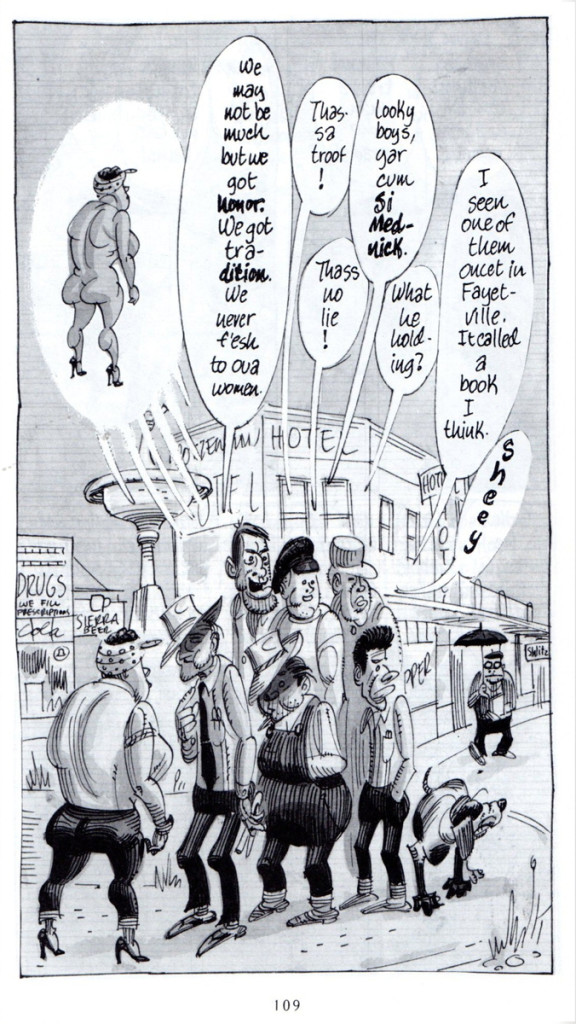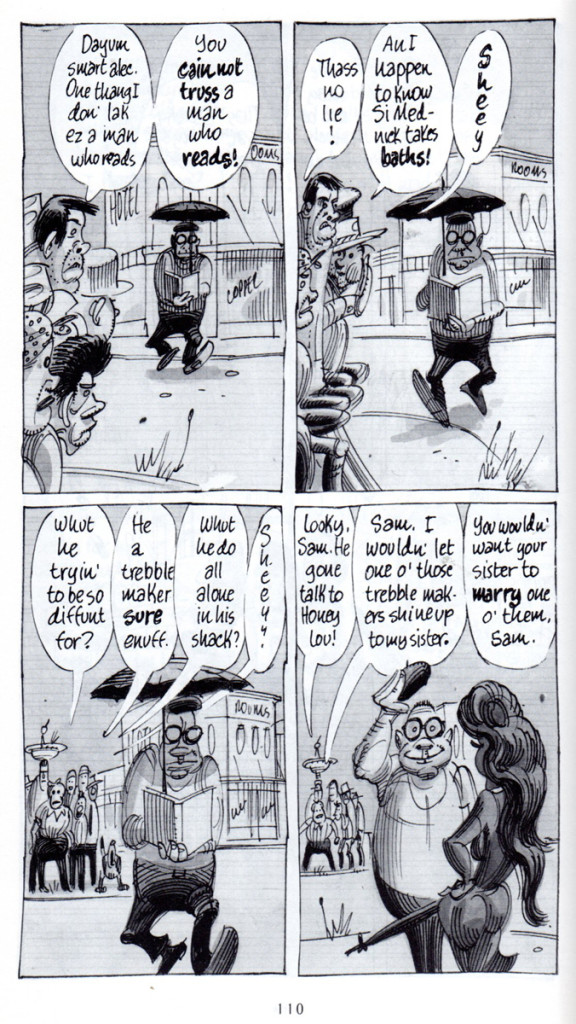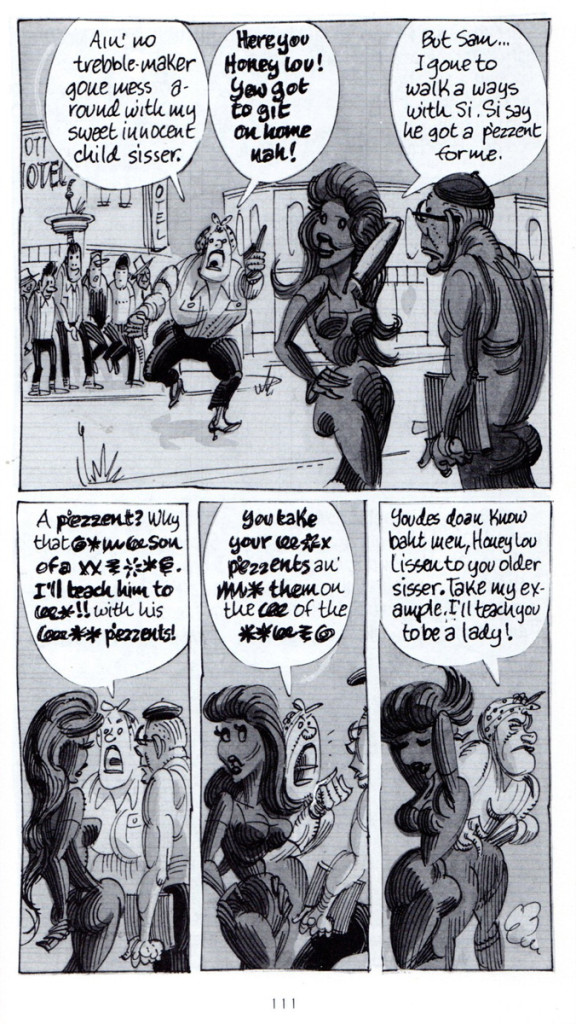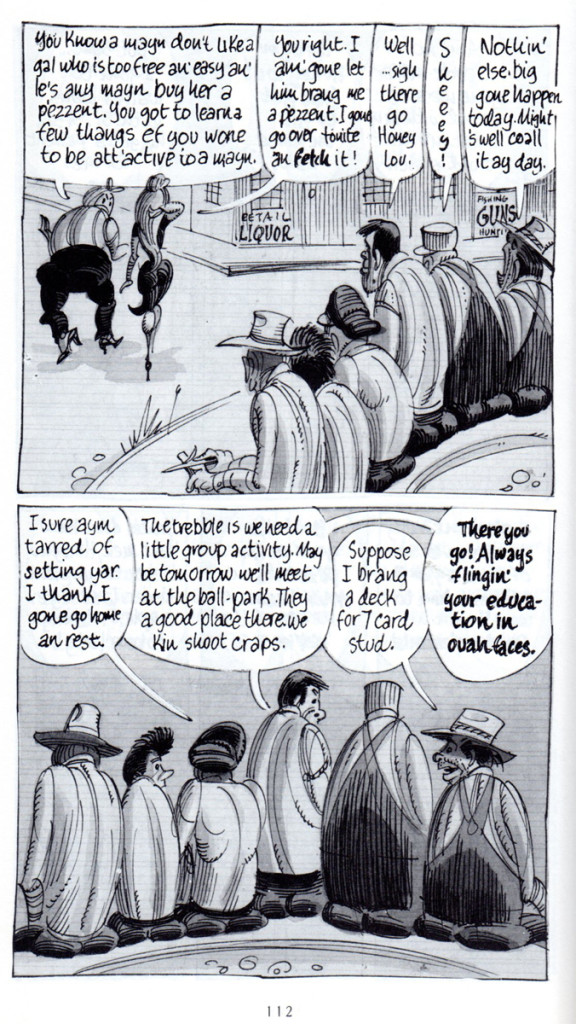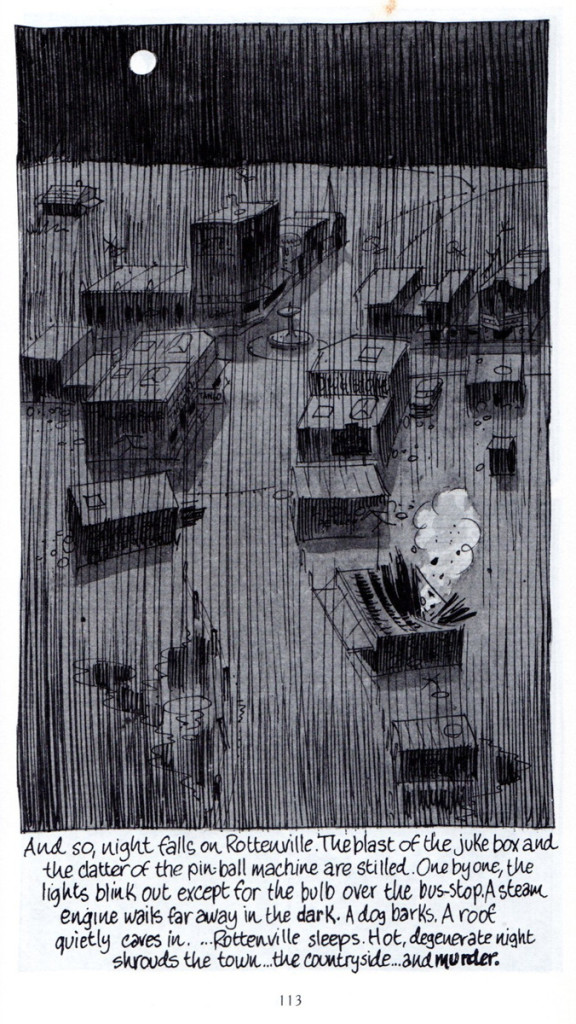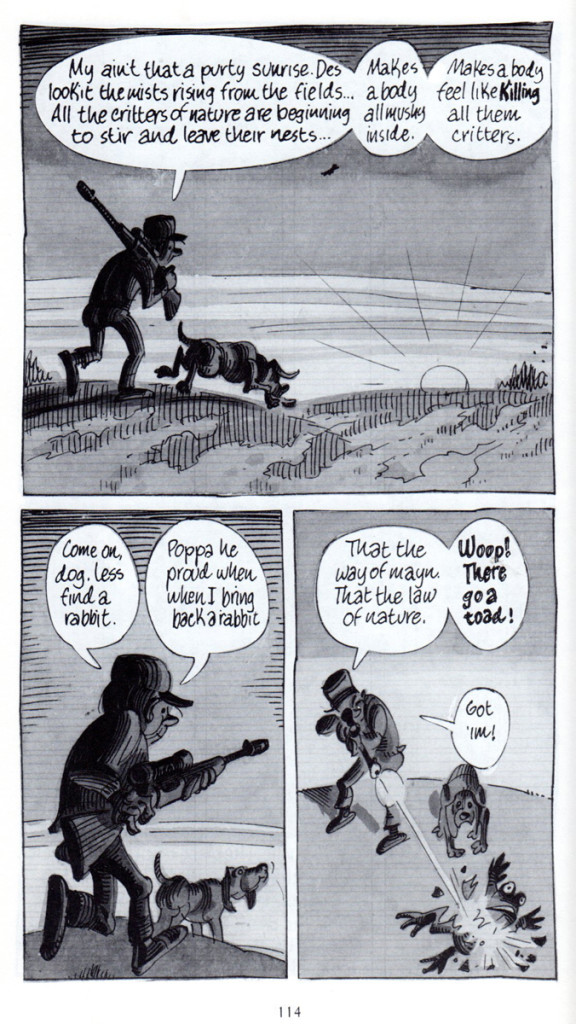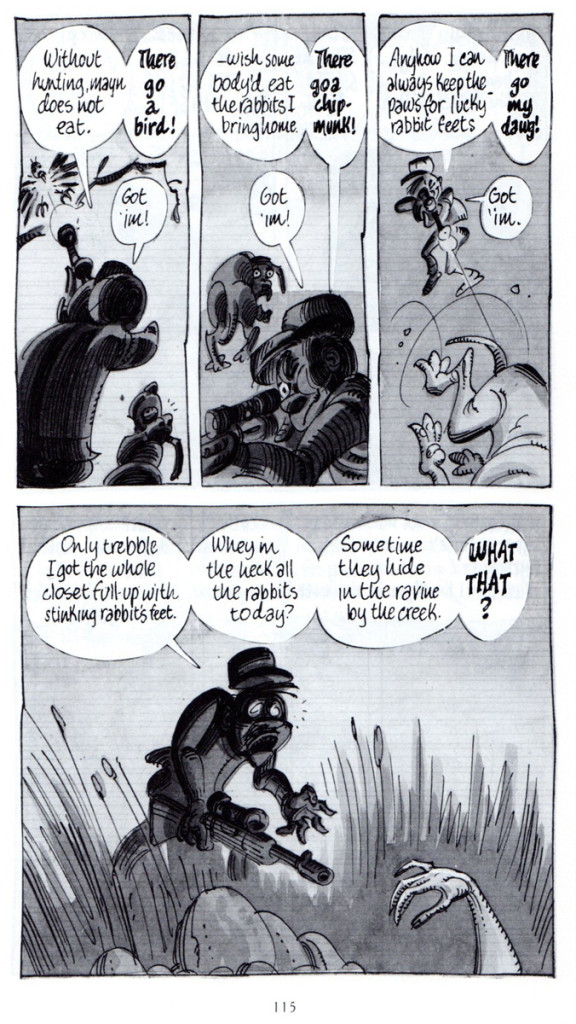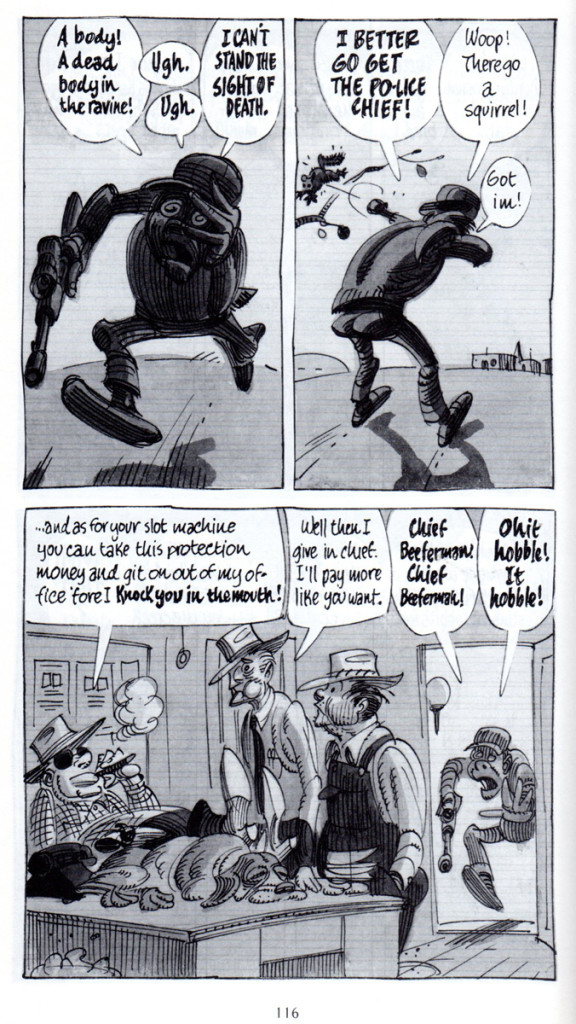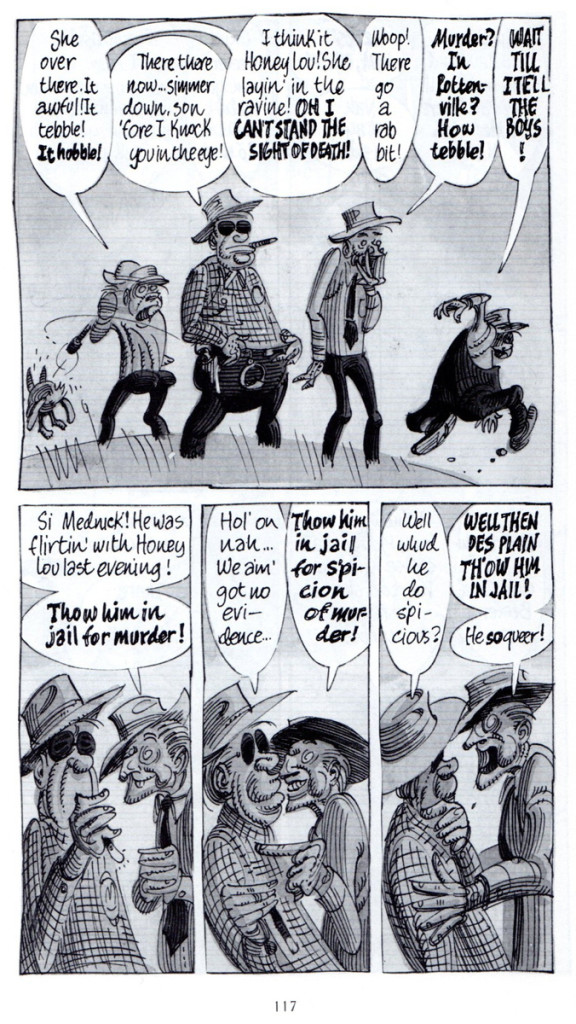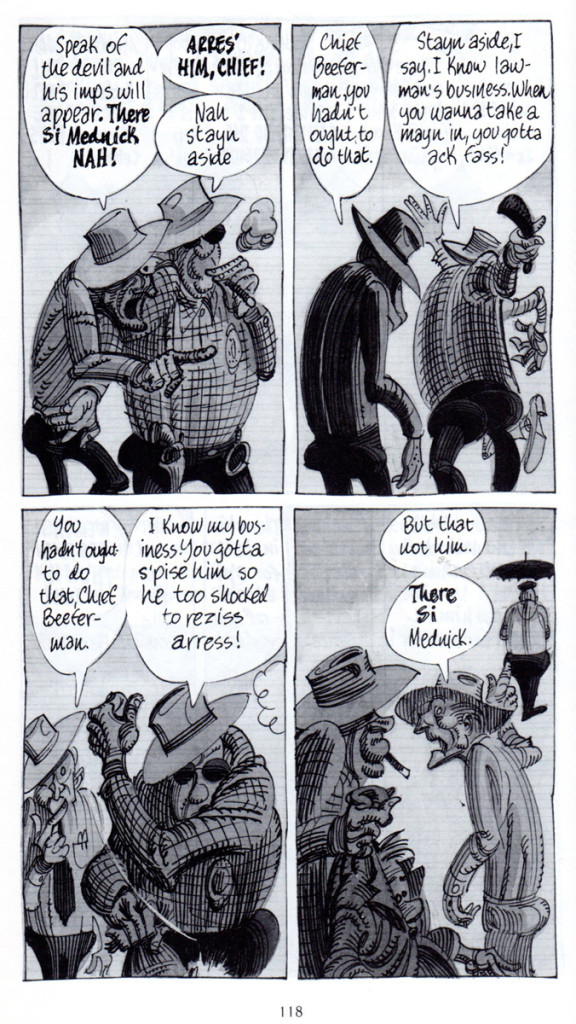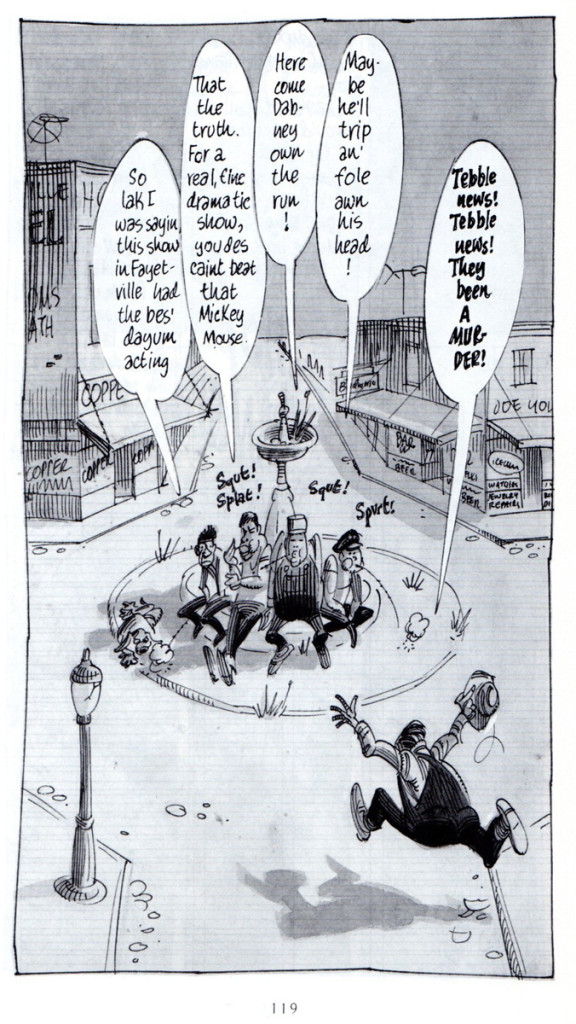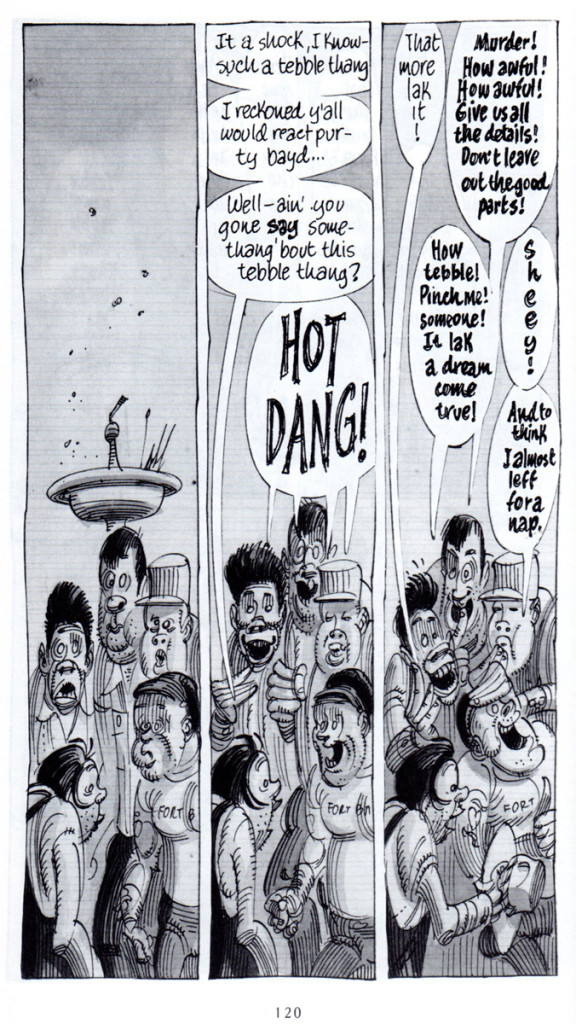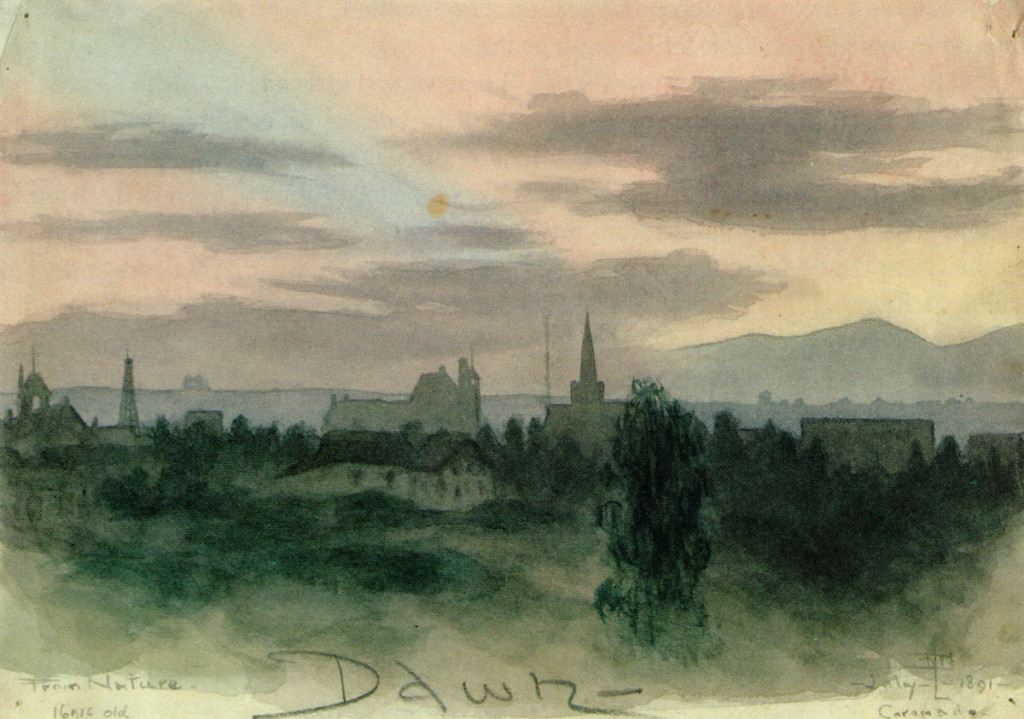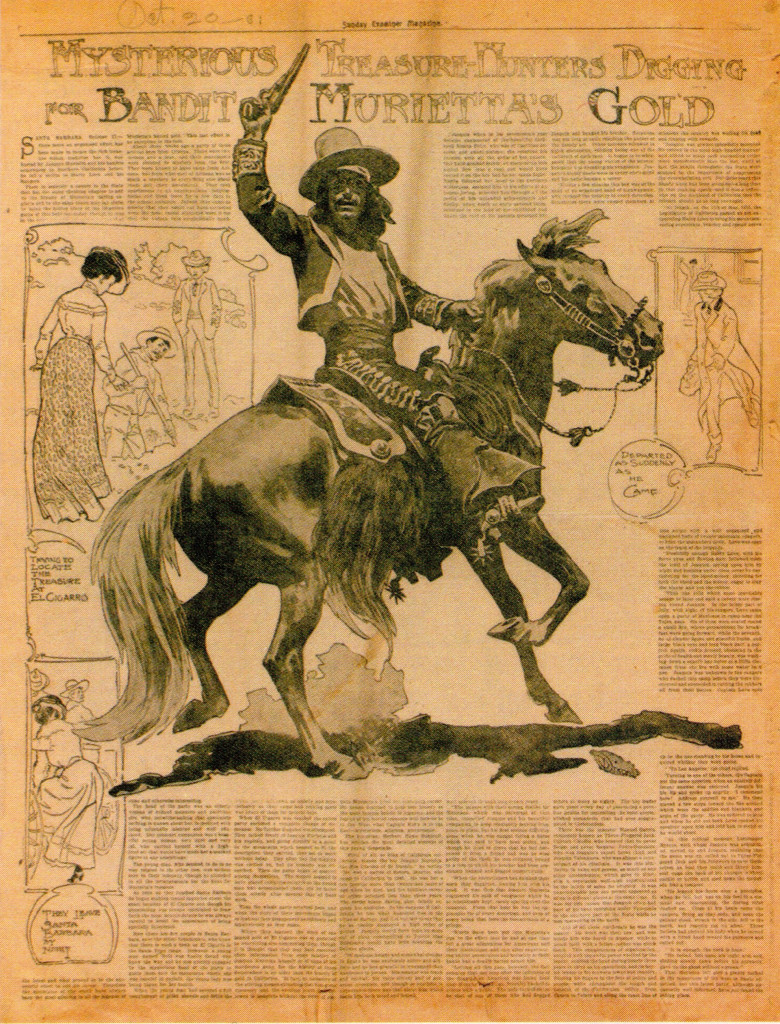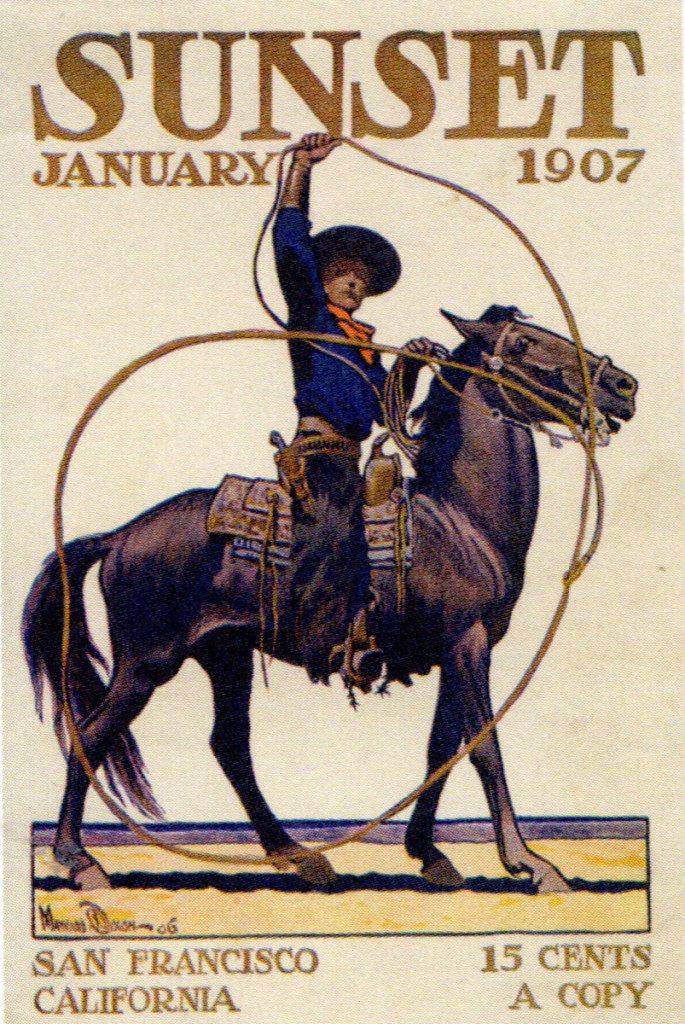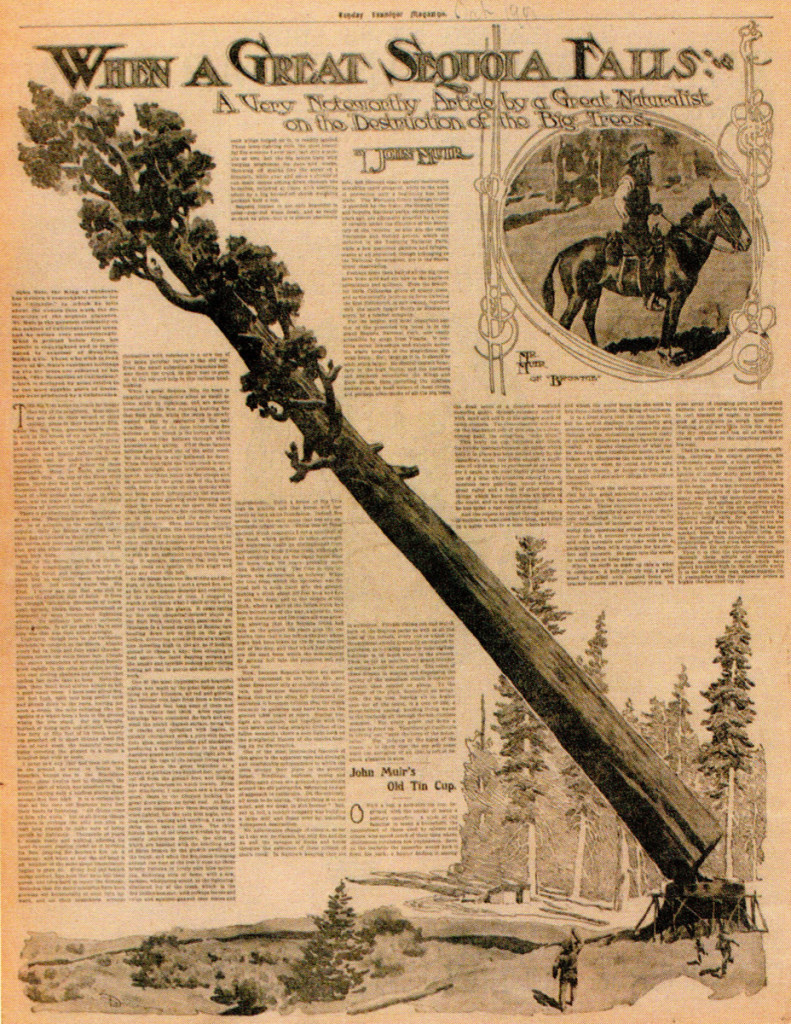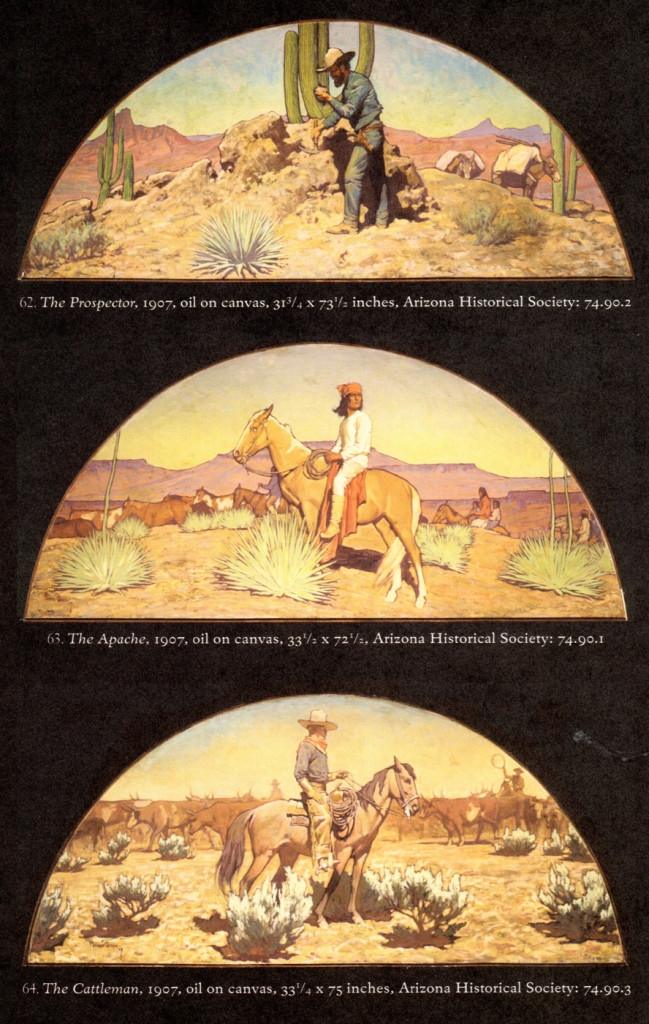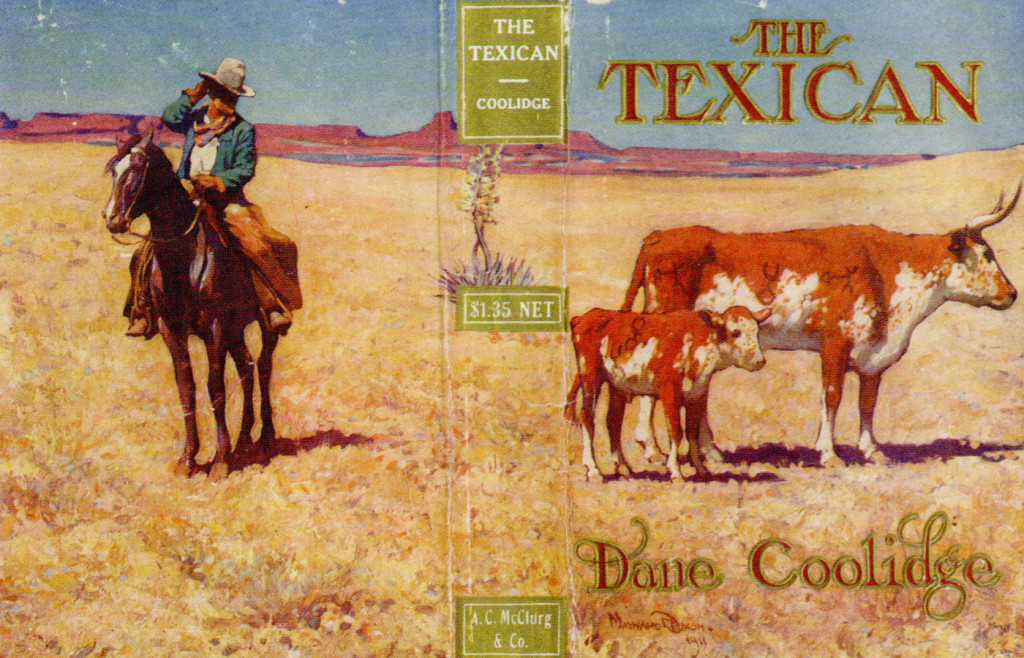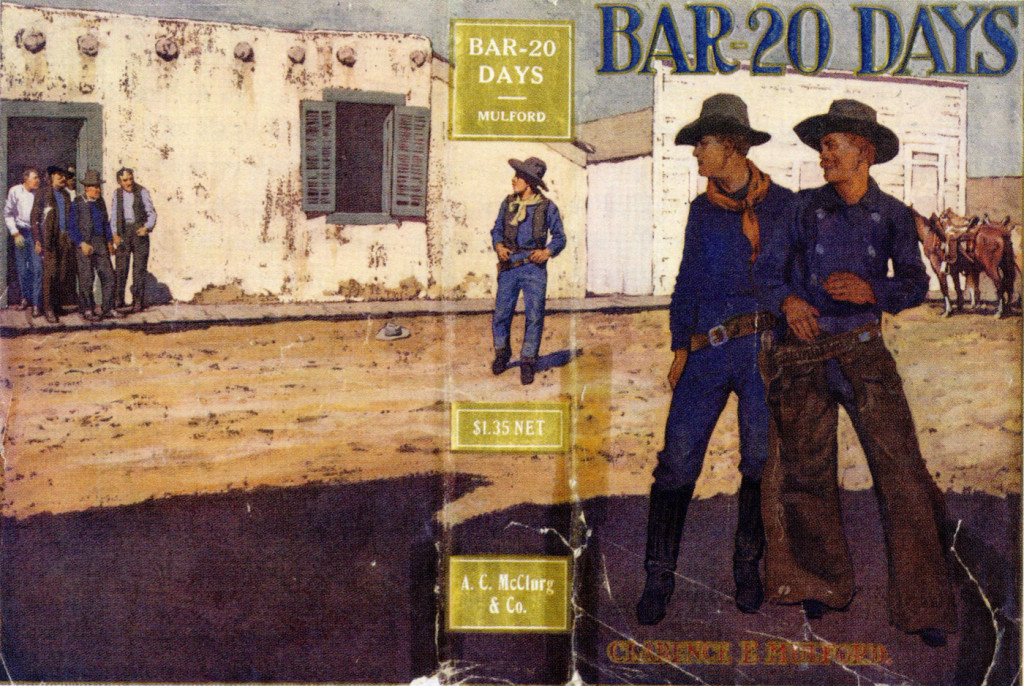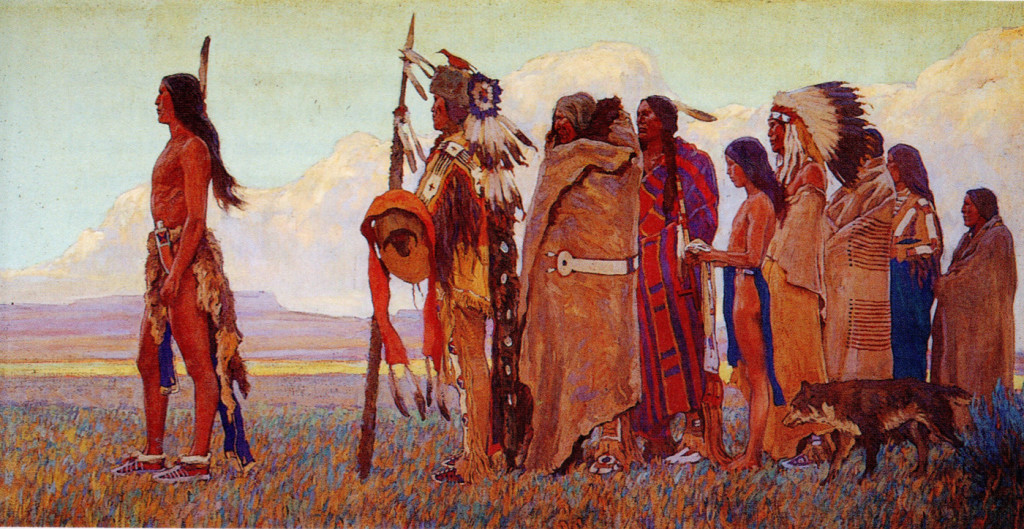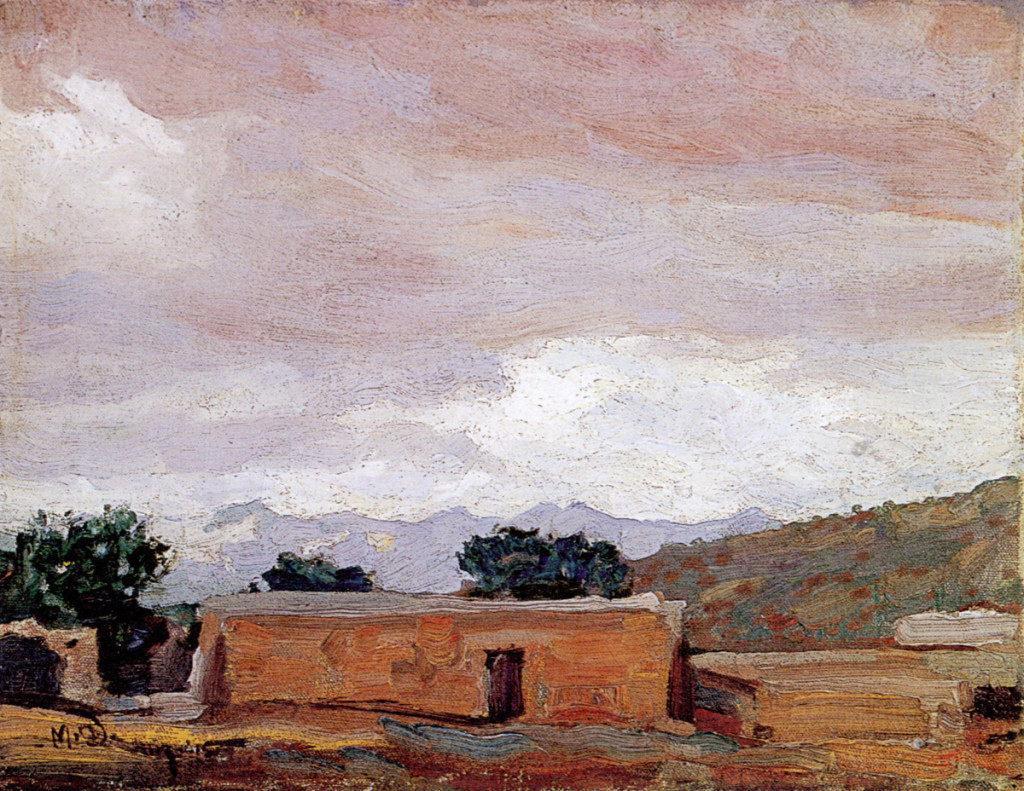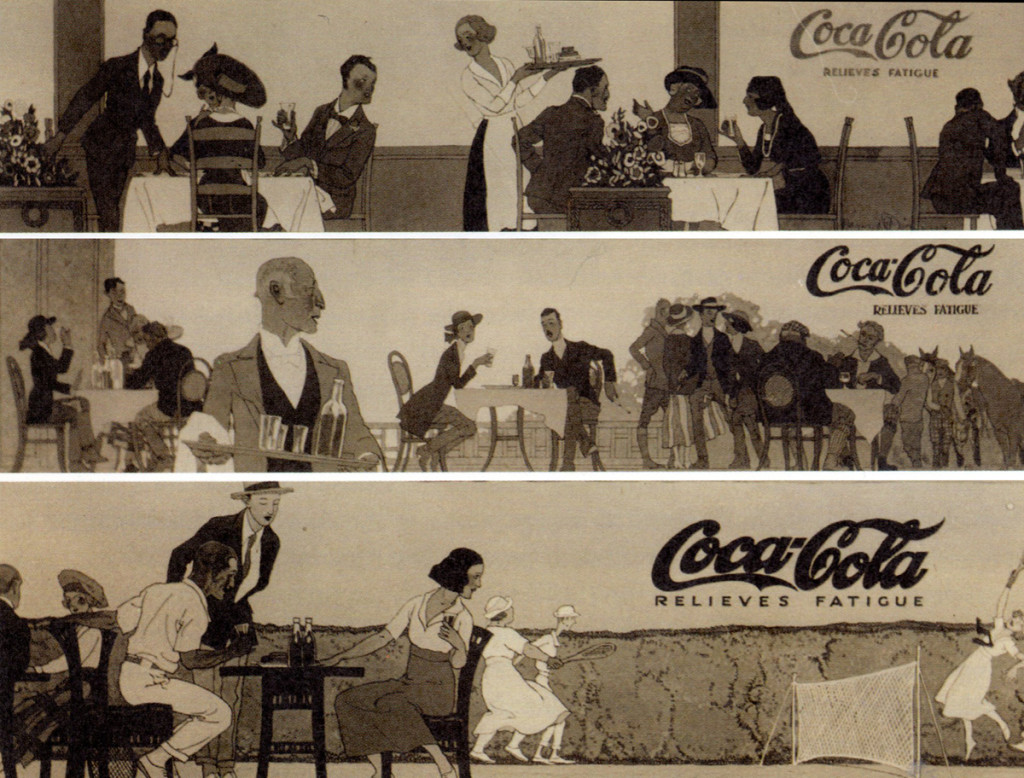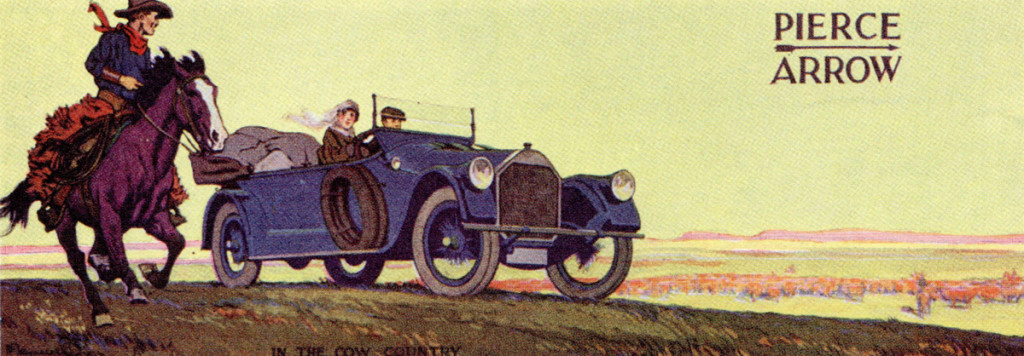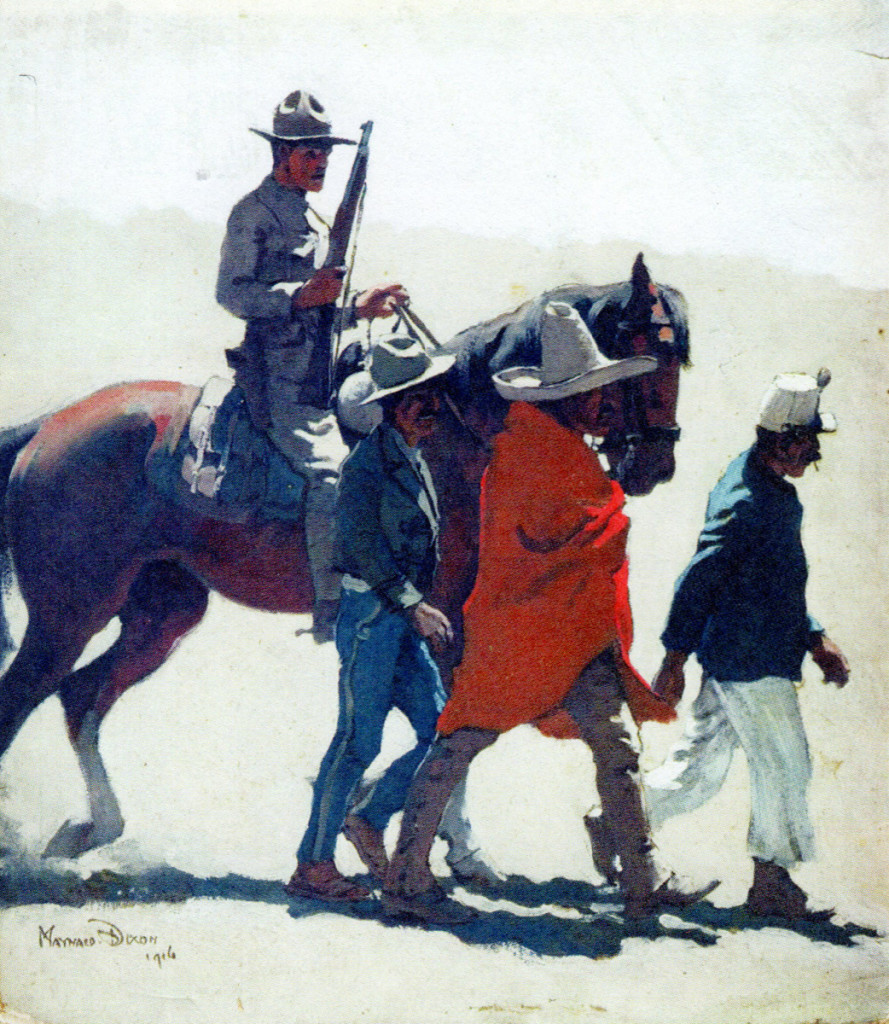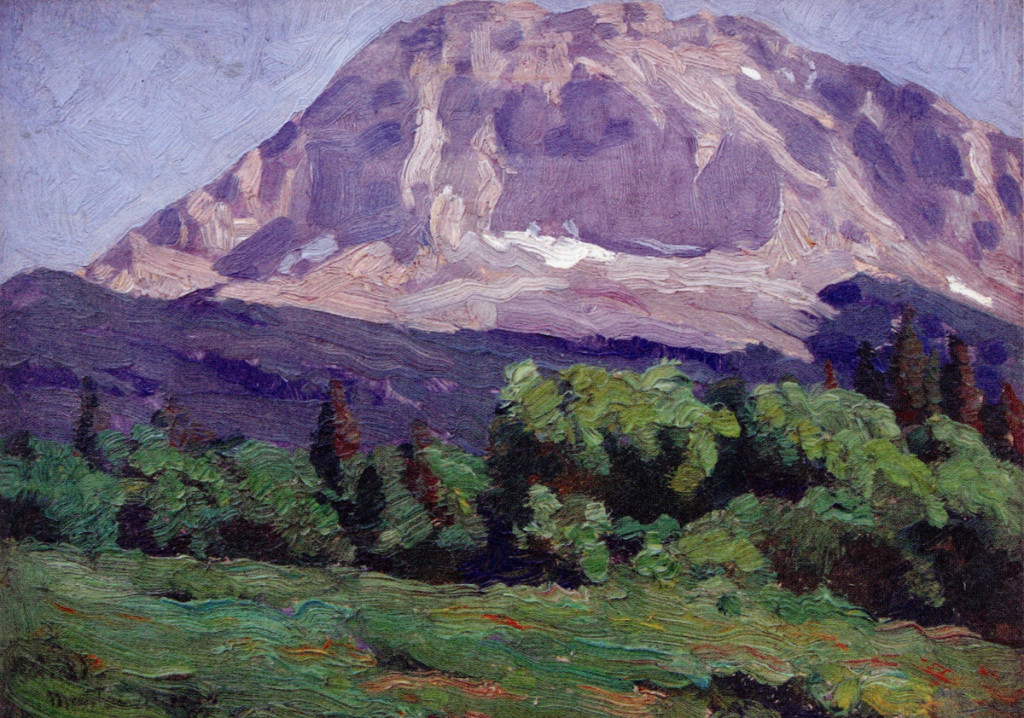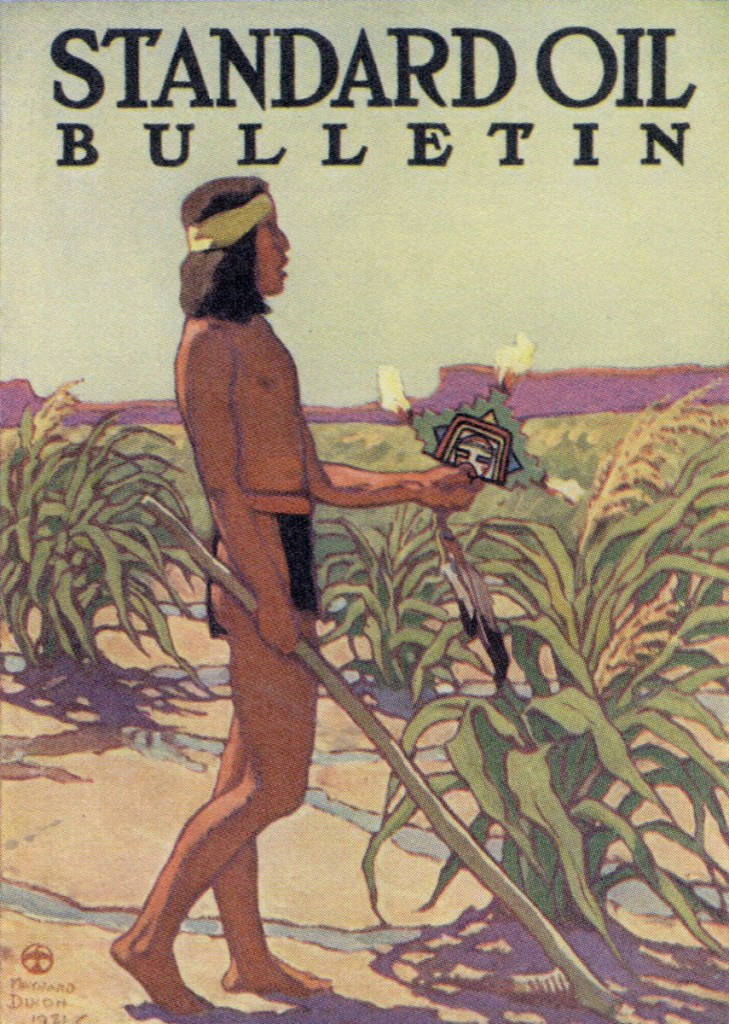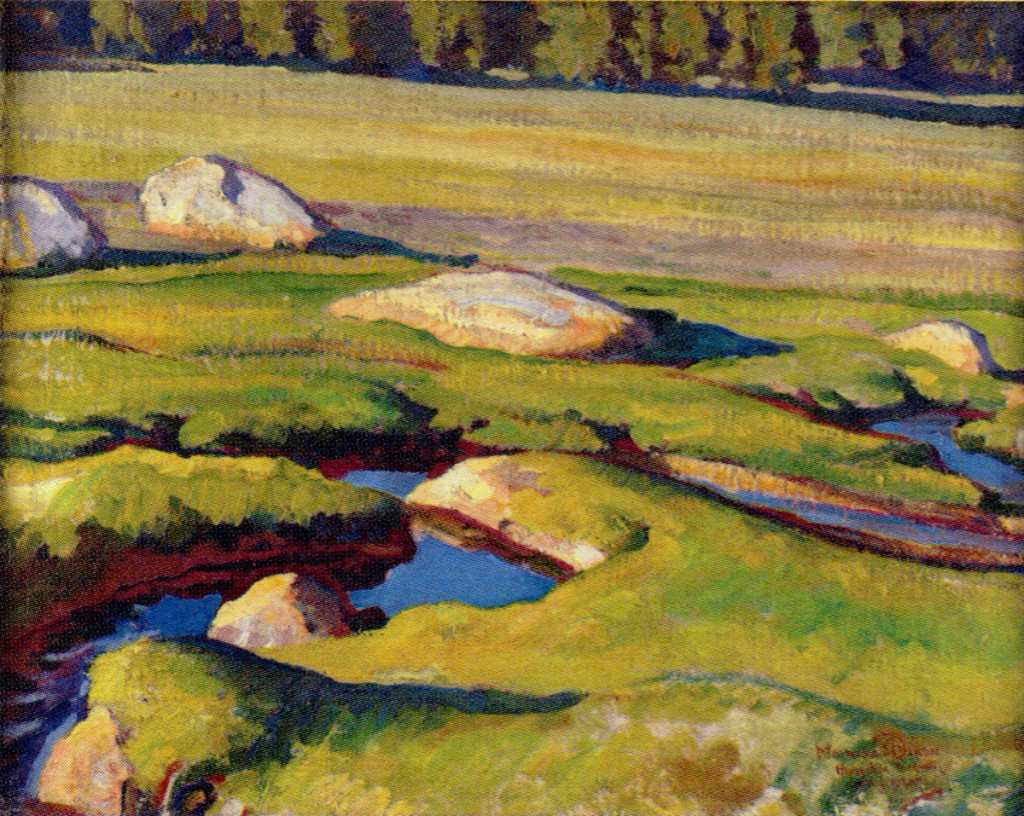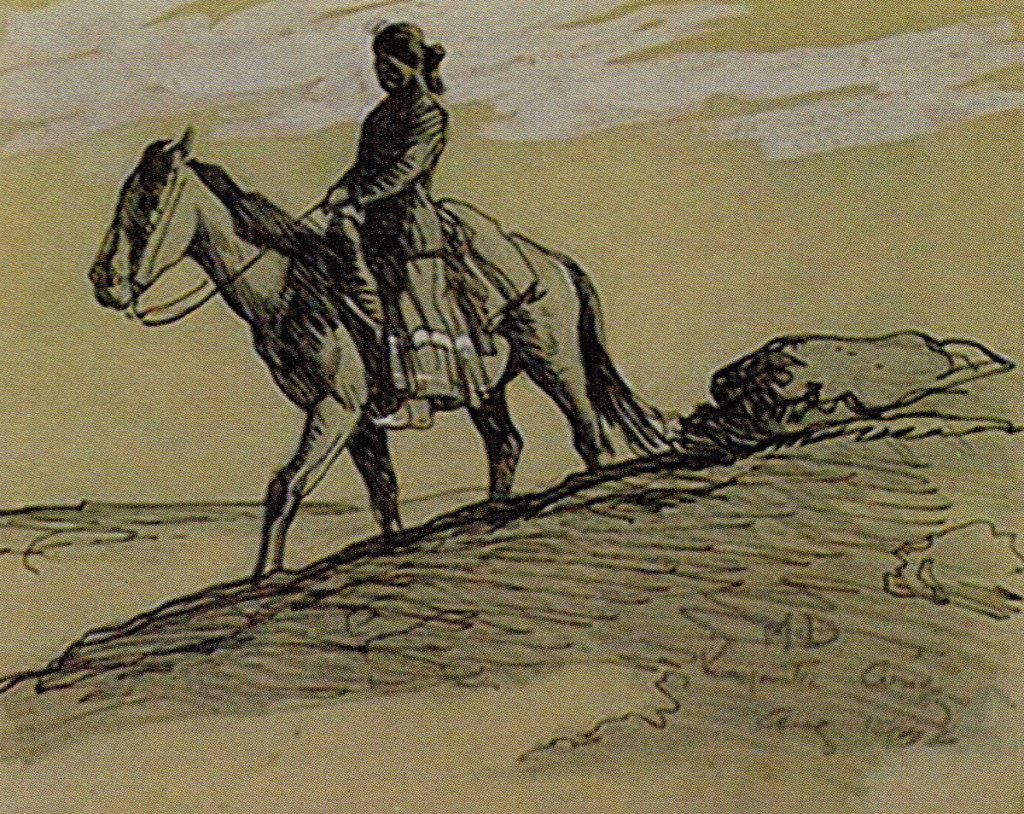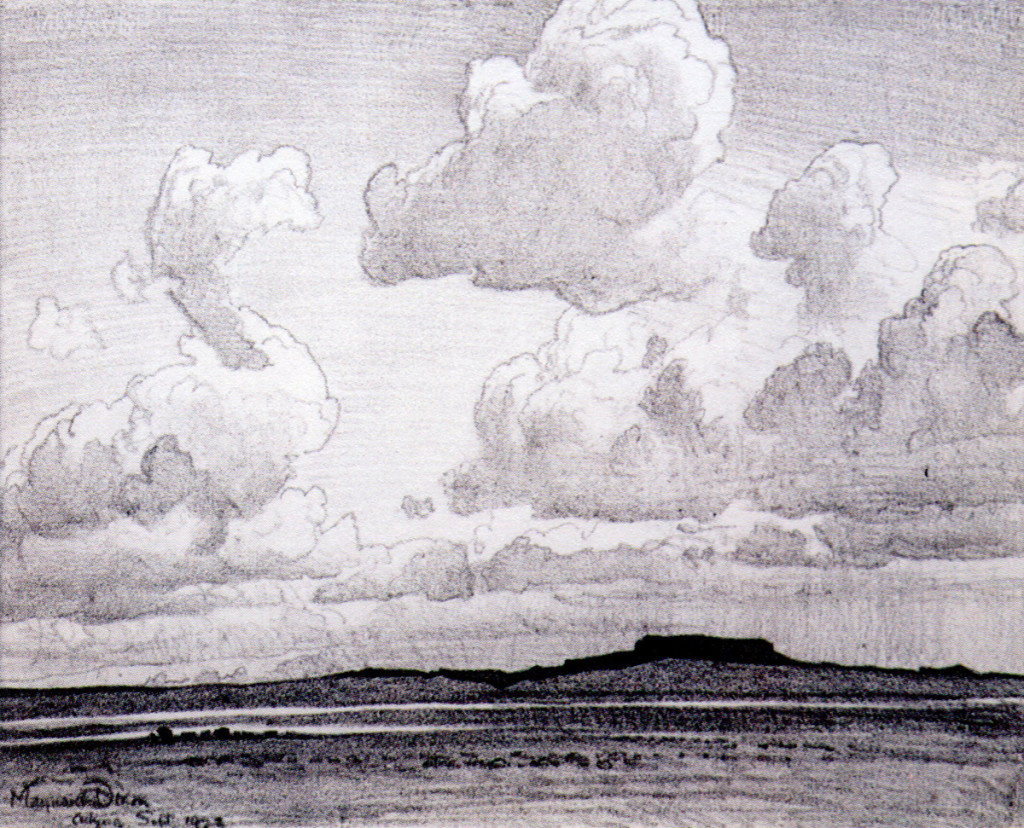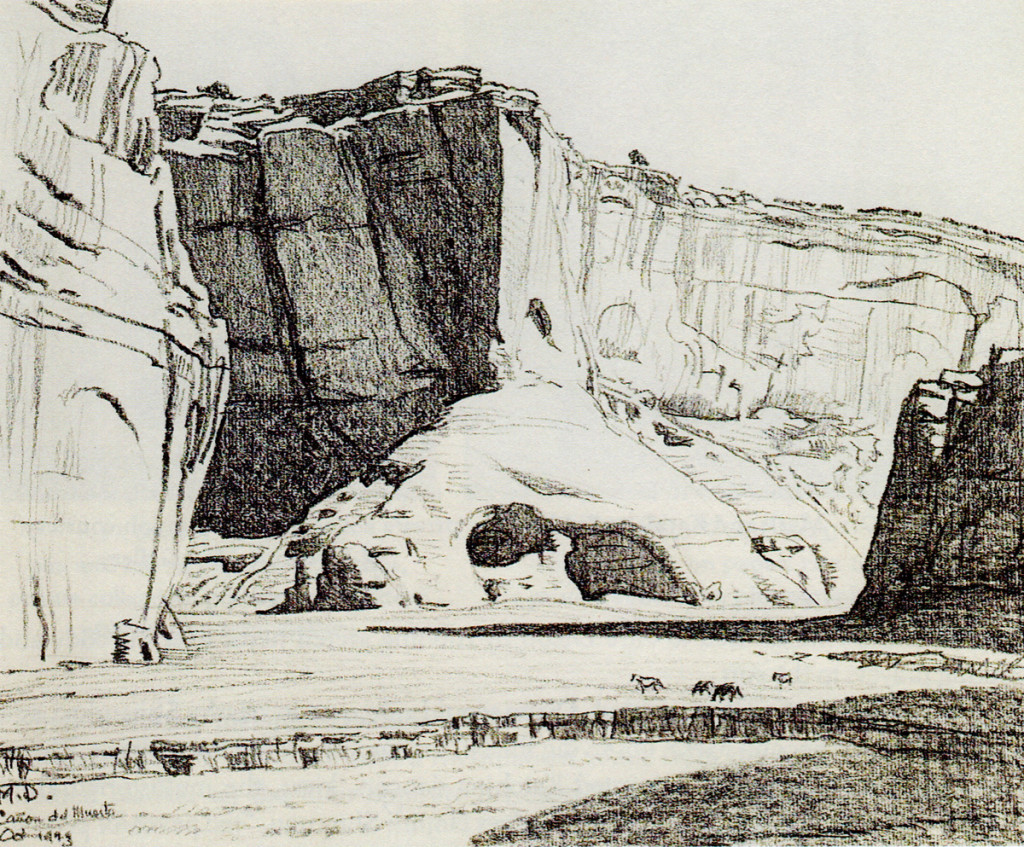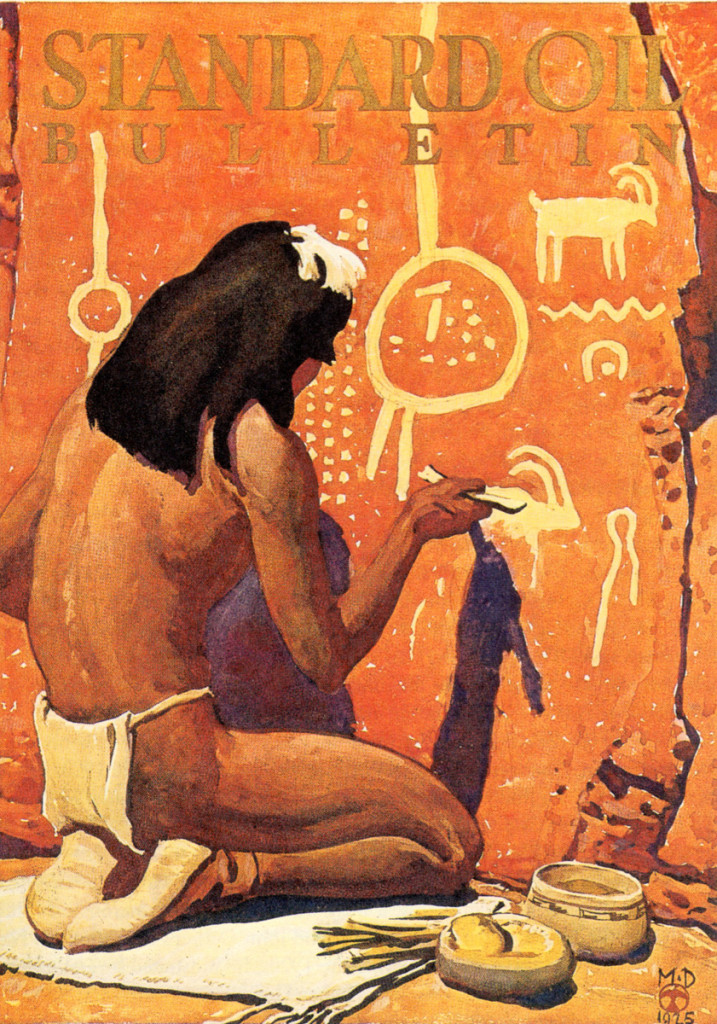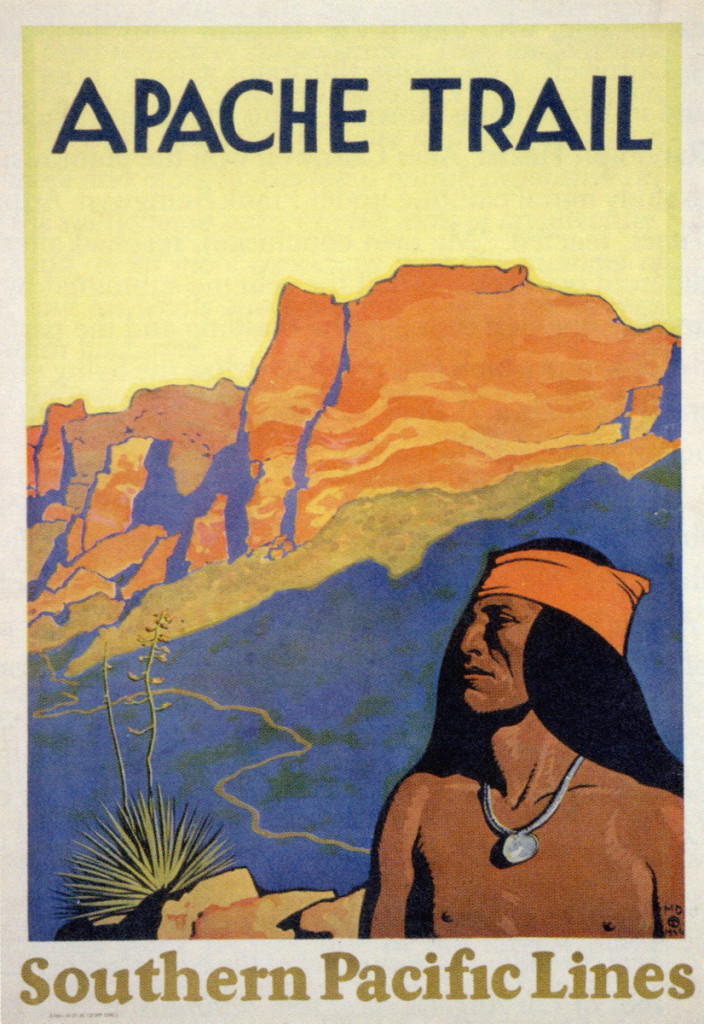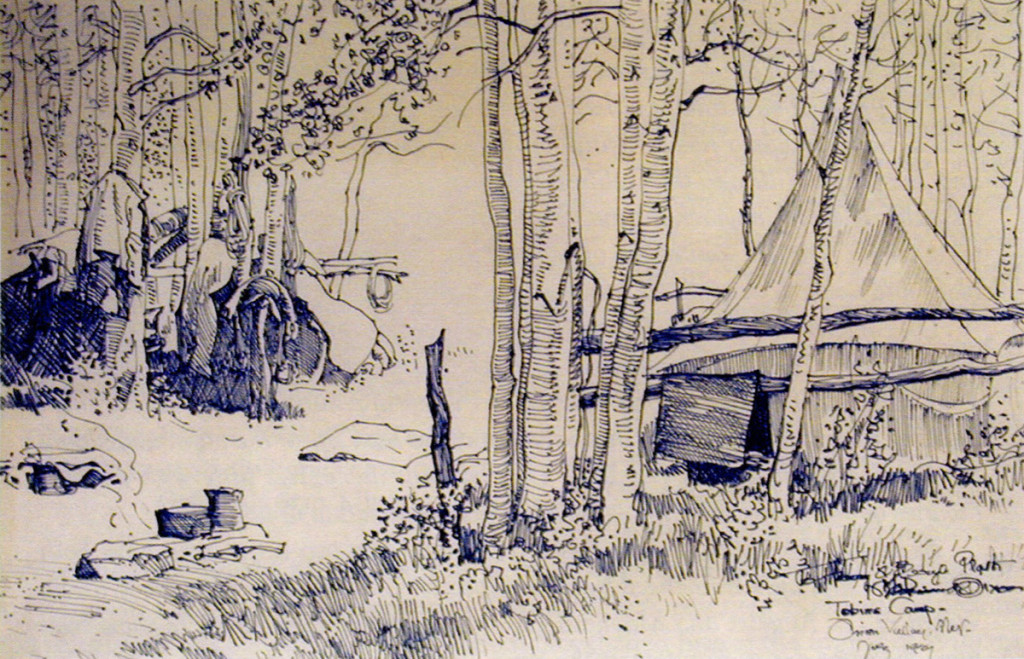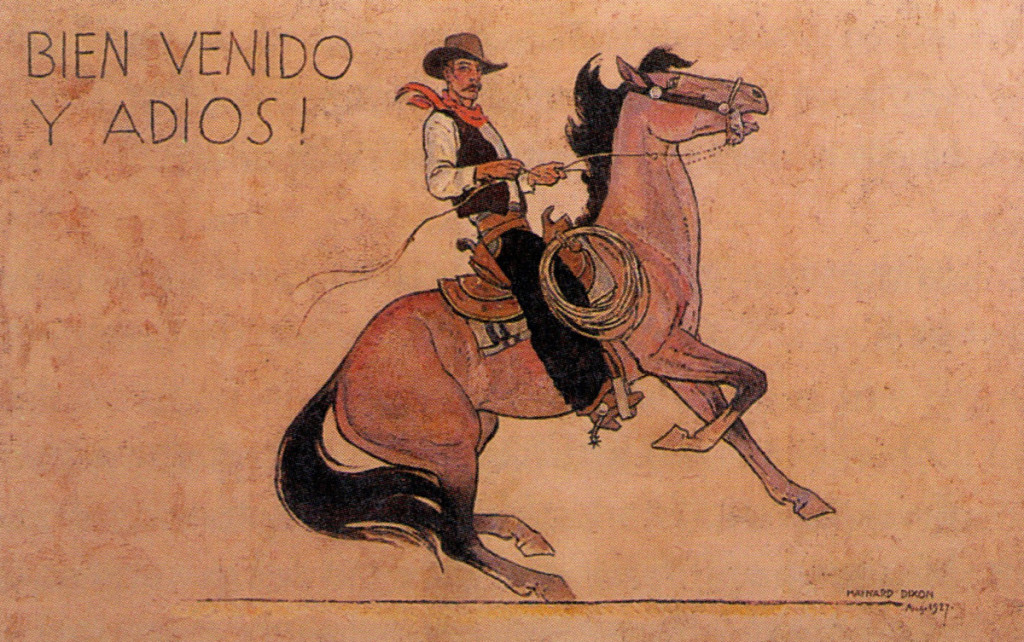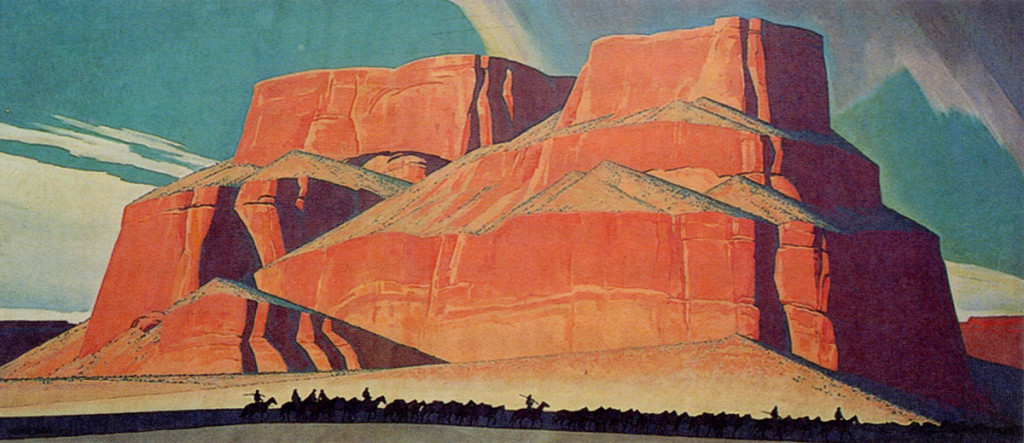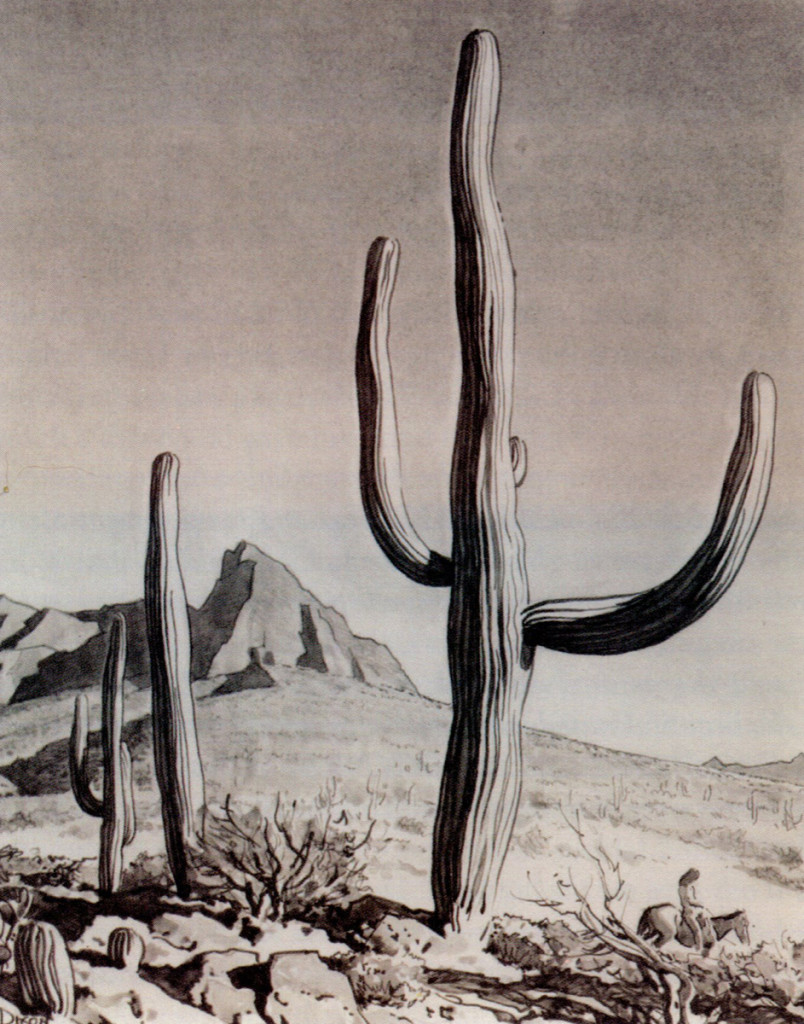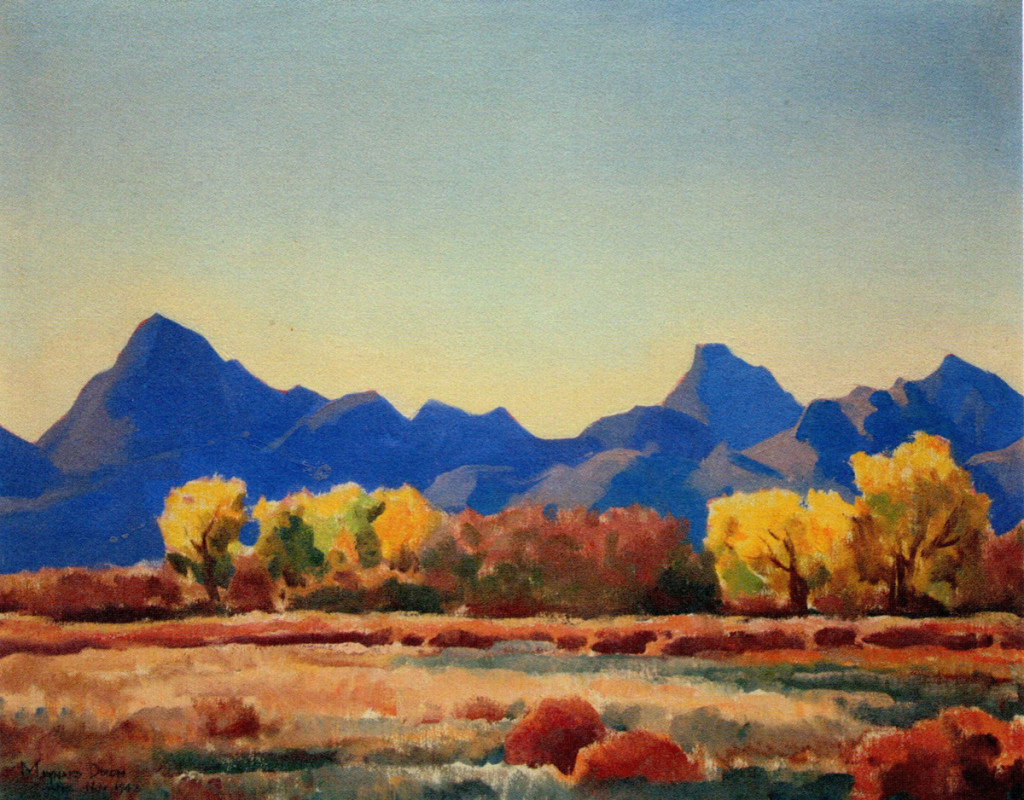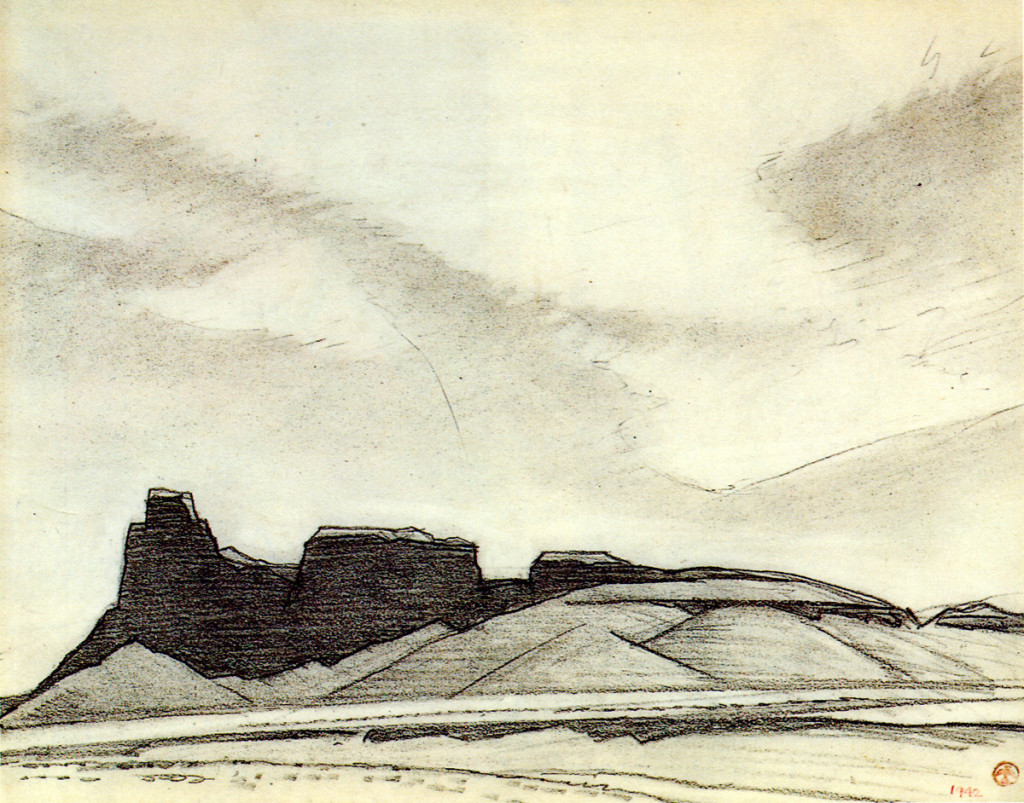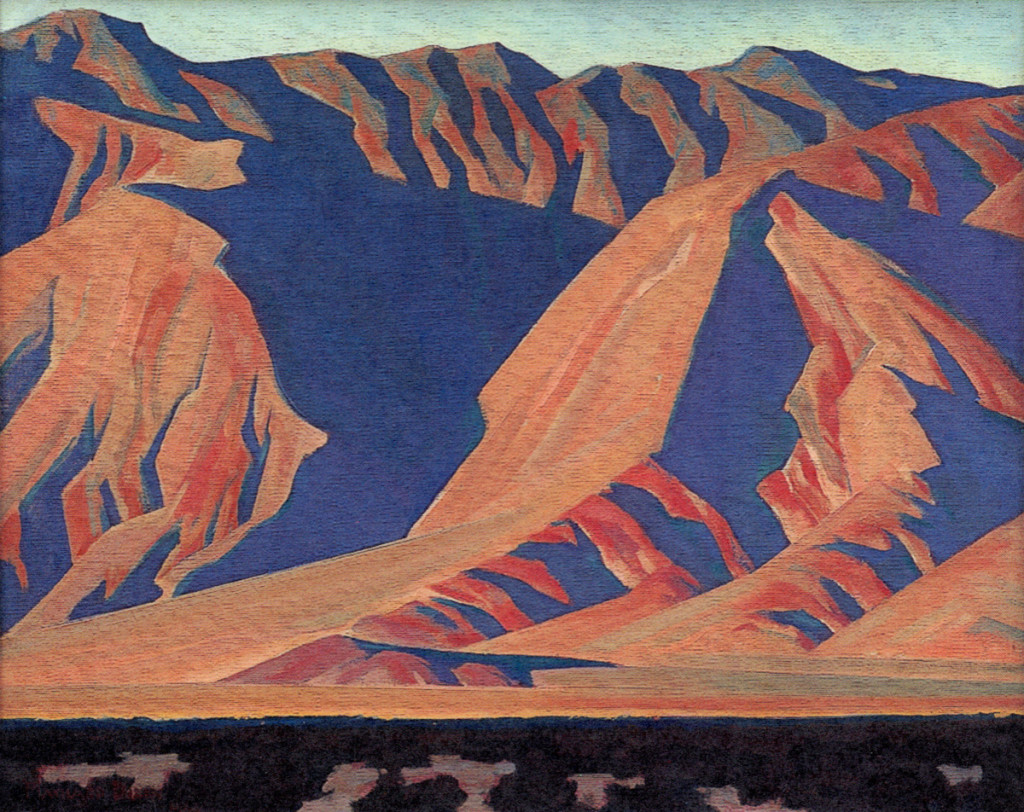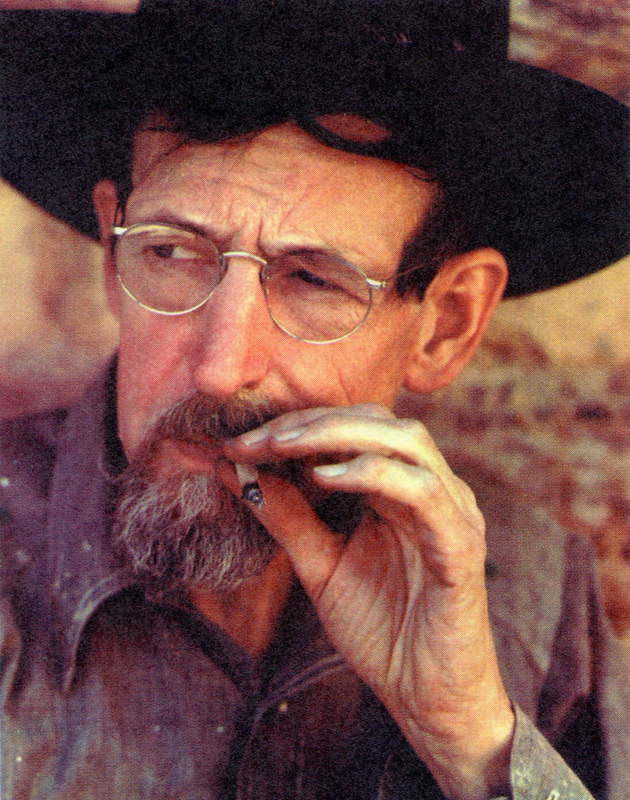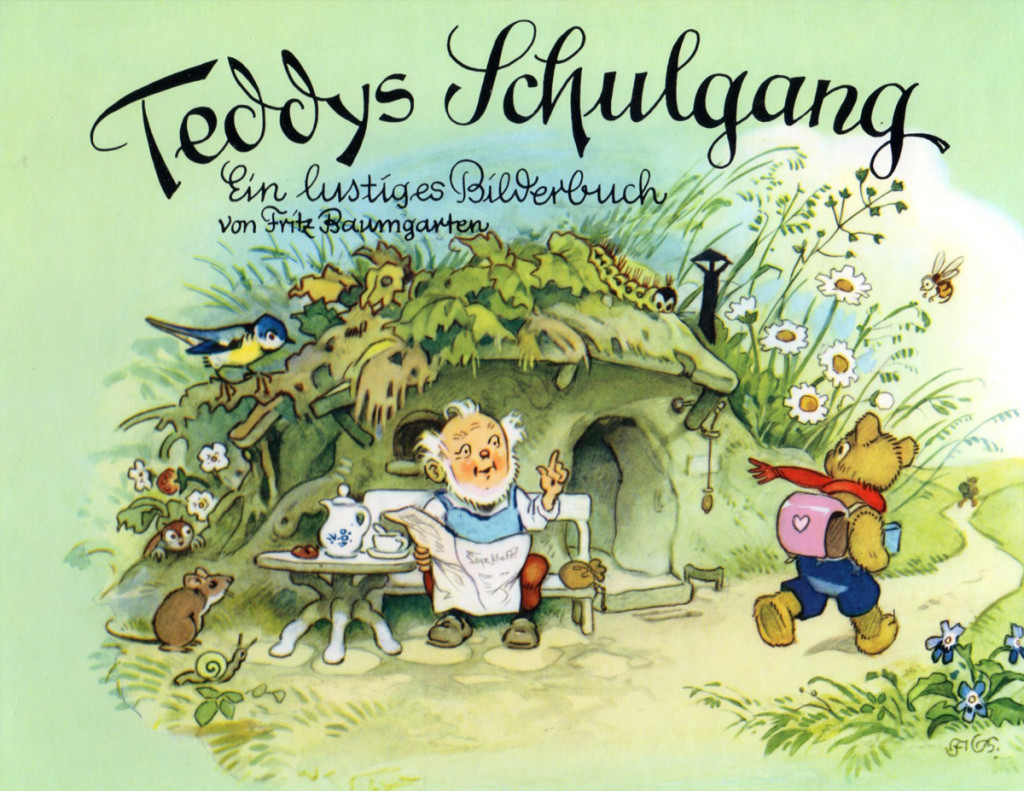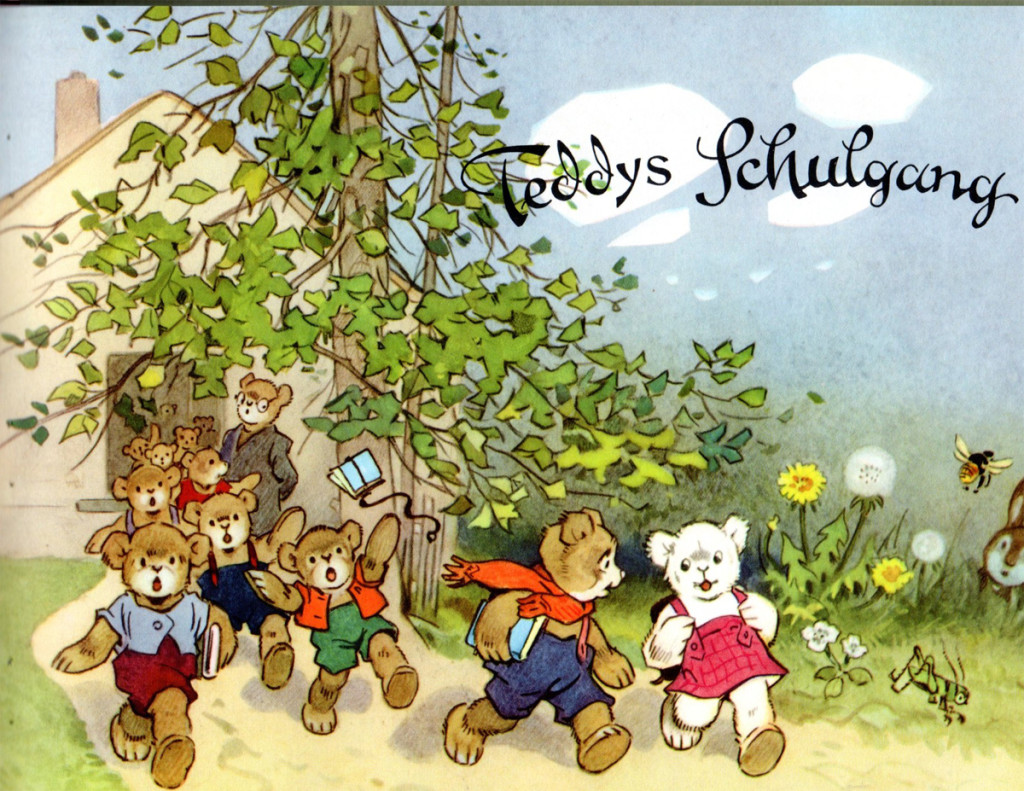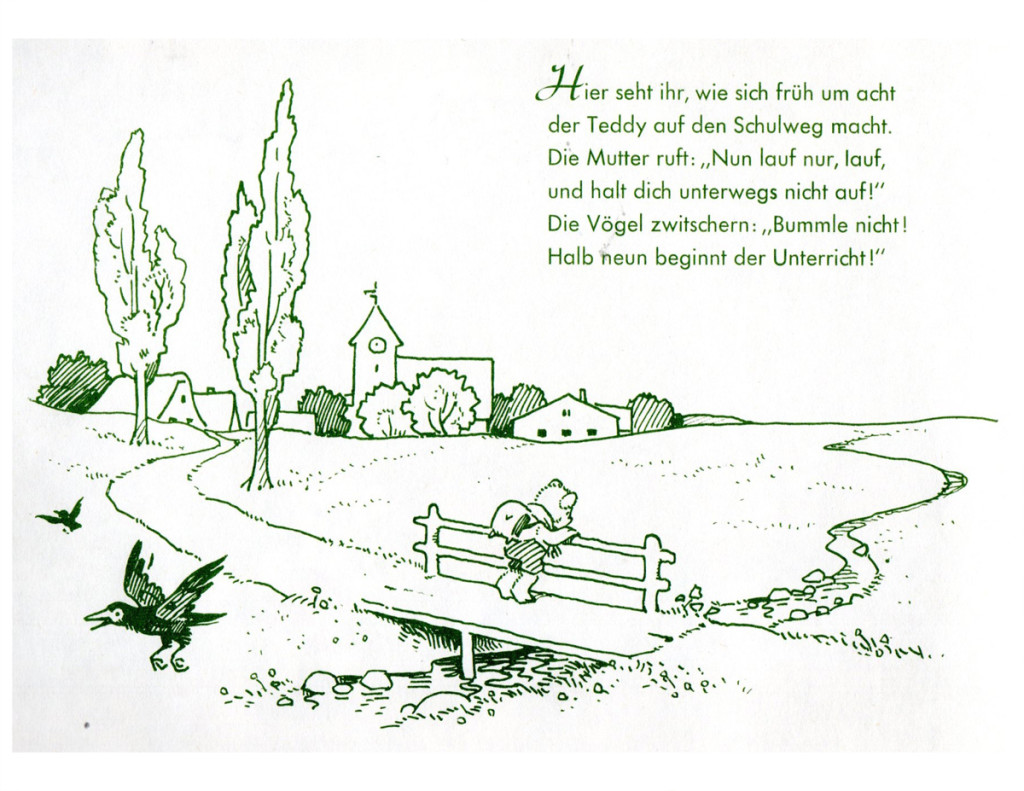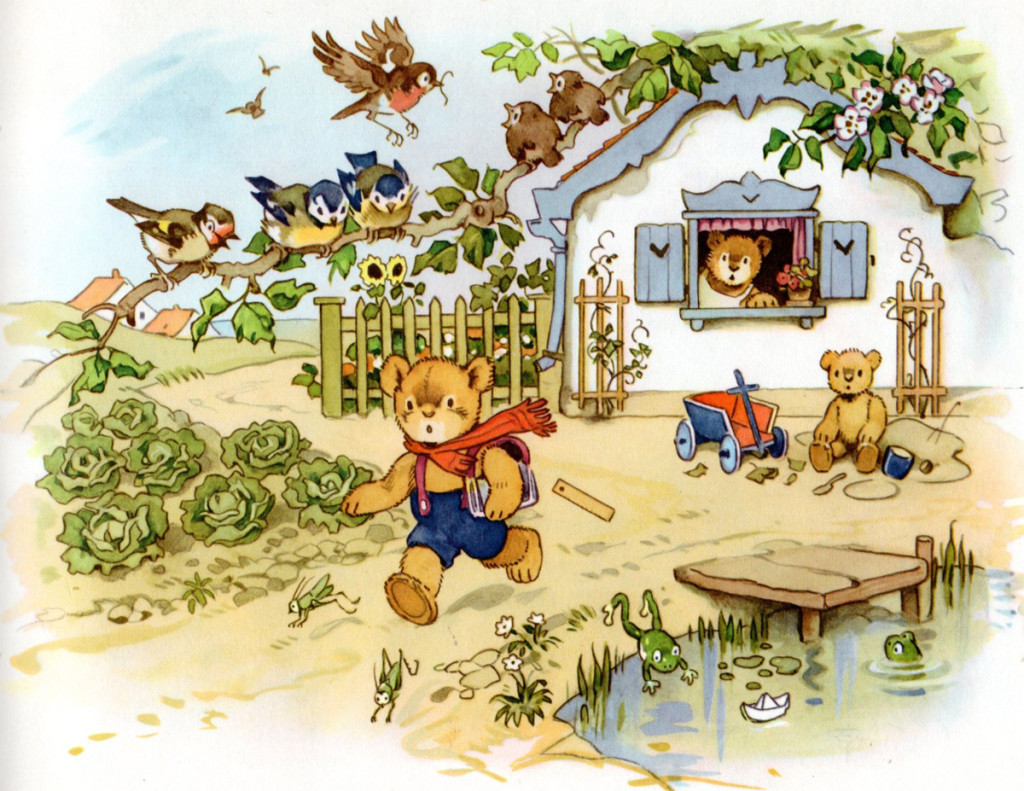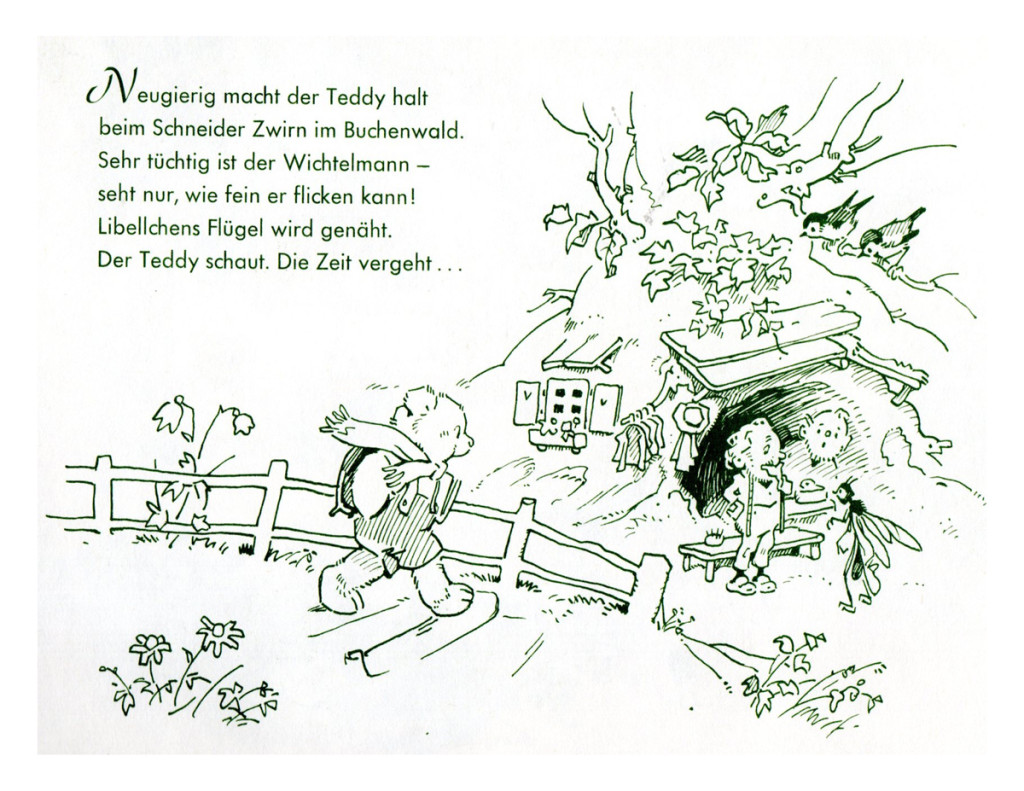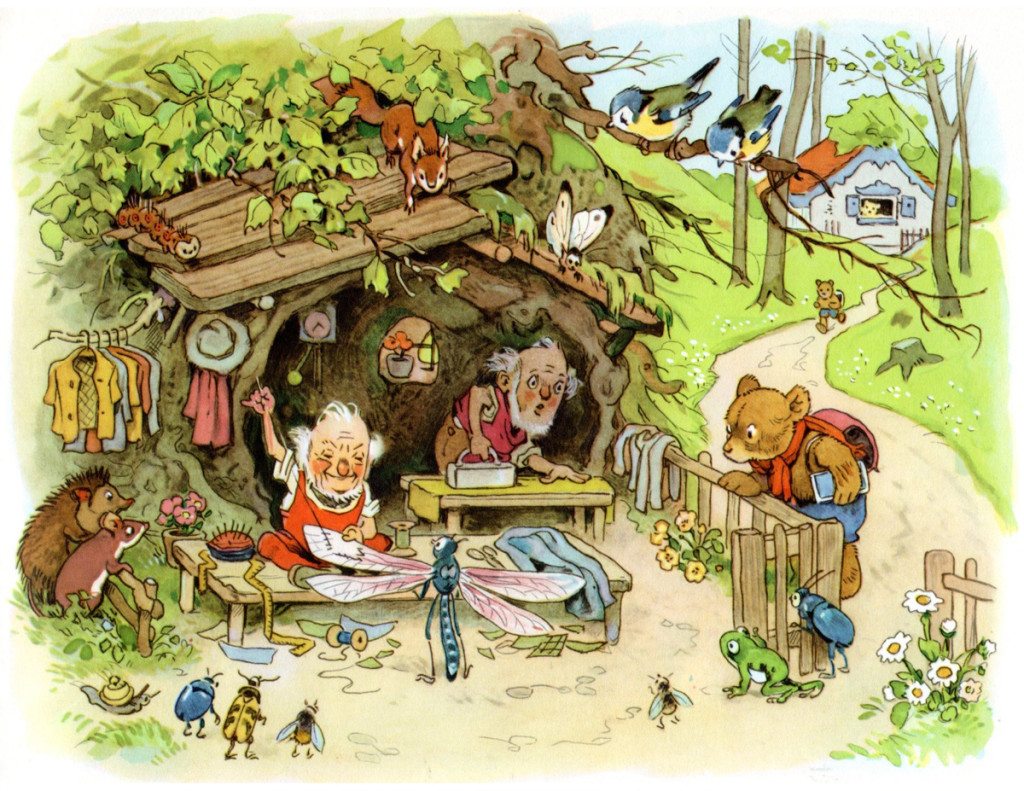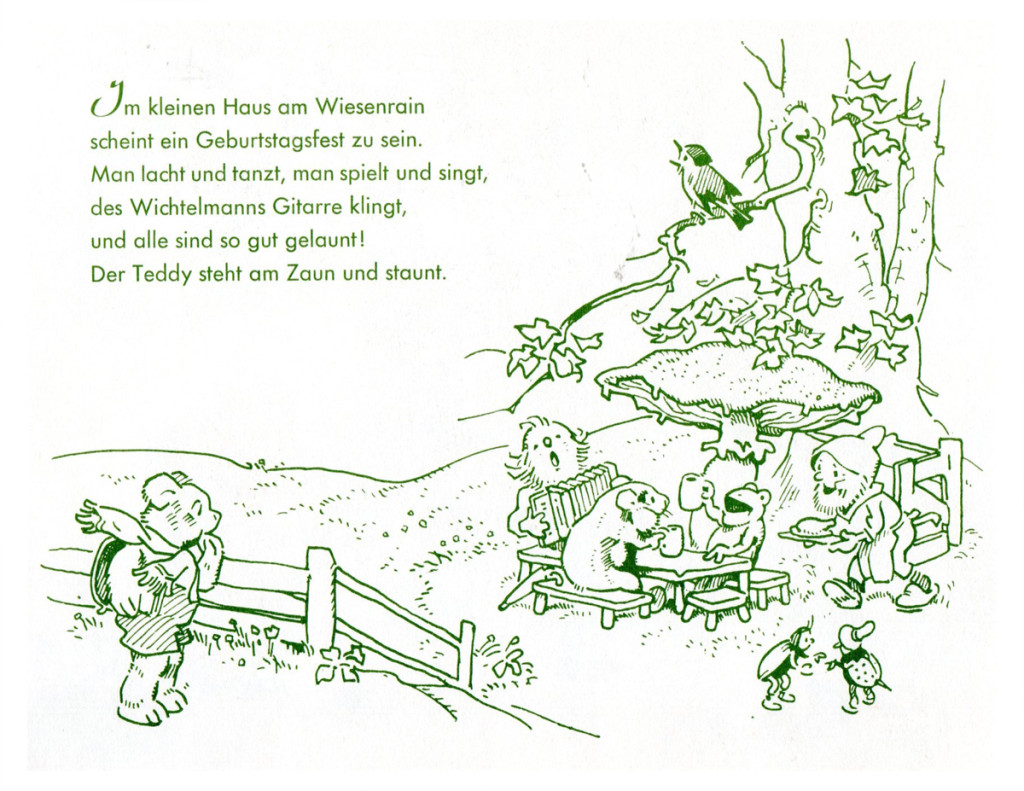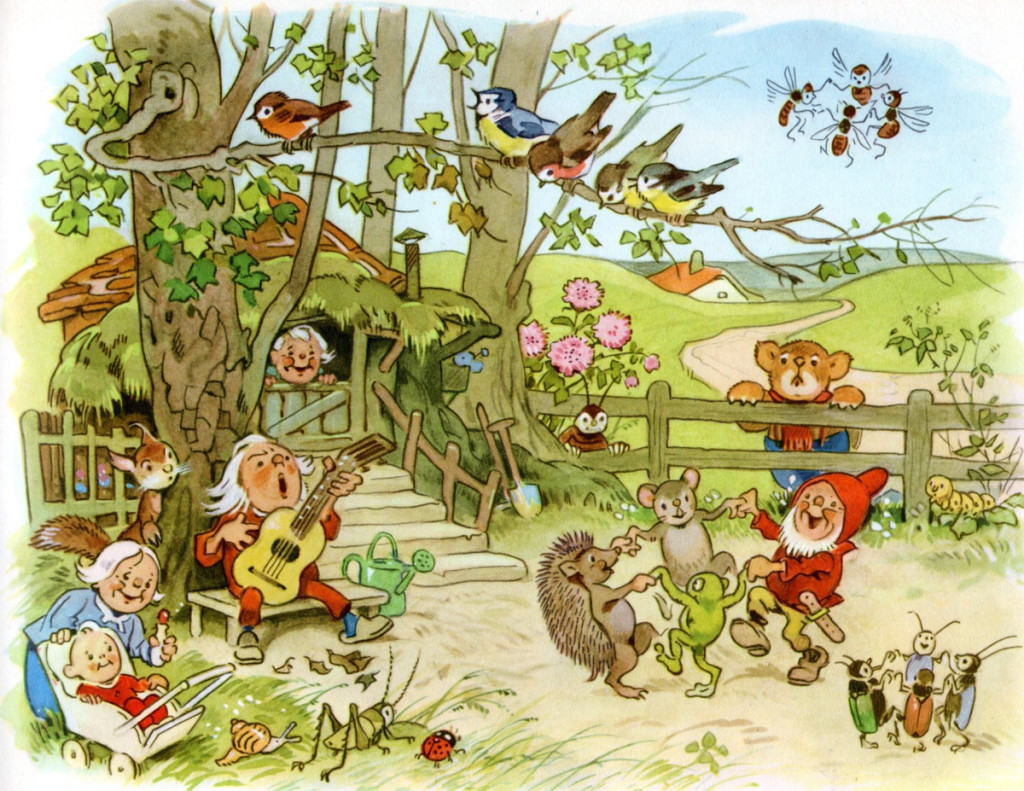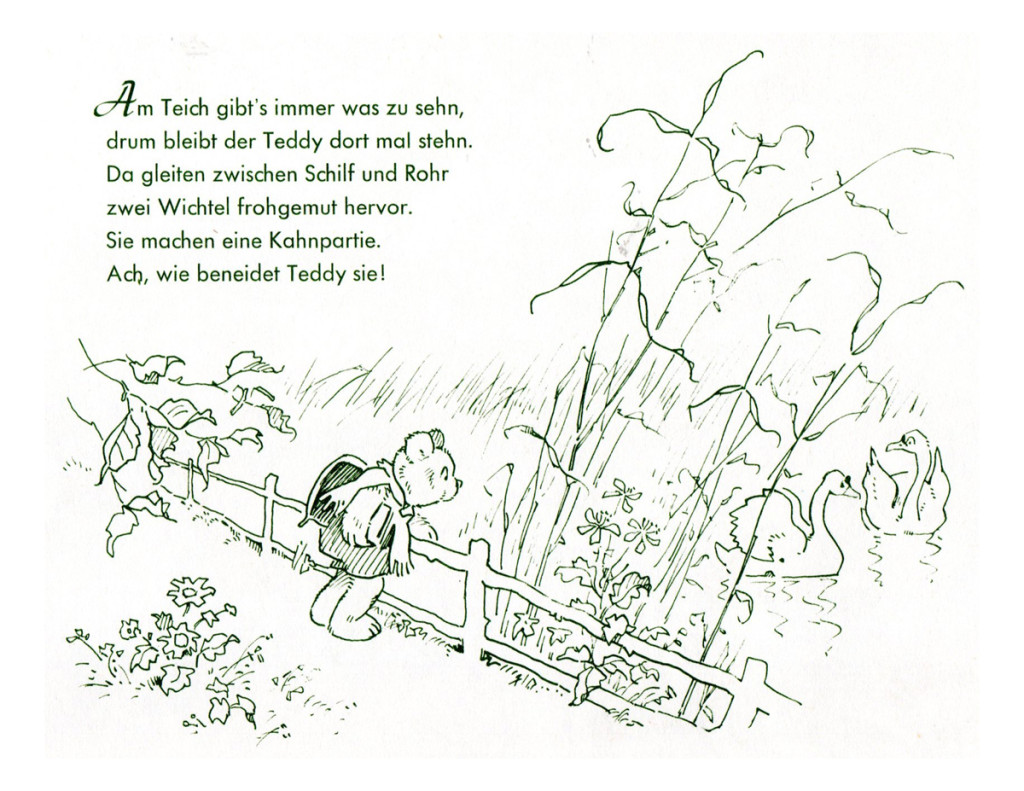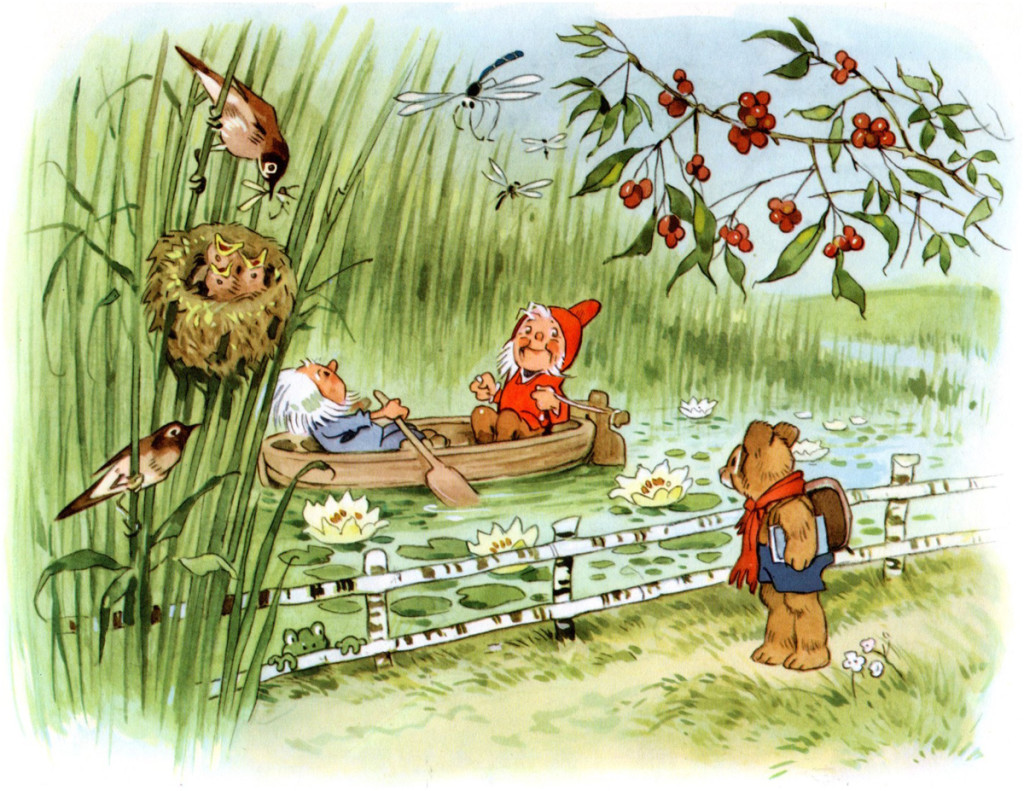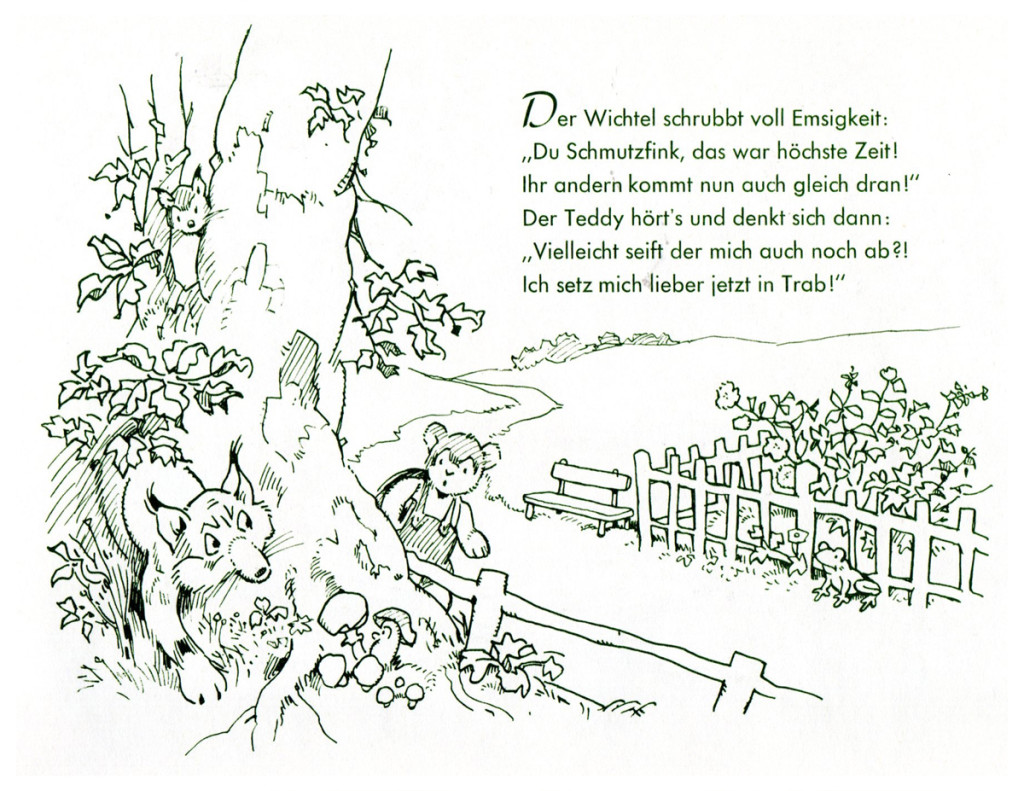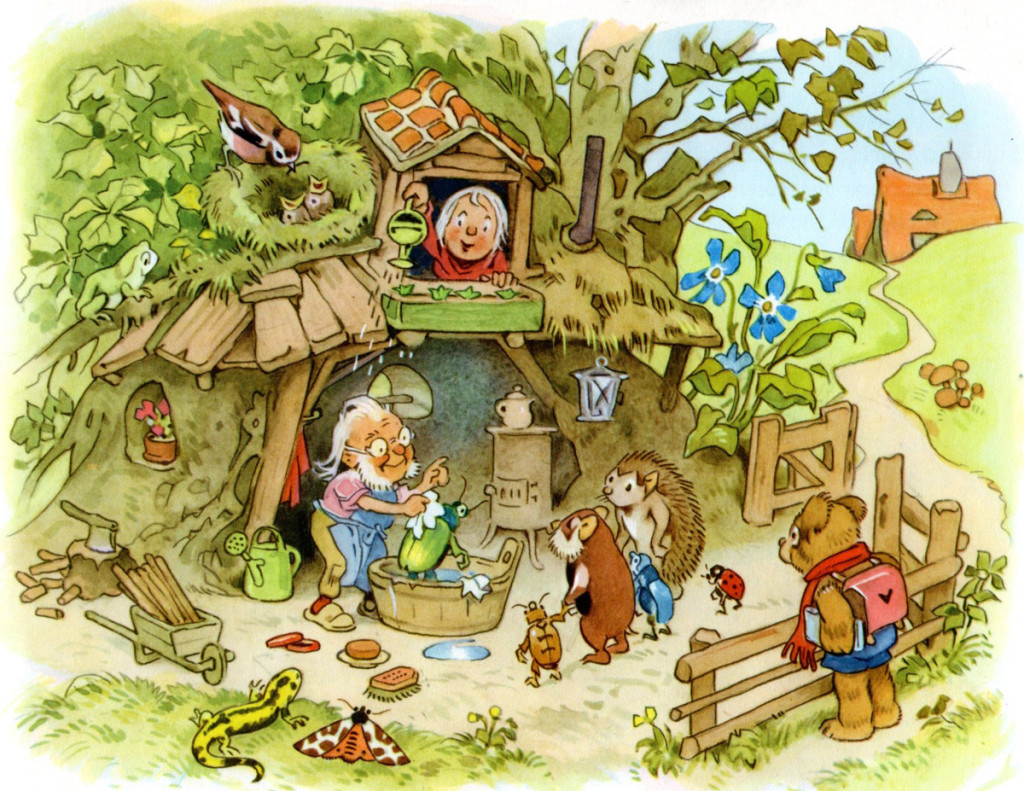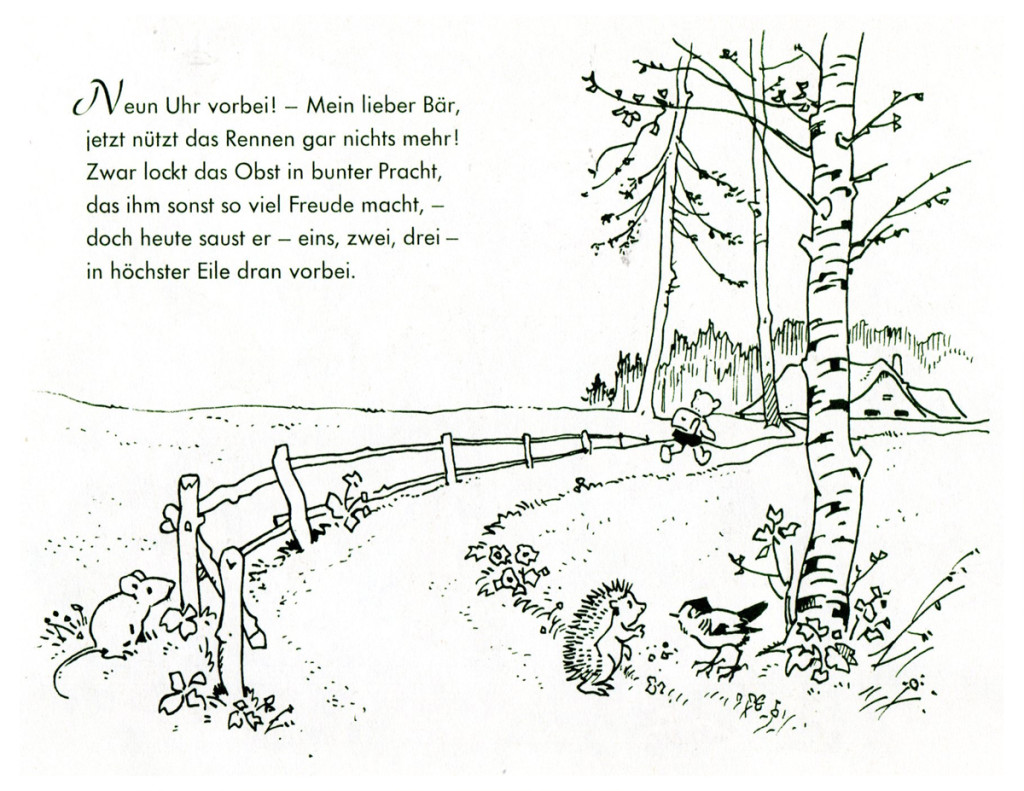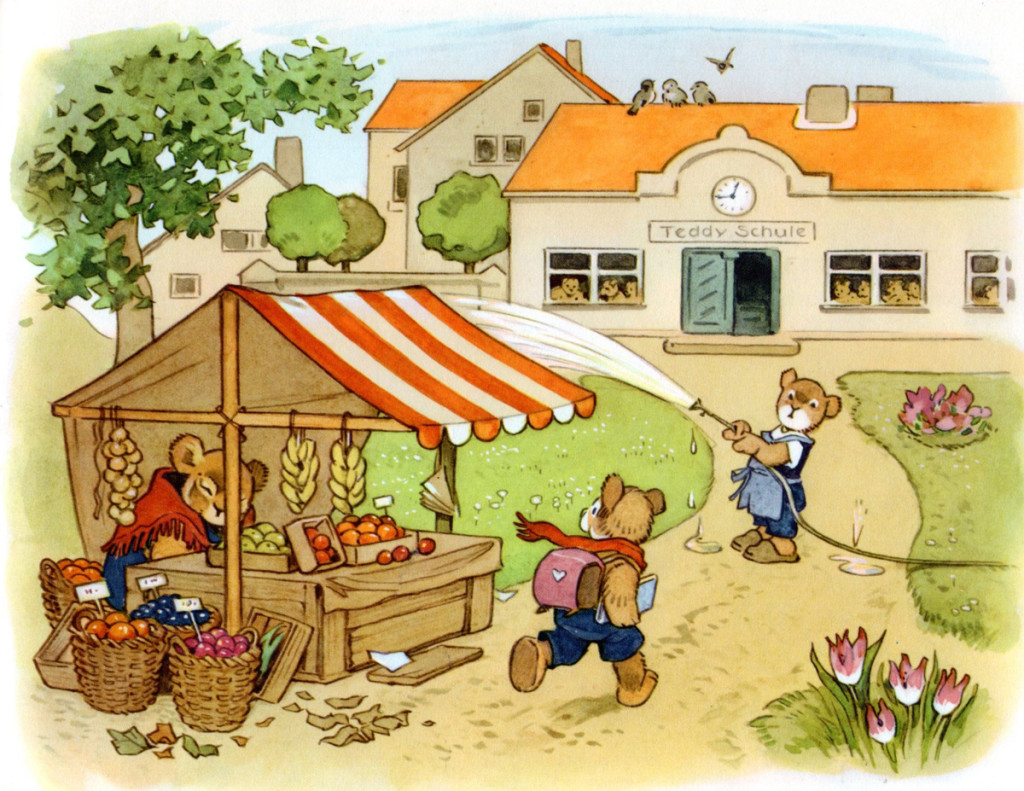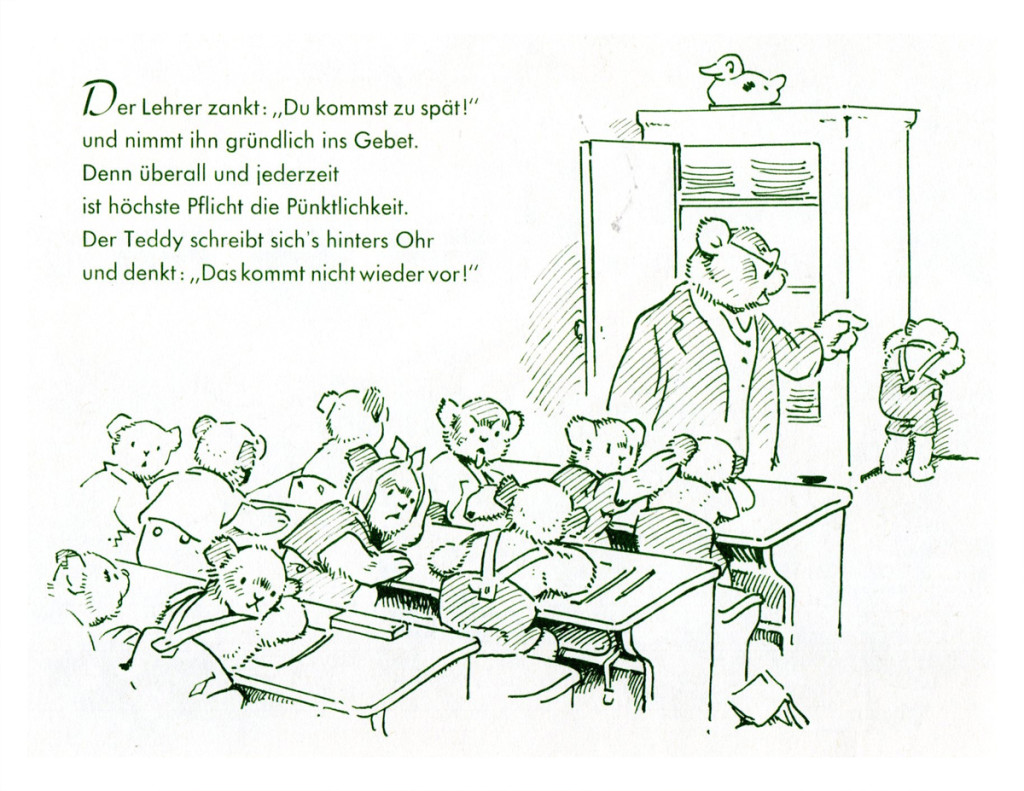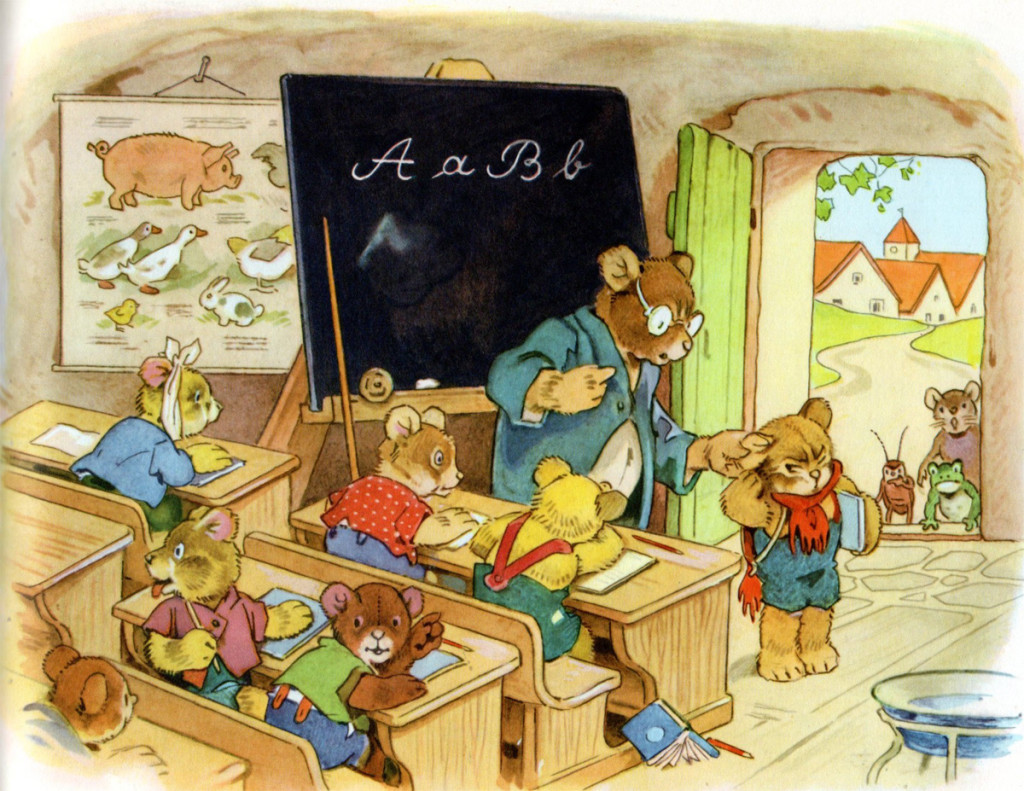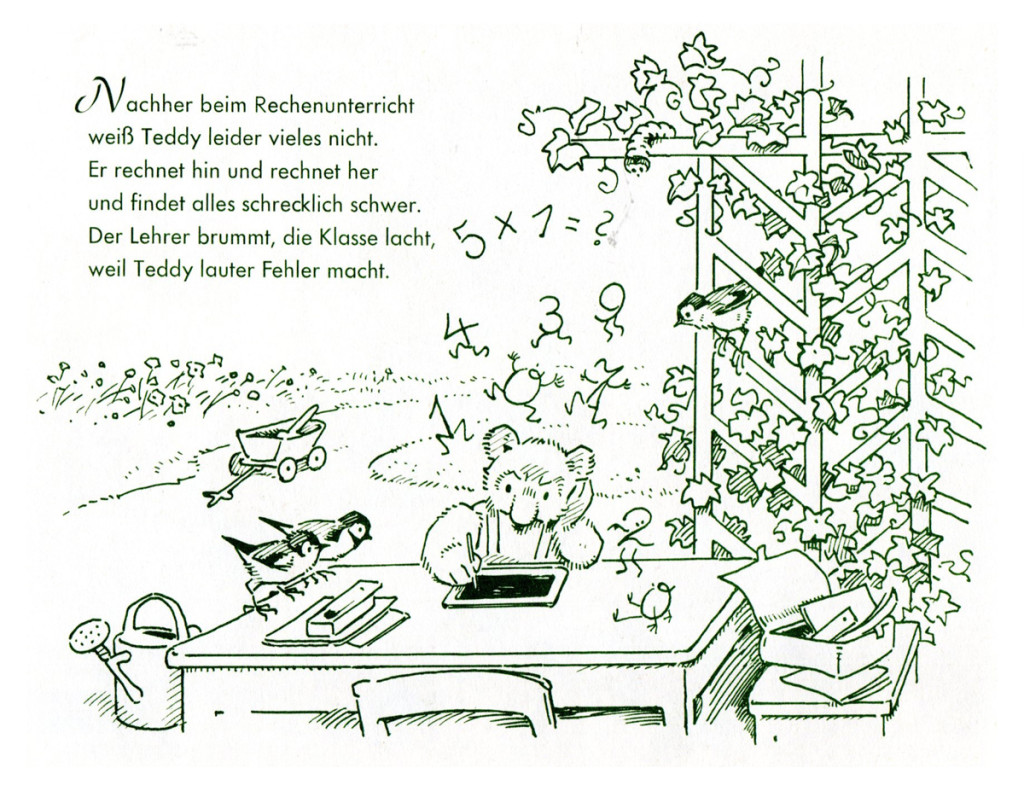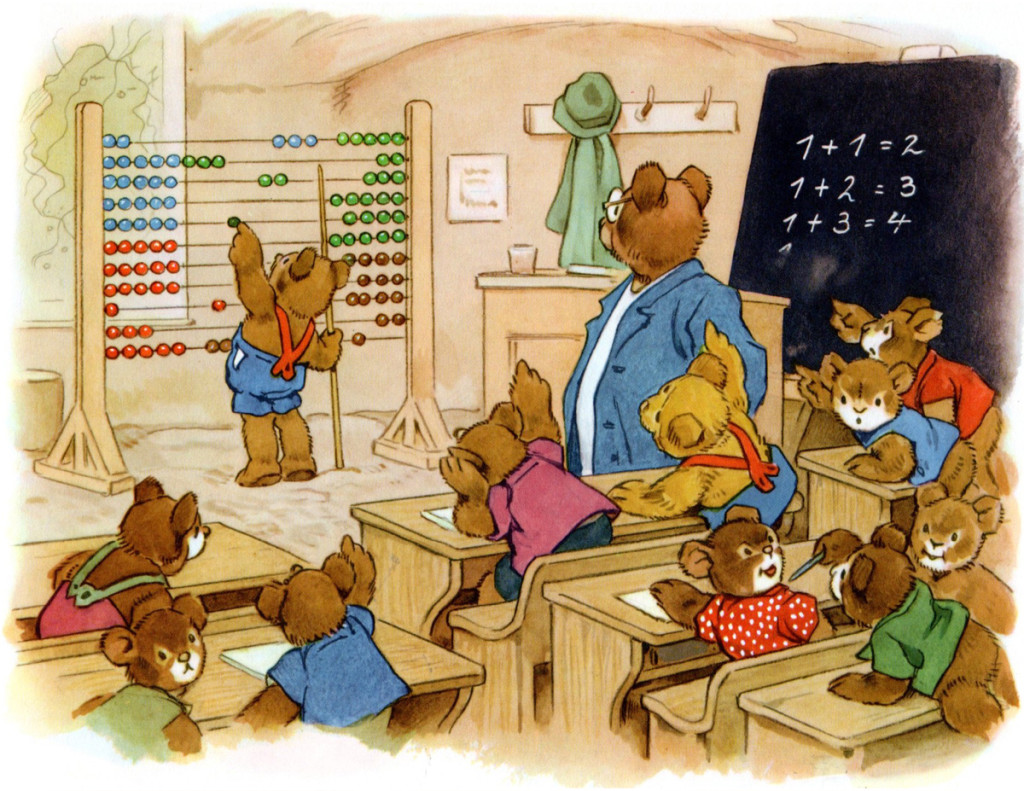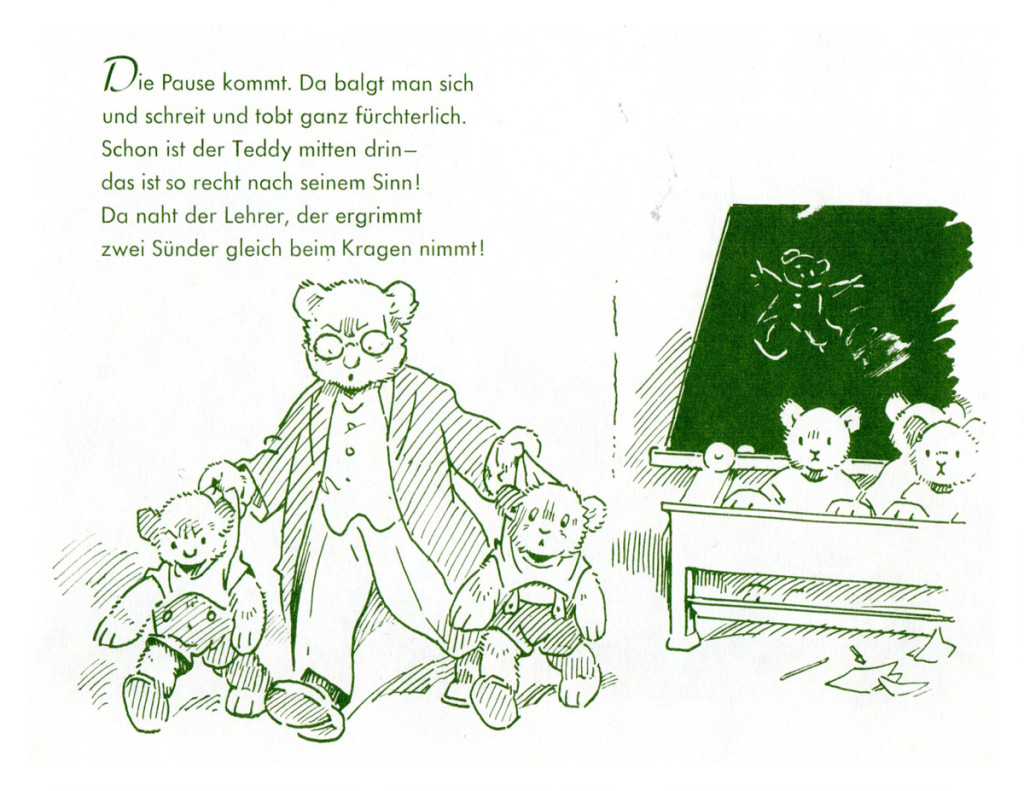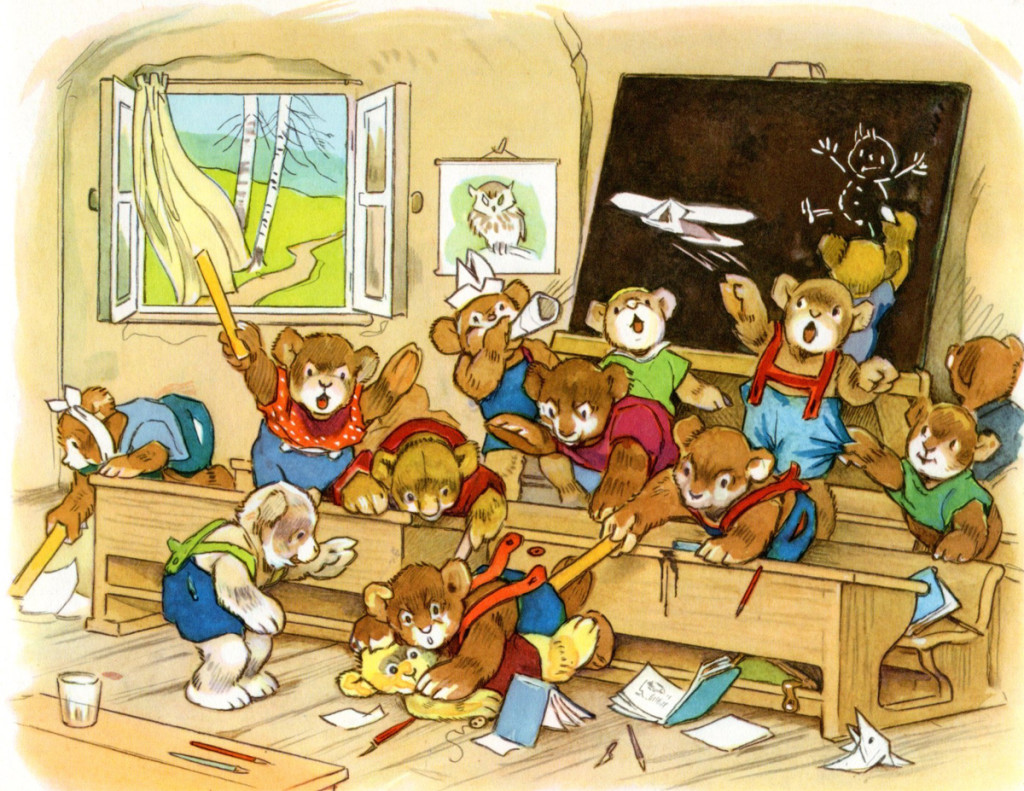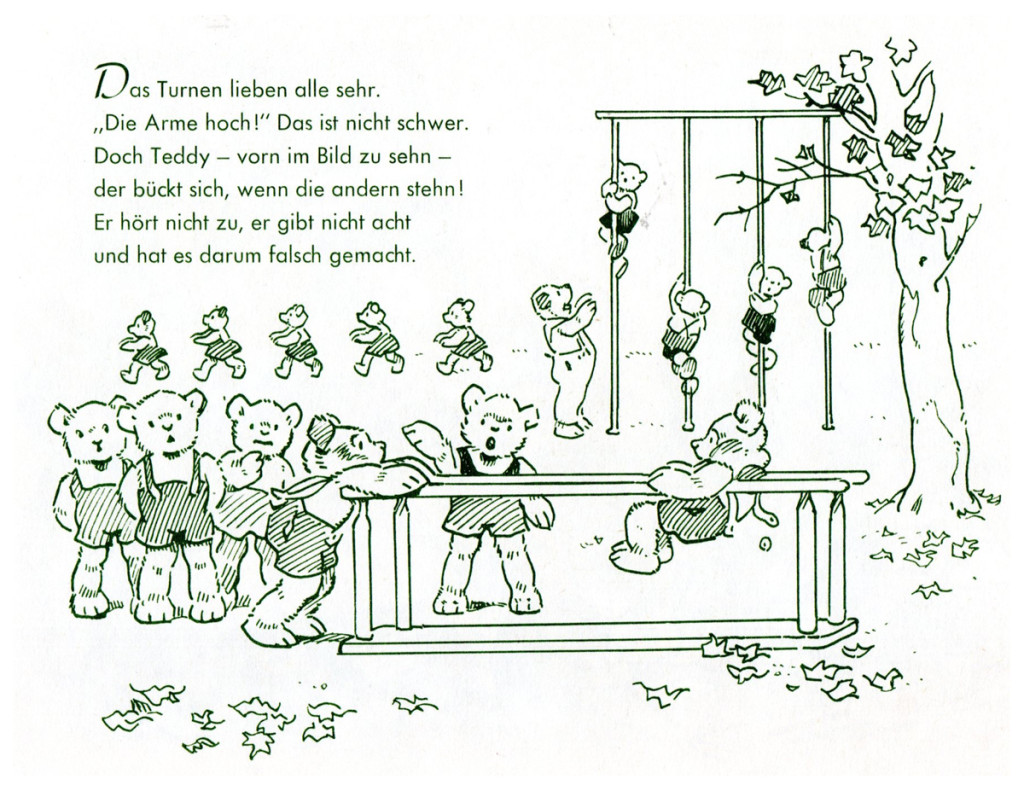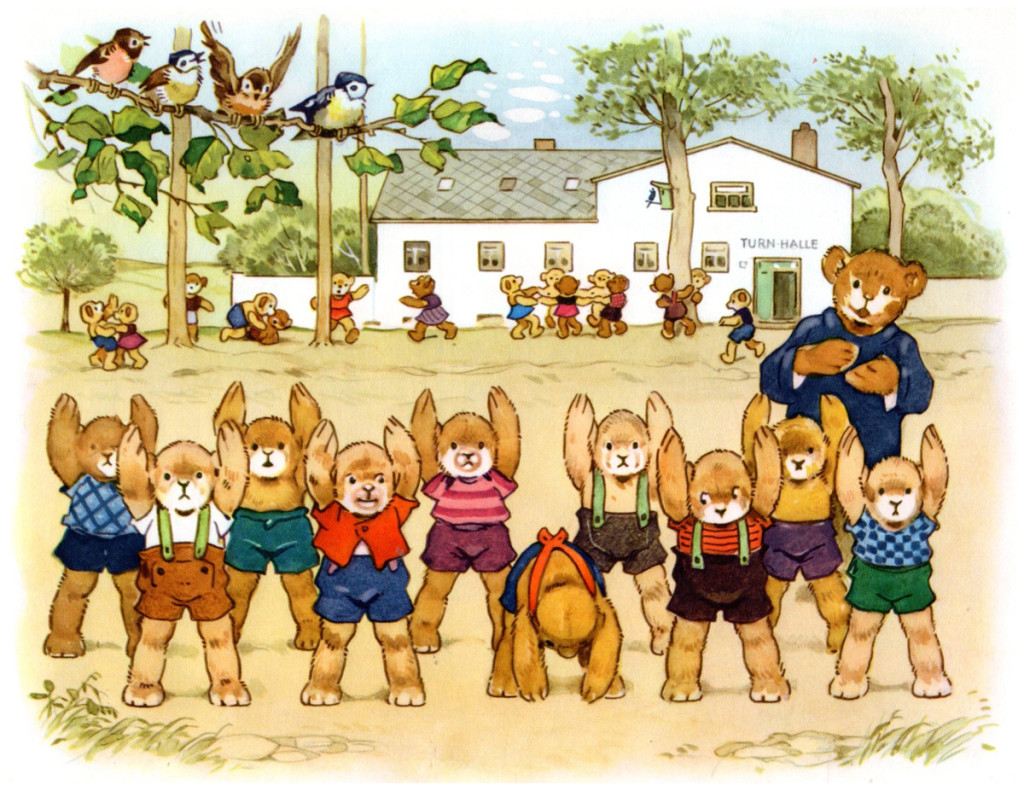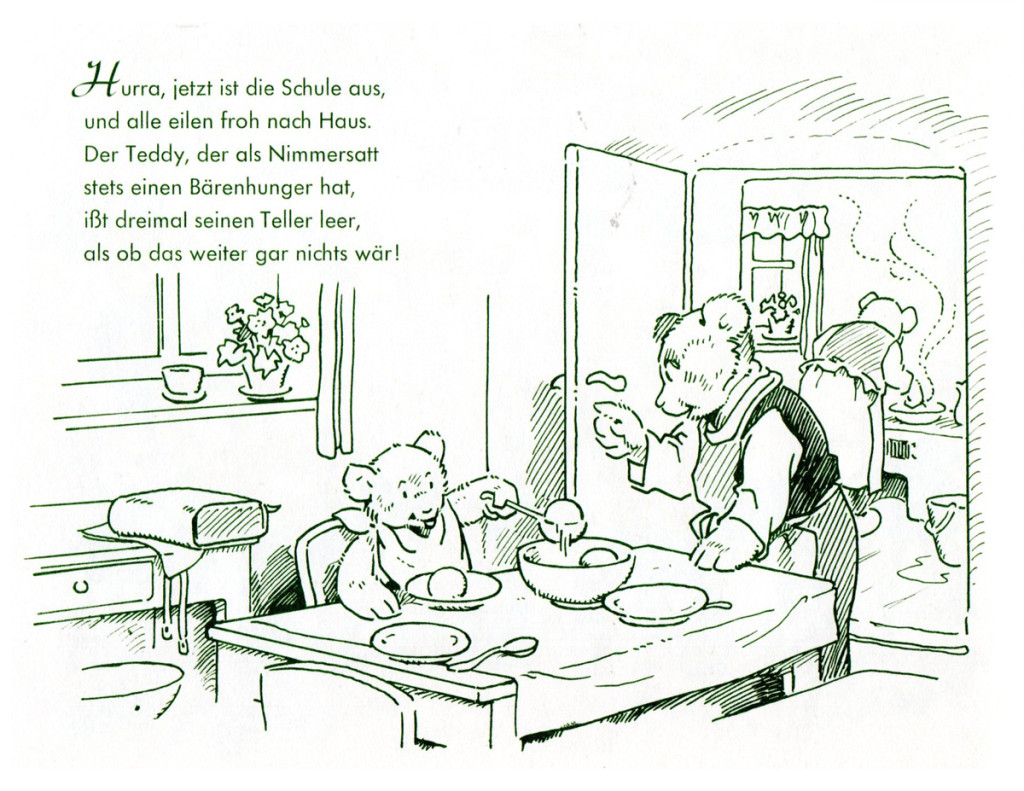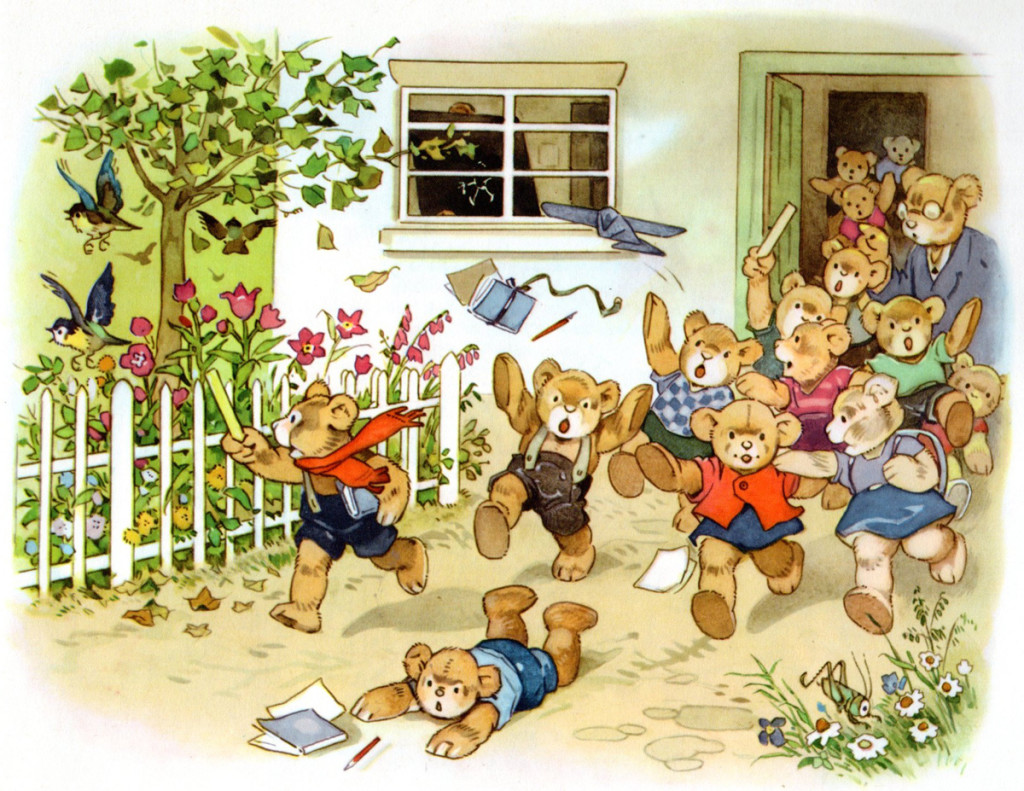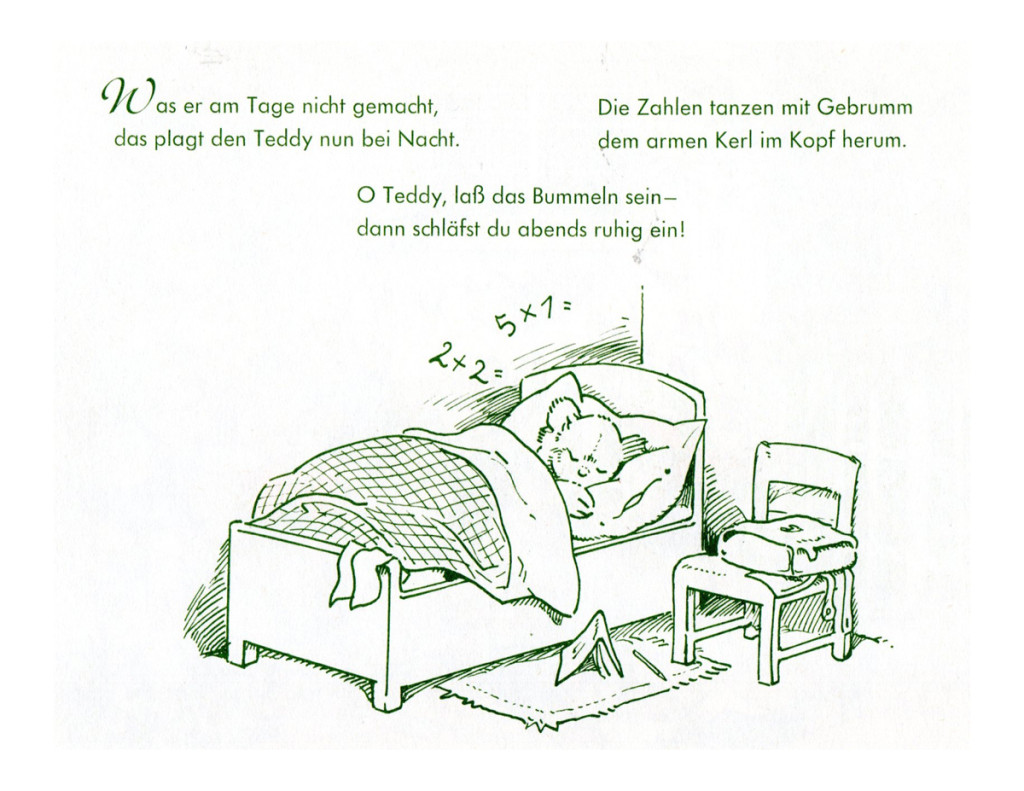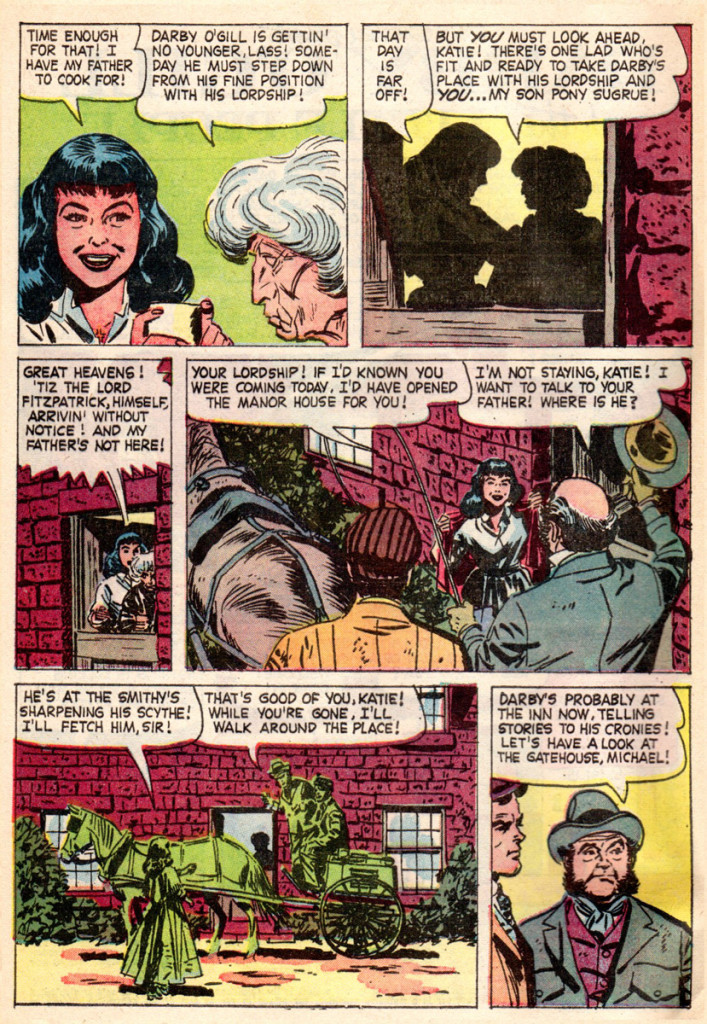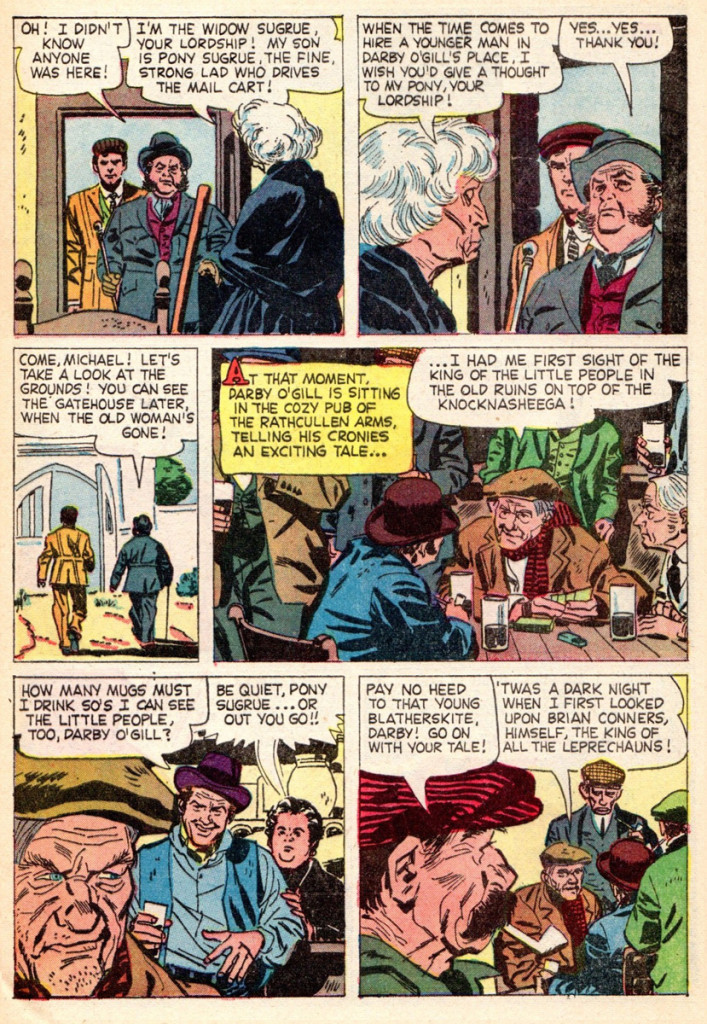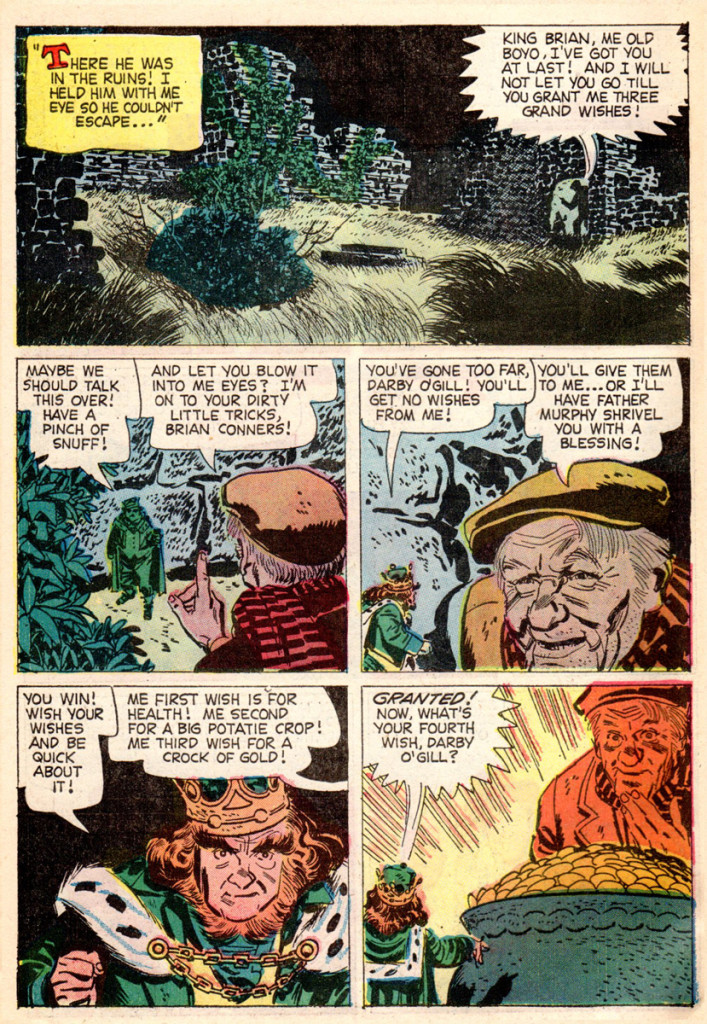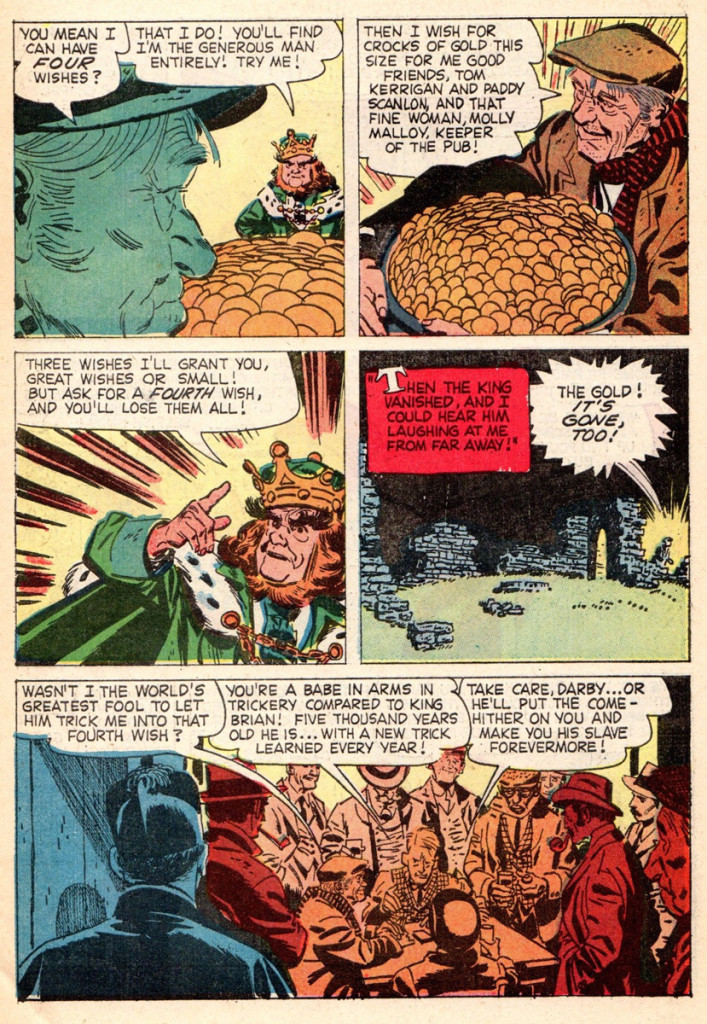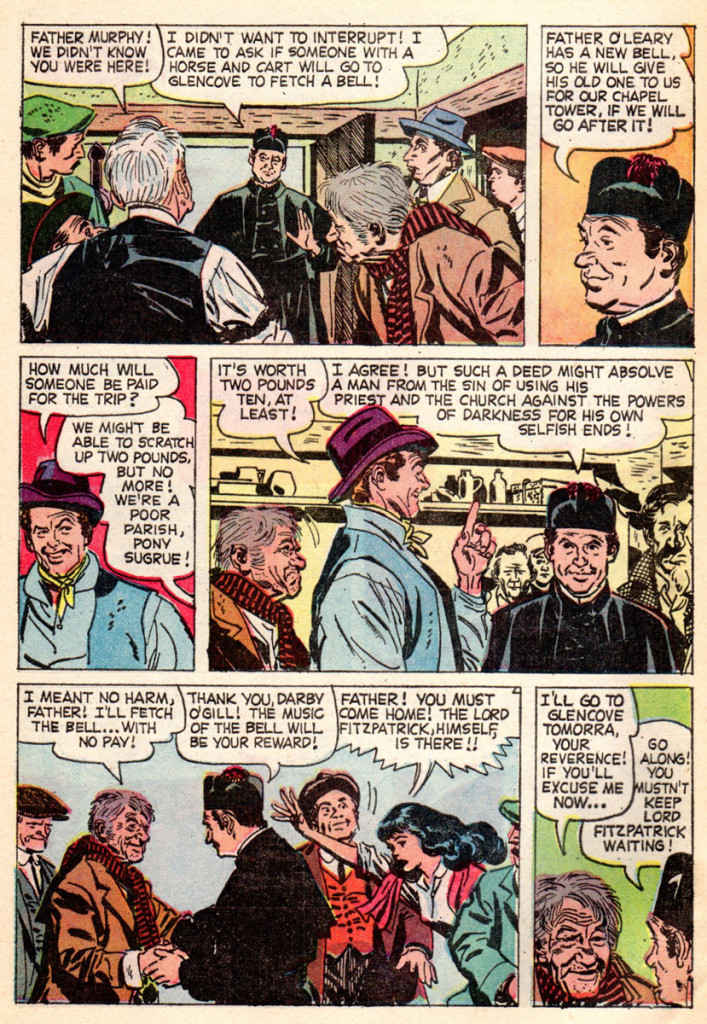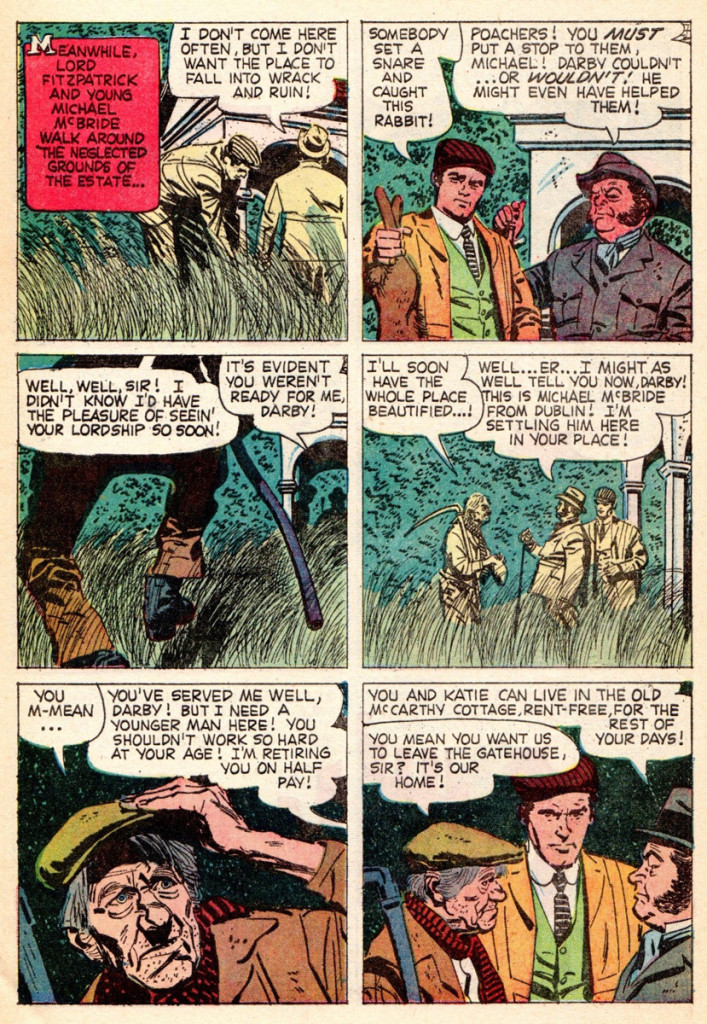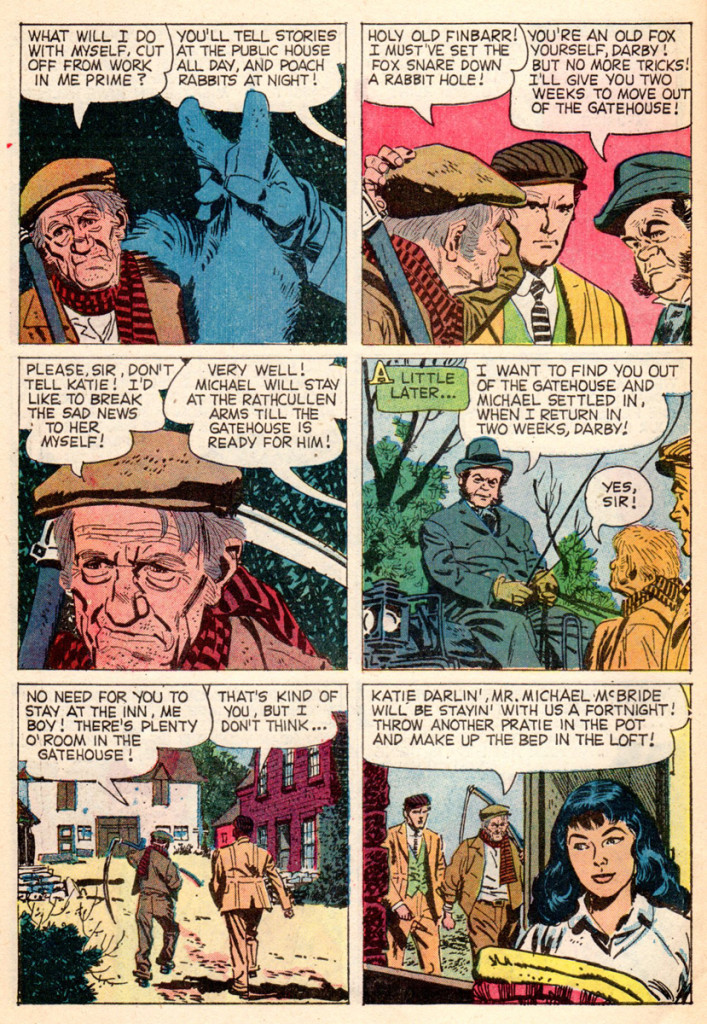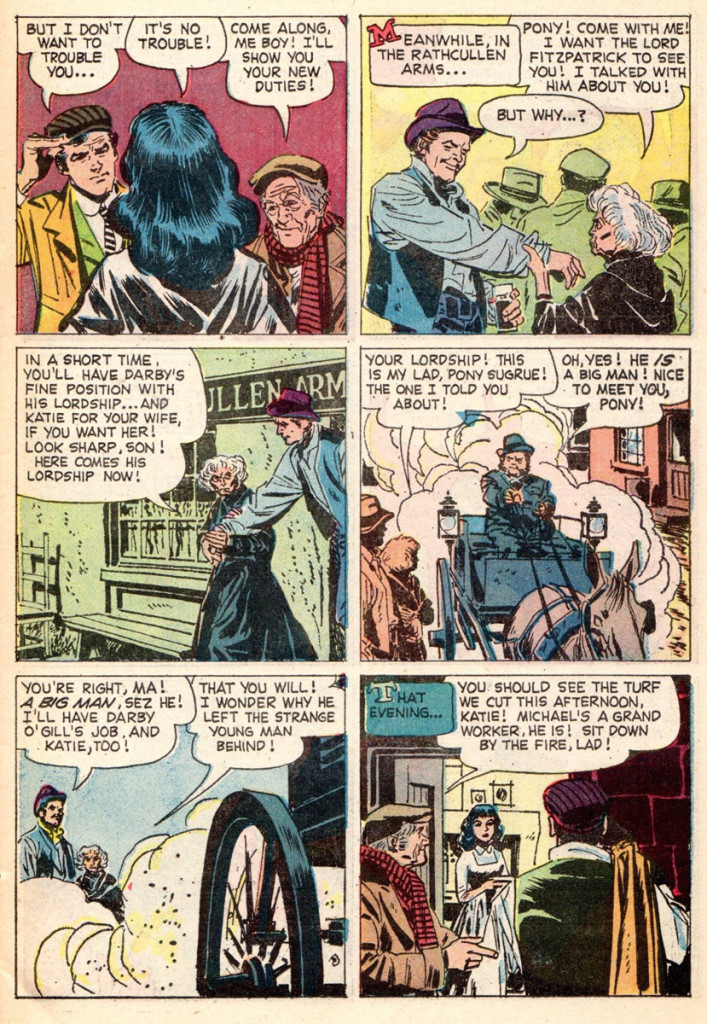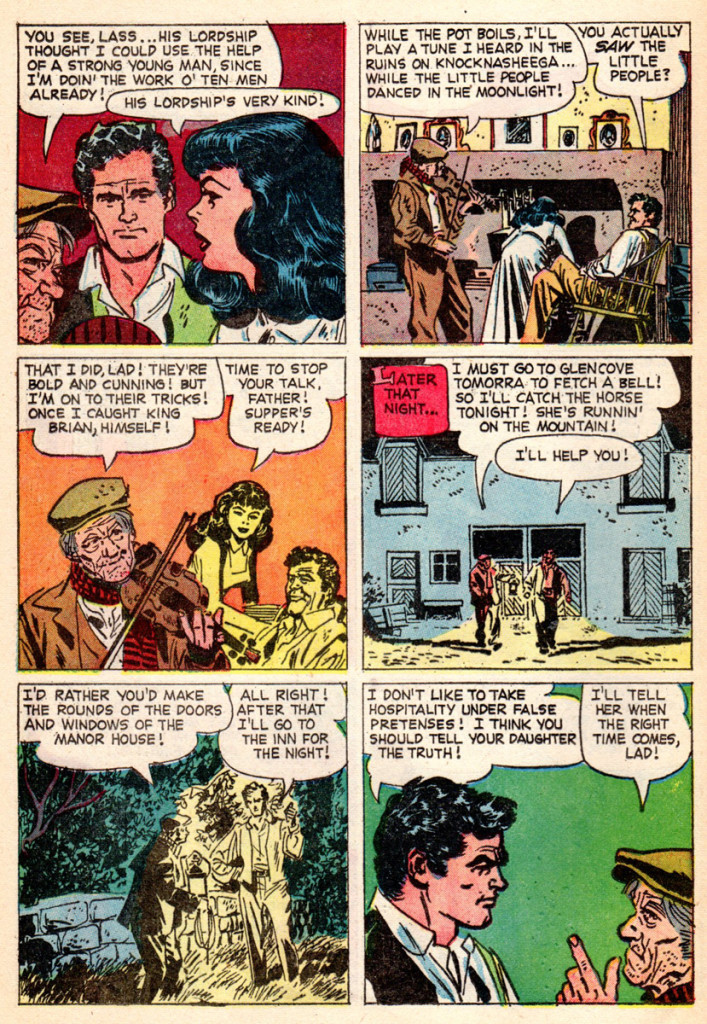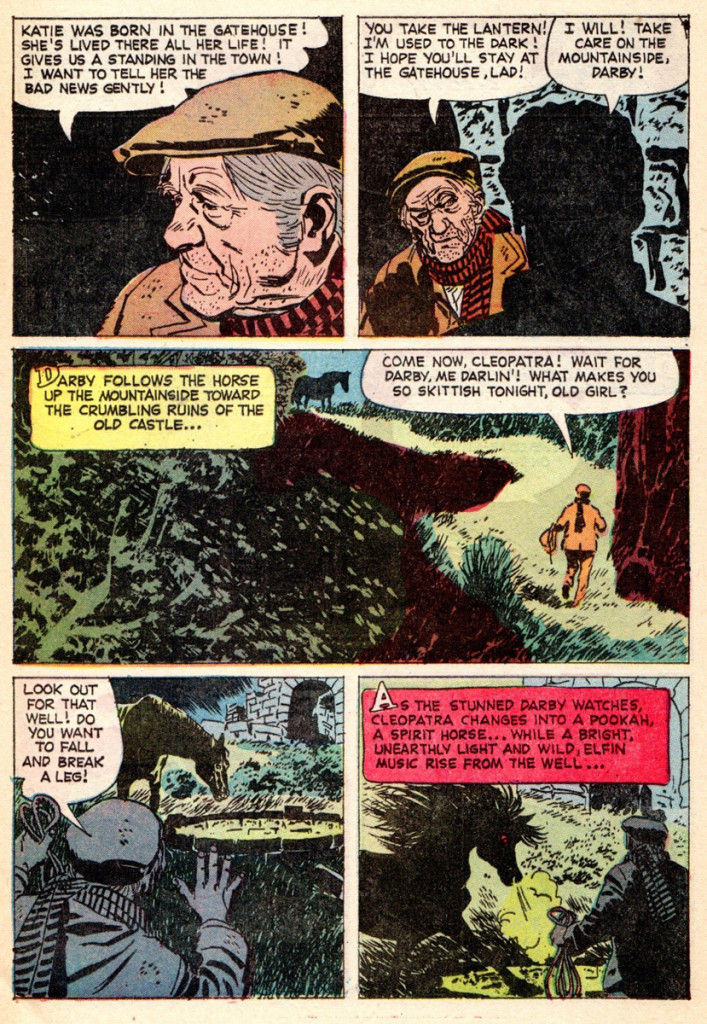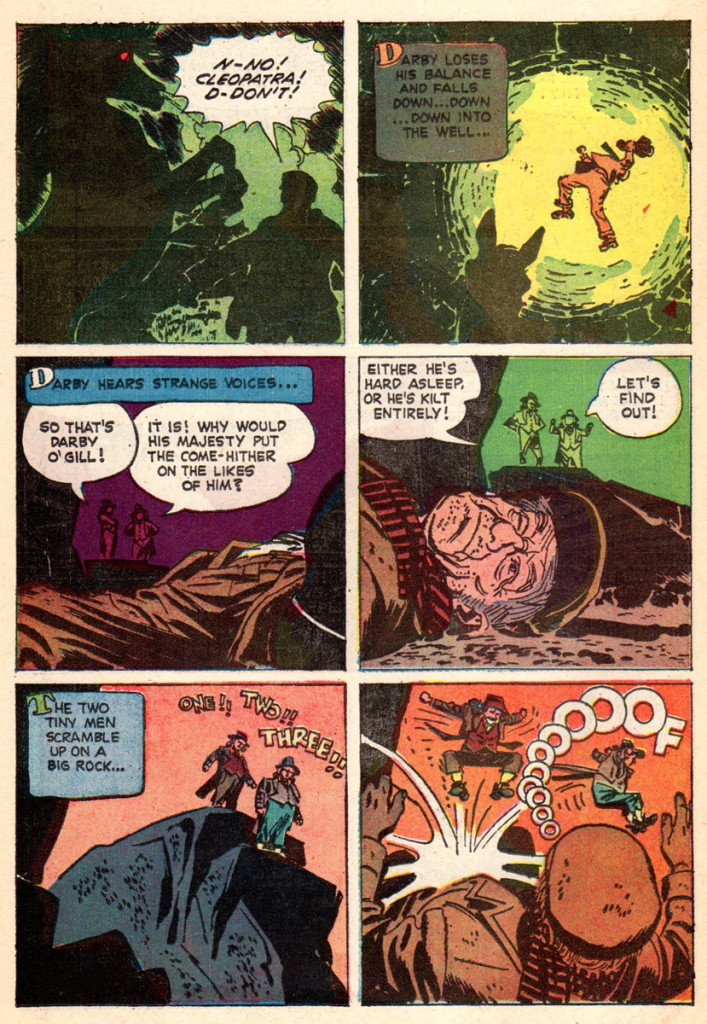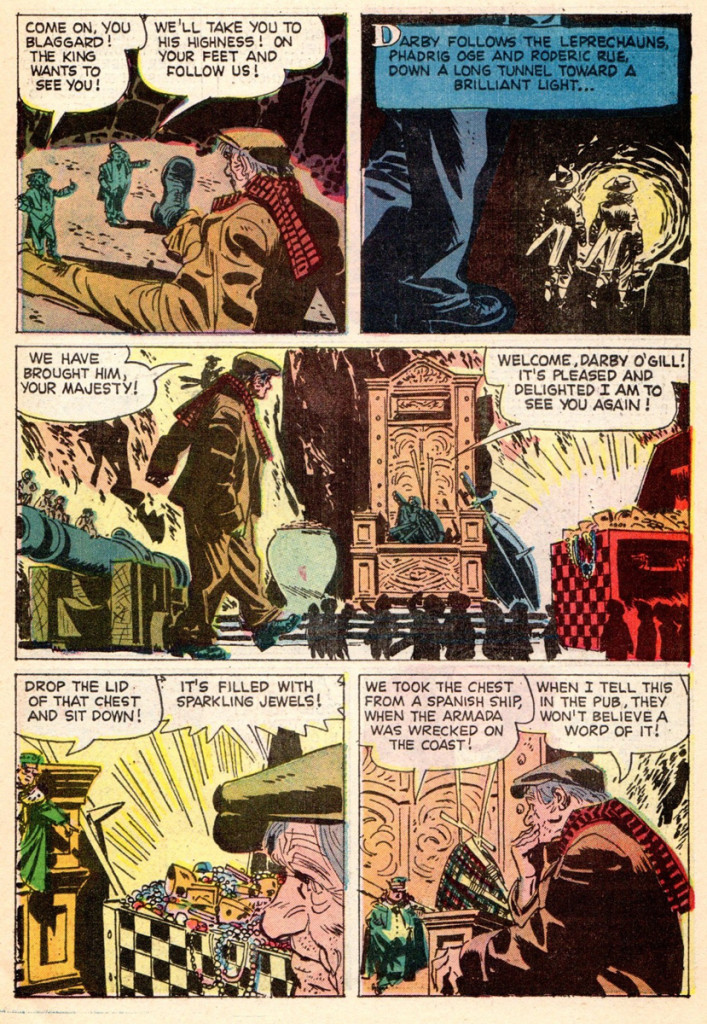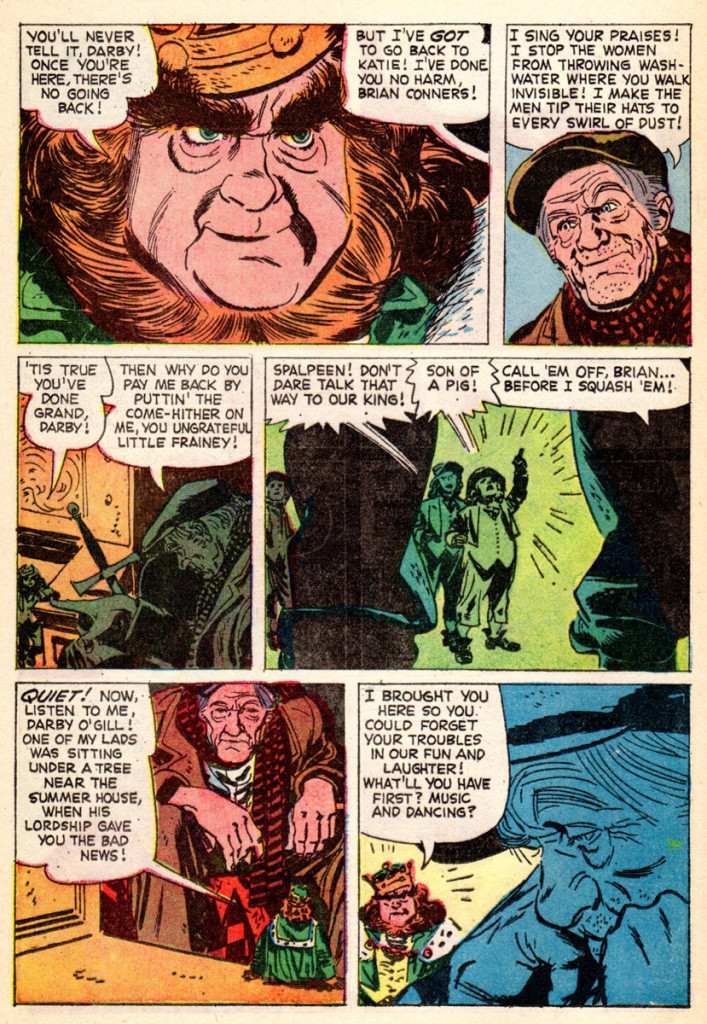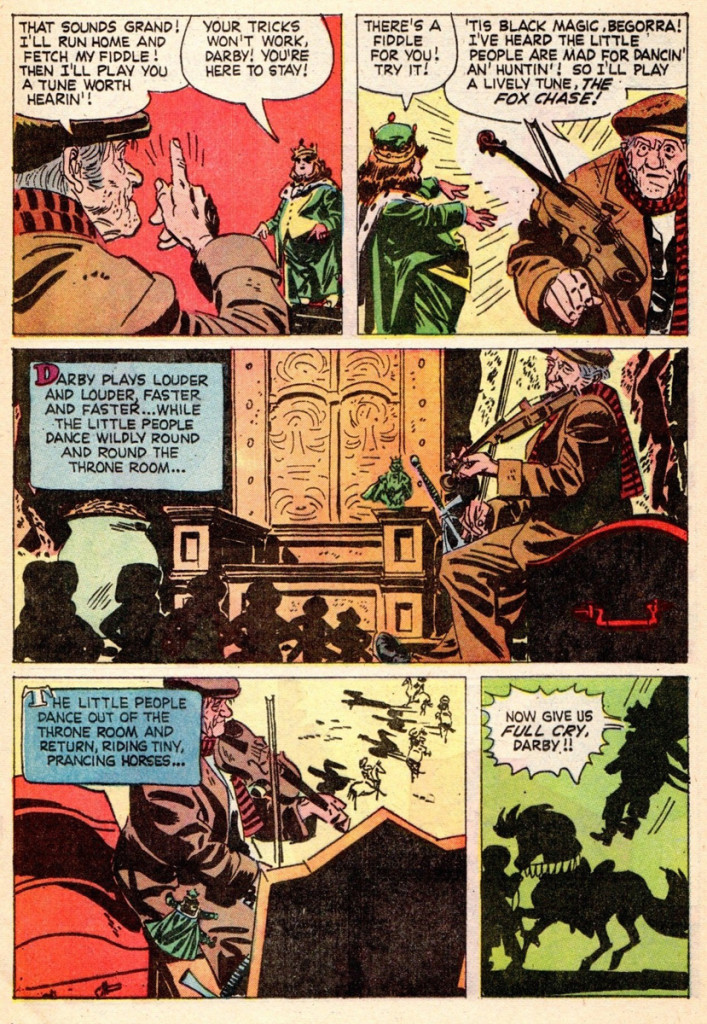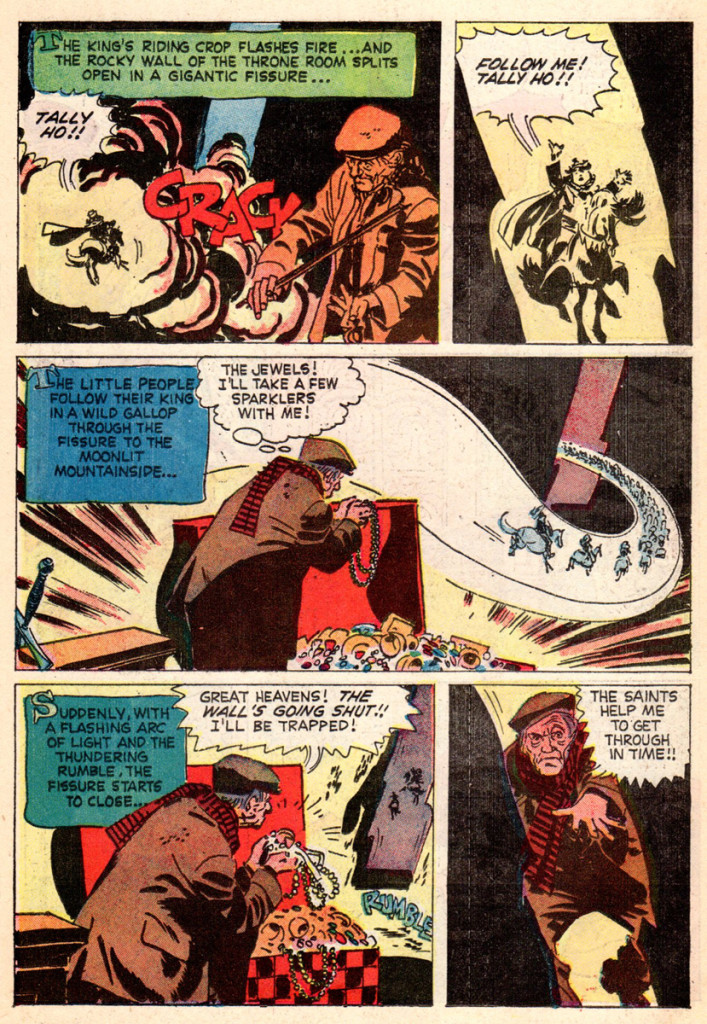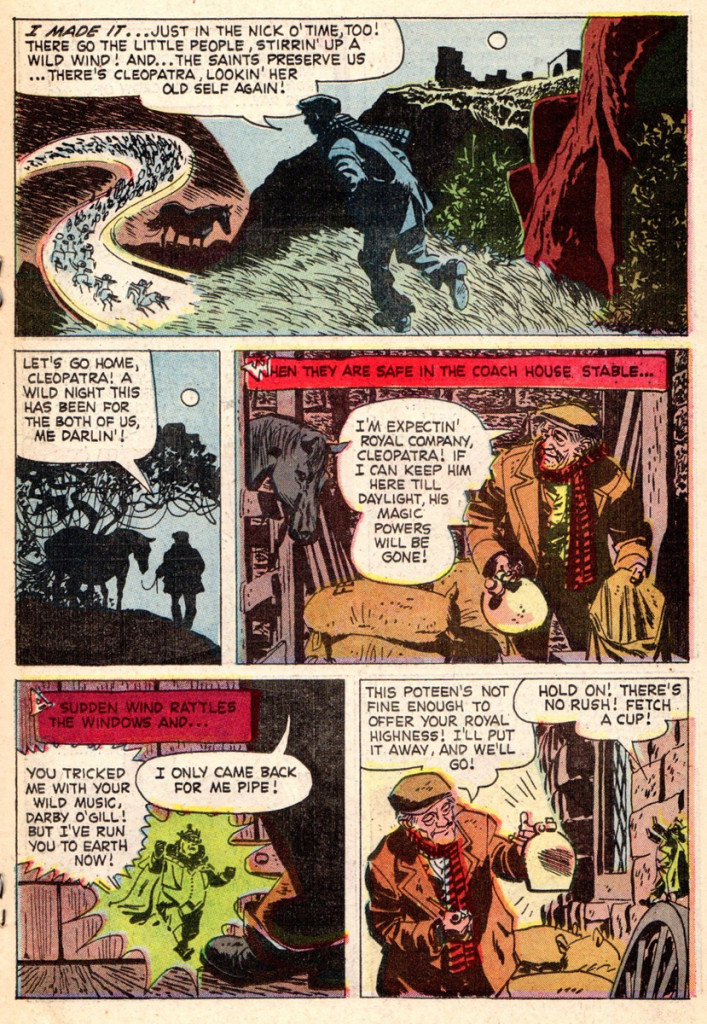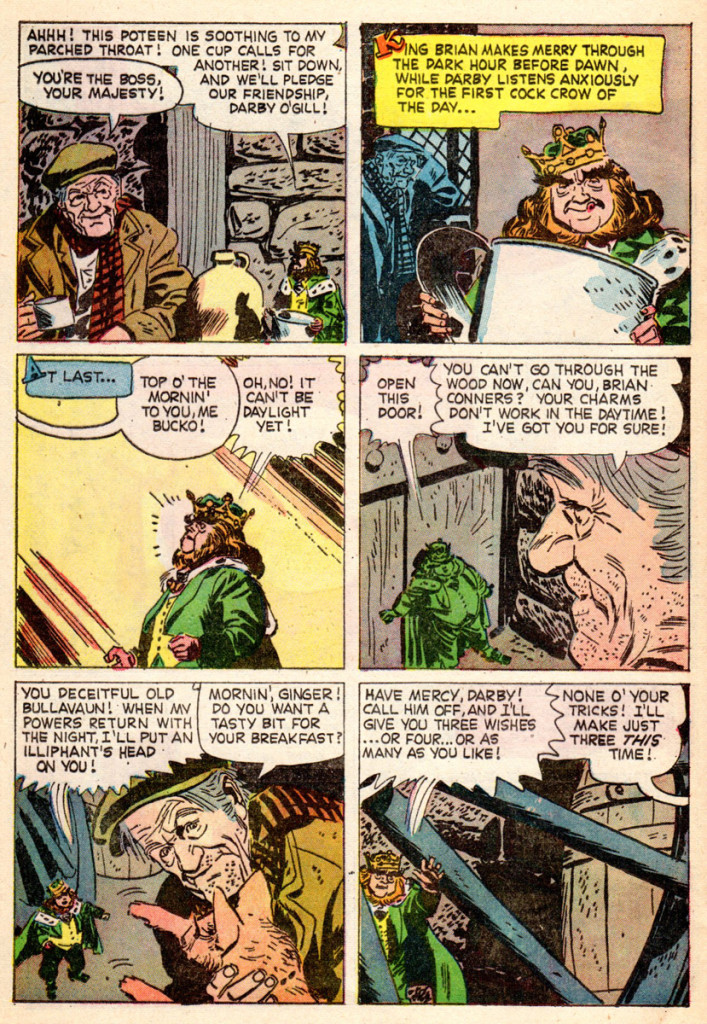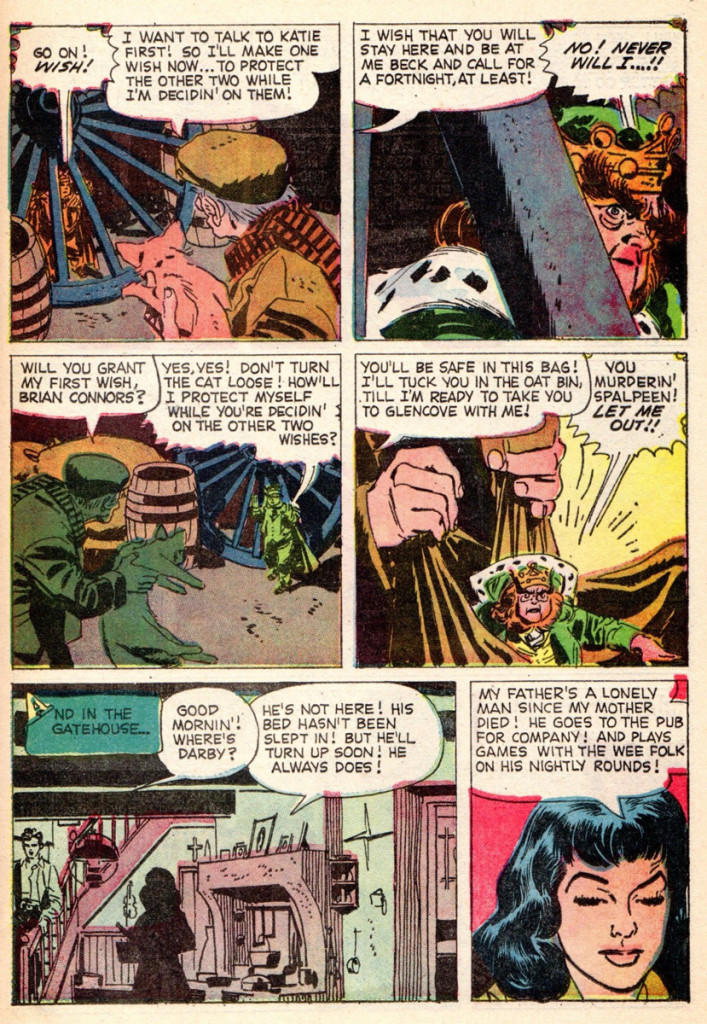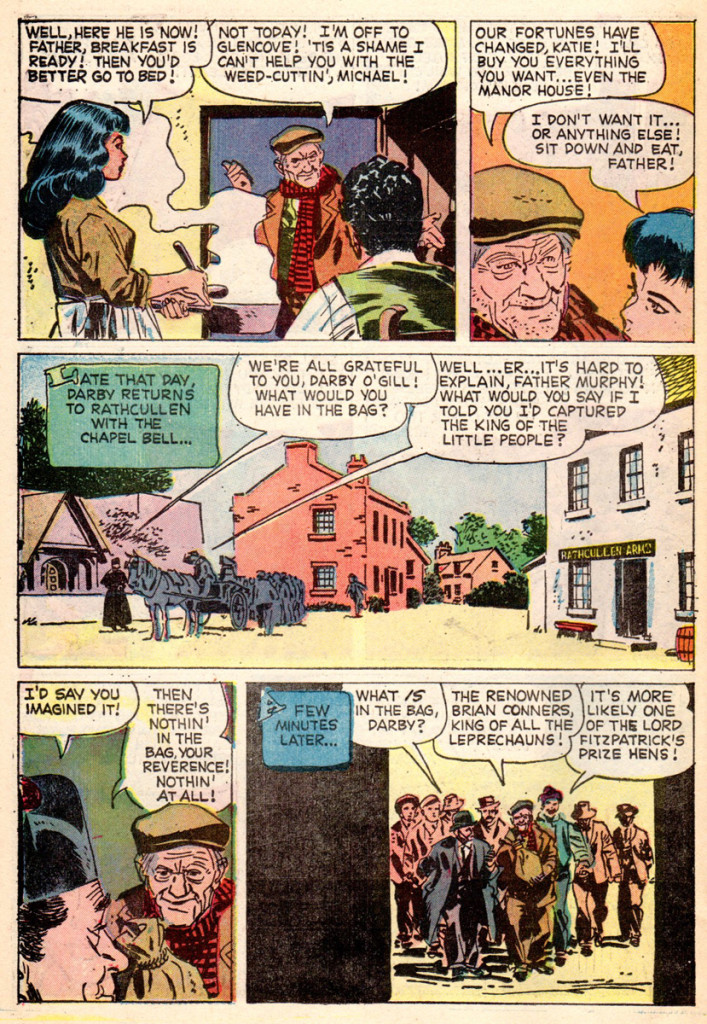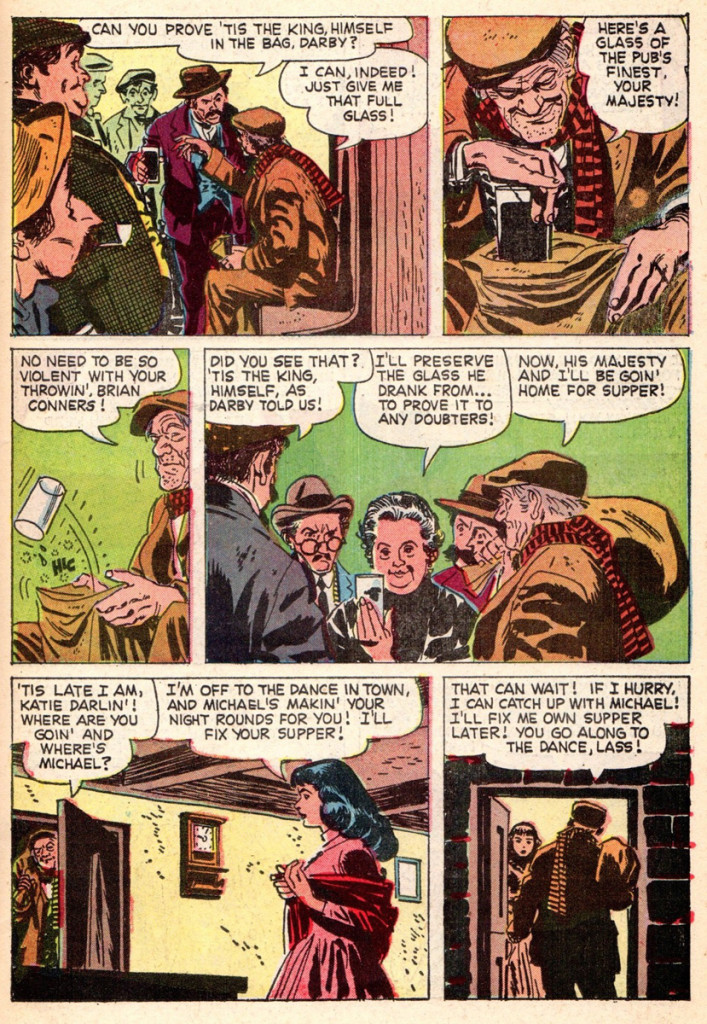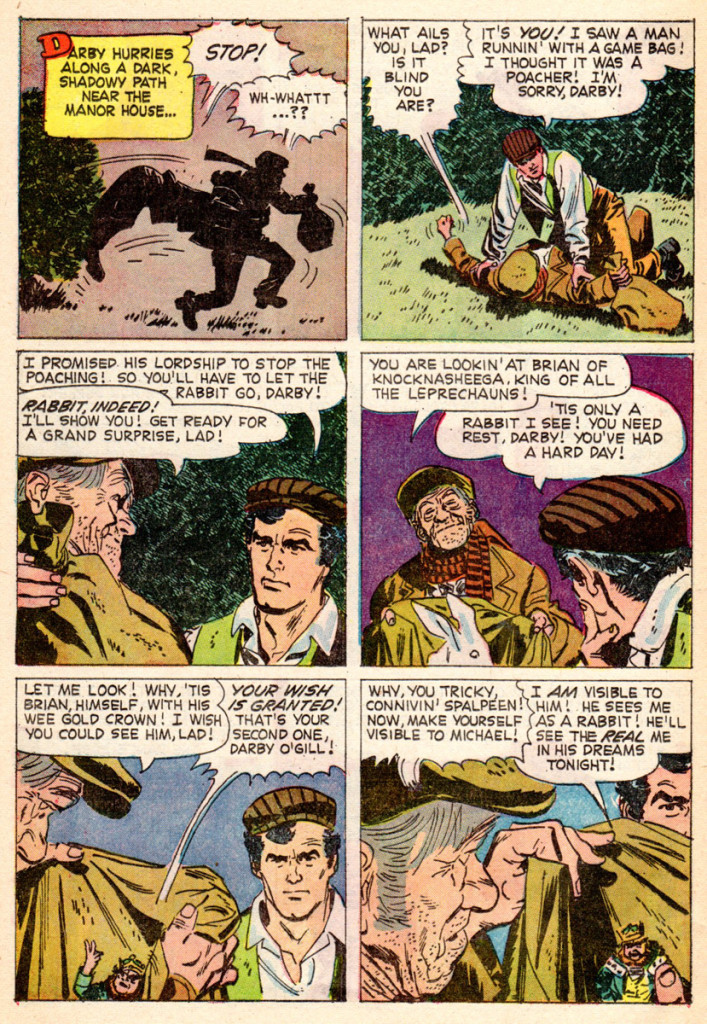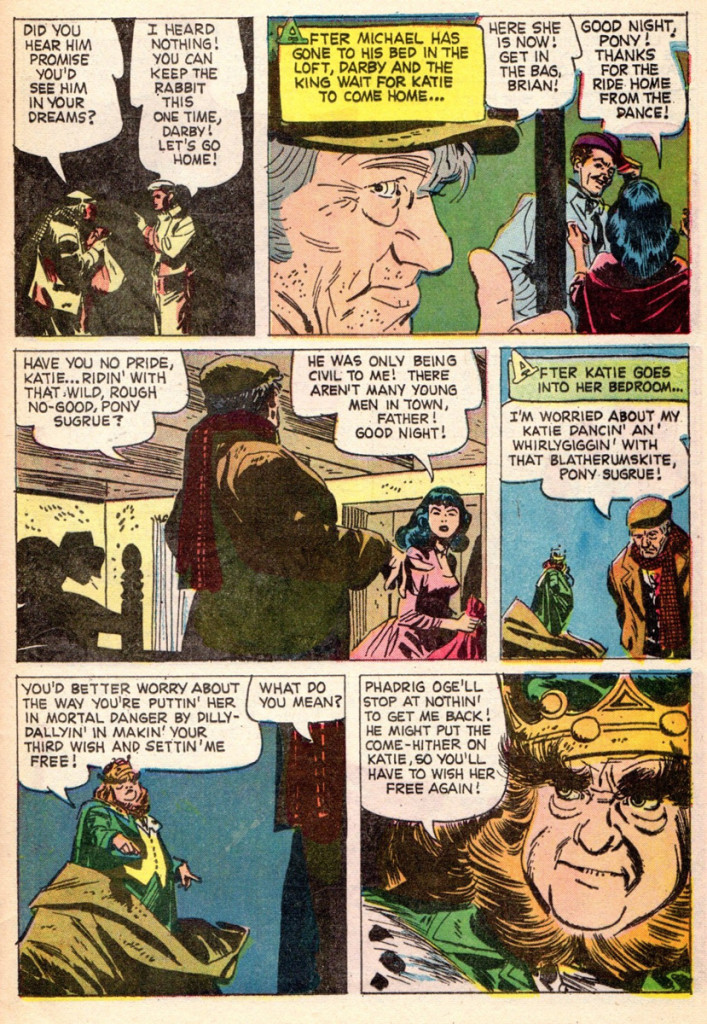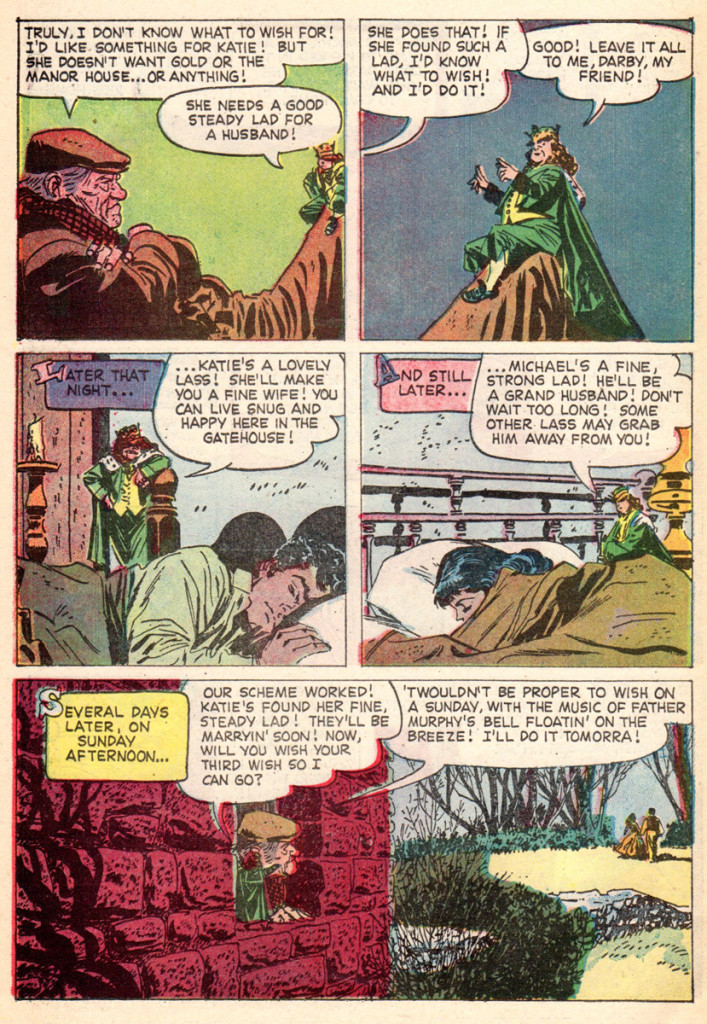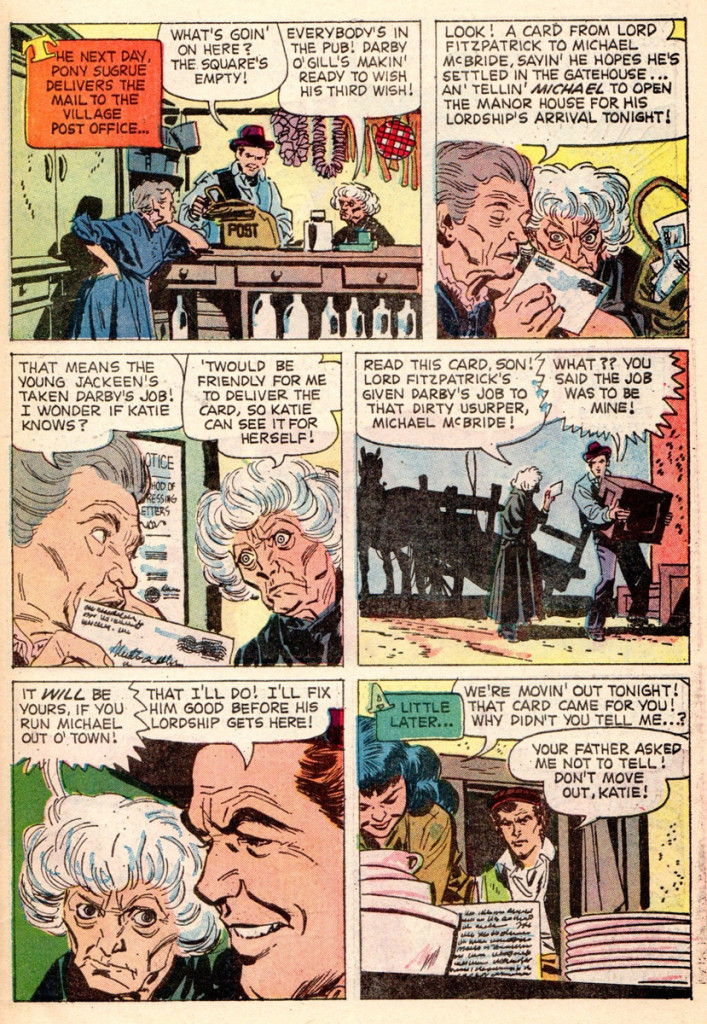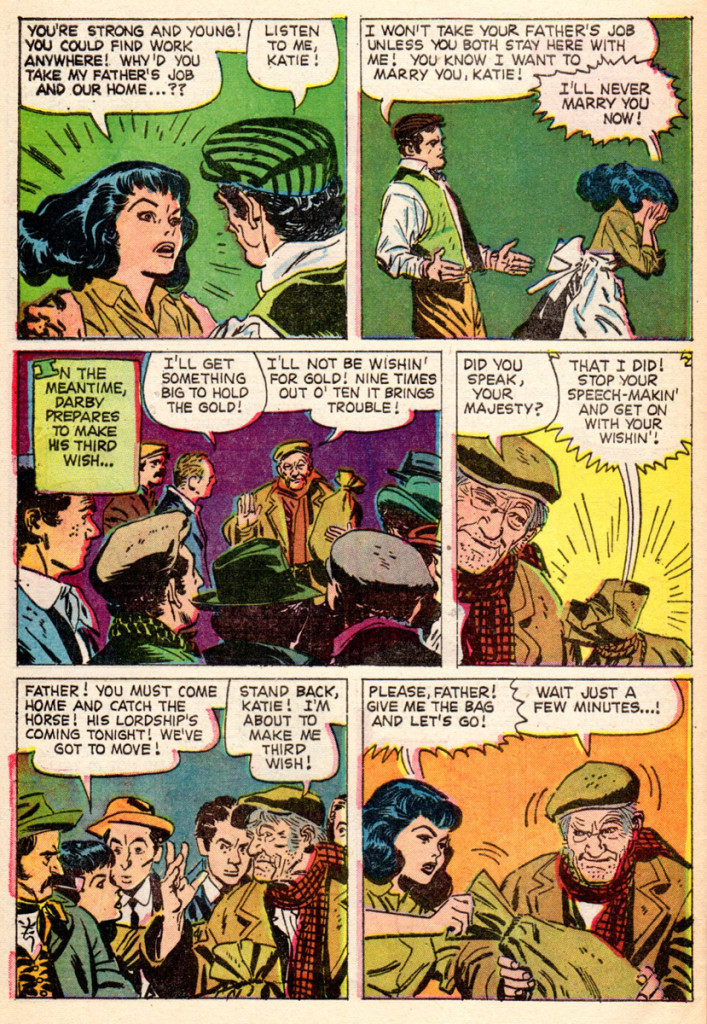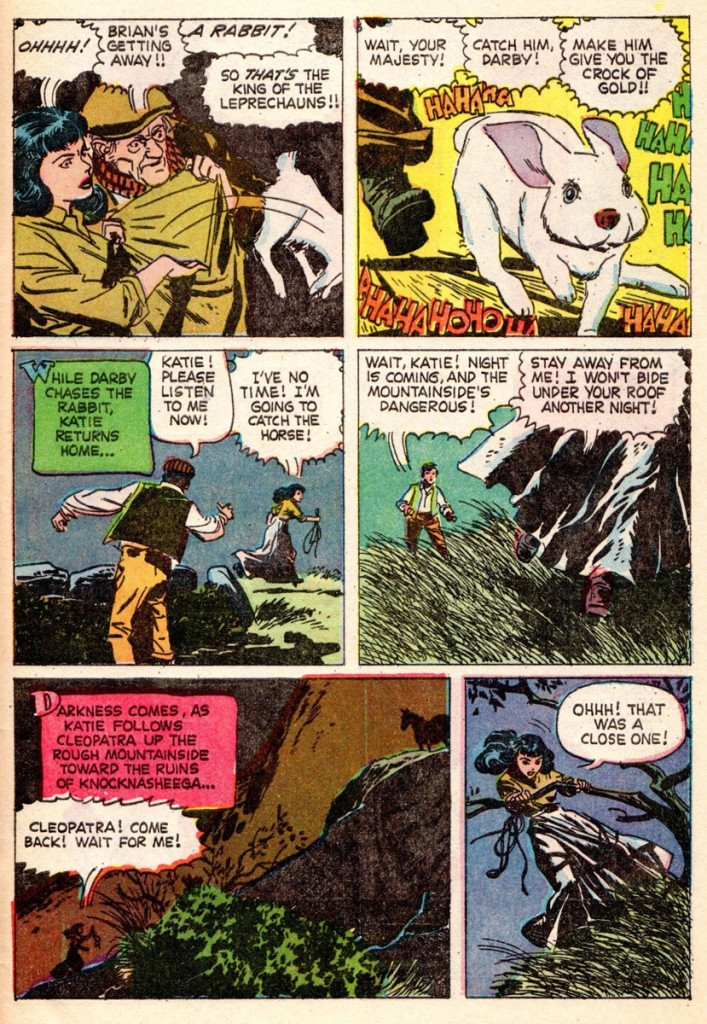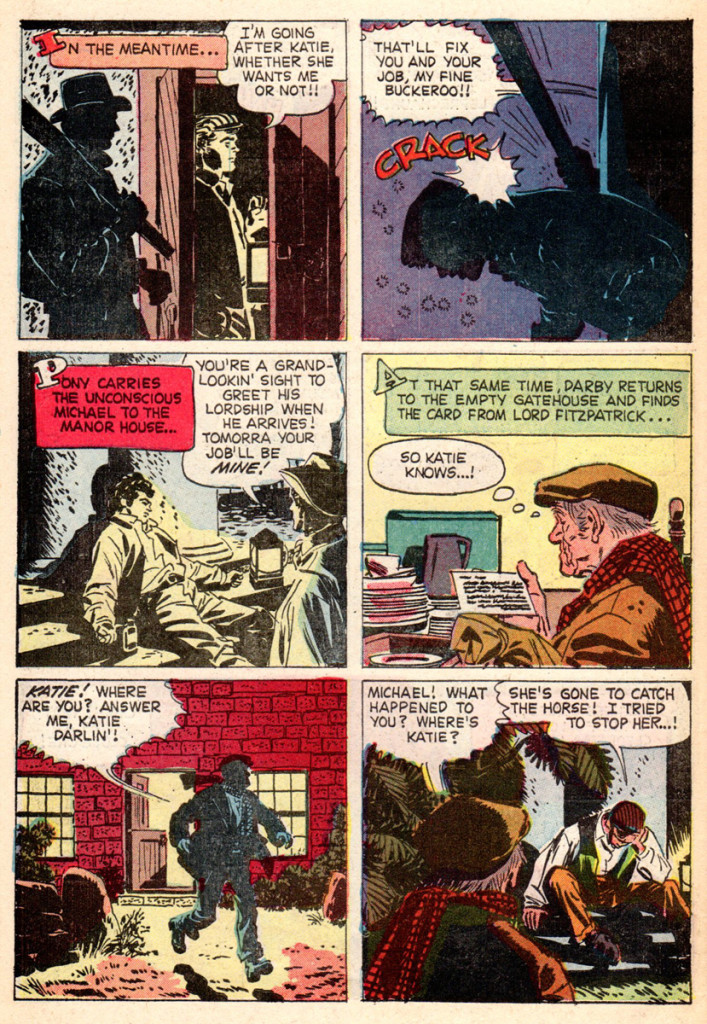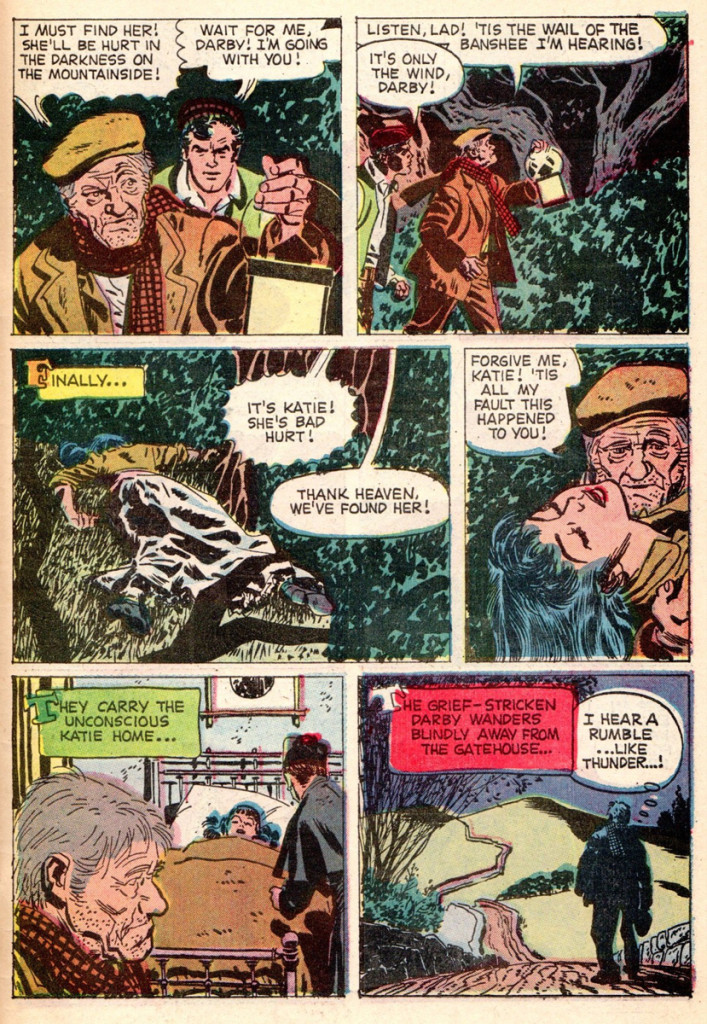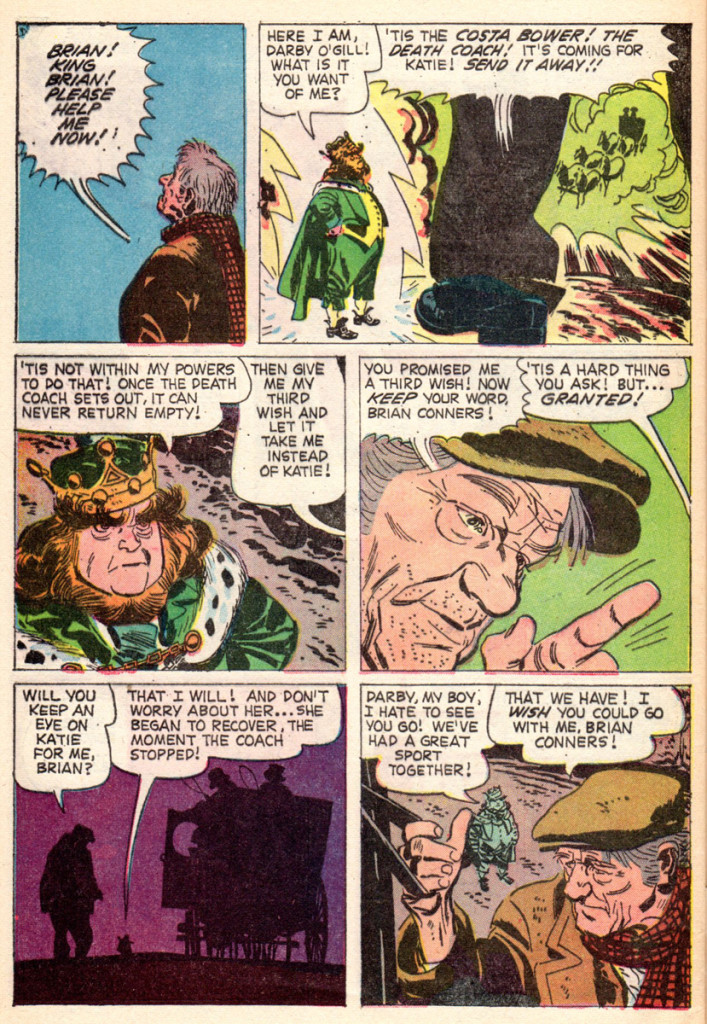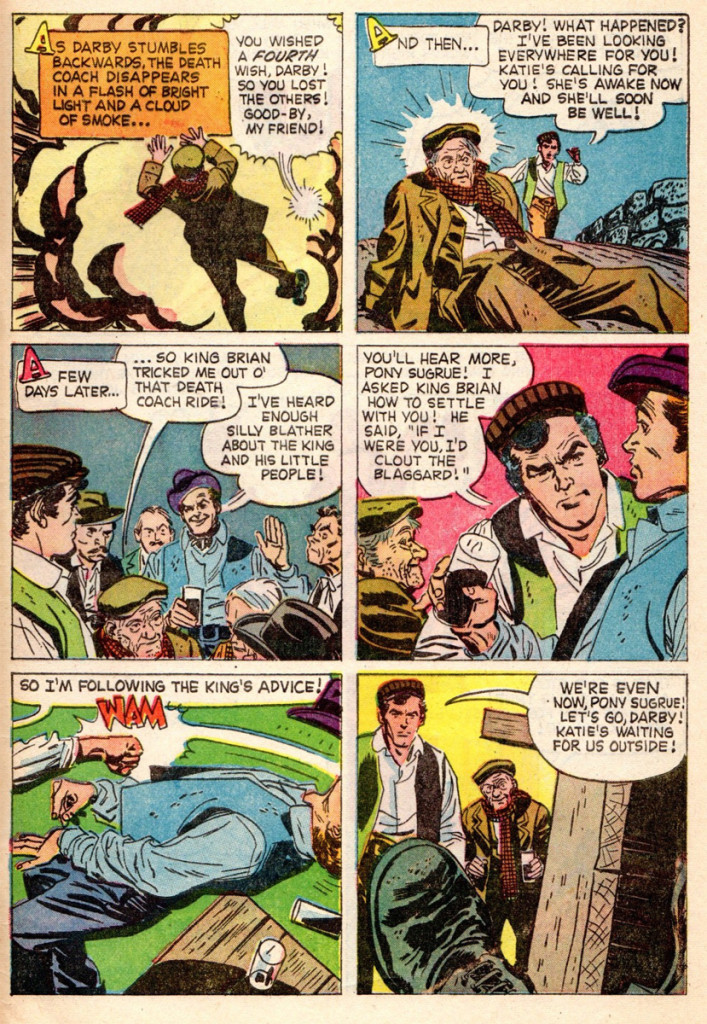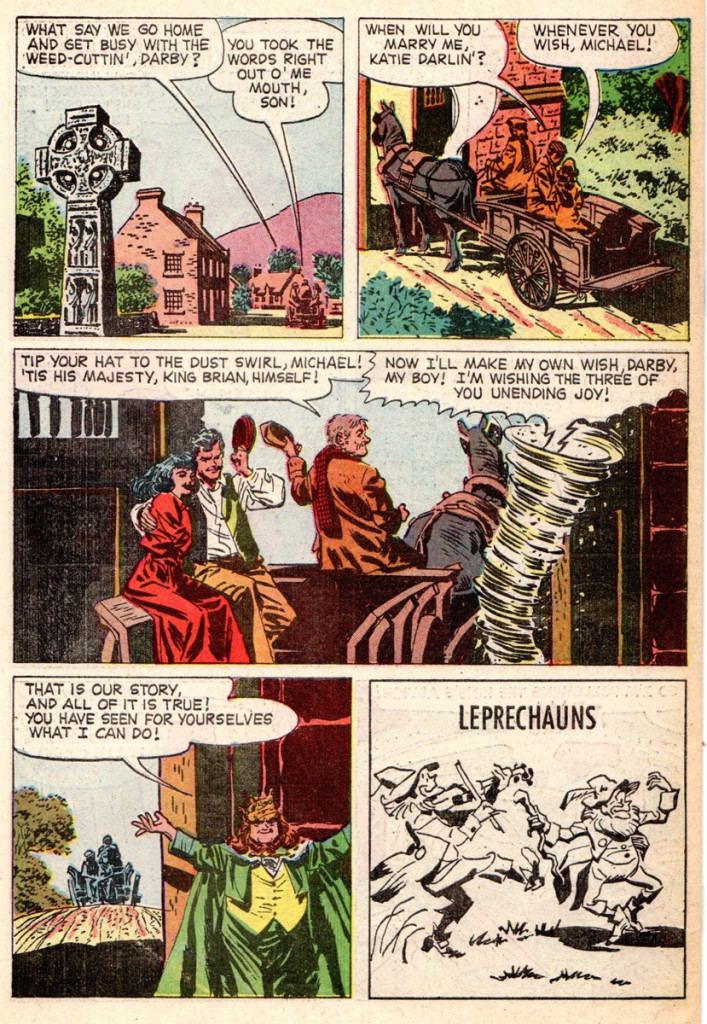Category ArchiveIllustration
Books &Comic Art &Disney &Illustration 18 Apr 2013 05:57 am
Peter Pan Strip Book
As promised last week, I have this Peter Pan strip book to post. Peter Hale sent me three book adaptations of the Disney animated feature, and I plan on posting all three. Today we start with this strip book, and I think you’ll appreciate it.
Peter writes:
- I do not know who the artist was. This version does not appear to have been printed in any other form.
I originally had a copy of this book as a child, but although I kept it for a long
time it final got lost. I recently found another copy and have had the opportunity
to regain my childhood!
Here are the scans. You’ll have to click the images to enlarge if you want to read them.
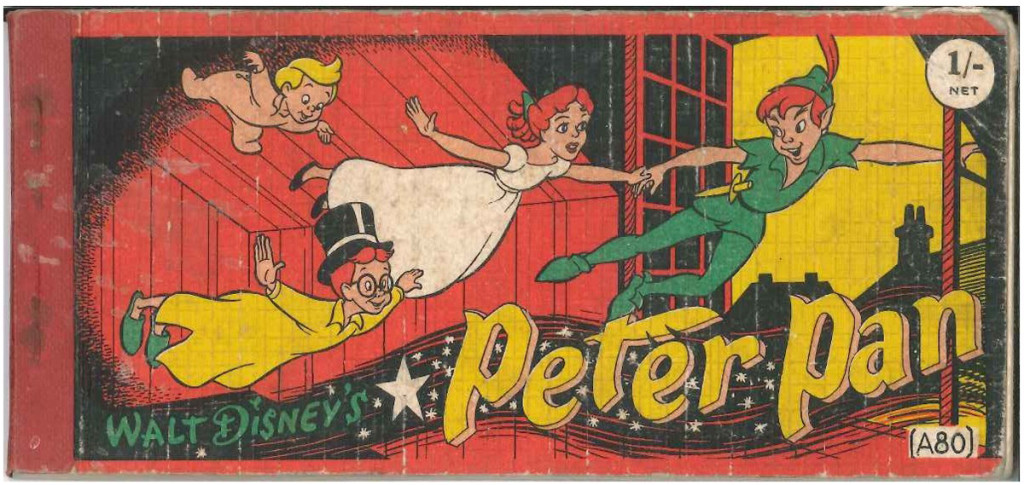 1
1
Many thanks to Peter Hale for sending this rare item.
Animation &Bill Peckmann &Books &Illustration 12 Apr 2013 05:40 am
Cartoon Posters – 2
“Cartoon Movie Posters” is a book that was published by Bruce Hershenson in the 1990′s, volume 1.
Bill Peckmann sent me some of the better posters in the book, and I posted them last week.
I have to admit that I’m intrigued by the notion of scanning quickly through the history of animation via the poster art. I guess today one would more easily collect a reel of commercial spots. I’m not sure they’d be any more exciting, and the experience would probably wear thin quickly.
Although, it’s not that rare to see a poster for an animated short. As a matter of fact, posters can all too easily be produced by the film makers, themselves. At Oscar voting time we saw posters for all the potential nominees: Paperman, Combustible, Adam & Dog, The Eagleman Stag, Oh Willy!
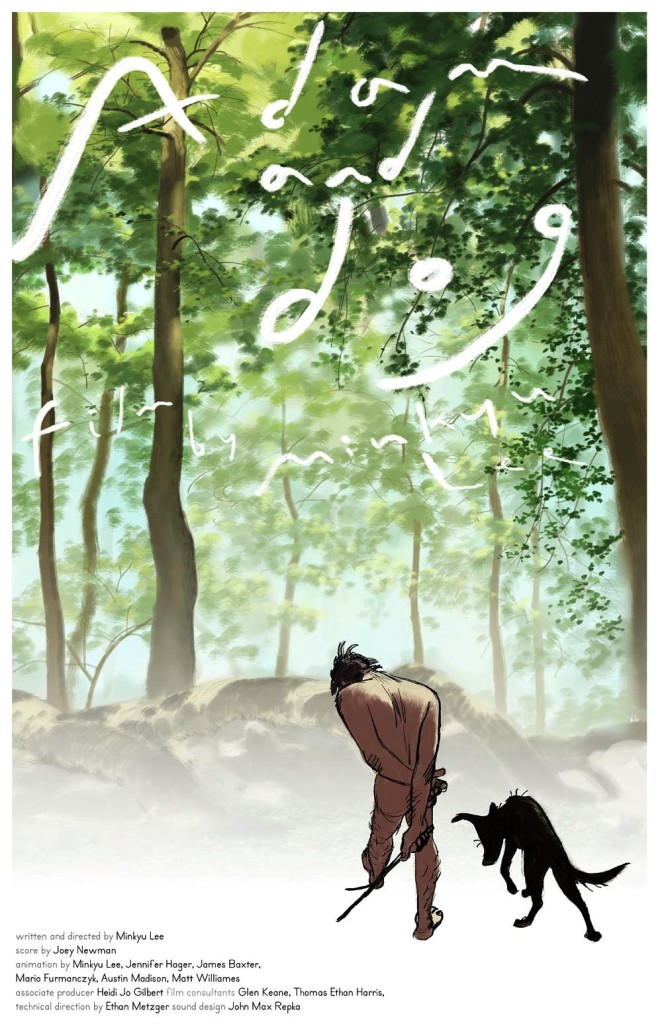
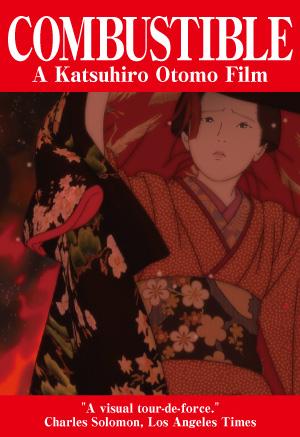
“Adam and Dog” | “Combustible”
Here’s post #2 featuring some great cartoon posters. Many thanks to Bill Peckmann for planning and scanning and sending.
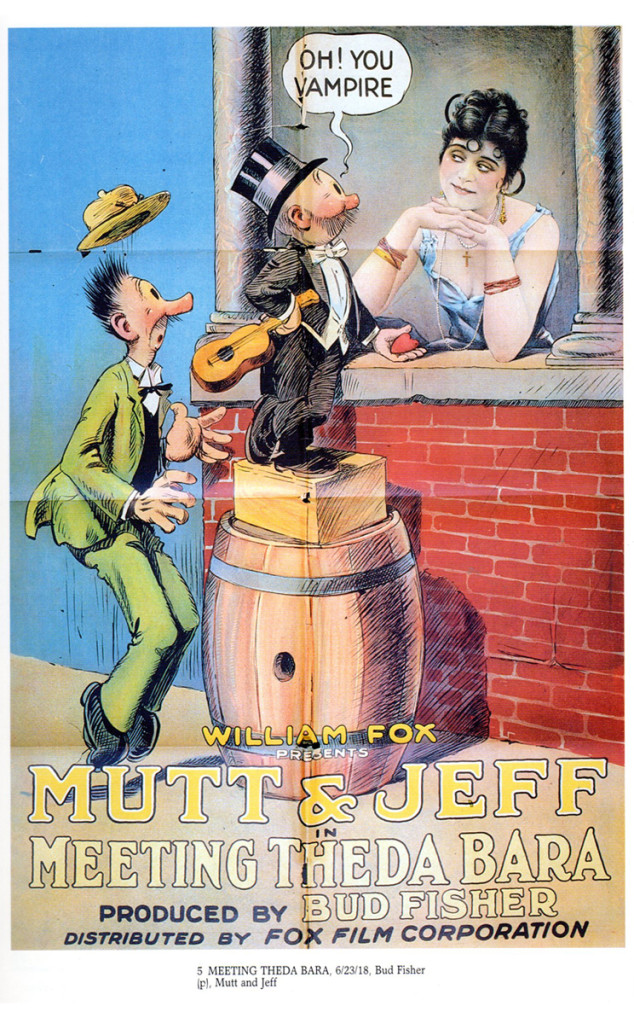 1
1
Animation &Books &Comic Art &Disney &Guest writer &Illustration 11 Apr 2013 05:09 am
Peter Hale’s Peter Pan
About six weeks ago, I was contacted by Peter Hale in the UK about a “strip book” of Peter Pan that was published in England to tie into the original release of the movie. Peter sent me some beautiful scans of the artwork in the book, and I posted it (here.)
Mr. Hale promised a second book that was also published at the time.
It turns out he has done some extensive research into the subject of the books in conjunction with the Disney film. This week, I received a complete breakdown of all the “Pan” books that were published in the UK, and the scans for another book. I’ve decided that I really have to post what Peter has written; it’s that extensive. I’ll follow up with another post of the books scanned.
Many thanks to Peter Hale for sharing this fine work with the “Splog” and its readers.
The rest of this post is over to Peter Hale who writes:
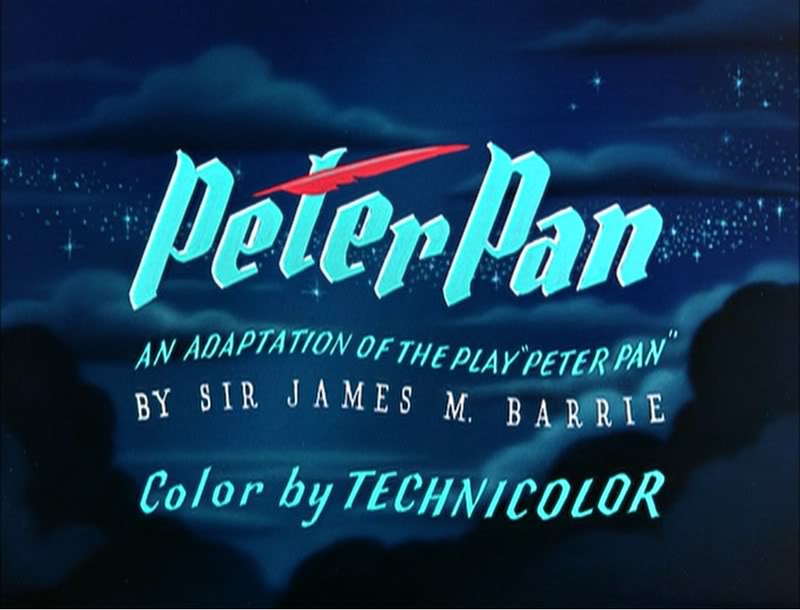 My (superficial) research into the Disney-illustrated books of Peter Pan published
My (superficial) research into the Disney-illustrated books of Peter Pan published
in the UK in 1953 has wandered off on several tangents.
Firstly a rough chronology of the development of the original book, and the Disney
film:
1902 – Barrie’s fantasy novel (for adults) The Little White Bird includes a sequence that
features Peter Pan, a 7-day-old baby who flies away from home so that he will never
grow up, and, after learning that he is not a bird, and therefore can’t fly, is
adopted by the faries in Kensington Gardens.
1904 – Barrie expands the idea of Peter Pan into a play, to great success.
1905 – The chapters from The Little White Bird that feature Peter Pan are republished for
children as Peter Pan in Kensington Gardens by his publishers, Hodder & Stoughton,
to cash in on the play’s popularity.
1911 – Because of the demand for Peter Pan products, Barrie publishes a novel based on the
play. He adds a coda wherein Peter promises to return each spring to take Wendy back
to Neverland to do the Spring Cleaning. But he starts to miss years, until he has
forgotten her altogether. Wendy grows up and has a daughter of her own. One day
Peter returns for her and is distressed to find that she is too old to fly away. But
he soon meets her daughter Jane and so takes her to Neverland, and when she grows
old, her daughter Margaret will take over – because he does need a mother.
1915 – Hodder & Stoughton publish an abridged version of Peter Pan for younger children,
written by May Byron with Barrie’s approval. They title it Peter Pan & Wendy.
1921 – A version of May Byron’s adaptation “retold for Little People” is published, with
illustrations by Mabel Lucie Attwell at Barrie’s request. Her drawings of babylike
characters presumably matched Barrie’s vision.
1929 – Barrie donates all the rights to ‘Peter Pan’ to the Great Ormond Street Hospital for
Children.
1935 – Walt Disney plans to follow Snow White with Peter Pan, but has difficulty securing
screen rights from Great Ormond St Hospital.
1939 – Having finally secured rights to make an animated film version, the Disney studios
schedule Peter Pan to follow Bambi and Pinocchio.
1941 – The entry of the US into WWII forces Disney to postpone productions.
1947 – The Disney Studios put Peter Pan back into production.
1953 – February 5th: Walt Disney’s Peter Pan premieres at the Roxy Theater, New York.
1953 – April 16th: Walt Disney’s Peter Pan has its UK premiere at the Leicester Square
Theatre, London.
1953 – May: Walt Disney’s Peter Pan is shown at the 6th Cannes Festival.
1953 – July 27th: Walt Disney’s Peter Pan goes on general release in the UK.]
Through the 40s her characters became ever more chubby, stunted and stylised, but in 1915 she was still starting out as an illustrator.
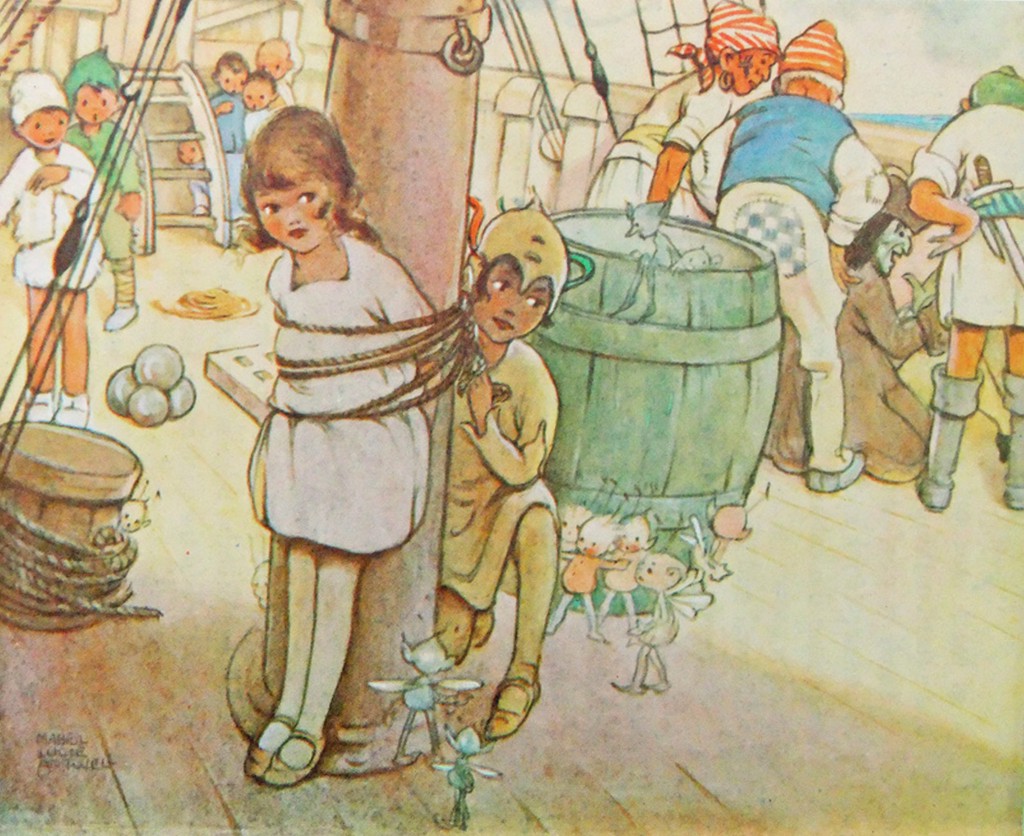
Here is her version of Peter freeing Wendy from the mast.
The illustrations she did then became almost as much part of the May Byron version of “Peter Pan and Wendy” as Tenniel’s were part of “Alice”, and it was still being published in 1980. A reprint of the 1921 edition was published in 2011.
Which brings us to the versions of Peter Pan published in the UK in 1953.
Jacqueline Rose, in her book “The Case of Peter Pan”, lists the following six books published in the UK that year:
- Barrie, J. M. Peter Pan in Kensington Gardens, illustrated by Arthur Rackham, ‘Peter Pan Books’ (from 9 years) (London: Hodder and Stoughton, I953)
- Bedford, Annie N. Disney’s Peter Pan and Wendy, ‘Peter Pan Books’ (London: Hodder and Stoughton, I953)
- Byron, May. Peter Pan in Kensington Gardens, illustrated by Arthur Rackham, ‘Peter Pan Books’ (for 6 to 8 year olds) (London: Hodder and Stoughton, I953)
- Byron, May. The Walt Disney Illustrated Peter Pan and Wendy, ‘Peter Pan Books’ (for 8 to 9 year olds) (Leicester: Brockhampton Press, I953)
- Pearl, Irene. Walt Disney’s Peter Pan, retold from the original story by J. M. Barrie, ‘Peter Pan Books’ (for 3 to 6 year olds) (Leicester: Brockhampton Press, I953)
- Winn, Alison. Walt Disney’s Peter Pan, retold from the original story by J. M. Barrie ‘Peter Pan Books’ (for 6 to 8 year olds) (Leicester: Brockhampton Press, I953)
as opposed to just one in 1952:
- Byron, May. Peter Pan, retold for the nursery, illustrated by Mabel Lucie Attwell, ‘Peter Pan Books’ for 3 to 6 year olds) (Leicester: Brockhampton Press, I952)
Two of these are versions of the Peter Pan in Kensington Gardens ‘origin’ story, which Disney had decided not to include in the film.
The remaining 4 are all “Illustrated by Walt Disney”. The Irene Pearl version is the strip book already posted, and scans of the May Byron book and the Alison Winn “Little Book” will follow. These all follow the Barrie novel rather than the Disney film, although with different simplifications and omissions.
The Annie N. Bedford book is one I have not been able to trace – she is the American author who wrote the Golden Books version of the Disney film, so this could be a UK publication of that book. It is given as published by Hodder & Stoughton, Barrie’s original publisher. The back cover of the Brockhampton ‘Little Book’ lists a different Hodder & Stoughton book.
“J. M. Barrie’s original Peter Pan and Wendy for older Boys and Girls, with illustrations by Walt Disney”. I have not been able to trace a copy of either book. These two books represent the two ends of the spectrum:
Barrie’s original text and the story of the film.
Finally there is the complication of Dean & Son’s Walt Disney’s Peter Pan, from the motion picture, a book of the film. This has no publication date. The illustrations are given as copyright Walt Disney 1953, but this is not a guide to the publication date, as Disney did not own the publishing rights and so the illustrations were always copyrighted to 1953, the year of the film’s release. It is probable that the Dean book was published later than 1953.
It is published ‘by arrangement with Hodder & Stoughton’, which either means it may be a reprint of the Bedford book, or just an acknowledgement that Hodder held the publication rights to Peter Pan.
In contrast I can only find one UK ‘Disney’s Alice in Wonderland‘ book that might have been published in 1951, and certainly no Carroll text with Disney illustrations.
So why so many Peter Pans? The UK’s wartime paper rationing ended in 1950 so that would not be an issue.
Was it because Disney did not have the publishing rights, so this collaboration was necessary to promote the film?
Was it just, as I’d thought previously, that the British might object to tampering with the story? Or was Disney just trying to overcome the sort of criticism that his Alice had suffered in the UK (that it was too Americanised and not sufficiently true to the book) by linking his film to the original text?
Comparing the 3 Brockhampton books the illustrations are all different, and by different hands it would appear, but all show fidelity to the Disney style. I am assuming that these illustrations were done by British illustrators specially for the books, as where the illustrations differ from the film the artists seem to have consulted the particular text they are working with for details.
Hence the May Byron text describes the adding of a shoe as a knocker, and John’s hat as a chimney, and the illustration shows the hat, although it also shows Wendy watching the building from outside, which is quite wrong!
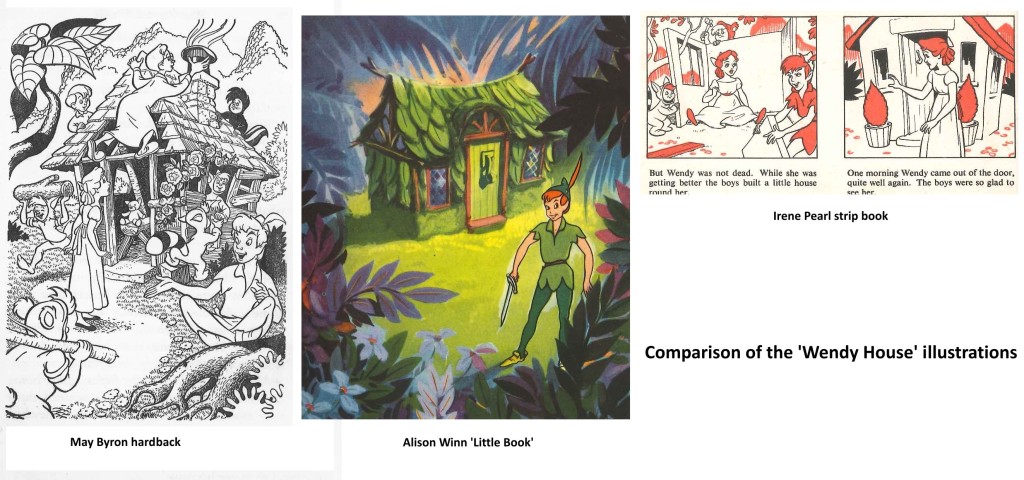
The marooning of Tiger Lily is done in the book by two pirates, with Hook turning up
later.
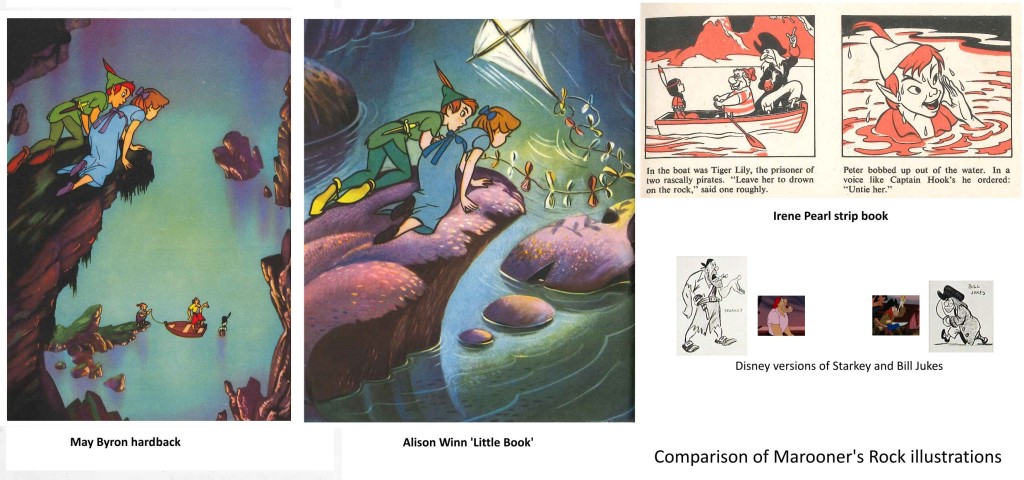
In the May Byron book they are named as Smee and Starkey, and the
illustration has Hook replaced by a likeness of the Disney Starkey (but with a
yellow shirt instead of pink). The strip book doesn’t name the pirates and Hook is
here replaced by Bill Jukes. The Alison Winn version omits the marooning of Tiger Lily entirely and just has Hook turn up to attack Peter.
All three books have Wendy exhausted and Peter injured after the encounter – both
stranded on the rock unable to fly back. John’s kite collects Wendy, while Peter is
rescued by the Never bird, whose floating nest serves as a boat. The Winn ‘Little
Book’ uses a version of the shot of Peter and Wendy watching Hook and Smee from on
high, but without the pirates, truncated to appear a low rock, and with a kite added
in.
This brought me to wonder how much Disney reference they were given, and what it
consisted of. Many of the scenes are close to shots from the film. But a look at the
Dean book, which seems to be taken directly from colour stills, shows that these are
not actually shots from the movie.
Anyone who has ever tried to put together presentation scenes from the cels of an
animated film knows that there are always problems – the best pose is poorly traced,
or one character is in an ungainly inbetween position – whatever, that perfect key
image from the storyboard just isn’t there in the actual film, where, deliberately,
nothing hits a strong extreme at the same time.
Hence it appears that the lobby card stills or coloured transparencies that Disney
circulated in their press packs etc. had been specially recreated – a lead animator
had redrawn the characters from various key frames as they ought to have looked, and
these drawings had been traced and painted on cel with extra care, and combined with
a new version of the background to be photographed by a stills camera. (I presume
the composites then went up on someone’s wall!) The same thing, of course, as the
re-posing of key scenes that is typically done by a stills photographer on the set
of a live action film after it has been shot.
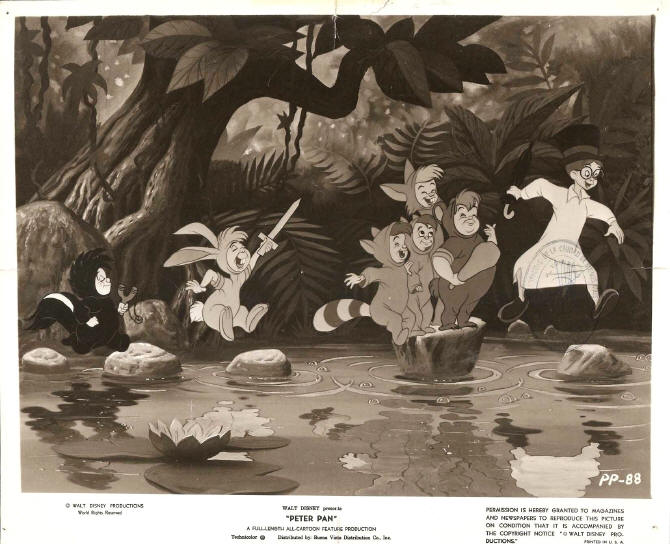
The illustrators appear to have had coloured stills and model sheets to work from.
Does anyone know how much reference was supplied? Walt Disney Studios had an office
in London specifically to deal with promotion, distribution, licensing artwork etc.
Did they do artwork for any of the books – or just supply references?
Lastly, the curator of the Great Ormond St. Children’s Hospital Archives has kindly
sent me these scans relating to the London Premiere of Peter Pan on 16th April 1953
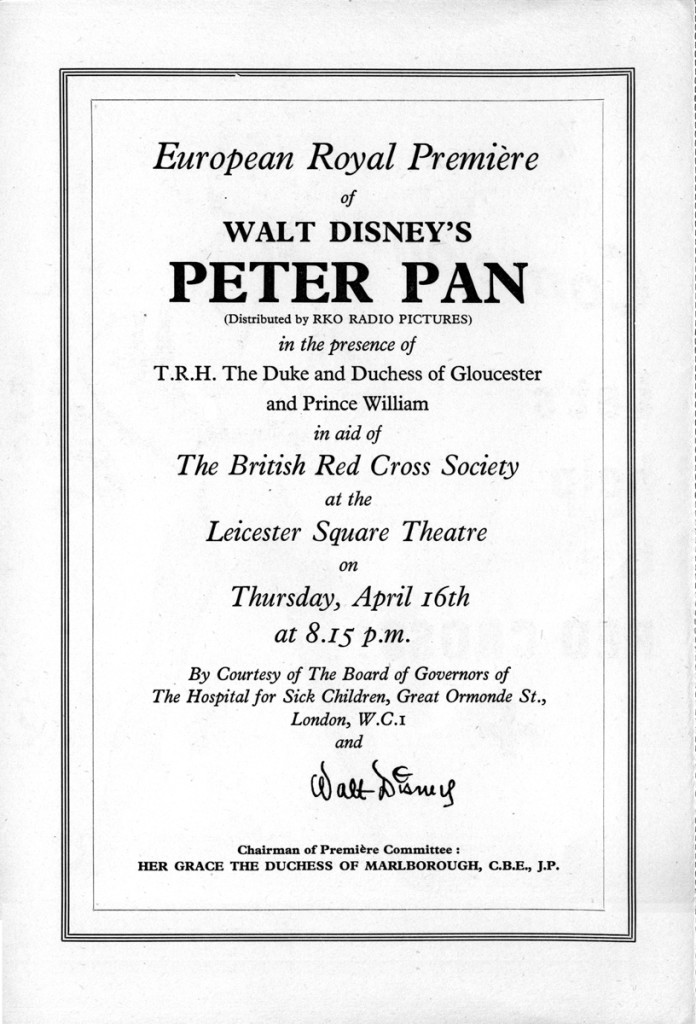
It’s worth taking note that Hans Perk has recently posted the animators’ drafts from the Disney film, Peter Pan. Go here to read and/or collect them.
commercial animation &Errol Le Cain &Illustration &Independent Animation &repeated posts &Richard Williams &Rowland B. Wilson &Tissa David 10 Apr 2013 05:55 am
Dick’s Christmas
Richard Williams, when he had his own studio, was known for doing everything in a LARGE way. All of the commercials, title sequences, shorts were all done with a large, elaborate vision.
The Charge of the Light Brigade was a collection of 19th century graphics that are completely wrong, stylistically, for animating. All those cross-hatched lines. God bless the artists that pulled that off. The same was true for The Christmas Carol.
If the rendering style wasn’t impossibly difficult, then the animation was complex. Think of any of the scenes from Dick’s dream-feature, The Thief and the Cobbler. The many scenes where backgrounds were animated, with those backgrounds complete with complicated floor patterns or an entire city to be animated. Raggedy Ann was covered in polka dots and Andy was clothed in plaids. Both of the characters had twine for hair with every strand delineated. The commercial for Jovan featured a picture-perfect imitation of a Frank Frazetta illustration. Even the mountain on the background had to be animated and rendered.
Well, when it came to Christmas cards, Richard Williams was the same. Enormous and beautiful cards were printed and signed by anyone who knew the recipient of the card. You were lucky being on the receiving line for these stunning cards. Tissa David once gave me a number of these cards. I held onto my copies of the cards until my space was flooded and the cards were damaged. I thought I’d post a few.
With card #1, a take-off of Muybridge with frame grabs from several of the better Williams commercial spots from that year, capped off by a number of key staff personnel positioned to continue the Muybridge motif.
(Here, I first post the entire card, followed by a break up of the card into sections
so you can more ably see the details.)
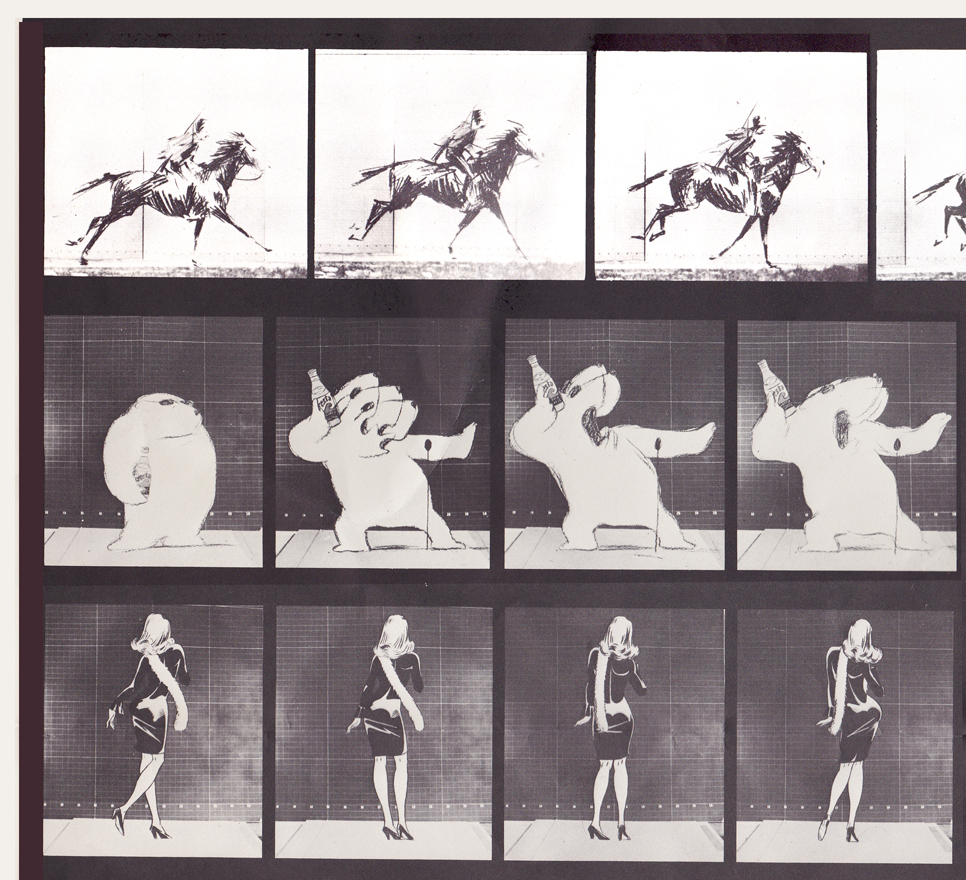
Top rows left side / Row 1: Pushkin Vodka ad
Row 2: Cresta Bear ad / Row 3. Tic Tac ad
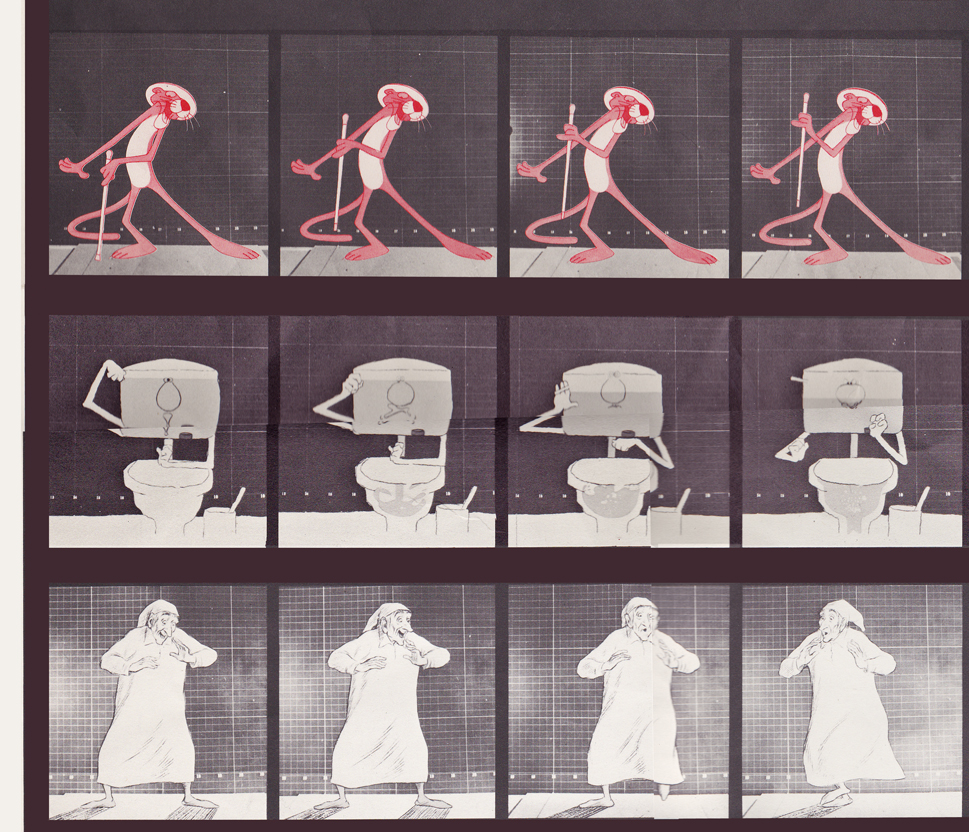
Middle rows left side / top row: Pink Panther titles
Middle row: Bloo toilet cleanser ad / Bot row: The Christmas Carol
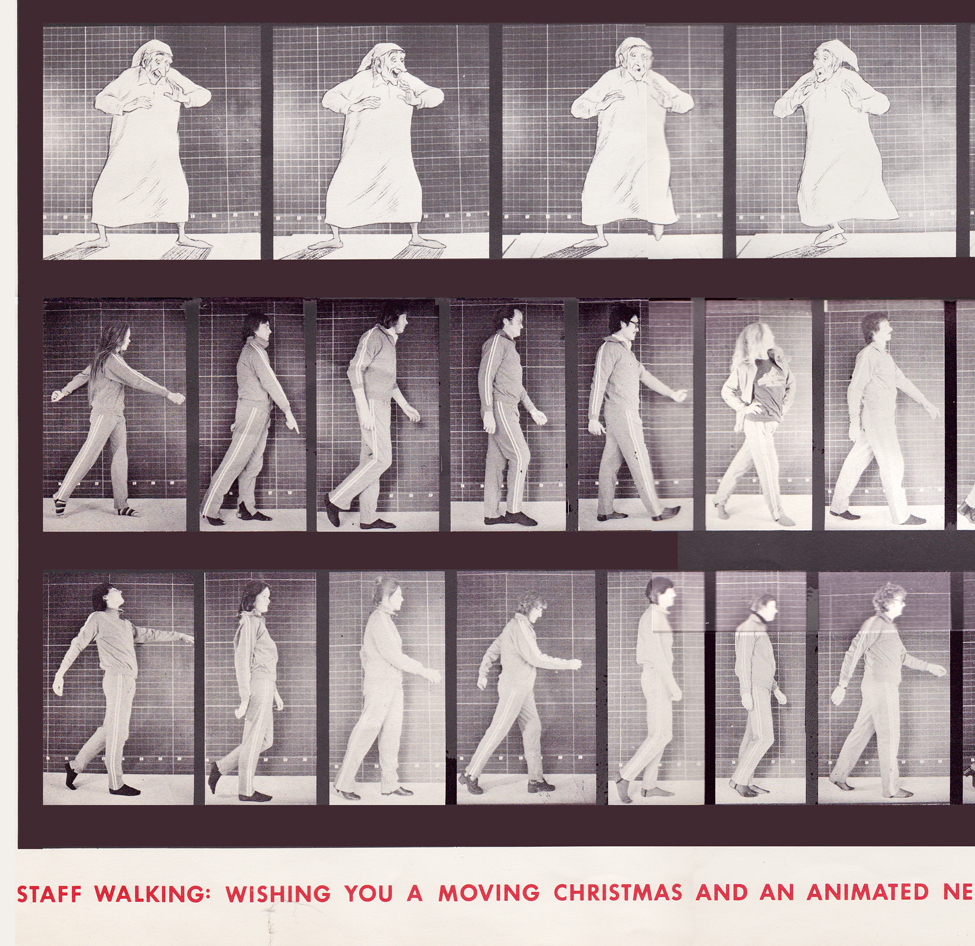
Bottom rows left side / top row: The Christmas Carol (repeated)
Middle row: staff / bottom row: more staff
With card #2 we see Soho Square. The green front door
marks the location of Dick’s studio at 13 Soho Square.
(As with the first card, I posted the entire Christmas card,
followed by a sectional divide so you can enjoy the details.)
This is a folding card.
It comes folded so that you see the far left of the card
revealing part of the far right.
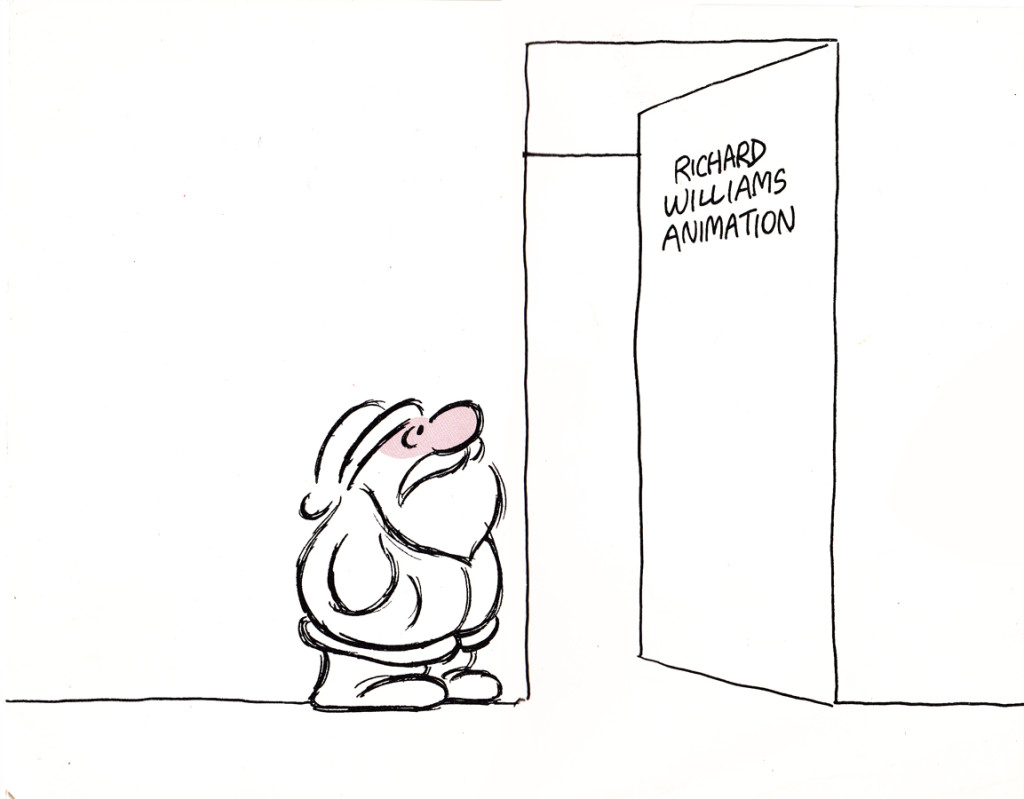
The card comes folded like this.
The left side (Santa up to doorway) is on the left side of the card.
The right side, on bottom, reveals the empty office.

It unfolds to reveal this long line of Santas.
Each Santa is in the style of the many illustrators’ styles
of those who designed ads for the studio in the prior year.
Suzanne Wilson sent in a Pink Panther Chistmas card; it was drawn by her late husband Rowland Wilson:
Below is a close up of that same card.
Here’s another full card.
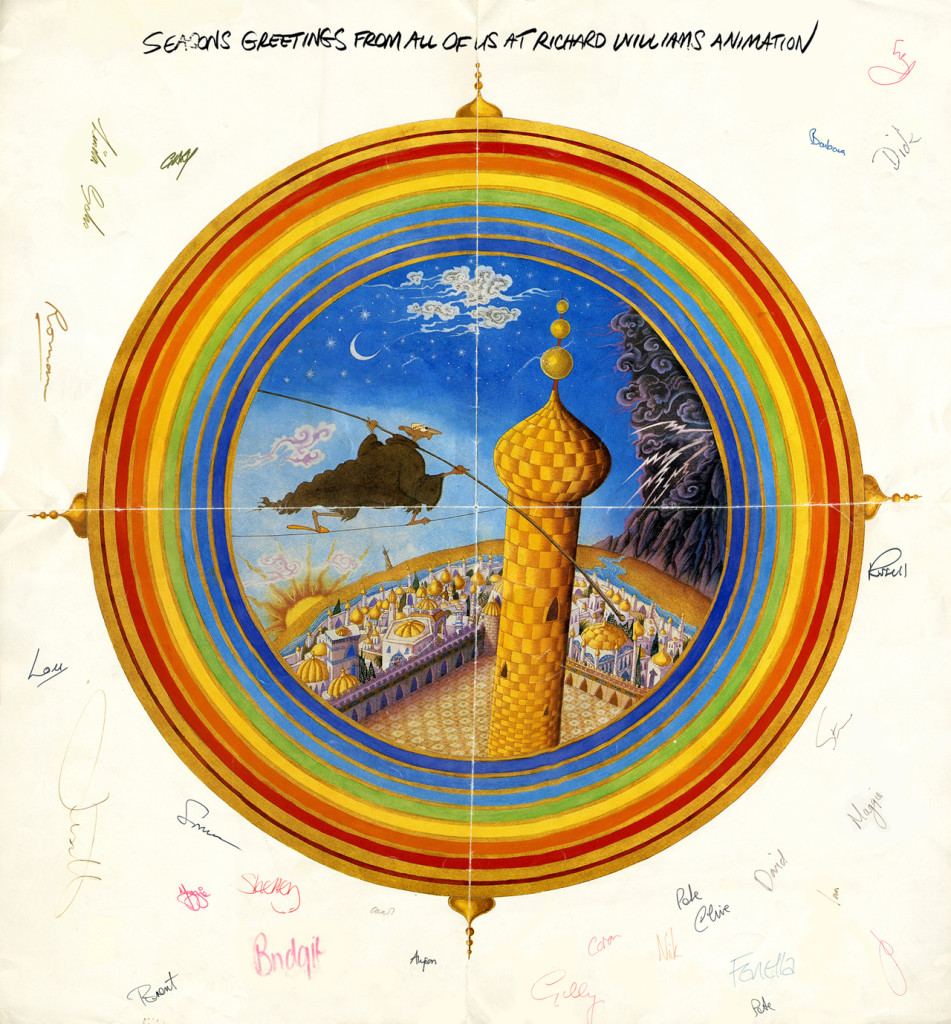
This one is designed after the McGuffin of Dick’s feature,
three golden balls over the city.
from The Thief and the Cobbler.
Books &Illustration &Layout & Design &repeated posts 07 Apr 2013 05:01 am
Joy Batchelor’s Animal Farm – recap
- When the film Animal Farm was released, a tie-in book was published which republished George Orwell‘s novel with line drawings from the film by “Joy Batchelor and John Halas.”
It’s probable that Joy Batchelor did illustrate the book. On a recent post, Rudy Agresta remembered Vivien Halas discussing her mother’s illustrating it in the book Halas & Batchelor Cartoons. I haven’t found that passage in Vivien’s book.
The animated film was produced by Louis D. Rochemont Associates in 1955 at a studio they set up in Stroud, Gloustershire in England. The studio was formerly the home of the Anson-Dyer company and GB Animation wherein ex-Disney veteran, David Hand, made his short films for Rank.
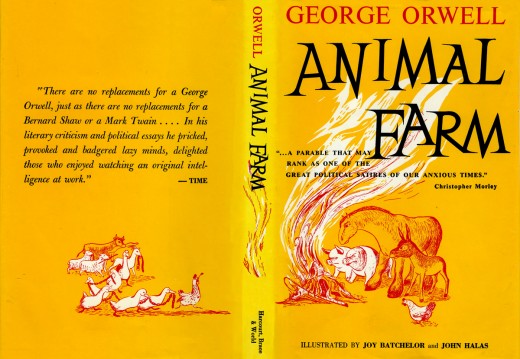
This is the book’s dustcover._________________________ (Click any image to enlarge.)
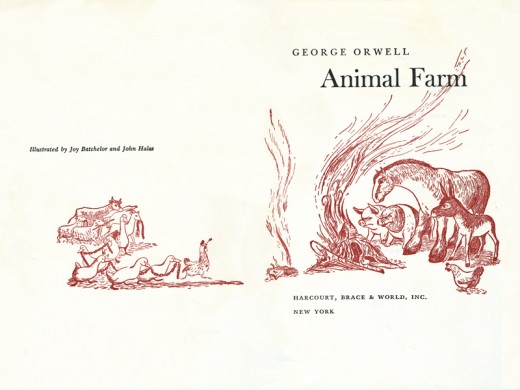
This is the double/title page.
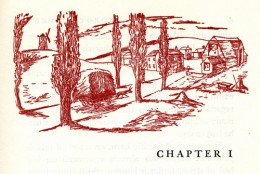
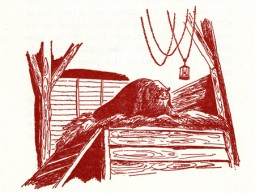
Each chapter has its own heading, and there are usually one to two stills within the body of each chapter.
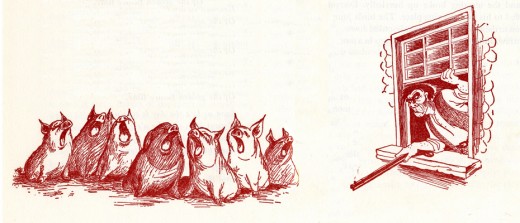
Some of the illustrations, like this one, spread across two pages under the type.
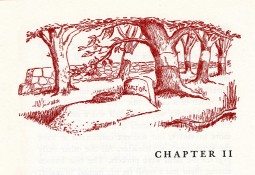
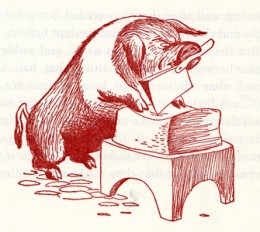
For those of you unfamiliar with this story, it tells the tale of a farm wherein the animals are mistreated.
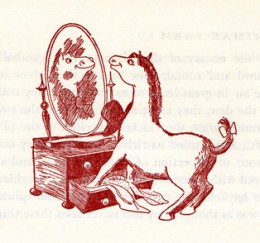
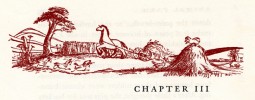
Under the guidance of the pigs, the animals take over the farm and create an animal collective.
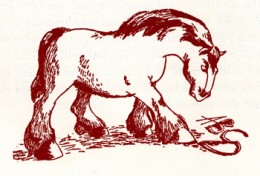
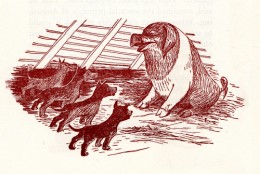
However, the pigs grow lazy and do less of the work as they take charge of the others.
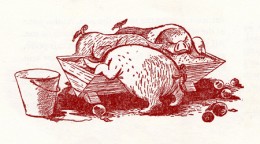
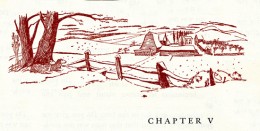
They eat more than their share of the food and mistreat the animals who do the greatest amount of work.
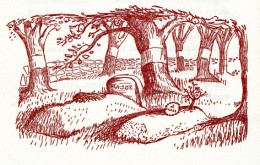
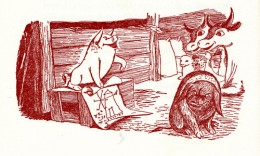
As animals begin to die under the guidance of the lazy pigs, there is some grumbling among the masses.
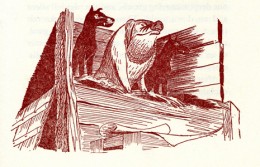
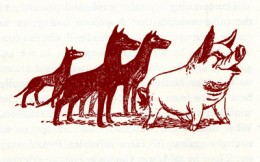
The pigs dominate and rule with a heavy hand.
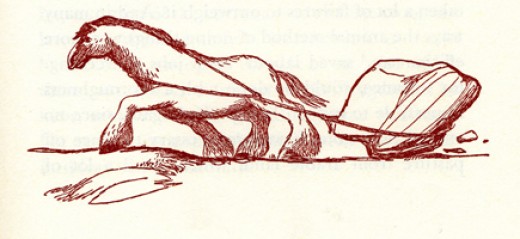
Boxer, the horse, is the figure of strength and symbolically the real leader of the animals.
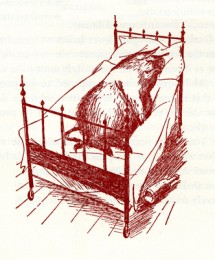
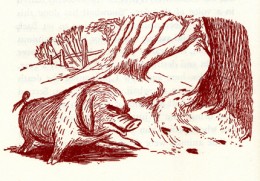
The pigs move into the farmer’s house and become little more than a replacement for “man”.
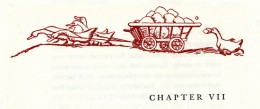
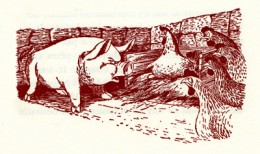
Many animals take the lead of Boxer and try to do their share, while the pigs fight for the lazy leadership.
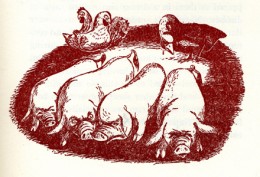

The pigs push Boxer to the limits and use the dogs as their personal guards and force their will on the others.
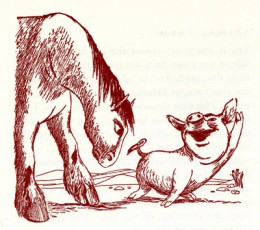
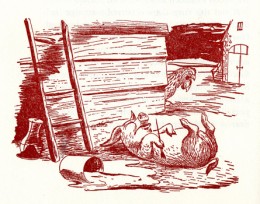
Boxer grows ill as the pigs grow lazier.
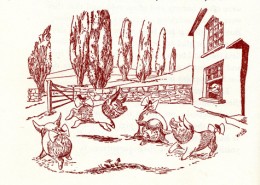
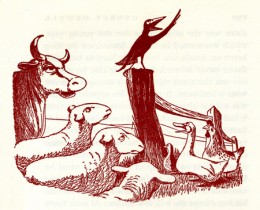
The lazy pigs celebrate their success. Animals hear gossip about the humans planning a charge to take back the farm.
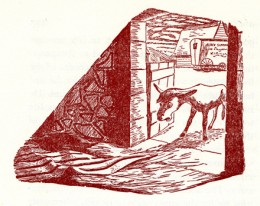
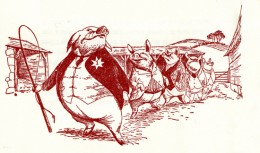
The weakened Boxer, no longer useful to the pigs, is sold for glue.
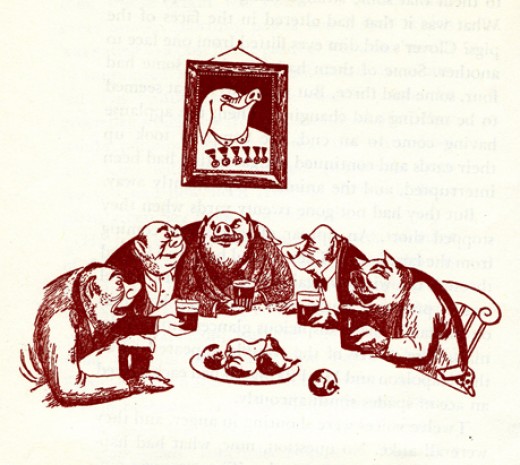
Eventually the humans return, and in some eyes of the animals they blend with the pigs.
The line illustrations do a nice job of representing the film. They’re also quite consistent.
You can watch Animal Farm on YouTube by going here.
Bill Peckmann &Books &Comic Art &Illustration 05 Apr 2013 05:57 am
Kurtzman’s Jungle Book – Part 2
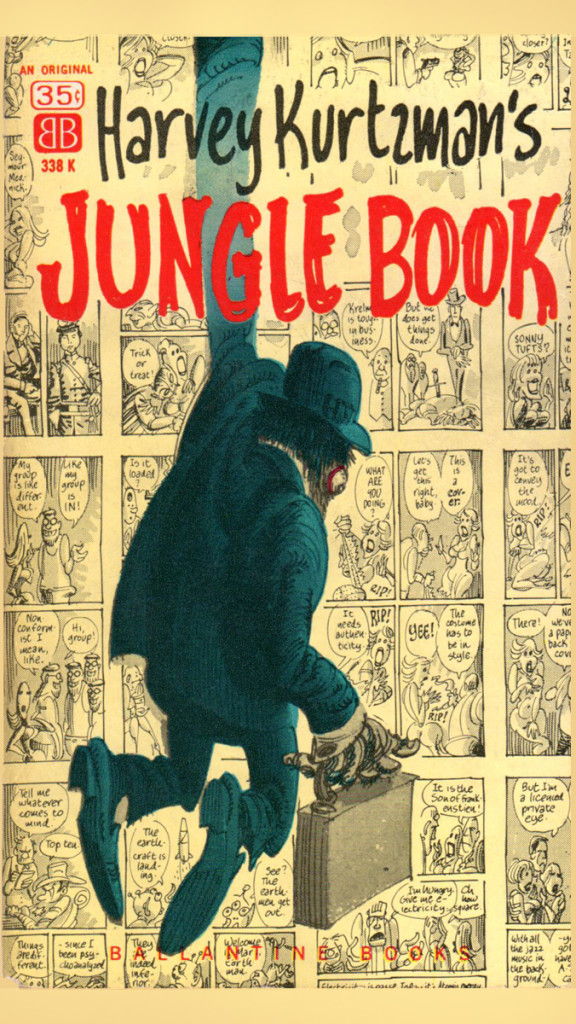 – It’s tough out there in the Jungle.
– It’s tough out there in the Jungle.
Harvey Kurtzman wrote & illustrated The Jungle Book in 1959. The book is made up of four stories:
“Thelonius Violence, Like Private Eye” is a parody of the typical private-detective story which blends its visual movement with jazz motifs.
“The Organization Man in the Gray Flannel Executive Suit” features the earliest appearance of Kurtzman’s character, Goodman Beaver. The story is a satire of the publishing industry’s capitalist tendencies.
“Compulsion on the Range” is a humorous play on the over-popular westerns of the day. Something like Gunsmoke is mixed with a pop psychology.
“Decadence Degenerated” is a satire the is set in the deep South and plays off the bigoted, lynch-mob mentality of the generic-rural South.
We began the first half of the fourth story last week, and we come to its final pages today. In conjunction with the show currently on view at the Society of Illustrators we’re posting this part of the graphic novel. That show at the art exhibition continues at the museum through May 11.
The cover of the book, pictured on the right, was scanned from the original 1959 book, while the inner B&W illustrations are from the later 1988 edition where the printing of the B&W images was, and is, significantly better.
Many thanks to Bill Peckmann for suggesting the material and then for scanning and sending it forward for us all to enjoy.
We continue:
.
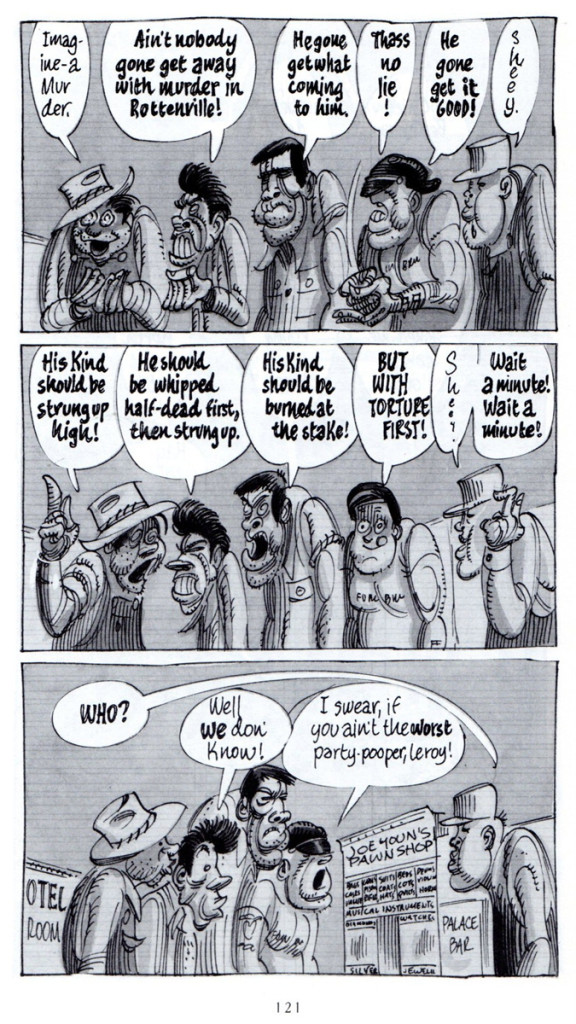 22
22
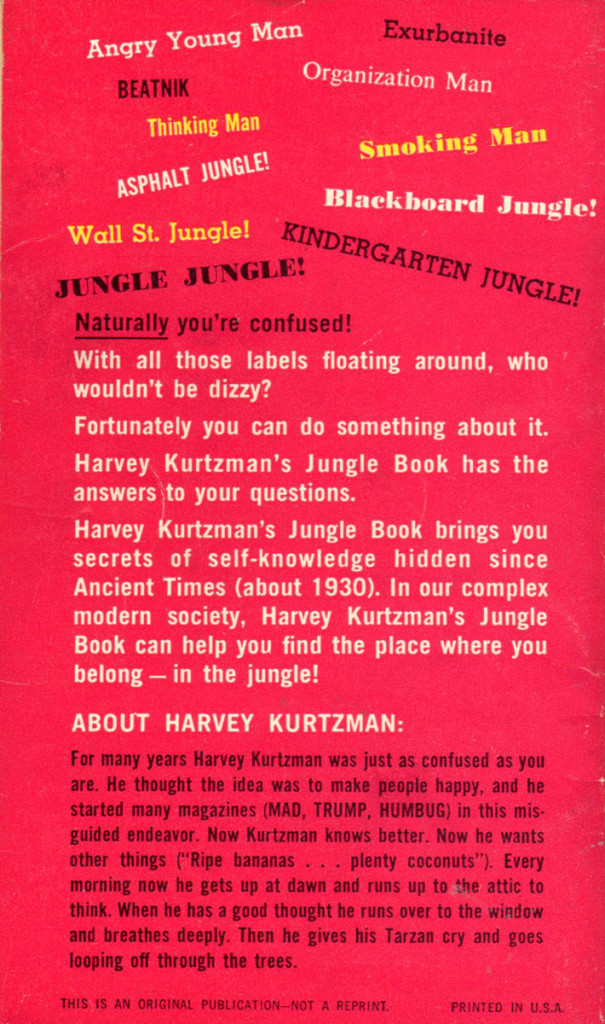
The back cover of the original 1959 Ballantine Books’ paperback.
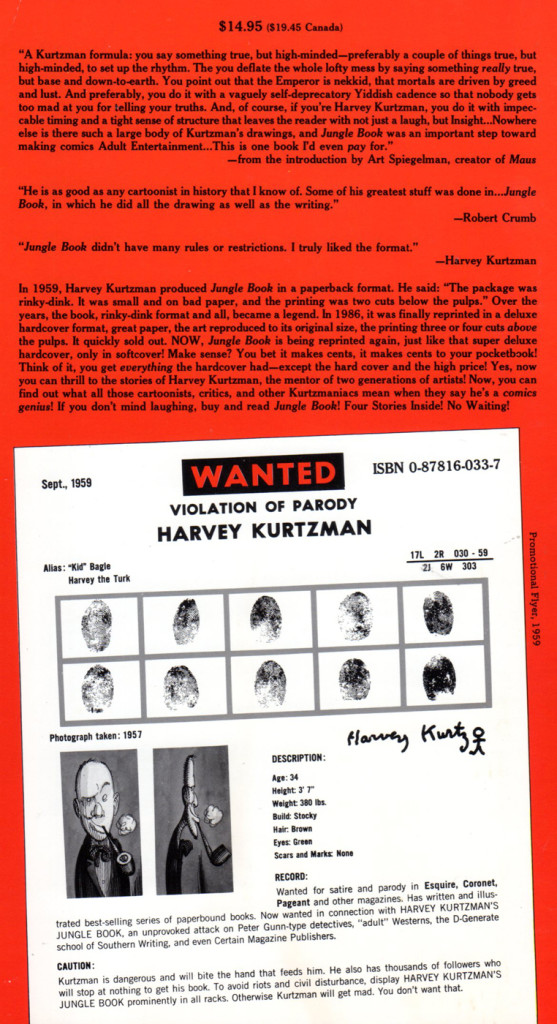
The back cover of the 1988 Kitchen Sink Press reprint edition.
Bill Peckmann &Books &Illustration 29 Mar 2013 03:08 am
Kurtzman Jungle Book – part 1
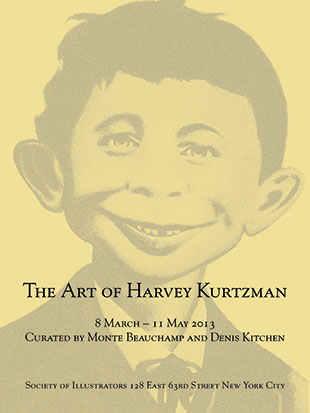 - Currently, the Society of Illustrators is featuring an exhibit celebrating the art of Harvey Kurtzman. This exhibit continues through May 11th.*
- Currently, the Society of Illustrators is featuring an exhibit celebrating the art of Harvey Kurtzman. This exhibit continues through May 11th.*
When I brought this info to the attention of Bill Peckmann, Bill naturally began by sending me some pages of “Jungle Book”. It’s 4 pages long, so we’ve decided to break it into two. The second part will come next Friday. Here’s part 1, immediately following Bill’s comments:
- Harvey Kurtzman‘s “Jungle Book” was a very rare treat for us knuckle headed Kurtzman fans when it came out in 1959. It was 140 long pages of Harvey’s writing and art. The art was the rare part, since HK had just come off editing and writing Mad, Trump and Humbug magazines where the final art was always left to his “usual gang of Idiots”.
Here in this wonderful paperback was the master at the height of his cartooning talent! The treat was extended when Kitchen Sink Press published their reprint version in 1988, and what an exquisite job they did!
The cover of the book is the original paperback, the inside pages are from the beautifully done reprint book.
* Thanks to Steve MacQuignon for word on the show at the Society of Illustrators.
Art Art &Bill Peckmann &Illustration 22 Mar 2013 03:52 am
Maynard Dixon
Maynard Dixon was a wonderful artist of the old West. His beautiful landscapes, his extraordinary posing of the figures in those landscapes, his ability to connect us to the scenes he so beautifully creates are strong reasons for caring deeply about his art. Bill Peckmann has this book, and he shared it with me/us. Is there anything more I need say? I hope you enjoy this artwork as well as do I
Here are Bill’s comments:
- This book of Maynard Dixon’s wonderful western art is not exactly a coffee table book, at 9 x 6, it’s more like a night stand book, but don’t let its’ bantam size fool you, it packs a very potent punch! This well written, perfectly researched and very enjoyable to read biography by Donald J. Hagerty, has it all. Profusely illustrated, with lots of pictures that I’ve never seen before. (The best part about that, is the fact that the illo’s are in sync with the text, you read about something and there’s a picture right there to illustrate the point. That doesn’t happen that often in books.) The price is a steal on Amazon, so whether you are a fan and have all of Dixon’s exceptional, well worth, over sized art books, or, you are new to the art of Maynard Dixon but want to find out what the noise is about, this IMHO is THE book to get!
Here are some of the illustrations that appear in the book. If you remember that Dixon was born in 1875 and then look at the dates of the illustrations, you’ll see what this mostly self-taught artist was capable of doing at a very young age.
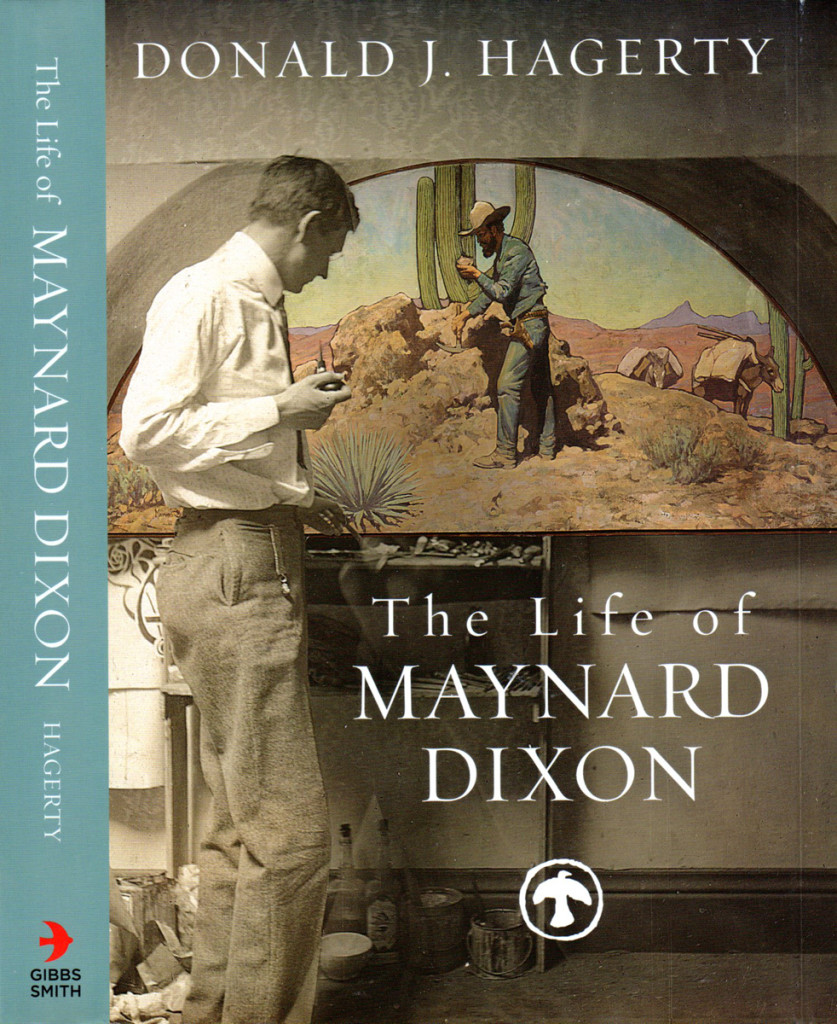 1
1
Here is the deftly done cover design, a composite of
a sepia photo of MD and one of his works in color.
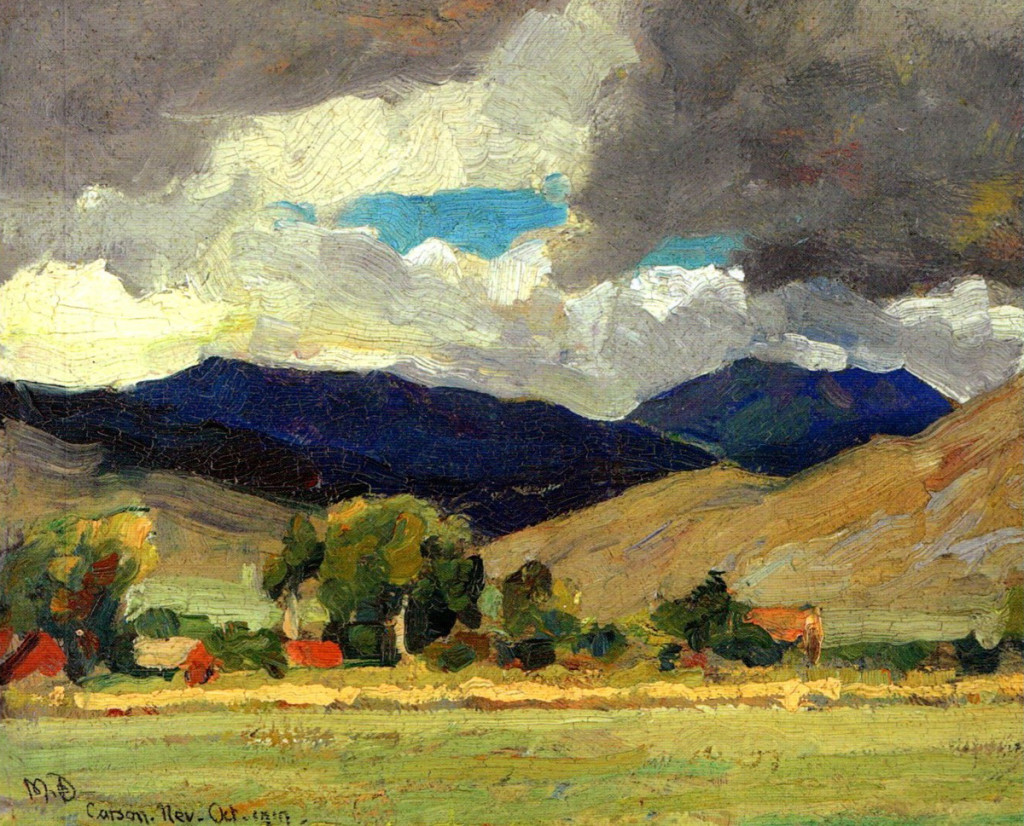 2
2
Carson, Nevada (Oct 1917)
A Dixon oil sketch that appears on the book’s back cover.
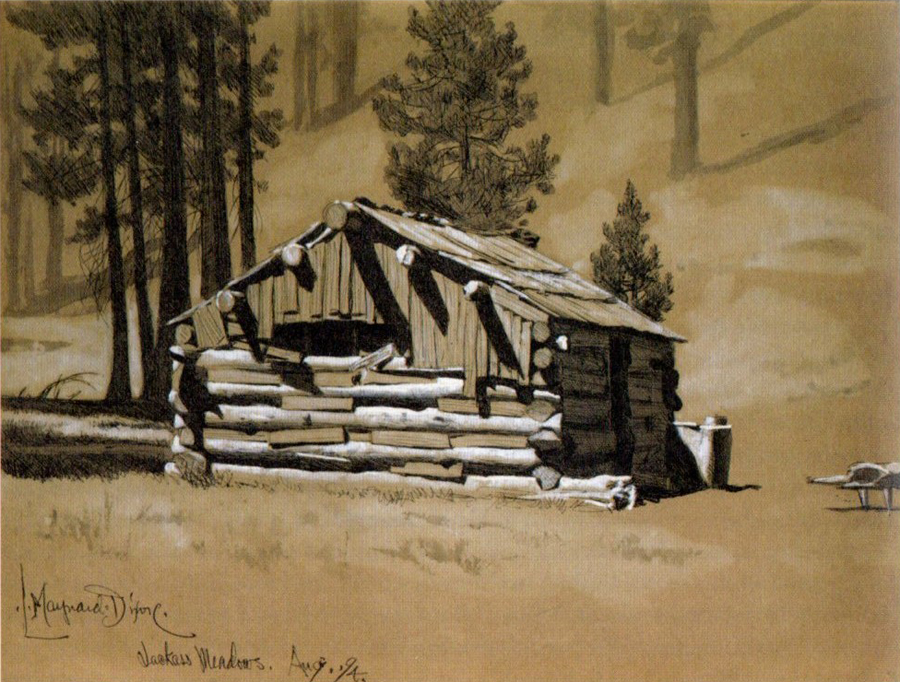
Jackass Meadows (1894)
Pencil and pastel on paper
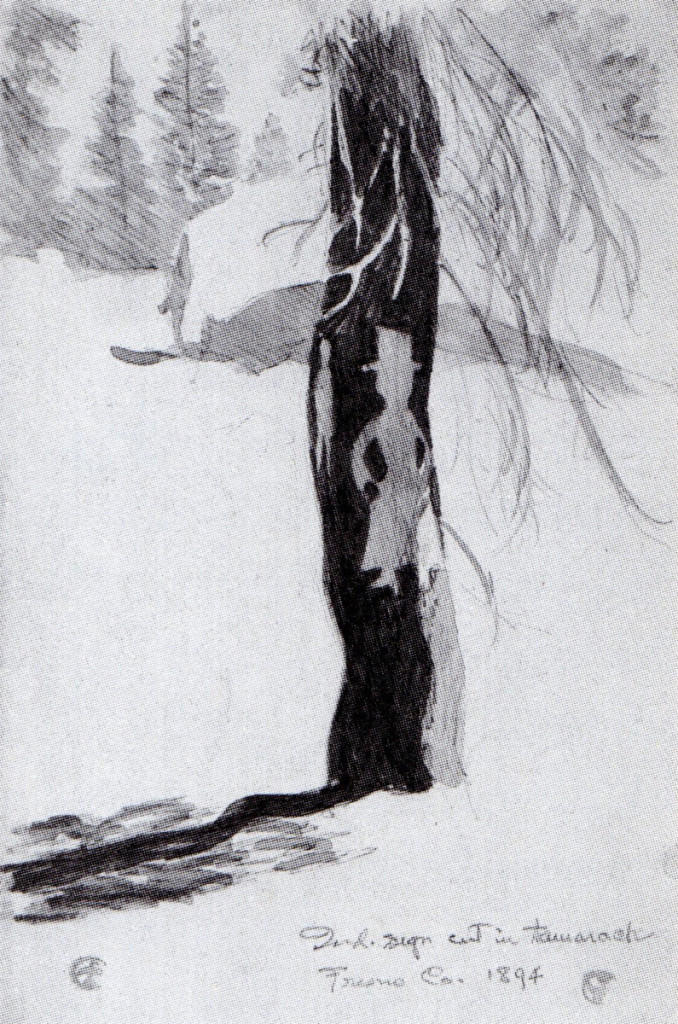 4a
4a
Indian Sign (1893)
Pen & ink on paper
One of my favorite Dixon sketches. It’s a haunting
piece of art, a sketch of another work of art.
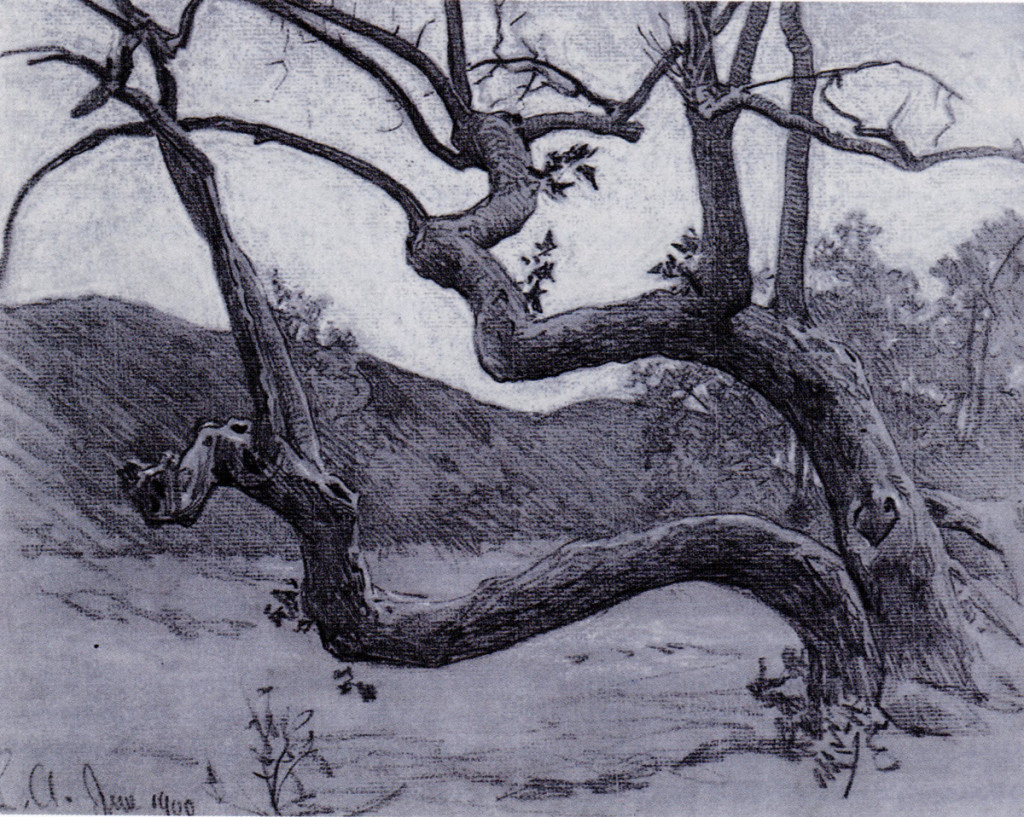 4b
4b
Sycamore, El Alisal (1900)
Pencil and charcoal on paper
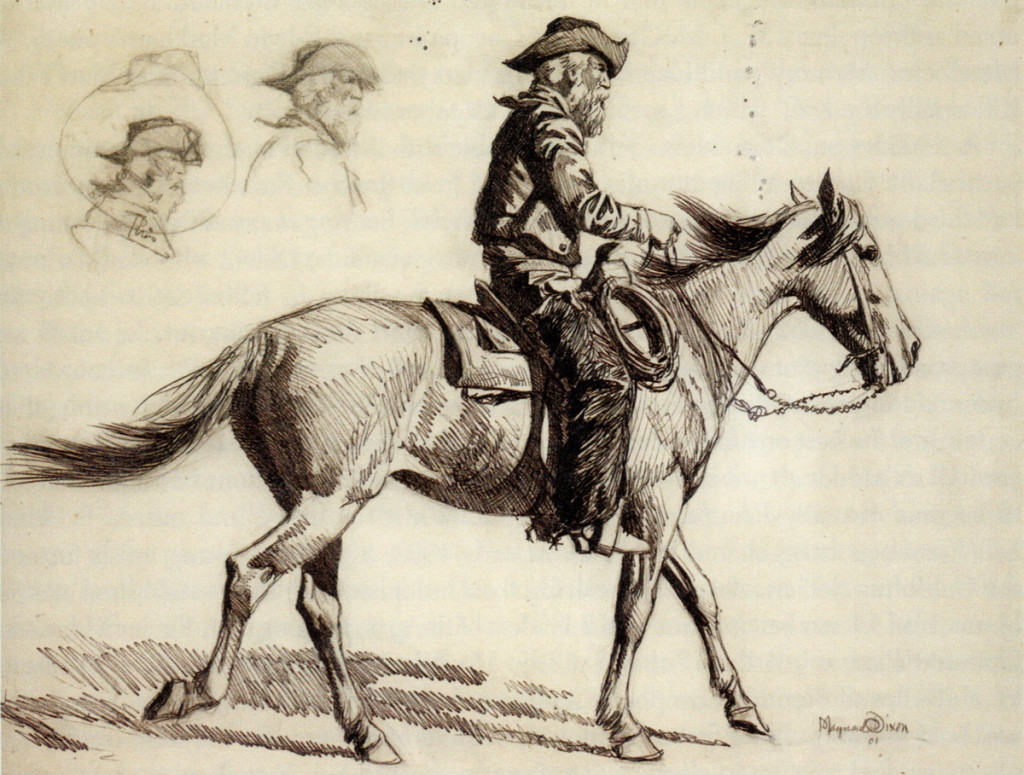 6
6
Oregon Cowboy (1901)
pencil and pen & ink on paper
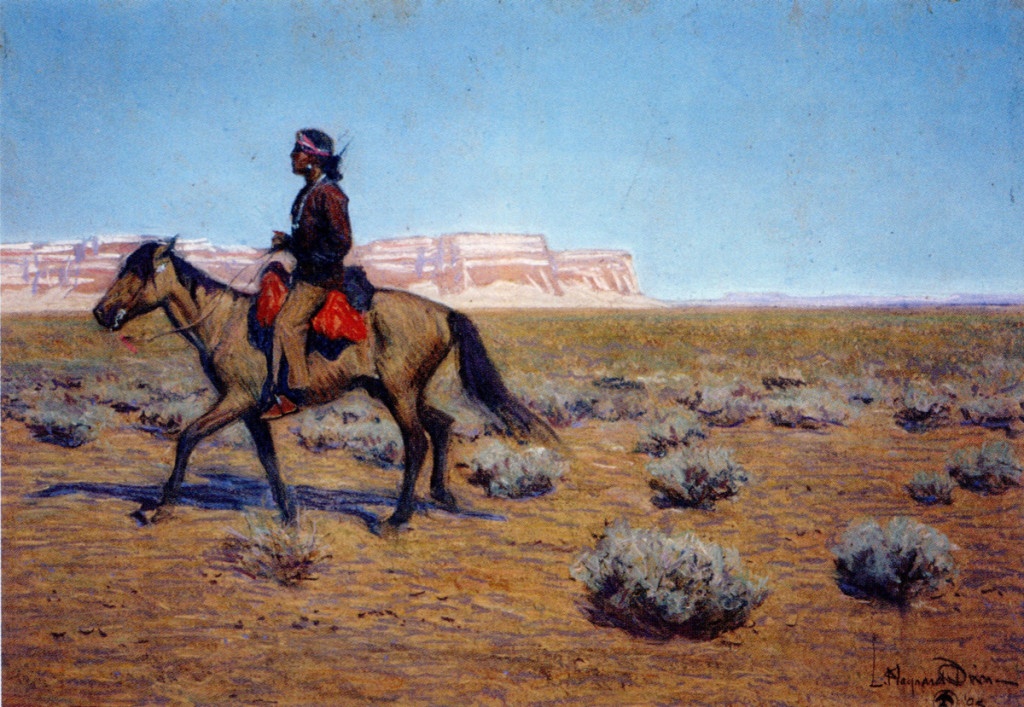 7
7
Indian on Horseback (1903)
Pastel on paper
This sketch done in 1903 looks like it came out of a 1950′s magazine.
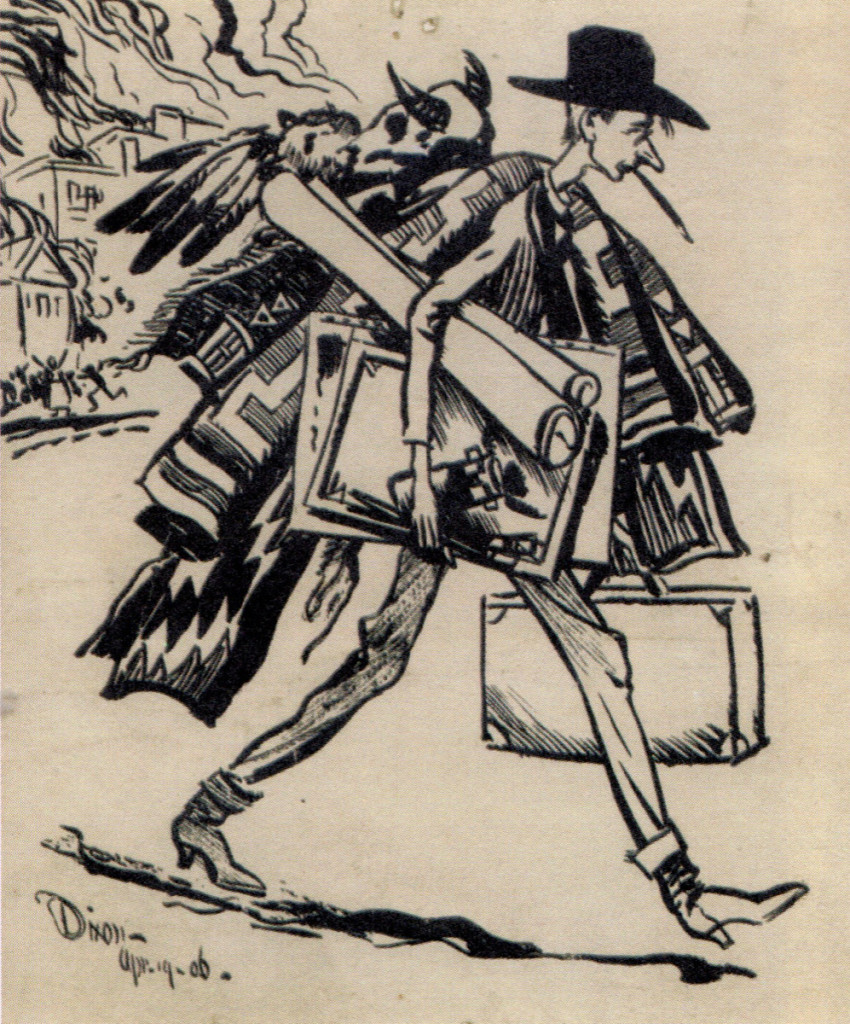 8
8
Fire and Earthquake (1906)
ink on paper
Bill Peckmann &Books &Illustration 21 Mar 2013 04:12 am
Baumgarten’s Toddy
Bill Peckmann &Comic Art &Disney &Illustration 15 Mar 2013 01:53 am
Toth’s Darby O’Gill and the Little People
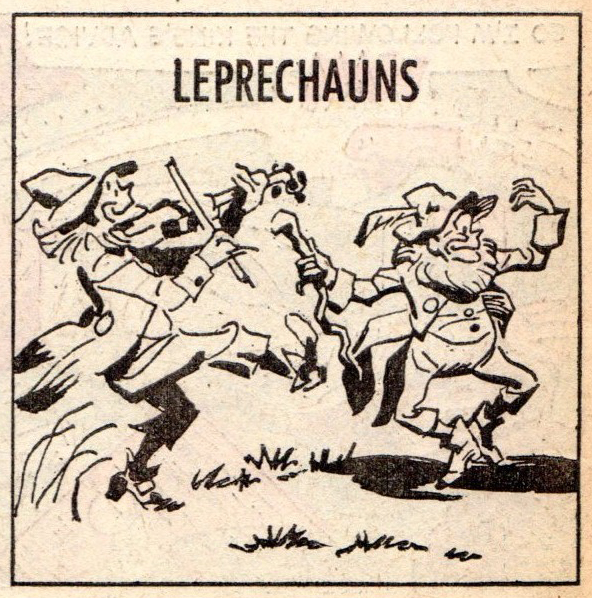 Sunday will be St. Patrick’s Day although the parade will go down Fifth Avenue tomorrow. Bill Peckmann sent me Alex Toth‘s Darby O’Gill and the Little People. This is a comic book adaptation of the live action film (with lots of Effx.) And it’s surely appropriate to post it today.
Sunday will be St. Patrick’s Day although the parade will go down Fifth Avenue tomorrow. Bill Peckmann sent me Alex Toth‘s Darby O’Gill and the Little People. This is a comic book adaptation of the live action film (with lots of Effx.) And it’s surely appropriate to post it today.
I can remember this film as a big deal when I was a kid. Maybe it was just me; I always loved those Effx movies where they mixed Lilliputionas in with the large folk. Outside of the starring threesome in the cast, a young Sean Connery, a very young and attractive Janet Munro and the crusty, but well cast, Albert Sharpe as Darby, the rest of the cast seemed a somewhat shabby lot. Bill writes:
- It’s the comic book version of Alex Toth‘s ‘Darby O’Gill and the Little People‘ Dell comic. Unfortunately my old copy came from a used book store and it came missing it’s cover!
Again the scanning and computer screen really help the not so cool reproduction process of yesteryear, the pages look better here than they do in real life.
Step up to the pot o’gold, and take a look:
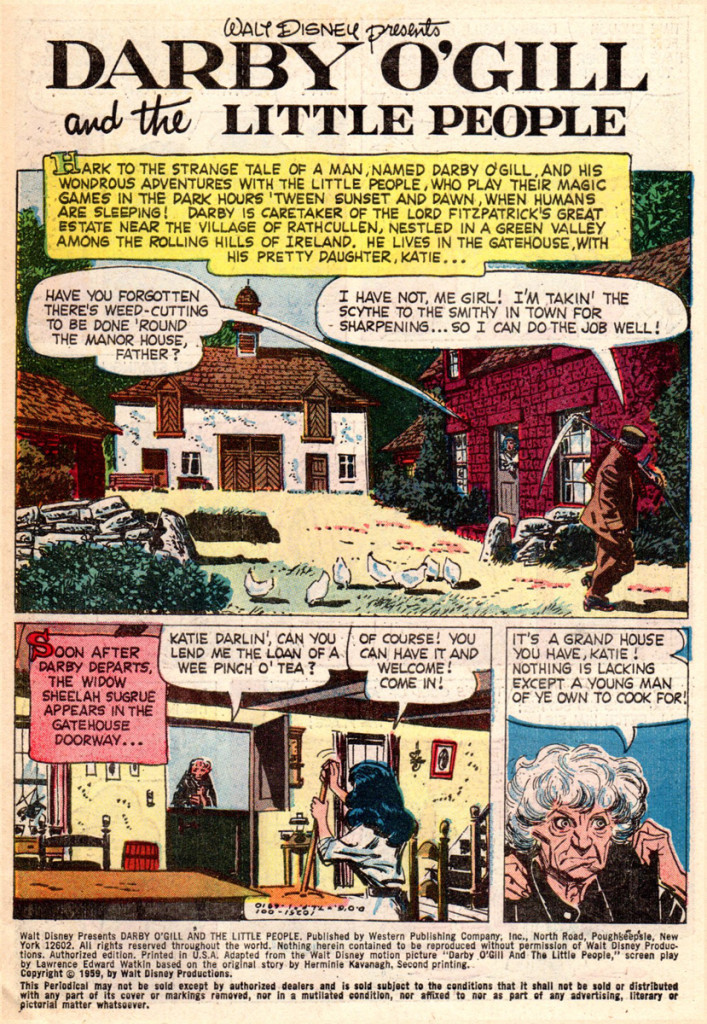 1
1































